Selfish Gene
description: a book by Richard Dawkins that popularized the gene-centric view of evolution
201 results

Richard Dawkins: How a Scientist Changed the Way We Think
by
Alan Grafen; Mark Ridley
Published 1 Jan 2006
For a discussion, see Richard Lewontin, ‘Elementary Errors about Evolution’, Behavioral and Brain Sciences, 6 (1983): 367-368 and Daniel C. Dennett, (1983), my response to his response. 23 Dawkins, The Selfish Gene (2nd edn., 1989), 32. 24 Dawkins, The Selfish Gene (1989), 33-34. 25 Dawkins, The Selfish Gene (1989), 35-36. 26 Dawkins, The Selfish Gene (1989), 35. 27 Dawkins, The Selfish Gene (1989), 63. 28 Dawkins, The Selfish Gene (1989), 64. 29 Dawkins, The Selfish Gene (1989), 64. 30 Dawkins, The Selfish Gene (1989), 64-65. 31 C. Ristau, ‘Aspects of the cognitive ethology of an injury-feigning bird, the piping plover’, in C. Ristau (ed.), Cognitive Ethology: The minds of other animals (Hillsdale: LEA, 1991). 32 Andrew Whiten and R.
…
Contents List of contributers Preface BIOLOGY Ballooning parrots and semi-lunar germs The battle of the sexes revisited Richard Dawkins: Intellectual plumber - and more What is a puma? THE SELFISH GENE Living with The Selfish Gene The gene meme The intellectual contribution of The Selfish Gene to evolutionary theory An eye on the core: Dawkins and sociobiology LOGIC The Selfish Gene as a philosophical essay The invention of an algorithmic biology Selfish genes and information flow Deep commonalities between life and mind ANTIPHONAL VOICES Richard Dawkins and the problem of progress The nest's tale: Affectionate disagreements with Richard Dawkins What's the matter with memes? HUMANS Selfish genes and family relations Why a lot of people with selfish genes are pretty nice except for their hatred of The Selfish Gene The perverse primate CONTROVERSY The skeptic's chaplain: Richard Dawkins as a fountainhead of skepticism A fellow humanist Dawkins and the virus of faith To rise above What the whale wondered: evolution, existentialism, and the search for 'meaning' WRITING Richard Dawkins and the golden pen Every indication of inadvertent solicitude Index List of contributers Robert Aunger, Senior Lecturer in Evolutionary Public Health, London School of Hygiene and Tropical Medicine, author of The Electric Meme, and editor of Darwinizing Culture.
…
H., 170 Walliker, David, 9 Watson, James, 117, 266 Wilberforce, William, 238 Wilde, Oscar, 271 Williams, George C., 55, 66, 67, 73, 82-3, 87, 94 n. 20, 110, 199, 205, 206 Williams, Rowan, 240 Wilson, David Sloan, 55, 56 Wilson, Edward O., 75, 76, 78-80, 81-7, 90-1, 94 nn. 19, 20, 95 n. 25, 145, 153-4, z77, 205, 228 Wright, Robert, 204 Wright, Sewall, 147 Zahavi, Amotz, 29-30 zygotes, 10, 51, 57-8 Table of Contents Contents List of contributers Preface BIOLOGY Ballooning parrots and semi-lunar germs The battle of the sexes revisited Richard Dawkins: Intellectual plumber - and more What is a puma? THE SELFISH GENE Living with The Selfish Gene The gene meme The intellectual contribution of The Selfish Gene to evolutionary theory An eye on the core: Dawkins and sociobiology LOGIC The Selfish Gene as a philosophical essay The invention of an algorithmic biology Selfish genes and information flow Deep commonalities between life and mind ANTIPHONAL VOICES Richard Dawkins and the problem of progress The nest's tale: Affectionate disagreements with Richard Dawkins What's the matter with memes? HUMANS Selfish genes and family relations Why a lot of people with selfish genes are pretty nice except for their hatred of The Selfish Gene The perverse primate CONTROVERSY The skeptic's chaplain: Richard Dawkins as a fountainhead of skepticism A fellow humanist Dawkins and the virus of faith To rise above What the whale wondered: evolution, existentialism, and the search for 'meaning' WRITING Richard Dawkins and the golden pen Every indication of inadvertent solicitude Index
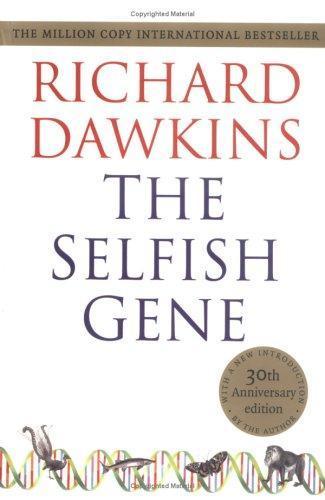
The Selfish Gene
by
Richard Dawkins
Published 1 Jan 1976
But what of the acts of apparent altruism found in nature-the bees who commit suicide when they sting to protect the hive, or the birds who risk their lives to warn the flock of an approaching hawk? Do they contravene the fundamental law of gene selfishness? By no means: Dawkins shows that the selfish gene is also the subtle gene. And he holds out the hope that our species-alone on earth-has the power to rebel against the designs of the selfish gene. This book is a call to arms. It is both manual and manifesto, and it grips like a thriller. The Selfish Gene, Richard Dawkins's brilliant first book and still his most famous, is an international bestseller in thirteen languages. For this new edition there are two major new chapters.
…
Well-integrated bodies exist because they are the product of an evolutionarily stable set of selfish genes. But I must return to the level of interactions between whole animals which is the main subject of this book. For understanding aggression it was convenient to treat individual animals as independent selfish machines. This model breaks down when the individuals concerned are close relatives-brothers and sisters, cousins, parents and children. This is because relatives share a substantial proportion of their genes. Each selfish gene therefore has its loyalties divided between different bodies. This is explained in the next chapter. The Selfish Gene 6. Genesmanship.
…
They rise above the bonds of kinship, forming their own lasting ties of loyal blood-brotherhood. Vampires could form the vanguard of a comfortable new myth, a myth of sharing, mutualistic cooperation. They could herald the benignant idea that, even with selfish genes at the helm, nice guys can finish first. The Selfish Gene 13. The long reach of the gene. An uneasy tension disturbs the heart of the selfish gene theory. It is the tension between gene and individual body as fundamental agent of life. On the one hand we have the beguiling image of independent DNA replicators, skipping like chamois, free and untrammelled down the generations, temporarily brought together in throwaway survival machines, immortal coils shuffling off an endless succession of mortal ones as they forge towards their separate eternities.
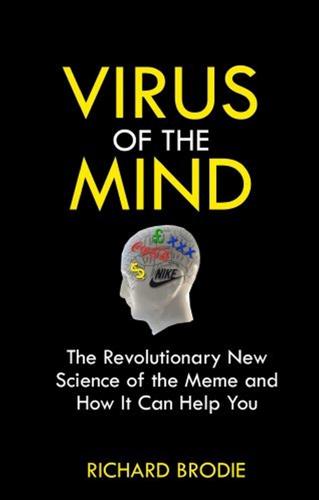
Virus of the Mind
by
Richard Brodie
Published 4 Jun 2009
Survival of the fittest is just a bit misleading; it’s more like abundance of the fittest. Of course, if resources are scarce, the gain of the fittest replicators is at the expense of those less fit. The Selfish Gene All this brings us to Dawkins’s selfish gene. The selfish-gene theory, in one flash of insight, answered so many sticky questions and puzzling details of evolution that it paralleled the astronomical discovery that the earth was not the center of the universe. While Dawkins popularized the selfish-gene theory in the same 1976 book in which he introduced the word meme, credit for the first publication of the idea goes to British biologist William D.
…
Those pieces of DNA that play this game, causing themselves to be replicated by whatever means, are called genes. The fact that evolution seems to revolve around their well-being rather than ours makes them selfish genes. Paradoxically, one way that scientists confirm the selfish-gene theory is by noticing unselfish behavior in animals. Female worker bees have evolved to labor all their lives to support their mother, the queen, and have no children themselves, because by a genetic quirk their mother’s offspring share more DNA with them than their own offspring would. It serves their selfish genes better to behave that way than to go off on their own. Mothers, throughout the animal kingdom, will take great risks to save their children.
…
Evolution of the meme was assured. 65 virus of the mind A meme is a replicator that uses the medium of our minds to replicate. Meme evolution happens because our minds are good at copying and innovating—ideas, behaviors, tunes, shapes, structures, and so on. The Selfish Gene for Minds We evolved, genetically, to the point where we had minds because of a selfish gene for minds, or for some precursor of minds that gave people with that gene a survival advantage. With that advantage, we survive and multiply, replicating the selfish gene for minds. The DNA that causes us to have minds is, of course, not quite as fit as the DNA that makes insects small, fast, and hard-shelled. There are far more insects than people, and we’re not even that good at winning battles with insects over who gets to live where.
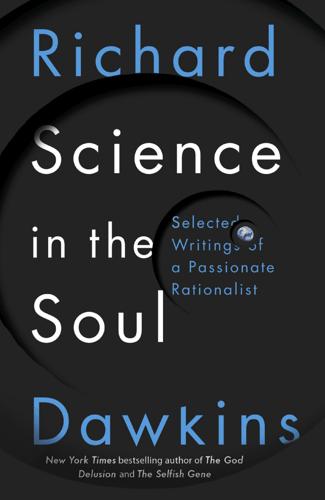
Science in the Soul: Selected Writings of a Passionate Rationalist
by
Richard Dawkins
Published 15 Mar 2017
From the point of view of the selfish genes our brains raced away with their emergent properties, and my personal value system regards this with a distinctly positive sign. The tyranny of the texts I have already disposed of one source of scepticism about my notion of rebellion against the selfish genes. Radical, left-wing scientists wrongly smelled a concealed Cartesian dualism. A different kind of scepticism comes from religious sources. Time and again, religious critics have said to me something like this. It’s all very well issuing a call to arms against the tyranny of the selfish genes, but how do you decide what to put in its place?
…
We rebel when we give lectures, write books or compose sonatas instead of single-mindedly devoting our time and energy to disseminating our genes. This is easy stuff; there is no philosophical difficulty at all. Natural selection of selfish genes gave us big brains which were originally useful for survival in a purely utilitarian sense. Once those big brains, with their linguistic and other capacities, were in place, there is no contradiction at all in saying that they took off in wholly new ‘emergent’ directions, including directions opposed to the interests of selfish genes. There is nothing self-contradictory about emergent properties. Electronic computers, conceived as calculating machines, emerge as word processors, chess players, encyclopedias, telephone switchboards, even, I regret to say, electronic horoscopes.
…
Seen through Darwinian eyes, this could have had important consequences for the evolution of our values. In particular, it might help us to understand why, from the point of view of our selfish genes, we are so absurdly nice to each other. It is not quite as absurd as it might naively appear. Genes may be selfish, but this is far from saying that individual organisms must be harsh and selfish. A large purpose of the doctrine of the selfish gene is to explain how selfishness at the gene level can lead to altruism at the level of the individual organism. But that only covers altruism as a kind of selfishness in disguise: first, altruism towards kin (nepotism); and second, boons given in the mathematical expectation of reciprocation (you help me and I’ll repay you later).
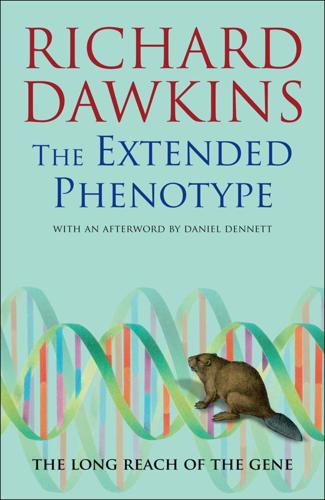
The Extended Phenotype: The Long Reach of the Gene
by
Richard Dawkins
Published 1 Jan 1982
From 1967 to 1969 he was an Assistant Professor at the University of California at Berkeley, then he returned to Oxford as University Lecturer (later Reader) and a Fellow of New College, before taking up his present position in 1995. Richard Dawkins’s bestselling books have played a significant role in the renaissance of science book publishing for a general audience. The Selfish Gene (1976; second edition 1989) was followed by The Extended Phenotype (1982), The Blind Watchmaker (1986), River Out of Eden (1995), Climbing Mount Improbable (1996), and Unweaving the Rainbow (1998). In 1991 he gave the Royal Institution Christmas Lectures. He has won many literary and scientific awards, including the 1987 Royal Society of Literature Award, the 1990 Michael Faraday Award of the Royal Society, the 1994 Nakayama Prize for Human Science, and the 1997 International Cosmos Prize.
…
The readers for whom I am mainly writing are my professional colleagues, evolutionary biologists, ethologists and sociobiologists, ecologists, and philosophers and humanists interested in evolutionary science, including, of course, graduate and undergraduate students in all these disciplines. Therefore, although this book is in some ways the sequel to my previous book, The Selfish Gene, it assumes that the reader has professional knowledge of evolutionary biology and its technical terms. On the other hand it is possible to enjoy a professional book as a spectator, even if not a participant in the profession. Some laypeople who read this book in draft have been kind enough, or polite enough, to claim to have liked it.
…
I believe deeply in the view of life that this book advocates, and have done so, at least in part, for a long time, certainly since the time of my first published paper, in which I characterized adaptations as favouring ‘the survival of the animal’s genes …’ (Dawkins 1968). This belief—that if adaptations are to be treated as ‘for the good of’ something, that something is the gene—was the fundamental assumption of my previous book. The present book goes further. To dramatize it a bit, it attempts to free the selfish gene from the individual organism which has been its conceptual prison. The phenotypic effects of a gene are the tools by which it levers itself into the next generation, and these tools may ‘extend’ far outside the body in which the gene sits, even reaching deep into the nervous systems of other organisms.
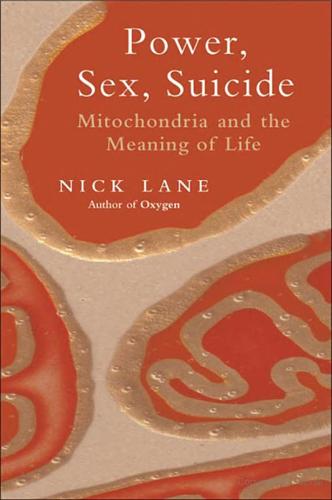
Power, Sex, Suicide: Mitochondria and the Meaning of Life
by
Nick Lane
Published 14 Oct 2005
If, as Dawkins has argued, the worst enemy of the selfish gene is a competitive (polymorphic, or altered) form of the same gene, then neutral mutations are the selfish gene scrambler par excellence: gene sequences diverge over time as neutral mutations accumulate. There may be millions of different forms of the same gene in different species, all scrambled to varying degrees; this is the basis of any gene tree. So evolution pits the selfish interests of genes (which ‘want’ to produce exact copies of themselves) against the randomizing power of mutation, which forever scrambles the sequence of genes, turning the selfish gene into its own worst enemy, the gene it used to hate.
…
These differences in perspective help to explain why microbiologists, such as Lynn Margulis, are among the most prominent critics of the selfish gene. In fact, Margulis has become an outspoken critic of mathematical neo-Darwinism in general, going so far as to dismiss it as being reminiscent of phrenology, that Victorian obsession with cranial shape and criminality, and likely to suffer the same ignominious fate. While one senses that Margulis is repelled by the concept of the selfish gene, it is also true that bacteria are rather more likely to behave in a civil manner, forming communities that live together in harmony rather than ‘eating’ each other: the idea of bacteria as merely pathogenic is persistent but false.
…
Bodies dissolved and reformed like wisps of cloud, each one fleeting and different. Does this sound at all familiar? I’m repeating myself from the beginning of this Part: these conditions codified the selfish gene. Ironically, the long battles between individual cells that ultimately gave rise to the multicellular individual may in the end have crowned a different victor, who slipped in through the back door: the gene. Primitive multicellular colonies stand at the gates of sex and death, of selfish cells and selfish genes, and it will be revealing to learn more about their behaviour. It will be revealing, too, to learn more of the mitochondrial signals for sex in single cells.
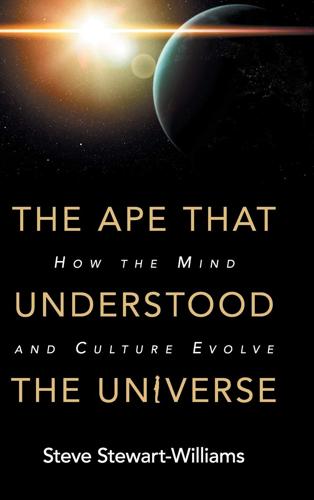
The Ape That Understood the Universe: How the Mind and Culture Evolve
by
Steve Stewart-Williams
Published 12 Sep 2018
This, in Wilson’s view, is exactly what’s happened in our species. People usually assume that group selection is inconsistent with the selfish gene approach, perhaps because Richard Dawkins (who came up with the phrase “selfish gene”) is also one of the leading critics of group selection theory. But the assumption is mistaken. If group selection really happens, it involves the selection of genes that, through their effects on their owners, benefit the group as a whole. If these genes are selected over competing alleles then, by definition, they are selfish genes – genes that promote their own continuance in the gene pool. The only difference is that they do this by furthering the interests of the group, rather than the interests of their owners.
…
But there’s much more to memes than that. The central and distinguishing claim of memetics is that, just as natural selection in the biological realm favors selfish genes, so too natural selection in the realm of culture favors selfish memes: memes that, through their effects on the people who hold them, act as if their one goal in life is to survive and propagate themselves in the culture. To paraphrase William Hamilton’s 1963 statement on selfish genes, the ultimate criterion which determines whether a meme will spread is not whether it benefits us or our groups, but whether it benefits the meme itself.
…
Clerks and craftsmen in China and the West: Lectures and addresses on the history of science and technology. Cambridge University Press. Nesse, R. M. (1990). Evolutionary explanations of emotions. Human Nature, 1, 261–289. Nesse, R. M. (2006). Why a lot of people with selfish genes are pretty nice except for their hatred of The Selfish Gene. In A. Grafen & M. Ridley (Eds.), Richard Dawkins: How a scientist changed the way we think: Reflections by scientists, writers, and philosophers (pp. 203–212). Oxford University Press. Nesse, R. M., & Williams, G. C. (1994). Why we get sick: The new science of Darwinian medicine.

A Devil's Chaplain: Selected Writings
by
Richard Dawkins
Published 1 Jan 2004
, but that sends the wrong signal for my purposes. It is only incidentally true that the four letters of the DNA alphabet fall naturally into two chemical families, purines and pyrimidines. 8 Ecologists also use the formula as an index of diversity. 9 My suggestion (The Selfish Gene, 1976) that surplus DNA is parasitic was later taken up and developed by others under the catch-phrase ‘Selfish DNA’. See The Selfish Gene, 2nd edn (Oxford University Press, 1989), pp. 44–5 and 275. 10 See ‘Human Chauvinism and Evolutionary Progress’ (pp. 242–55). 2.4 Genes Aren’t Us68 The bogey of genetic determinism needs to be laid to rest. The discovery of a so-called ‘gay gene’ is as good an opportunity as we’ll get to lay it.
…
First published in Nature, 276 (9 November 1978), 121–3 112 Reprinted as ‘Caring Groups and Selfish Genes’ in S. J. Gould, The Panda’s Thumb (New York, W. W. Norton, 1980) 113 G. C. Williams, Adaptation and Natural Selection (Princeton, Princeton University Press, 1966), pp. 22–5 and 56–7 114 P. B. Medawar, Pluto’s Republic (New York, Oxford University Press Inc., 1982) 115 S. J. Gould, Hen’s Teeth and Horse’s Toes (New York, W. W. Norton, 1983) 116 P. B. Medawar, The Hope of Progress (London, Methuen, 1972) 117 R. Dawkins, The Selfish Gene, 2nd edn (Oxford, Oxford University Press, 1989), pp. 271–2. See also R.
…
After all, prophets always get stoned’ Richard Holloway, Bishop of Edinburgh Professor Richard Dawkins is a world-renowned evolutionary biologist and author. He is a Fellow of the Royal Society and holds the Charles Simonyi Chair of Public Understanding of Science at Oxford University. His first book, The Selfish Gene (1976), was an instant international bestseller, and has become an established classic work of modern evolutionary biology. The Blind Watchmaker (1986), too, has become world-famous. His other works for the general public have each been highly successful. Latha Menon is an editorial consultant.

The Information: A History, a Theory, a Flood
by
James Gleick
Published 1 Mar 2011
Proceedings of the American Philosophical Society 87, no. 5 (1944): 365–67. Davis, Martin. The Universal Computer: The Road from Leibniz to Turing. New York: Norton, 2000. Dawkins, Richard. “In Defence of Selfish Genes.” Philosophy 56, no. 218 (1981): 556–73. ———. The Blind Watchmaker. New York: Norton, 1986. ———. The Extended Phenotype. Rev. ed. Oxford: Oxford University Press, 1999. ———. The Selfish Gene. 30th anniversary edition. Oxford: Oxford University Press, 2006. De Chadarevian, Soraya. “The Selfish Gene at 30: The Origin and Career of a Book and Its Title.” Notes and Records of the Royal Society 61 (2007): 31–38. De Morgan, Augustus. Arithmetical Books: From the Invention of Printing to the Present Time.
…
Glass, eds., The Chemical Basis of Heredity (Baltimore: Johns Hopkins University Press, 1957), 70. ♦ “THIS ATTITUDE IS AN ERROR OF GREAT PROFUNDITY”: Richard Dawkins, The Selfish Gene, 30th anniversary edition (Oxford: Oxford University Press, 2006), 237. ♦ “WE ARE SURVIVAL MACHINES”: Ibid., xxi. ♦ “THEY ARE PAST MASTERS OF THE SURVIVAL ARTS”: Ibid., 19. ♦ “ENGLISH BIOLOGIST RICHARD DAWKINS HAS RECENTLY RAISED”: Stephen Jay Gould, “Caring Groups and Selfish Genes,” in The Panda’s Thumb (New York: Norton, 1980), 86. ♦ “A THIRTY-SIX-YEAR-OLD STUDENT OF ANIMAL BEHAVIOR”: Gunther S. Stent, “You Can Take the Ethics Out of Altruism But You Can’t Take the Altruism Out of Ethics,” 33
…
♦ “SELECTION FAVORS THOSE GENES WHICH SUCCEED”: Richard Dawkins, The Extended Phenotype, rev. ed. (Oxford: Oxford University Press, 1999), 117. ♦ DAWKINS SUGGESTS THE CASE OF A GENE: Ibid., 196–97. ♦ THERE IS NO GENE FOR LONG LEGS: Richard Dawkins, The Selfish Gene, 37. ♦ HABIT OF SAYING “A GENE FOR X”: Richard Dawkins, The Extended Phenotype, 21. ♦ “ALL WE WOULD NEED IN ORDER”: Ibid., 23. ♦ “ANY GENE THAT INFLUENCES THE DEVELOPMENT OF NERVOUS SYSTEMS”: Richard Dawkins, The Selfish Gene, 60. ♦ “IT IS NO MORE LIKELY TO DIE”: Ibid., 34. ♦ “TODAY THE TENDENCY IS TO SAY”: Max Delbrück, “A Physicist Looks At Biology,” Transactions of the Connecticut Academy of Arts and Sciences 38 (1949): 194. 11.
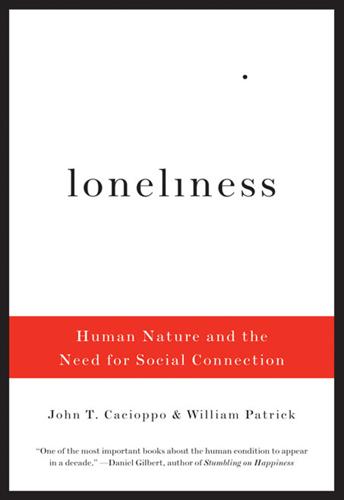
Loneliness: Human Nature and the Need for Social Connection
by
John T. Cacioppo
Published 9 Aug 2009
Norton & Company, Ltd., Castle House, 75/76 Wells Street, London WIT 3QT For Wendi and Carolyn contents Acknowledgments PART ONE: The Lonely Heart The Lonely Heart CHAPTER ONE Lonely in a Social World CHAPTER TWO Variation, Regulation, and an Elastic Leash CHAPTER THREE Losing Control CHAPTER FOUR Selfish Genes, Social Animals CHAPTER FIVE The Universal and the Particular CHAPTER SIX The Wear and Tear of Loneliness PART TWO: From Selfish Genes to Social Beings CHAPTER SEVEN Sympathetic Threads CHAPTER EIGHT An Indissociable Organism CHAPTER NINE Knowing Thyself, among Others CHAPTER TEN Conflicted by Nature CHAPTER ELEVEN Conflicts in Nature PART THREE: Finding Meaning in Connection CHAPTER TWELVE Three Adaptations CHAPTER THIRTEEN Getting It Right CHAPTER FOURTEEN The Power of Social Connection Notes acknowledgments The writing of this book was a collaboration involving two authors—an invaluable form of social connection—yet only one was a participant in the more than twenty years of scientific research that is the foundation of the story.
…
But if his children did not survive long enough to mature and reproduce and nurture their own young, neither did his genes. (If his tribe did not survive, his children also would be less likely to survive.) The older, more purely selfish genes persisted, but their influence in the population at large shrank by reproductive attrition. Individual success was now driven by the ability to transcend selfishness and act on behalf of others. The selfish gene had given rise to a social brain and a different kind of social animal. CHAPTER FIVE the universal and the particular There’s a joke about the Finnish couple in which the wife complains to her husband that he never expresses his affection.
…
In the studies I’ve just described, there was only one force that could impair self-regulation enough to disrupt both thinking and behavior. This disturbing, dysregulating force is a fear rooted both in each individual’s earliest moments of life, and in the earliest moments of our history as a species. That overwhelming fear is the terror of feeling helplessly and dangerously alone. CHAPTER FOUR selfish genes, social animals If you asked a zookeeper to create a proper enclosure for the species Homo sapiens, she would list at the top of her concerns “obligatorily gregarious,” meaning that you do not house a member of the human family in isolation, any more than you house a member of Aptenodytes forsteri (Emperor penguins) in hot desert sand.

What About Me?: The Struggle for Identity in a Market-Based Society
by
Paul Verhaeghe
Published 26 Mar 2014
Evil — let us not shrink from using this word — certainly isn’t alien to us. Hannah Arendt made this painfully clear in her report of the trial of Adolf Eichmann, in which she spoke of ‘the banality of evil’. The notion of human depravity ties in with Christian teachings about original sin, while a more modern version invokes ‘our selfish genes’. Both the view that we are inherently good and the view that we are inherently bad create the impression that there is an unchanging human nature waiting to manifest itself. That’s strange, given the quest for identity that is so ubiquitous in the Western world — the quest for ‘true’ norms and values.
…
As a result, we have to devise all kinds of escape routes, and we would actually prefer to eliminate that omnipotent agency altogether. At the same time, we have given a new twist to the conviction that humanity is inherently evil, replacing the concept of original sin with equally vague socio-biological notions of man as a wolf for his fellow man, selfish genes, et cetera. Thus, without realising it, we are espousing the ancient Greek view that ethics is innate — albeit with the opposite conclusion: people are inherently bad and need to have this evil whipped out of them during their upbringing. No wonder that we see ethics and identity as two separate things; inasmuch as we question human nature, the answer tends to be pessimistic.
…
Yet that freedom is extremely relative, because it is linked, in a way that is almost unnoticed, with a return to social Darwinism in its most recent incarnation, whereby no longer the species but the individual is acted upon by ‘natural’ selection. The strongest man or woman makes it, at the expense of all those other men and women. Success is the defining criterion. Just like its predecessor, the new social Darwinism was soon given a pseudo-scientific foundation, this time with an obligatory reference to The Selfish Gene, a title with which Richard Dawkins perfectly heralded the new zeitgeist in 1976. The battle to be the best apparently isn’t confined to individuals; even genes have got each other by the throat. So I don’t need to be ashamed of elbowing others out of the way; it’s in my genes. Just like the racism of days gone by, the current egocracy needs a scientific loincloth.

Unweaving the Rainbow
by
Richard Dawkins
Published 7 Aug 2011
To invoke the rainmakers yet again, there is no more connection between a selfish gene and a selfish human than there is between a rock and a rain cloud. To explain the poetic continuum I am criticizing, I might as well borrow a line from a real poet, Tennyson's 'Nature, red in tooth and claw', from In Memoriam (1850), widely assumed to be inspired by On the Origin of Species but actually published nine years earlier. At one end of the poetic continuum are supposed to stand Thomas Hobbes, Adam Smith, Charles Darwin, T. H. Huxley and all those, such as the distinguished American evolutionist George C. Williams and today's advocates of 'the selfish gene', who emphasize that nature really is red in tooth and claw.
…
That is precisely the reason for speaking of 'the selfish gene' rather than, say, 'the selfish chimpanzee'. The opposition that de Waal and others have erected, between biologists who believe human and animal nature is fundamentally selfish, and those who believe it is fundamentally 'good-natured', is a false opposition—bad poetry. It is now widely understood that altruism at the level of the individual organism can be a means by which the underlying genes maximize their self-interest. However, I don't want to dwell on what I have expounded in earlier books such as The Selfish Gene. What I would now re-emphasize from that book—it has been overlooked by critics who appear to have read it by title only—is the important sense in which genes, though in one way purely selfish, at the same time enter into cooperative cartels with each other.
…
Science is poetic, ought to be poetic, has much to learn from poets and should press good poetic imagery and metaphor into its inspirational service. 'The selfish gene' is a metaphoric image, potentially a good one but capable of sadly misleading if the metaphor of personification is improperly grasped. If interpreted aright it may lead us into paths of deep understanding and fertile research. This chapter has used the metaphor of the personified gene to explain a sense in which 'selfish' genes are also 'cooperative'. The key image to be floated in the next chapter is that of a species' genes as a detailed description of the collection of environments in which its ancestors lived—a genetic book of the dead. 10 THE GENETIC BOOK OF THE DEAD Remember the wisdom out of the old days...
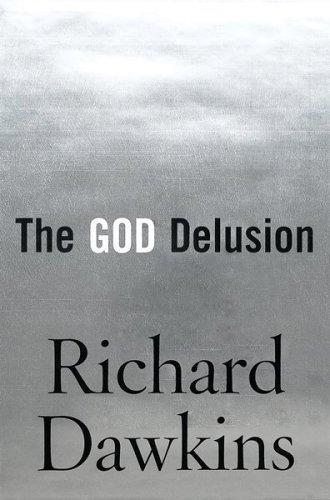
The God Delusion
by
Richard Dawkins
Published 12 Sep 2006
I was extremely doubtful about the idea of god, but I just didn’t know enough about anything to have a good working model of any other explanation for, well, life, the universe, and everything to put in its place. But I kept at it, and I kept reading and I kept thinking. Sometime around my early thirties I stumbled upon evolutionary biology, particularly in the form of Richard Dawkins’s books The Selfish Gene and then The Blind Watchmaker, and suddenly (on, I think the second reading of The Selfish Gene) it all fell into place. It was a concept of such stunning simplicity, but it gave rise, naturally, to all of the infinite and baffling complexity of life. The awe it inspired in me made the awe that people talk about in respect of religious experience seem, frankly, silly beside it.
…
What gives us the powerful urge to send an anonymous gift of money or clothes to tsunami victims on the other side of the world whom we shall never meet, and who are highly unlikely to return the favour? Where does the Good Samaritan in us come from? Isn’t goodness incompatible with the theory of the ‘selfish gene’? No. This is a common misunderstanding of the theory – a distressing (and, with hindsight, foreseeable) misunderstanding.* It is necessary to put the stress on the right word. The selfish gene is the correct emphasis, for it makes the contrast with the selfish organism, say, or the selfish species. Let me explain. The logic of Darwinism concludes that the unit in the hierarchy of life which survives and passes through the filter of natural selection will tend to be selfish.
…
The units that survive in the world will be the ones that succeeded in surviving at the expense of their rivals at their own level in the hierarchy. That, precisely, is what selfish means in this context. The question is, what is the level of the action? The whole idea of the selfish gene, with the stress properly applied to the last word, is that the unit of natural selection (i.e. the unit of self-interest) is not the selfish organism, nor the selfish group or selfish species or selfish ecosystem, but the selfish gene. It is the gene that, in the form of information, either survives for many generations or does not. Unlike the gene (and arguably the meme), the organism, the group and the species are not the right kind of entity to serve as a unit in this sense, because they do not make exact copies of themselves, and do not compete in a pool of such self-replicating entities.
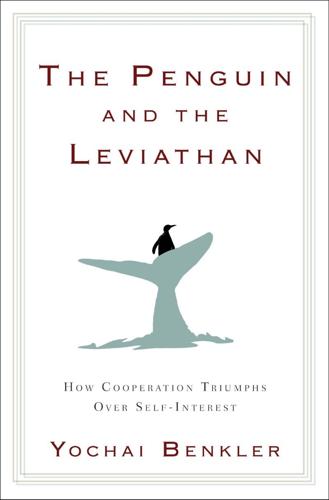
The Penguin and the Leviathan: How Cooperation Triumphs Over Self-Interest
by
Yochai Benkler
Published 8 Aug 2011
It rests on an assumption more reminiscent of Peter Kropotkin, who in a 1902 book, Mutual Aid, documented widespread cooperation in the animal kingdom, than it is of Herbert Spencer. What Is the “Selfish” Gene? The best way, perhaps, to see the arc of the debate over the last thirty years concerning the role of evolution and genetics in shaping human morality is to compare two very strong statements, made by two highly accomplished scientists, at the bookends of this period. The first is from Richard Dawkins’s The Selfish Gene, in 1976. The second is from a review of the discipline of the evolution of cooperation, published thirty years later by Martin Nowak in Science: Be warned that if you wish, as I do, to build a society in which individuals cooperate generously and unselfishly towards a common good, you can expect little help from biological nature.
…
The second is from a review of the discipline of the evolution of cooperation, published thirty years later by Martin Nowak in Science: Be warned that if you wish, as I do, to build a society in which individuals cooperate generously and unselfishly towards a common good, you can expect little help from biological nature. Let us try to teach generosity and altruism, because we are born selfish. Let us understand what our own selfish genes are up to, because we may then at least have the chance to upset their designs, something which no other species has ever aspired to do. —DAWKINS, The Selfish Gene, p. 3 Perhaps the most remarkable aspect of evolution is its ability to generate cooperation in a competitive world. Thus, we might add “natural cooperation” as a third fundamental principle of evolution beside mutation and natural selection.
…
No one was more influential in answering that question than entomologist E. O. Wilson, whose 1975 tome, Sociobiology, essentially relaunched the practice of applying evolutionary theory to human behavior and introduced the basic arguments that played out more popularly in Richard Dawkins’s The Selfish Gene (and more recently in the extensive and popular work in evolutionary psychology). Genes, Wilson argued, had human culture on a leash. Human behavior developed and could be explained by evolutionary forces, and evolutionary forces acted on genetics. Therefore, behaviors caused by genes that were favored by evolution survived and proliferated, and those that weren’t, didn’t.
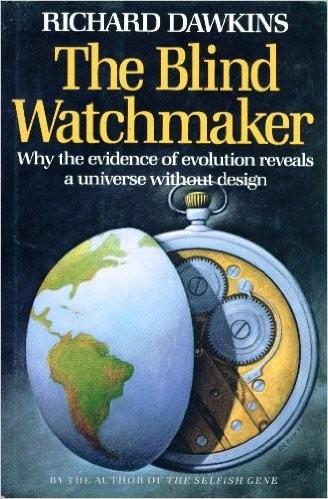
The Blind Watchmaker; Why the Evidence of Evolution Reveals a Universe Without Design
by
Richard Dawkins
Published 1 Jan 1986
From 1967 to 1969 he was an Assistant Professor of Zoology at the University of California at Berkeley. In 1970 he became a Lecturer in Zoology at Oxford University and a Fellow of New College. In 1995 he became the first Charles Simonyi Professor of the Public Understanding of Science at Oxford University. Richard Dawkins’s first book, The Selfish Gene (1976; second edition, 1989), became an immediate international bestseller and was translated into all the major languages. Its sequel, The Extended Phenotype, followed in 1982. His other bestsellers include The Blind Watchmaker (1986; Penguin, 1988), River Out of Eden (1995), Climbing Mount Improbable (1996; Penguin, 1997), Unweaving the Rainbow (Penguin, 1999) and The Ancestor’s Tale (2004).
…
The closest analogy I can think of is Galileo’s Dialogues which made reasonable the Copernican Revolution, and I hope I will not be thought to be pushing things to an embarrassing point if I say that Dawkins’ book can be compared to Galileo’s, not only in type but in standard’ Professor Michael Ruse ‘He disposes of the arguments for God the Designer without diminishing our sense of the mystery and complexity of our world … indeed he increases our sense of wonder. Dawkins’s speculative attempts to account for human self-consciousness and our interest in our own doings are ingenious and daring’ A. G. Cairns-Smith, Independent ‘I admired Richard Dawkins’s The Blind Watchmaker – or Son of Selfish Gene: enough to say that it shares the grave wit and thrilling godlessness of the earlier book’ Martin Amis, Book of the Year, Observer ‘A full-throated defence of orthodox neo-Darwinism … He robustly sees off creationists on the right and the spectrum of critics of his version of orthodoxy on the left … There is much which is good and not merely clever about this book’ Steven Rose, New Statesman ‘One great virtue of this book is to demonstrate the incompatibility of Darwinism and theism.
…
In comparison the account presented by Dawkins is full of detailed and unexpected explanations … marvellously convincing’ Listener ‘The best general account of evolution I have read in recent years. It is deep enough to be useful to biologists, yet sufficiently simple and well-written (very well-written in fact) to appeal to the same large audience that enjoyed The Selfish Gene’ Edward O. Wilson ‘A delight to read, full of intriguing speculation as well as facts’ Kenneth B. Wilson, Methodist Recorder Introduction to the 2006 Edition I have been asked to provide a new introduction for this reissue of The Blind Watchmaker. I thought the task would be easy. All I had to do was list the ways—there surely had to be many—in which I should reform the book if I were writing it again today.
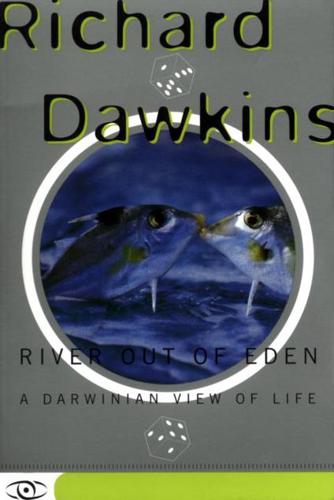
River Out of Eden: A Darwinian View of Life
by
Richard Dawkins
Published 28 Feb 1995
The first thing to note is that workers should not be counted as females. They are technically females, but they don't reproduce, so the sex ratio being regulated according to Fisher's theory is the ratio of drones (males) to new queens being churned out by the hive. In the case of bees and ants. there are special technical reasons, which I have discussed in The Selfish Gene and won't rehearse here, for expecting the sex ratio to be 3:1 in favor of females. Far from this, as any beekeeper knows, the actual sex ratio is heavily male-biased. A flourishing hive may produce half a dozen new queens in a season but hundreds or even thousands of drones. What is going on here?
…
God's Utility Function, as derived from a contemplation of the nuts and bolts of natural selection, turns out to be sadly at odds with such utopian visions. To be sure, there are occasions when genes may maximize their selfish welfare at their level, by programming unselfish cooperation, or even self-sacrifice, by the organism at its level. But group welfare is always a fortuitous consequence, not a primary drive. This is the meaning of "the selfish gene." Let us look at another aspect of God's Utility Function, beginning with an analogy. The Darwinian psychologist Nicholas Humphrey made up an illuminating fact about Henry Ford. "It is said" that Ford, the patron saint of manufacturing efficiency, once commissioned a survey of the car scrapyards of America to find out if there were parts of the Model T Ford which never failed.
…
The article went on to quote one priest's reply: "The simple answer is that we do not know why there should be a God who lets these awful things happen. But the horror of the crash, to a Christian, confirms the fact that we live in a world of real values: positive and negative. If the universe was just electrons, there would he no problem of evil or suffering." On the contrary, if the universe were just electrons and selfish genes, meaningless tragedies like the crashing of this bus are exactly what we should expect, along with equally meaningless good fortune. Such a universe would be neither evil nor good in intention. It would manifest no intentions of any kind. In a universe of blind physical forces and genetic replication, some people are going to get hurt, other people are going to get lucky, and you won't find any rhyme or reason in it, nor any justice.
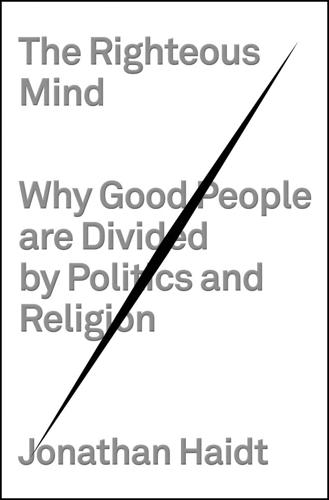
The Righteous Mind: Why Good People Are Divided by Politics and Religion
by
Jonathan Haidt
Published 13 Mar 2012
If you accept her offer, you’re likely to do so while gushing forth expressions of gratitude, praise for her kindness, and a promise to do the same for her whenever she goes on vacation. FIGURE 7.4. Liberal and conservative caring. Evolutionary theorists often speak of genes as being “selfish,” meaning that they can only influence an animal to do things that will spread copies of that gene. But one of the most important insights into the origins of morality is that “selfish” genes can give rise to generous creatures, as long as those creatures are selective in their generosity. Altruism toward kin is not a puzzle at all. Altruism toward non-kin, on the other hand, has presented one of the longest-running puzzles in the history of evolutionary thinking.13 A big step toward its solution came in 1971 when Robert Trivers published his theory of reciprocal altruism.14 Trivers noted that evolution could create altruists in a species where individuals could remember their prior interactions with other individuals and then limit their current niceness to those who were likely to repay the favor.
…
We believe our own post hoc reasoning so thoroughly that we end up self-righteously convinced of our own virtue. I do believe that you can understand most of moral psychology by viewing it as a form of enlightened self-interest, and if it’s self-interest, then it’s easily explained by Darwinian natural selection working at the level of the individual. Genes are selfish,3 selfish genes create people with various mental modules, and some of these mental modules make us strategically altruistic, not reliably or universally altruistic. Our righteous minds were shaped by kin selection plus reciprocal altruism augmented by gossip and reputation management. That’s the message of nearly every book on the evolutionary origins of morality, and nothing I’ve said so far contradicts that message.
…
But then he devoted most of the book to proving his thesis that “group-related adaptations do not in fact exist.”24 He gave examples from across the animal kingdom, showing in every case that what looks like altruism or self-sacrifice to a naive biologist (such as that termite specialist) turns out to be either individual selfishness or kin selection (whereby costly actions make sense because they benefit other copies of the same genes in closely related individuals, as happens with termites). Richard Dawkins did the same thing in his 1976 best seller The Selfish Gene, granting that group selection is possible but then debunking apparent cases of group-related adaptations. By the late 1970s there was a strong consensus that anyone who said that a behavior occurred “for the good of the group” was a fool who could be safely ignored. We sometimes look back on the 1970s as the “me decade.”

Skin in the Game: Hidden Asymmetries in Daily Life
by
Nassim Nicholas Taleb
Published 20 Feb 2018
For instance, Yaneer Bar-Yam has applied the failure of mean-field to evolutionary theory of the selfish-gene narrative trumpeted by such aggressive journalistic minds as Richard Dawkins and Steven Pinker, with more mastery of English than probability theory. He shows that local properties fail and the so-called mathematics used to prove the selfish gene are woefully naive and misplaced. There has been a storm around work by Martin Nowack and his colleagues (which include the biologist E. O. Wilson) about the terminal flaws in the selfish gene theory.fn2 The question is: could it be that much of what we have read about the advances in behavioral sciences is nonsense?
…
See also Downey (1939, 1959). Ostrom: Ostrom (1986, 2015). Also, econtalk discussion with Peter Boetke with Russell Roberts, econtalk.org/archives/2009/11/boettke_on_elin.html. Asymmetry and Scalability: Antifragile. Selfish Gene: Wilson and Wilson (2007), Nowak et al. (2010). Pinker statement about the debate between Nowak, Wilson et al., and others who support the “selfish gene” approach, missing scalability among other things: edge.org/conversation/steven_pinker-the-false-allure-of-group-selection. Bar-Yam and Sayama (2006). Fences make good neighbors: Rutherford et al. (2014). Sacrifice: Halbertal (1980) Dynamic inequality: Lamont (2009), Rank and Hirshl (2014, 1015).
…
The IYI has been wrong, historically, about Stalinism, Maoism, GMOs, Iraq, Libya, Syria, lobotomies, urban planning, low carbohydrate diets, gym machines, behaviorism, trans-fats, Freudianism, portfolio theory, linear regression, HFCS (High-Fructose Corn Syrup), Gaussianism, Salafism, dynamic stochastic equilibrium modeling, housing projects, marathon running, selfish genes, election-forecasting models, Bernie Madoff (pre-blowup), and p-values. But he is still convinced that his current position is right.fn1 NEVER GOTTEN DRUNK WITH RUSSIANS The IYI joins a club to get travel privileges; if he is a social scientist, he uses statistics without knowing how they are derived (like Steven Pinker and psycholophasters in general); when in the United Kingdom, he goes to literary festivals and eats cucumber sandwiches, taking small bites at a time; he drinks red wine with steak (never white); he used to believe that dietary fat was harmful and has now completely reversed himself (information in both cases is derived from the same source); he takes statins because his doctor told him to do so; he fails to understand ergodicity, and, when explained to him, he forgets about it soon after; he doesn’t use Yiddish words even when talking business; he studies grammar before speaking a language; he has a cousin who worked with someone who knows the Queen; he has never read Frédéric Dard, Libanius Antiochus, Michael Oakeshott, John Gray, Ammianus Marcellinus, Ibn Battuta, Saadia Gaon, or Joseph de Maistre; he has never gotten drunk with Russians; he never drinks to the point where he starts breaking glasses (or, preferably, chairs); he doesn’t even know the difference between Hecate and Hecuba (which in Brooklynese is “can’t tell sh**t from shinola”); he doesn’t know that there is no difference between “pseudointellectual” and “intellectual” in the absence of skin in the game; he has mentioned quantum mechanics at least twice in the past five years in conversations that had nothing to do with physics.
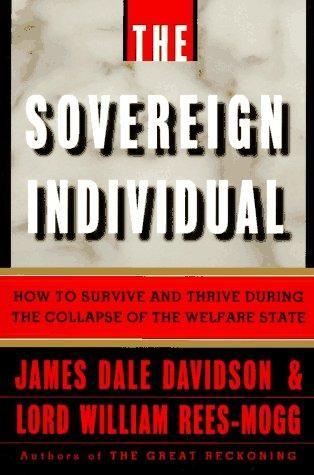
The Sovereign Individual: How to Survive and Thrive During the Collapse of the Welfare State
by
James Dale Davidson
and
William Rees-Mogg
Published 3 Feb 1997
So if the metaphor of "gene as optimizer" is taken seriously, the case of the pater who is not the progenitor is only the most clear-cut example of a broader problem. If it is indeed the survival of the "selfish gene" that is optimized by sacrificing for near-relatives, then any possibility that results in the substitution of another allele for the identical copy of the "selfish gene" may be considered one of those intricate tricks that Mother Nature plays on herself. Uncertain Consequences Altruism directed toward kin therefore involves problems. Not only is there the probability problem for the "selfish gene" that apparent relatives of its host may not, in fact, share its identical copies. There is also the difficulty of determining under conditions of uncertainty whether any given gesture of sacrifice will, in fact, primarily benefit relatives rather than others.
…
The uncertainties introduced by the fact that humans reproduce sexually rather than through asexual cloning all but guarantee that an inclination to "inclusive fitness maximization" would stimulate a good deal of "altruism" rebounding to the benefit of alleles other than the "selfish gene." In the first instance, there is always the possibility that some persons who undertake helping actions may do so in the mistaken assumption that they are helping close kin. The father who undertakes a sacrificial action for his offspring may not, in fact, be the progenitor but may merely think he is* This is .not merely a theme for soap operas, it is illustrative of a primordial puzzle that survival of the "selfish genes" is probably facilitated if each apparent father behaves as if he actually is the father, even if there is a possibility that he is not.
…
And ironically, as we consider below, this may be part of the survival benefit that enabled those with less discriminate helping genes to endure all the millennia of unpleasantness until now. Altruism and Genetic Inertia If, as we believe, the "selfish gene" thesis is an accurate approximation of what motivates human action, it would be too simple to suppose that the helping or sacrificial behavior it engenders could operate narrowly and solely for the benefit of actual relatives. Imperfect knowledge makes distinguishing kin an uncertain art in some circumstances. And even assuming that kin were known, actual representation of any given "selfish gene" in the population of kin could not be ascertained as more than a matter of probabilities. Until recently, it would have been impossible to distinguish actual genetic markers among individuals.
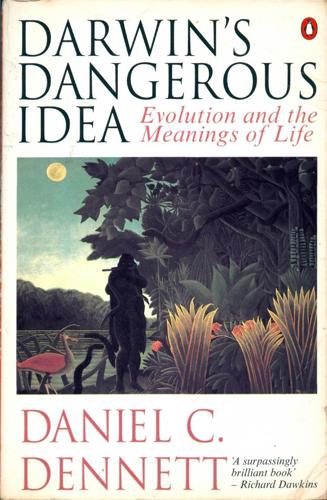
Darwin's Dangerous Idea: Evolution and the Meanings of Life
by
Daniel C. Dennett
Published 15 Jan 1995
We should note that the memes for normative concepts — for ought and good and truth and beauty — are among the most entrenched denizens of our minds. Among the memes that constitute us, they play a central role. Our existence as us, as what we as thinkers are — not as what we as organisms are — is not independent of these memes. Dawkins ends The Selfish Gene (1976, p. 215) with a passage that many of his critics must not have read, or understood: We have the power to defy the selfish genes of our birth and, if necessary, the selfish memes of our indoctrination.... We are built as gene machines and cultured as meme machines, but we have the power to turn against our creators. We, alone on earth, can rebel against the tyranny of the selfish replicators.
…
This dependence is conditioned by coincidences or accidents at every turning. Just look at my bibliography to discover the main lines of genealogy of this book. I have been reading and writing about evolution since I was an undergraduate, but if I had not been encouraged by Doug Hofstadter in 1980 to read Dawkins' The Selfish Gene, I probably would not have begun coalescing some of the interests and reading habits that have been major shapers of this book. And if Hofstadter had not been asked by The New York Review of Books to review my book Brainstorms (1978), he probably would never have hit upon the bright idea of proposing that we collaborate on a book, The Mind's I (1981), and then we would not have had the opportunity for mutual book-recommending that led me to Dawkins, and so forth.
…
The most influential of the many applications of game-theoretic thinking to evolutionary theory is Maynard Smith's concept of an evolutionarily stable strategy, or ESS, a strategy that may not be "best" from any Olympian (or Fujian!) standpoint, but is unimprovable-upon and unsubvertible under the circumstances. Maynard Smith (1988, especially chh. 21 and 22) is an excellent introductory account of game theory in evolution. The revised edition of Richard Dawkins' The Selfish Gene (1989a) has a particularly good account of the development of ESS thinking in biology during the last decade or so, when large-scale computer simulations of various game-theoretic models revealed complications that had been overlooked by the earlier, less realistic versions. I now like to express the essential idea of an ESS in the following more economical way.
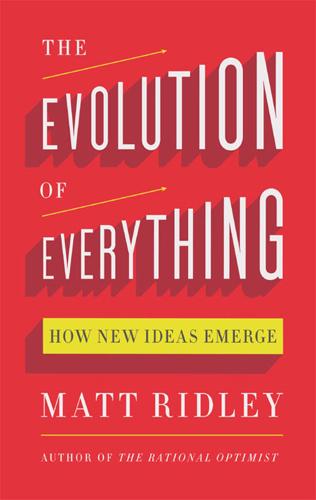
The Evolution of Everything: How New Ideas Emerge
by
Matt Ridley
He wrote: Sex is not the only apparent paradox that becomes less puzzling the moment we learn to think in selfish gene terms. For instance, it appears that the amount of DNA in organisms is more than is strictly necessary for building them: a large fraction of the DNA is never translated into protein. From the point of view of the individual this seems paradoxical. If the ‘purpose’ of DNA is to supervise the building of bodies it is surprising to find a large quantity of DNA which does no such thing. Biologists are racking their brains trying to think what useful task this apparently surplus DNA is doing. From the point of view of the selfish genes themselves, there is no paradox.
…
Thermo-economics: energy, entropy and wealth. B&O Economics Research Council 44. The calculations as to the numbers of events happening inside the human body at any one time are mine but based on information supplied by Patrick Cramer and Venki Ramakrishnan. On selfish DNA, Dawkins, R. 1976. The Selfish Gene. Oxford University Press; Doolittle, W.F. and Sapienza, C. 1980. Selfish genes, the phenotype paradigm and genome evolution. Nature 284:601–603; and Crick, F.H.C. and Orgel, L. 1980. Selfish DNA: the ultimate parasite. Nature 284:604–607. On ‘junk DNA’, Brosius, J. and Gould, S.J. 1992. On ‘genomenclature’: A comprehensive (and respectful) taxonomy for pseudogenes and other ‘junk DNA’.
…
.* Whereas Plato and Aristotle could be accommodated within Christianity, because of their belief in the immortality of the soul and the evidence for design, the Epicurean heresy was so threatening to the Christian Church that Lucretius had to be suppressed. His atheism is explicit, even Dawkinsian, in its directness. The historian of philosophy Anthony Gottlieb compares a passage from Lucretius with one from Richard Dawkins’s The Selfish Gene. The first talks of ‘the generation of living creatures’ by ‘every sort of combination and motion’; the second of how ‘unordered atoms could group themselves into ever more complex patterns until they ended up manufacturing people’. Lucretius was, carped John Dryden, at times ‘so much an atheist, he forgot to be a poet’.

Survival of the Richest: Escape Fantasies of the Tech Billionaires
by
Douglas Rushkoff
Published 7 Sep 2022
Contents Introduction: Meet The Mindset 1 The Insulation Equation BILLIONAIRE BUNKER STRATEGIES 2 Mergers and Acquisitions ALWAYS HAVE AN EXIT STRATEGY 3 A Womb with a View YOU ARE SAFE IN YOUR TECHNO-BUBBLE 4 The Dumbwaiter Effect OUT OF SIGHT, OUT OF MIND 5 Selfish Genes SCIENTISM OVER MORALITY 6 Pedal to the Metal DEHUMANIZE, DOMINATE, AND EXTRACT 7 Exponential WHEN YOU CAN GO NO FURTHER, GO META 8 Persuasive Tech IF YOU COULD JUST PUSH A BUTTON 9 Visions from Burning Man WE ARE AS GODS 10 The Great Reset TO SAVE THE WORLD, SAVE CAPITALISM 11 The Mindset in the Mirror RESISTANCE IS FUTILE 12 Cybernetic Karma HOISTED BY THEIR OWN PETARD 13 Pattern Recognition EVERYTHING COMES BACK Acknowledgments Notes Survival of the Richest INTRODUCTION Meet The Mindset I got invited to a super-deluxe resort to deliver a speech to what I assumed would be a hundred or so investment bankers.
…
Amazingly, it works well enough to make them billionaires in the process, confirming the validity of their convictions to themselves and to their growing legions of acolytes. They become our society’s heroes. Cherry-picking compatible ideas from science, economics, and philosophy, they have assembled a mindset that actually encourages them to build a highly technologized society capable of supporting denial at scale. 5 Selfish Genes SCIENTISM OVER MORALITY I n what must have been a practiced routine, Richard Dawkins leaned over and began folding a piece of paper on the glass coffee table. The famed evolutionary biologist was the guest of honor at a dinner party in the Central Park West apartment of literary agent and science world luminary John Brockman .
…
The tech bros and their most ardent antagonists fall into the same mental trap. Whether corporate or counterculture, these conquest narratives all follow what we might call heroic journeys or New Testament architectures. Struggle, progress, climactic apocalypse, and then salvation for those with the right belief, psychedelic experience, computer processor, or selfish genes. Those lucky winners get the final, transformative climax to infinite wealth, Mars, eternity on a chip, or Christ consciousness. They finally arrive somewhere, and the story ends. It’s not that this narrative shape was born at some moment in the history of Western civilization and then took over the world.
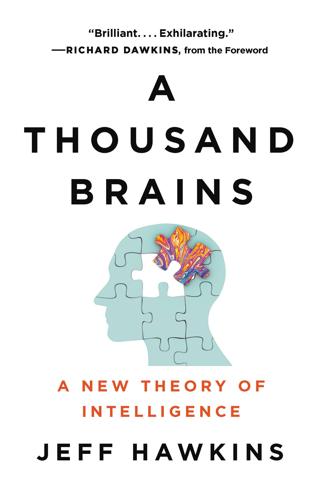
A Thousand Brains: A New Theory of Intelligence
by
Jeff Hawkins
Published 15 Nov 2021
For he is very clear that our enlightened values must, and do, diverge sharply from the primary and primitive value of our selfish genes—the raw imperative to reproduce at all costs. Without an old brain, in his view (which I suspect may be controversial), there is no reason to expect an AI to harbour malevolent feelings toward us. By the same token, and also perhaps controversially, he doesn’t think switching off a conscious AI would be murder: Without an old brain, why would it feel fear or sadness? Why would it want to survive? In the chapter “Genes Versus Knowledge,” we are left in no doubt about the disparity between the goals of old brain (serving selfish genes) and of the new brain (knowledge).
…
In the chapter “Genes Versus Knowledge,” we are left in no doubt about the disparity between the goals of old brain (serving selfish genes) and of the new brain (knowledge). It is the glory of the human cerebral cortex that it—unique among all animals and unprecedented in all geological time—has the power to defy the dictates of the selfish genes. We can enjoy sex without procreation. We can devote our lives to philosophy, mathematics, poetry, astrophysics, music, geology, or the warmth of human love, in defiance of the old brain’s genetic urging that these are a waste of time—time that “should” be spent fighting rivals and pursuing multiple sexual partners: “As I see it, we have a profound choice to make. It is a choice between favoring the old brain or favoring the new brain.
…
It is a choice between favoring the old brain or favoring the new brain. More specifically, do we want our future to be driven by the processes that got us here, namely, natural selection, competition, and the drive of selfish genes? Or, do we want our future to be driven by intelligence and its desire to understand the world?” I began by quoting T. H. Huxley’s endearingly humble remark on closing Darwin’s Origin. I’ll end with just one of Jeff Hawkins’s many fascinating ideas—he wraps it up in a mere couple of pages—which had me echoing Huxley. Feeling the need for a cosmic tombstone, something to let the galaxy know that we were once here and capable of announcing the fact, Hawkins notes that all civilisations are ephemeral.
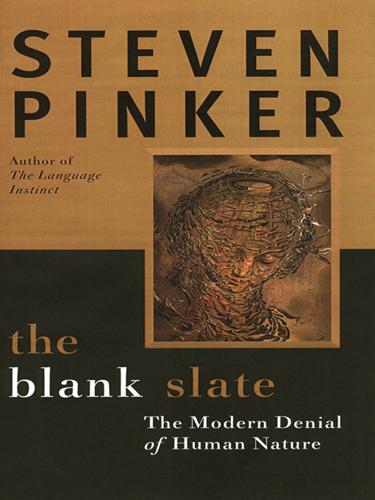
The Blank Slate: The Modern Denial of Human Nature
by
Steven Pinker
Published 1 Jan 2002
A spokesperson from the Feminist Majority Foundation called the book “scary” and “regressive” because it “almost validates the crime and blames the victim.”4 A spokesperson for the Discovery Institute, a creationist organization, testified at a U.S. congressional hearing that the book threatened the moral fabric upon which America is founded.5 A third vice with political implications is selfishness. If people, like other animals, are driven by selfish genes, selfishness might seem inevitable or even a virtue. The argument is fallacious from the start because selfish genes do not necessarily grow selfish organisms. Still, let us consider the possibility that people might have some tendency to value their own interests and those of their family and friends above the interests of the tribe, society, or species.
…
For twenty-five years they have indefatigably fought a rearguard battle against behavioral genetics, sociobiology (and later evolutionary psychology), and the neuroscience of politically sensitive topics such as sex differences and mental illness.23 Other than Wilson, the major target of their attacks has been Richard Dawkins. In his 1976 book The Selfish Gene, Dawkins covered many of the same ideas as Wilson but concentrated on the logic of the new evolutionary theories rather than the zoological details. He said almost nothing about humans. The radical scientists’ case against Wilson and Dawkins can be summed up in two words: “determinism” and “reductionism.”24 Their writings are peppered with these words, used not in any technical sense but as vague terms of abuse.
…
In fact they were just hostile reviews of books by the ethologist Konrad Lorenz, the playwright Robert Ardrey, and the novelist William Golding (author of Lord of the Flies).11 Some of the criticisms were, to be sure, deserved: Ardrey and Lorenz believed in archaic theories such as that aggression was like the discharge of a hydraulic pressure and that evolution acted for the good of the species. But far stronger criticisms of Ardrey and Lorenz had been made by the sociobiologists themselves. (On the second page of The Selfish Gene, for example, Dawkins wrote, “The trouble with these books is that the authors got it totally and utterly wrong.”) In any case, the reviews contained virtually no data about tribal warfare. Nor did Montagu’s summary essay, which simply rehashed attacks on the concept of “instinct” from decades of behaviorists.
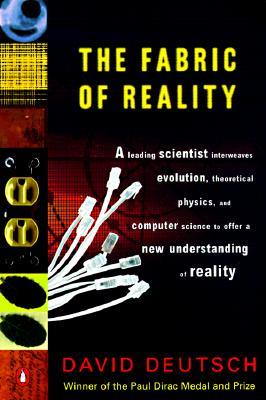
The Fabric of Reality
by
David Deutsch
Published 31 Mar 2012
problem 337 Life of Johnson (Boswell) 86 light ������bending of 37�40 ������ductility of 38 ������laser 34, 40 ������speed of 44, 99, 105, 107, 125, 160, 348 ������spreading 34, 38 ������white 38�9, 39 ������see also photons logic 20, 161, 168, 229, 231, 248�9 Aristotelian 254 ������law of the excluded middle 232�3 ������limitations of 225 ������and mathematical intuition 231, 232 ������rules of inference see rules of inference symbolic 230 ������logical positivism see positivism logically possible/impossible see under environment; experience master builder 13�15, 358�9 mathematical intuition see under intuition mathematical questions ������computable 132, 133 ������non�computable 132�3 mathematical theorems 146, 227�8, 230, 234, 236, 247 mathematics 20, 199, 221, 228, 236, 256 ������and the behaviour of physical objects 133, 253�5 ������certainty in 224, 226, 230, 233�4, 236, 238, 240 ������creativity as central to 236, 240 ������and explanation 253 ������and nature 73, 74, 76, 94 ������the objective of 253 ������as the study of absolutely necessary truths 253 ������and the theory of computation 98 ������understanding in 10 ������and virtual reality 120, 131 Maxwell, James Clerk 9 medicine, specialization in 16 memes 171, 187, 193, 336, 346, 360 Mercury 56 meta�mathematics see proof theory Milky Way 177 mind 11, 90, 352 ������as a computer program 352, 353 ������and mathematical certainties 236 ������and problem�solving 71, 72, 76 ������and solipsism 58, 70, 80, 82, 83 ������and time travel 310 ������and virtual reality 106, 111�12 ������see also thought morality 359�63, 364, 365�6 ������must be objective 364 motion, laws of 20, 24�7, 213, 337, 338 multiverse 46, 47, 48, 53, 58, 95, 185, 187, 190, 191, 206, 207, 211, 212, {381} 212, 275�80, 277, 281, 283, 287, 305, 330. 335, 338, 339, 366 ������causes and effects in 276, 286 ������and DNA 189, 190, 190 ������as a jigsaw puzzle 285 ������and the omega point 352, 364 ������and parallel spacetimes 289�90 ������and parallel universes 54 ������and philosophical problems 339�40 ������and physically possible processes 105, 135 ������and quantum theory 50 ������reality as a 54, 288 ������and time travel 306, 307, 308, 310, 312, 316, 318 ������and virtual reality 103, 357 mutation 68, 188, 189 The Myth of the Framework (Popper) 323 natural numbers see under numbers natural selection 315, 332, 333 nature laws of 255, 337; see also laws of physics ������and mathematics 73, 74, 76, 94 ������as physics 169 ������quantum computation harnesses 195, 221 Neptune, discovery of 56 Newton, Isaac 2, 3, 17, 56, 85, 93, 266�7, 269, 324, 337, 344 ������concept of time 266�7 niches 68, 121, 172, 174, 175, 179, 181, 182, 187, 188, 193, 315, 316, 333 nuclear physics 18, 23, 182 numbers ������arabic notation 9 ������and the diagonal argument 126 ������factorization 104, 199�200, 215�16 ������imaginary 227�8 ������infinite 228 ������multiplying large 198�9 ������natural 223, 226, 228, 231, 232�3, 242 ������negative 227 ������prime 133, 199, 215, 223, 224, 228 real 227�8 ������Roman numerals 9�12 numerology 63 observation(s) 76, 224 ������and arguments 69, 147 ������and the Copenhagen interpretation 327�8 ������and explanation 75, 224, 225 ������extrapolating 59, 60�61, 71 ������and inductivism 59, 60, 61, 69, 149 ������and justification of theories 59, 60, 156 ������and prediction 60, 61, 75, 141 ������and reality 74 ������and theories 59�62, 69, 71, 77, 141, 224, 225 ������unexpected 62�3 ������virtual reality and 225 Occam's razor 78, 96, 137, 160 omega�point theory 347�59, 364, 365 'On the Infinite' (Hilbert) 250 On the Plurality of Worlds (Lewis) 340 The Open Society and its Enemies (Popper) 344 oracle ������and experimentation 4, 5 ������and instrumentalists 4, 6 ������physical world as an 5�6 ������and theories 4, 5, 6 organism ������DNA 173, 175 ������life�style 175 ������niche of 172 ������as part of the environment of replicator's 175, 176 ������rendered 178�9 ������not a replicator 175�6 origin of species 315, 316, 332, 333 {382} Page, Don 278 paper 120, 131, 246, 252�3 paradigm 321, 330, 331, 334, 342 ������succession 323�4, 327, 332 parallel axiom 247 parallel universes 53, 57, 60, 89, 95, 136�7, 207, 221, 305, 308, 353 ������and Bohm's theory 93�4 ������as distinguished only by what happens in them 307 ������and Dr Johnson's criterion 88�9 ������existence revealed 32�3 ������and genes 187�191, 190 ������and interference 59, 168, 213 ������and the multiverse 46, 54 ������quantum computation and 195, 220 ������quantum theory of 51 ������and randomness 202�4 ������rendering of 300, 357 ������stacked 211 ������and the weather 202 ������and time 278, 305 particle accelerators 5, 19 particle physics 8 past, changing the 309�10 Penrose, Roger 132, 236�40, 255, 331 penumbras 36, 37, 37, 38, 39, 42 perception 57; ������see also sensations perfect accuracy see under accuracy photons 4, 35, 35, 38, 41�4, 53, 88, 89, 188, 202, 204, 205, 206, 207, 209, 218, 219; ������see also light physically possible/impossible see under environment; virtual�reality generators physics ������classical, and chaos theory 201 ������and complexity 21, 197 ������geometry incorporated into 17�18 ������laws of see laws of physics ������nature as 169 ������Newtonian 169, 268, 270 ������split into specializations 8 ������subatomic 27, 169 ������swallows up hitherto unrelated ������subjects 344 ������and the theory of everything 21 ������and the Turing principle see under Turing principle The Physics of Immortality (Tipler) 347 Planck time 284, 312 planetarium 77�8, 91, 92, 95, 136 planets 68, 107 ������motions of the 1�4, 12, 13, 56, 60, 66, 78�9, 85�9, 92, 201, 240, 337 ������and stars 55 ������wandering 60, 62, 63 Plato 226, 227, 231, 236, 240�43, 245, 255 Popper, Karl/Popperian v, 76, 141�9, 151, 154, 157, 158, 165�6, 322, 323, 331, 334, 345, 365 ������and artificial intelligence 331 ������and corroboration 145 ������critics of Popperian epistemology 340 ������and explanations leading to new problems 139 ������and the future growth of knowledge 359 ������on history 344 ������and induction 144, 146, 156 ������and justification 156 ������and the theory of evolution 341 ������theory of scientific knowledge 62, 68, 315, 335�6 positivism 6, 29�30, 48, 75, 84, 341 ������and the Copenhagen interpretation 328 Post, Emil 131, 133, 252 pragmatic instrumentalism 48, 329 prediction 48, 85 ������in astronomy 2, 3, 4, 56�7, 73, 185 ������by an oracle 4, 5 ������conflicting 65 ������correct 65, 145�9 ������and explanation 5, 6, 8, 11, 62, 64�5, 66, 76 {383} ������false 7, 65, 142 ������and inductivism 69 ������and instrumentalism 3, 21 ������justification of 146, 147, 161�2, 164 ������and laws of motion 20, 25, 26 ������limitations in classical physics 201 ������limitations in quantum physics 202�3 ������in the multiverse 283 ������and Newtonian physics 270 ������and observation 60, 61, 75, 141 ������as part of the characteristic method of science 6 ������and positivism 6 ������in pre�quantum physics 270 ������in principle 2 ������probabilistic 280, 281; ������see also probability ������and quantum theory 25, 44, 50�51, 203�4, 280, 329 ������theories and 2, 3, 4, 6�7, 30, 60, 117, 118, 147, 156, 162 ������and the theory of everything 18�19, 22, 235 ������and the theory of evolution 362 predictive emergence 362 prime pair 133 Principia (Newton) 266�7 principle of increasing entropy see thermodynamics, second law of 'principle of induction' see under induction prions 171 probability 18, 22, 59, 116, 203�4, 280�81 307 problem 62, 64, 65, 70, 141 ������backtracking 67 ������emergent properties of 68 ������of induction see induction ������new 62�3, 64, 65 ������scientific 70 ������variants of 67 problem�situation 148, 153, 154, 156, 157, 161, 315 problem�solving 55�72, 80, 323 ������by the brain 238 ������and reality 76 ������science and 62, 65, 70, 76 proof 131, 224, 227, 244, 256 ������and certainty 224, 225, 227, 256 ������and experiment 224 ������and explanation 236 ������methods of 227, 229, 230, 233, 239, 246, 256�7 ������new types of 136 ������number of steps 249�50, 251 ������as a physical process 246, 248 ������quantum 251�2 ������role in mathematics 224 ������and syllogisms 229�30 ������traditional definition 245 ������as a type of computation 246 proof theory 229�30, 231, 234, 248, 344 proteins 171 Ptolemaic system 9; ������see also geocentric theory public�key cryptography 215, 217, 219 punctuated equilibrium theory 334, 335 Pythagoras 226, 238 quantization 35�6, 54, 127 quantum computation see under computation quantum computers see under computers quantum cosmology 330, 335 quantum cryptography 218 quantum factorization engine 215�16, 217, 220 quantum gates 214 quantum mechanics ������and the 'butterfly effect' 202, 203 ������Copenhagen interpretation 327�8, 329, 335, 342 ������interpretation of 335 ������intractability in 203 ������and parallel universes 319 {384} ������and 'snapshots' 317 ������and tossing a coin 282 ������unpredictability in 203 ������see also quantum theory quantum optics 32 quantum physics 32�54, 194�221, 258�88, 289�320, 321�43, 344�66 ������links with epistemology and computation 344 quantum theory 8, 23�4, 32�54, 53, 157, 211, 228, 313, 328�9, 338 ������as about the 'interaction of the real with the possible' 48 ������of computation see under computation ������determinism of 281 ������and discrete steps 250 ������and the general theory of relativity 134, 177 ������and a multiverse 50, 328 ������and the nature of time 27, 278 ������as one of the four main strands of explanation 24, 28, 30�31 ������and parallel universes 51 ������and prediction 25, 44, 50�51, 203�4, 280, 329 ������and quantization 35�6, 54, 127 ������and reality 24, 50 ������and the theory of evolution 190�93 quantum theory of gravity 24, 277 quantum/quanta 35 quasars 12�13 Quirk, Randolph 258, 260 randomness ������explaining unpredictable events 8, 22 ������and free will 338 ������multiverse view of 203, 279�82 ������random DNA sequences 173, 188 ������see also probability rationality 80, 86, 169, 240, 328, 329, 331, 335 ������incompatible with faith 169 ������principles of 156, 161, 162, 163, 331 ������see also reason realism 74, 85, 96, 329 ������and common sense 74, 83, 84 ������solipsism disguised as 84, 97 reality ������as bigger than it seems 45, 136 ������and Bohm's theory 93�4 ������comprehensible 138, 140 ������criteria for 73�97 ������Dr Johnson's criterion for 86�93, 97, 101 ������existence of entities in 222 ������Galileo's conception of 94 ������and 'kicking back' 86�90, 92, 97, 101, 223 ������and multiverse 46 ������of natural numbers 222 ������not affected by 'the possible' 48 ������objective 240 ������physical 24, 74, 168, 186, 255, 267, 272, 275, 291, 297, 298, 327 ������Platonic 226�7 ������quantum theory and 24, 50 ������as quantum�mechanical 201 ������reason and 81 ������and reductionism 25 ������and scientific reasoning 97 ������self�similarity of 95, 98, 134, 140 ������and solipsism 58, 83 ������and substantial computation 92 ������understanding the whole of 117 ������a unified conception of 29, 30 ������virtual see virtual reality reason ix, 72, 74, 76, 81, 227; ������see also rationality red giant 183, 184, 186, 353 reductionism 19, 21, 27, 30, 84, 169, 176, 345 ������and explanation 21, 24 ������extended sense of 347 ������and holism 21 ������and mathematics 235 {385} ������and reality 25 ������science as reductionist 19 ������and the theory of everything 20 ������world�view 23, 343 refutation 65, 150, 332 ������experimental 65 ������and the growth of knowledge 68 ������of inductivism see induction ������of intuitionism 231�3 ������and Hilbert's tenth problem 234 ������of obsolete theories 335 ������of solipsism 85 ������of theories see under theories relativity, general theory of 2�3, 12, 56, 89, 145, 157, 159, 228, 238, 239, 247, 268, 312, 344 ������Einstein's equations 311�12 ������incorporates geometry into physics 17�18, 344 ������'unphysical' solutions 311 ������������see also gravity relativity, special theory of 290 rendering see virtual reality repertoire ������of abstract computers 132, 133�4 ������of image generator 105�11 ������and internal experiences 104 ������of master builder 14 ������of Turing machines 132 ������of universal quantum computer 210 ������of virtual�reality generators see under virtual�reality generators replicator(s) 170�71, 188, 192, 334 ������adaptation to its niche 174, 177, 180 ������contributes causally to its own copying 172, 173, 274 ������highly adapted 174, 340 ������variants 174, 274 ������see also genes; memes resurrection of the dead 357�8 retrodiction 270, 282 Reviews of Modern Physics 328 Rivest, Ronald 215 RNA 171, 192 Roman numerals 9�10, 11, 12 rotation 224 roulette wheel 115�16 RSA cryptosystem 215, 216 rules of inference 163, 229, 230, 233, 234, 236, 237, 245, 250, 251, 256 rules of thumb 14�15, 16, 253 Russell, Bertrand 60, 61, 230, 254 Schwarzschild, Karl 311 Sciama, Dennis 335 science ������'normal' 322 ������problem�solving in 62, 65, 70, 76 ������purpose of 4, 7, 71, 117 ������and reductionism 19, 20, 21 ������'revolutionary' 322, 334 ������and virtual reality 117�18, 135 scientific discovery compared with biological evolution 68, 71 ������the course of 65, 67 ������and experimental tests 65 ������and an unexpected observation 62�3 scientific methodology 6�7, 65, 70, 73, 143, 144, 147, 149, 332, 340 ������in practice 325�7 scientific reasoning and inaccurate experiences 136 ������reliability of 94, 97 ������and virtual reality 101 self�similarity 95�8, 96, 134, 135, 140, 47 The Selfish Gene (Dawkins) 176, 334 'selfish gene' theory 334, 340 sensations 52, 87, 92, 105�10, 254 sensory isolation 104�5, 125, 128 sets 224, 228, 230, 231, 254 shadow particles/photons 43�9, 52, 53, 88, 93 shadows 32�55, 58, 59, 168, 206, 207 ������penumbras of 36�7, 37 {386} ������umbras of 36, 37 Shakespeare, William 258, 259, 314, 315 Shamir, Adi 215 Shor, Peter 215 Shor's algorithm 215, 216�17 snapshots see under time sociobiology 360 solipsism 58, 70, 80, 81, 137, 287 ������and the angel theory of planetary motion 88 ������central thesis of 81 ������defence of 81�2 ������and explanation 97, 142, 233 ������as indefensible 82, 84 ������and intuitionism 231, 232, 233 ������joke 81 ������as realism disguised 83�4, 97 ������refutation of 97, 102 ������variants 85 sound reproduction 109�10 space ������curved 3, 4, 12, 23, 56, 57, 86, 89 ������three�dimensional 267�8 ������and time 268 spaceflight simulators 107 spacetime 267, 268, 268, 288, 355 ������as the 'block universe' 268, 270 ������curvature 159, 161 ������and 'Faraday's death in 1830' premise 274�6 ������as a four�dimensional entity 268 ������as incompatible with the existence of cause and effect 274 ������omega�point 349�50 ������parallel spacetimes 289�90 ������shuffled 271, 272, 282�3 ������as unchanging 338 spacetime physics 269, 270, 274, 275, 279, 283, 285, 288, 309, 338 special�purpose quantum computer ������see under computers specialization 8�9 ������in medicine 16 spectral types 185 stellar evolution 182�3, 185 The Structure of Scientific Revolutions (Kuhn) 321 subatomic particles 18, 20, 21, 23, 96 Sun ������control of 183�4, 353 ������future development 183, 184, 186, 353 ������heliocentric theory 9, 56, 73, 96, 169 ������and the 'Inquisition's theory' 77 ������and the solar system 177 source of energy 182 superconductivity 214 superfluidity 214 supermarkets, virtual�reality 101 superstring theory 23 survival of the fittest 333 syllogisms 229, 230 symbolic logic see under logic symbols ������and abstract entities 245, 246 ������as physical objects 127, 241 tangible particles 43�7, 48, 49, 52, 53, 53 theories 9 ������amended 64, 68 ������becoming deeper 13, 14�15, 16, 17, 30 ������becoming fewer 13, 14�15, 17 ������becoming more general 13, 14�15, 16, 17, 30 ������as conjectural 64, 69, 71, 141 ������corroboration of see corroboration ������demotion of 11, 13 ������and evolution 68 ������explanation and 2�3, 4, 7, 60, 66, 71, 76, 80�81, 117, 118, 157, 332 ������genes as 315 ������as imperfect 17 ������implicit 9 ������inborn 121, 136 ������justification of see justification {387} ������languages as 153 ������logical relationships between 28 ������and observations 59�62, 69, 71, 77, 141, 156, 224, 225 ������and an oracle 4, 5, 6 ������postulating anomalies 155, 156 ������and predictions 2, 3, 4, 6�7, 30, 60, 117, 118, 147, 156, 162 ������as programs 121 ������proposed new 64 ������refutation of 142, 147�51, 321, 335 ������rejection of 7, 64�7, 147, 152, 160 ������rival 65, 148 ������selection of 68, 69, 71, 142 ������superseding old ones 9, 17�18, 30, ������unconscious 121 ������unifying two old ones 9 ������variants of 68, 150 Theory of Everything 17, 19 ������as the first fully universal theory 18 ������and the four main strands of ������explanation 28�9, 30�31, 345 theory of everything 19, 20, 21, 22, 23, 169 ������and explanation 19 ������and the initial state 19, 24 ������particle physicists and 18, 30 ������and prediction 18�19, 22, 235 ������and a quantum theory of gravity 24 thermodynamics 8, 164 ������second law of (principle of increasing entropy) 286, 345 thought(s) ������as an emergent phenomenon 21 ������and the fabric of reality 3 ������and machines 238 ������and solipsism 83 ������virtual�reality renderings 352 ������and a wider universe 138 ������see also mind time ������breakdown of sequence of 283�5 ������common�sense concept of, see under common sense ������as a continuum 267 ������dilation 290�91 ������'flow' of 141, 258, 261, 263�6, 269, 270, 284, 287, 287, 288, 309 ������as a fourth dimension 267 ������mystery of 258, 260 ������Newtonian concept 266�7 ������and physical intuition 253�4 ������the present moment ('now') 258�65, ZS9, 260, 262 ������quantum concept of 257, 278, 287, ������305, 310, 319 ������and quantum theory 27 ������'snapshots' 259, 260, 260, 261, 263, 265, 267, 270�72, 276�86, 288, 290, 291, 300, 304, 305, 309, 310, 316, 318 ������and virtual�reality generators 125 ������see also clocks and calendars; spacetime time machines 289, 292�301, 299, 304�8, 310, 313, 314�15, 317, 318, 319 'time stamps' 272, 278, 283 time travel 288, 289�320, 319, 320, 344 ������attempt to enact a paradox 305�6, 306, 311, 317 ������collision avoidance 299�300, 314 ������and epistemology 315 ������and evolution 315 ������future�directed 290, 291, 312, 319 ������grandfather paradox 293, 319 ������and inter�universe travel 310 ������knowledge paradox 314, 315, 316, 319 ������multiple copies of the time traveller 299, 299, 301�8, 311 ������paradoxes of 293, 294, 295, 307, 312, 314, 315, 319 ������past�directed 290, 291, 293, 295�6, 298, 310, 312�13, 319 ������physically possible 311 {388} ������present�directed 291 ������spacetime path 296 Tipler, Frank 185�6, 347, 349, 351, 353�8, 364�5, 366 Toffoli, Tomasso 346 tractability 196, 198, 220 Turing, Alan v, 133, 325 ������and Cantgotu experiments 128 ������and classical mechanics 210, 211 ������modern theory of computation 126, 131, 132, 252, 335, 336, 339, 366 ������see also Church�Turing conjecture Turing machines 131�2, 140, 194, 195, 210, 213, 218, 250, 252 ������universal 132, 134, 140 Turing principle 132, 134, 140, 193, 197, 193, 340, 341 ������as the best theory of the foundations of computation 350 ������as a fundamental principle of nature 354 ������and the laws of physics 136, 181, 197 ������links physics and the theory of computation 340 ������and the omega�point theory 348, 351 ������Penrose and 132, 237, 240 ������and the physical embodiment of knowledge 181, 182 ������and self�similarity 347 ������strong form 134, 135, 136 ������universal computer/computation 132, 221, 330�31, 353, 354 ������universal virtual�reality generator 134, 135, 163�4, 292, 303, 348 ������virtual reality first realized in nature 181�2, 193 ������see also Church�Turing conjecture umbra 36, 37, 38, 39 unconsciousness 104 understanding 342 ������everything that is understood 1, 8, 9, 10, 13, 16�17, 30 ������explanations and 11, 224 ������extended into new areas 15 ������and the four main strands of explanation 28 ������implicit 11�12 ������increased understanding with less learning 9 ������in mathematics 10, 234 ������as the motivation for science 4 ������and observation 224 ������of quantum interference 168 ������and unifications 18 ������and world�view shifts 18 universal auditory sensation generator 110 universal image generators 109�11, 121, 129, 134 universal quantum computer see under computers universal quantum simulator 210 universal Turing machine 132, 134, 139 universal virtual�reality generator 130�31, 134, 135, 137, 139 universality ������computational 97, 195�6, 197, 108, 221, 239, 252, 350 ������and explanations 29 ������and intractability 208 ������quantum computers and 219 ������of the universal Turing machine 134 ������and virtual�reality generators see under virtual�reality generators universe 46, 169 ������block see spacetime ������colonizing 353 ������as a computer 346 ������expanding 311, 348 ������experience of a single 136, 141 ������finite in space and time 348�9 ������initial state 25, 26, 27 ������life affecting the structure of 186 ������and reality 45, 52, 54, 74 ������recollapse of 162, 355 {389} ������������see also multiverse; parallel universes unpredictability 203, 208, 220; ������see also probability utilitarianism 361, 362, 363 variation and selection 68, 182, 188, 331 Venus, phases of 77 video games, virtual�reality 100, 103, 127�8, 137 virtual reality 98�122, 255 ������based on the wrong laws 136 ������and future�directed time travel 290 ������as interactive 113, 114 ������and living processes 175 ������and mathematical truths 255, 257 ������and science 117�18, 135 ������and observation 225 ������and proof 224 ������and rendering logically possible environments 129 ������theory of 243 ������ultimate limits of 105, 196 virtual�reality generators 99, 102, 103, 104, 111, 116, 117, 225, 297�8, 300�304, 306�8 ������and the brain 121, 124�5, 126 ������and Cantgotu environments 128 ������and externally elapsed time 125 ������and the laws of physics 243�4 ������and past�directed time travel 291, 293 ������physically possible 126, 133, 135 ������principal components 112 ������rendering 118�19, 179, 243, 244, 245, 291, 295, 297, 298�9, 307 ������repertoire 105, 122, 124, 126, 128�9, 130, 134, 135, 140, 164 ������and time machines 318 ������and the Turing principle 134, 135, 163�4, 181 ������ultimate 123�6, 129 ������universal 124, 130�31, 134, 135, 137, 139, 163�4, 197, 291, 191, 303, 310, 340, 348 ������'working memory' 123�4 war 22, 184, 185 Watkins, John 144 weather 6, 63, 98, 200�201, 202 weightlessness 106, 107, 108 Weinberg, Steven ������pointlessness of the universe 346 ������unimportance of explanation 3�4 Wheeler, John Archibald 328 'Why Both Popper and Watkins Fail to Solve the Problem of Induction' (Worrall) 143�4 Wickramasinghe, Chandra 333 Wooters, William 278 world�view 62, 75, 83, 97, 159, 161, 169, 318�19, 321, 331, 335 ������Darwin and 337 ������ever greater changes in 57 ������and misleading phenomena 103 ������and moral values 359, 361 ������and the multiverse 48 ������Newtonian 56, 58 ������Penrose and 239, 240 ������positivism rejected as a 84 ������and problem�solving 68 ������reductionist 23, 345, 347 ������single�universe 93, 217 ������and a Theory of Everything 18 ������unified 366 Worrall, John 143�4 Zeno of Elea 249 {390} * * * * In Freedom and Rationality: Essays in Honour of John Watkins
…
Both the nose and the den are merely parts of the environment which the bear's genes manipulate in the course of getting themselves replicated. This gene-based understanding of life - regarding organisms as part of the environment of genes - has implicitly been the basis ol biology since Darwin, but it was overlooked until at least the 1960s, and not fully understood until Richard Dawkins published The Selfish Gene (1976) and The Extended Phenotype (1982). I now return to the question whether life is a fundamental phenomenon of nature. I have warned against the reductionist assumption that emergent phenomena, such as life, are necessarily less fundamental than microscopic physical ones. Nevertheless, everything I have just been saying about what life is seems to poini to its being a mere side-effect at the end of a long chain of side-effects.
…
Such objections seem to undermine the ability of Darwin's theory to meet its original purpose, which was to explain how the apparent 'design' (i.e. adaptations) in living organisms could have come into being through the operation of 'blind' laws of physics on inanimate matter, without the intervention of a purposeful Designer. {333} Richard Dawkins' innovation, as set out in his books The Selfish Gene and The Blind Watchmaker, is yet again the claim that the prevailing theory is true after all. He argues that none of the current objections to the unadorned Darwinian model turn out, on careful inspection, to have any substance. In other words, Dawkins claims that Darwin's theory of evolution does provide a full explanation of the origin of biological adaptations.
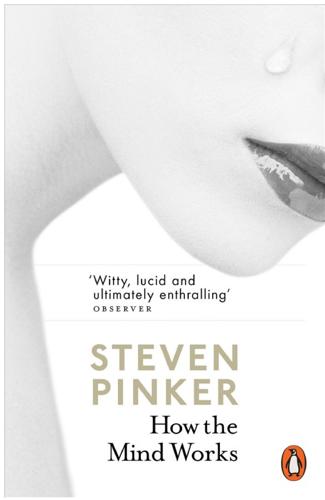
How the Mind Works
by
Steven Pinker
Published 1 Jan 1997
One subtext is, Don’t hate the wolf that just ate Bambi; he’s acting for the greater good. The other is, Protecting the environment is nature’s way; we humans had better shape up. The opposing theory of the selfish gene has been bitterly attacked out of the fear that it vindicates the philosophy of Gordon Gekko in Wall Street: greed is good, greed works. Then there are those who believe in selfish genes but urge us to face up to the sad truth: at heart, Mother Teresa is really selfish. I think moralistic science is bad for morals and bad for science. Surely paving Yosemite is unwise, Gordon Gekko is bad, and Mother Teresa is good regardless of what came out in the latest biology journals.
…
Contrary to popular belief, the gene-centered theory of evolution does not imply that the point of all human striving is to spread our genes. With the exception of the fertility doctor who artificially inseminated patients with his own semen, the donors to the sperm bank for Nobel Prize winners, and other kooks, no human being (or animal) strives to spread his or her genes. Dawkins explained the theory in a book called The Selfish Gene, and the metaphor was chosen carefully. People don’t selfishly spread their genes; genes selfishly spread themselves. They do it by the way they build our brains. By making us enjoy life, health, sex, friends, and children, the genes buy a lottery ticket for representation in the next generation, with odds that were favorable in the environment in which we evolved.
…
A book on the emotional life of animals complains that if altruism according to biologists is just helping kin or exchanging favors, both of which serve the interests of one’s genes, it would not really be altruism after all, but some kind of hypocrisy. This too is a mixup. Just as blueprints don’t necessarily specify blue buildings, selfish genes don’t necessarily specify selfish organisms. As we shall see, sometimes the most selfish thing a gene can do is to build a selfless brain. Genes are a play within a play, not the interior monologue of the players. PSYCHOLOGICAL CORRECTNESS The evolutionary psychology of this book is a departure from the dominant view of the human mind in our intellectual tradition, which Tooby and Cosmides have dubbed the Standard Social Science Model (SSSM).
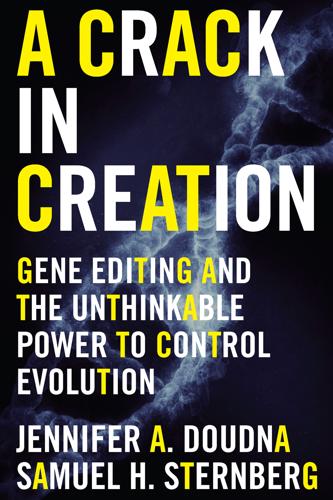
A Crack in Creation: Gene Editing and the Unthinkable Power to Control Evolution
by
Jennifer A. Doudna
and
Samuel H. Sternberg
Published 15 Mar 2017
In normal sexual reproduction between species that contain two copies of each chromosome, offspring acquire just one chromosome copy from each parent, meaning that any particular gene variant has a 50 percent probability of being inherited. However, there are certain DNA sequences, called selfish genes, that can increase their frequency in the genome with each generation, even without conferring any fitness advantage on the offspring. In 2003, evolutionary biologist Austin Burt proposed a way to harness selfish genes in order to spread novel traits more efficiently and to ensure that offspring would have a 100 percent probability of inheriting a given segment of DNA. But his idea hinged on a technology that didn’t really exist at the time: easily programmable DNA-cutting enzymes that would allow for simple gene editing.
…
Shapiro, “Mammoth 2.0: Will Genome Engineering Resurrect Extinct Species?,”Genome Biology 16 (2015): 228–30. “enhance biodiversity through the genetic rescue of endangered and extinct species”: Long Now Foundation, “What We Do,” http://reviverestore.org/what-we-do/. evolutionary biologist Austin Burt proposed a way to harness selfish genes: A. Burt, “Site-Specific Selfish Genes as Tools for the Control and Genetic Engineering of Natural Populations,” Proceedings of the Royal Society of London B 270 (2003): 921–28. George Church’s team at Harvard, led by Kevin Esvelt, proposed a way: K. M. Esvelt et al., “Concerning RNA-Guided Gene Drives for the Alteration of Wild Populations,”eLife 3 (2014): e03401.
…
could be militarized and weaponized: ETC Group, “Stop the Gene Bomb! ETC Group Comment on NAS Report on Gene Drives,” June 8, 2016, www.etcgroup.org/content/stop-gene-bomb-etc-group-comment-nas-report-gene-drives. “Clearly, the technology described here is not to be used lightly”: A. Burt, “Site-Specific Selfish Genes as Tools for the Control and Genetic Engineering of Natural Populations,” Proceedings of the Royal Society of London B 270 (2003): 921–28. stamping out infectious diseases such as Lyme disease, which is caused by certain bacteria transmitted by ticks: B. J. King, “Are Genetically Engineered Mice the Answer to Combating Lyme Disease?
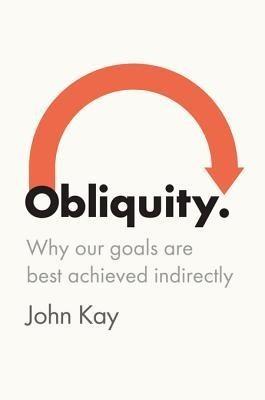
Obliquity: Why Our Goals Are Best Achieved Indirectly
by
John Kay
Published 30 Apr 2010
A common mistake—often made with Dawkins’s even more famous metaphor, the selfish gene3—is to treat the metaphor literally. Metaphors and models only illustrate, and illustrate imperfectly. Genes are not in fact selfish—the idea of attributing conscious motivation to a gene is absurd. The claim made for the selfish gene is that evolution without design achieves results similar to those to that an omniscient advocate of the interests of the gene might have achieved. And results better than those that a normally competent advocate of the interests of the gene would have achieved. In tropical waters around the world, cleaner fish remove parasites from the mouths of predators.
…
X, p. 186. 6 Joseph Conrad, Typhoon and Other Stories (London: William Heinemann, 1903), chapter 2. 7 Ibid. Chapter 16: The Blind Watchmaker—How Adaptation Is Smarter Than We Are 1 William Paley, Natural Theology (1802; reprint, Weybridge, UK: Hamilton, n.d.), chapter 1. 2 Richard Dawkins, The Blind Watchmaker (Harlow, UK: Longman Scientific & Technical, 1986). 3 Richard Dawkins, The Selfish Gene (Oxford: Oxford University Press, 1989). 4 William H. Durham, Coevolution: Genes, Culture, and Human Diversity (Stanford, CA: Stanford University Press, 1991), chapter 5. Chapter 17: Bend It Like Beckham—How We Know More Than We Can Tell 1 Paul Brand and Philip Yancey, The Gift of Pain: Why We Hurt and What We Can Do About It (Grand Rapids, MI: Zondervan, 1997), p. 91. 2 Gary A.
…
Damasio, Antonio. Descartes’ Error: Emotion, Reason, and the Human Brain. New York: Quill, 2000. Darwin, Charles. The Autobiography of Charles Darwin. Edited by Nora Barlow. London: Collins, 1958. Dawkins, Richard. The Blind Watchmaker. Harlow, UK: Longman Scientific & Technical, 1986. Dawkins, Richard. The Selfish Gene. Oxford: Oxford University Press, 1989. Dickinson, Emily. Emily Dickinson. Edited by L. Dickey. New York: Dell, 1960. Dolnick, Edward. The Forger’s Spell: A True Story of Vermeer, Nazis, and the Greatest Art Hoax of the Twentieth Century. New York: HarperCollins, 2008. Dreyfus, Hubert L. What Computers Still Can’t Do.

Giving the Devil His Due: Reflections of a Scientific Humanist
by
Michael Shermer
Published 8 Apr 2020
Because Stein is a well-known economic conservative (and because I had just finished writing my book The Mind of the Market, a chapter of which compares Adam Smith’s “invisible hand” with Charles Darwin’s “natural selection”), I pointed out how the captains of industry in the late nineteenth and early twentieth centuries justified their beliefs in laissez-faire capitalism through the social Darwinism of “survival of the fittest corporations.” And, more recently, I noted that Enron’s CEO, Jeffrey Skilling, said his favorite book in Harvard Business School was Richard Dawkins’ The Selfish Gene (first published in 1976), a form of Darwinism that Skilling badly misinterpreted (“read by title only” in Dawkins’ apt phrase to describe those who misread the book). Scientific theorists cannot be held responsible for how their ideas are employed in the service of nonscientific agendas. Questioning Darwinism A final leitmotif running through Expelled is inscribed in chalk by Stein in repetitive lines on a classroom blackboard: “Do not question Darwinism.”
…
At the bottom of the pyramid the individual’s purposeful needs for survival and reproduction – food, drink, safety, and sex – are met through the family, extended family, and community. Moving up the pyramid, psycho-social needs – security, bonding, socialization, affiliation, acceptance, and affection – have evolved to aid and reinforce cooperation and altruism, traits that benefit both individuals and the group. Selfish genes drive kin altruism (the propensity to help those who are genetically related to us), and social relations fuel reciprocal altruism (if you’ll scratch my back, I’ll scratch yours); but to achieve species- and bio-altruism, we need to learn higher-order pro-social behavior. Achieving the upper levels of the pyramid requires social and political action.
…
You might also want to grow something on your body that will intimidate other members of your sex and to attract members of the opposite sex that is a proxy for your good genes, such as elaborate and colorful tail feathers if you are a peacock or a huge rack of antlers if you are a bull elk. In such a thought experiment – which comes from Richard Dawkins in his 1976 book The Selfish Gene – we can see that there are constant conflicts and trade-offs in evolution. Heavy armor plating may be good for defending against claws but slows you up for escaping fast predators. Colorful feathers may grant you higher status and attract females, but predators will see you hiding in the bushes.

Humankind: A Hopeful History
by
Rutger Bregman
Published 1 Jun 2020
In 1976, British biologist Richard Dawkins published his magnum opus on the instrumental role genes play in the evolution of life, tellingly titled The Selfish Gene. It’s a depressing read. Are you counting on nature to make the world a better place? Then Dawkins is clear: Don’t hold your breath. ‘Let us try to teach generosity and altruism,’ he writes, ‘because we are born selfish.’3 Forty years after its publication, the British public voted The Selfish Gene the most influential science book ever written.4 But countless readers felt dispirited upon reaching the end. ‘It presents an appallingly pessimistic view of human nature […] yet I cannot present any arguments to refute its point of view,’ wrote one.
…
About war, war, and, to spice things up a little, war. And if, for once, there is no war, then we’re in what historians call the interbellum: between wars. In science, too, the view that humanity is bad has reigned for decades. Look up books on human nature and you’ll find titles like Demonic Males, The Selfish Gene and The Murderer Next Door. Biologists long assumed the gloomiest theory of evolution, where even if an animal appeared to do something kind, it was framed as selfish. Familial affection? Nepotism! Monkey splits a banana? Exploited by a freeloader!31 As one American biologist mocked, ‘What passes for co-operation turns out to be a mixture of opportunism and exploitation. […] Scratch an “altruist” and watch a “hypocrite” bleed.’32 And in economics?
…
This notion may make for a thrilling read or documentary, but there’s not a shred of archaeology to support it. The more plausible theory is that we humans were better able to cope with the harsh climatic conditions of the last ice age (115,000–15,000 years ago) because we’d developed the ability to work together. And that depressing book The Selfish Gene? It fit right in with 1970s-era thinking – a time hailed as the ‘Me Decade’ by the New York magazine. In the late 1990s, an avid Richard Dawkins fan decided to put his take on Dawkins ideas into practice. Rather than making him feel pessimistic, the book inspired CEO Jeffrey Skilling to run an entire corporation – the energy giant Enron – on the mechanism of greed.

Social Capital and Civil Society
by
Francis Fukuyama
Published 1 Mar 2000
That is, given the same opportunities to commit murder, murder of nongenetically related spouses or steprelatives is far more common than the murder of children by parents, brothers by brothers, etc.28 linking individual genes or gene segments to inherited traits like breast cancer or obesity. Given the rapidity of progress in the area, we can only expect more empirical evidence to appear in coming years explicating the biological origins of a good deal of what we have assumed to be social behavior. 27Richard Dawkins, The Selfish Gene (New York: Oxford University Press, 1989). 28Martin Daly and Margo Wilson, Homicide (New York: Aldine de Gruyter, 1988), p p . 17–24. [FUKUYAMA] Social Capital 405 There is also evidence that the norm of reciprocity -that is, the willingness to return a favor for a favor or a harm for a harm- is not, as game theorists would expect, something that arises through the iterative playing of games by individual agents, but rather is hard-wired into the genetic code not only of human beings but of other animal species as well.29 While the norm of reciprocity may well have originated historically in a game-theoretic manner and serves the narrow interests of the individual organism, it is practiced by each individual not as a result of individual learning in each present period, nor out of rules inherited through purely cultural mechanisms, but through genetic inheritance.
…
From a neo-Darwinian point of view, the interest of an individual organism is to get its genes passed on into the next (and successive) generations. For females, reproductive strategy involves commanding sufficient economic resources to protect themselves and their offspring until the latter are able to take care of themselves. Males, by contrast, require a 29On this point, see Dawkins, T h e Selfish Gene, pp. 166-88; Wright, T h e Moral Animal, pp. 189-209. 30 Lionel Tiger, Men i n Groups (New York: Random House, 1969). 406 The Tanner Lectures on Human Values far lower level of parental investment to get their genes into the next generation, and their strategy therefore involves spreading their genes as widely as possible.
…
Reciprocal altruism may have evolved as a genetic characteristic through a game theo6 Fieid notes that for game theory to operate, the players have to agree to play by some set of preexisting rules: Alexander James Field, “Microeconomics, Norms, and Rationality,” Economic Development and Cultural Change 32 (July 1984) : 683-71 1. 7 This is, of course, the broad point made by Richard Dawkins in T h e Selfish Gene (New York: Oxford University Press, 1989). 460 Tanner Lectures on Human Values retic process, since reciprocity turns out to be in the individual organism’s selfish interest. But individuals do not necessarily arrive at reciprocity through use of their individual reason; their rational self-interest appears to receive a powerful boost from an instinctive drive in that direction.

Other Pandemic: How QAnon Contaminated the World
by
James Ball
Published 19 Jul 2023
I should probably confess: I have this as a framed poster in my flat. But you can see it online at www.greatawakeningmap.co. 3. At www.greatawakeningmap.co/downloads. 4. ‘Pepe Silvia’, https://knowyourmeme.com, accessed 17 October 2022. 5. Matt Ridley, ‘In Retrospect: The Selfish Gene’, www.nature.com, 27 January 2016. 6. Richard Dawkins, The Selfish Gene (Oxford, 1976), p. 245. 7. Ibid., pp. 248–49. 8. Ibid., p. 251, emphasis original 9. ‘Global Internet usage’, https://en.wikipedia.org, accessed 18 October 2022. 10. Unless otherwise footnoted, everything from Phillips is from our interview. 11. The Church of Scientology disputes this claim, but it is a frequent one made by those who have left the church: Ryan Buxton et al., ‘Inside Scientology’s Auditing Process: How Members Are Pushed To Reveal Their Private “Sexual Indiscretions” ’, www.huffingtonpost.co.uk, 30 March 2015. 12.
…
Perhaps the most startling and fundamental idea offered by Dawkins – particularly coming in a book almost entirely devoted to the argument that genes are (or at least have been) the fundamental unit of evolution –is that memes may be about to supplant genes as the primary unit of evolution. ‘Selfish’ memes instead of ‘selfish’ genes could come to shape the future of the planet: For more than three thousand million years, DNA has been the only replicator worth talking about in the world. But it does not necessarily hold these monopoly rights for all time. Whenever conditions arise in which a new kind of replicator can make copies of itself, the new replicator will tend to take over, and start a new kind of evolution of their own.
…
In that sense, a meme is as meaningful an entity as a gene – and by Dawkins’ reasoning, the meme is set to outperform the gene by quite some margin. And it’s our minds – our brains in Dawkins’ 1976 book, but perhaps the online spaces we have built in our modern reality – that are to memes what primordial soup was to genes. The Selfish Gene was written in 1976, though it was somewhat revised and updated in 1989 – the same year Tim Berners-Lee first trialled what became the World Wide Web. All of Dawkins’ thoughts and analysis on memes predated the internet as a popular domestic phenomenon – in 1976 there were fewer than 100 devices worldwide connected to ARPANET (the network that became the internet), and by 1989 it was still barely over 100,000.9 If memes were arguably taking over from genes in the 1970s, what on earth does that mean in the 2020s?

The Greatest Show on Earth: The Evidence for Evolution
by
Richard Dawkins
Published 21 Sep 2009
Also by Richard Dawkins The Selfish Gene The Extended Phenotype The Blind Watchmaker River Out of Eden Climbing Mount Improbable Unweaving the Rainbow A Devil’s Chaplain The Ancestor’s Tale The God Delusion THE GREATEST SHOW ON EARTH THE EVIDENCE FOR EVOLUTION RICHARD DAWKINS For Josh Timonen FREE PRESS A Division of Simon & Schuster, Inc. 1230 Avenue of the Americas New York, NY 10020 Copyright © 2009 by Richard Dawkins Originally published in Great Britain in 2009 by Bantam Press an imprint of Transworld Publishers All rights reserved, including the right to reproduce this book or portions thereof in any form whatsoever.
…
This book is my personal summary of the evidence that the ‘theory’ of evolution is actually a fact – as incontrovertible a fact as any in science. It is not the first book I have written about evolution, and I need to explain what’s different about it. It could be described as my missing link. The Selfish Gene and The Extended Phenotype offered an unfamiliar vision of the familiar theory of natural selection, but they didn’t discuss the evidence for evolution itself. My next three books, in their different ways, sought to identify, and dissolve, the main barriers to understanding. These books, The Blind Watchmaker, River Out of Eden and (my favourite of the three) Climbing Mount Improbable, answered questions like, ‘What is the use of half an eye?’
…
Sirenians have sometimes been blamed for the mermaid legend. * Larvae destined to become queens are fed special elixirs secreted by glands in the nurse workers’ heads. It is very important that the difference between queens and workers is environmentally, not genetically, determined. I have explained why at length in The Selfish Gene. * Yes, troglobite, not troglodyte, which means something less extreme. * This is especially true of mutations of large effect. Think of a delicate machine, like a radio or a computer. A large mutation is equivalent to kicking it with a hobnailed boot, or cutting a wire at random and reconnecting it in a different place.

Lifespan: Why We Age—and Why We Don't Have To
by
David A. Sinclair
and
Matthew D. Laplante
Published 9 Sep 2019
In the 1950s, the concept of “group selection” in evolution was going out of style, prompting three evolutionary biologists, J. B. S. Haldane, Peter B. Medawar, and George C. Williams, to propose some important ideas about why we age. When it comes to longevity, they agreed, individuals look out for themselves. Driven by their selfish genes, they press on and try to breed for as long and as fast as they can, so long as it doesn’t kill them. (In some cases, however, they press on too much, as my great-grandfather Miklós Vitéz, a Hungarian screenwriter, proved to his bride forty-five years his junior on their wedding night.) If our genes don’t ever want to die, why don’t we live forever?
…
If our genes don’t ever want to die, why don’t we live forever? The trio of biologists argued that we experience aging because the forces of natural selection required to build a robust body may be strong when we are 18 but decline rapidly once we hit 40 because by then we’ve likely replicated our selfish genes in sufficient measure to ensure their survival. Eventually, the forces of natural selection hit zero. The genes get to move on. We don’t. Medawar, who had a penchant for verbiage, expounded on a nuanced theory called “antagonistic pleiotropy.” Put simply, it says genes that help us reproduce when we are young don’t just become less helpful as we age, they can actually come back to bite us when we are old.
…
Kirkwood’s hypothesis explains why a mouse lives 3 years while some birds can live to 100.5 It also quite elegantly explains why the American chameleon lizard, Anolis carolinensis, is evolving a longer lifespan as we speak, having found itself a few decades ago on remote Japanese islands without predators.6 These theories fit with observations and are generally accepted. Individuals don’t live forever because natural selection doesn’t select for immortality in a world where an existing body plan works perfectly well to pass along a body’s selfish genes. And because all species are resource limited, they have evolved to allocate the available energy either to reproduction or to longevity, but not to both. That was as true for M. superstes as it was and still is for all species that have ever lived on this planet. All, that is, except one: Homo sapiens.
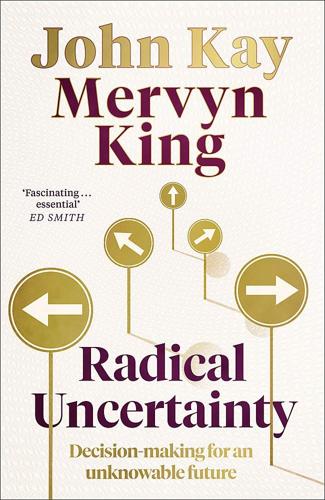
Radical Uncertainty: Decision-Making for an Unknowable Future
by
Mervyn King
and
John Kay
Published 5 Mar 2020
Richard Dawkins’ inspired metaphor of the ‘selfish gene’ thrust such thinking into popular consciousness. It is the gene, not the individual, which is selfish in Dawkins’ metaphor, and the difference is important. Obviously, the gene has no consciousness or direction, but evolution leads to the results which would be observed if the gene were able to promote itself selfishly. ‘The selfish gene’ is an illuminating ‘as if’ hypothesis. 2 Because we share genes with our offspring and our relatives, kin selection prompts us to help them, even at a cost to ourselves. Hamilton set out the mathematics of the selfish gene and suggested in a tongue-in-cheek exposition of the implications of his theory that: ‘we expect to find that no one is prepared to sacrifice his life for any single person but that everyone will sacrifice it when he can thereby save more than two brothers, or four half-brothers, or eight first cousins’. 3 But as kinship becomes more distant, genetic relatives will be less and less supportive of each other.
…
If the biological mechanism of genetic selection were the only mechanism of evolution, then evolutionary theory would seem to provide some support for economic models based on populations of rational individuals independently maximising their own utility. It seems only a short stretch from the selfish gene to the selfish individual. And from the beginnings of evolutionary thinking it was obvious that the idea had many applications beyond the development of biological variety which was the subject of Charles Darwin’s book On the Origin of Species . The social philosopher Herbert Spencer, now almost forgotten, was a leading intellectual figure in the late nineteenth century.
…
Once we acknowledge that individuals operate within organisations, which range from Lehman Brothers to closed monasteries devoted to the worship of God, then we must also acknowledge that the measure of ‘fitness’ which human evolution favours is much more broadly defined than success in procreation. We are human animals, distinguished from other species by our capacity for communication and language, and that social interaction changes the bleak picture of individualistic behaviour implied by simple interpretations of the selfish gene. Children of English-speaking parents tend to speak English, and the children of French-speaking parents French, for reasons that have nothing to do with their DNA. The economic advantages of cooperating in groups are so large that traits which are conducive to success in group interaction – such as the ‘language instinct’, or an inclination to be helpful to other members of the group – are favoured by both genetics and culture.

Epic Win for Anonymous: How 4chan's Army Conquered the Web
by
Cole Stryker
Published 14 Jun 2011
If a meme fails to spread, it’s dead. In the notes in Dawkins’s 1989 reprint of The Selfish Gene, he admits that the word meme had become something of a strong meme in itself. In fact, his brief discussion of memes was only meant to serve a larger purpose: to establish that complex ecological systems arise from entities that seek to replicate. I believe that, given the right conditions, replicators automatically band together to create systems, or machines, that carry them around and work to favour their continued replication. The first ten chapters of The Selfish Gene had concentrated exclusively on one kind of replicator, the gene.
…
Just as genes propagate themselves in the gene pool by leaping from body to body via sperms or eggs, so memes propagate themselves in the meme pool by leaping from brain to brain via a process which, in the broad sense, can be called imitation. This is an excerpt from Dawkins’s groundbreaking book, The Selfish Gene, published in 1976. Dawkins didn’t originally come up with the idea of a meme, but he was the first one to use the word, and thus to inadvertently kick-start a new branch of anthropology called memetics, a catchall term for the study of human social evolution as opposed to biological evolution (i.e., genetics).
…
“Phreaks, Hackers, and Trolls and the Politics of Transgression and Spectacle.” In The Social Media Reader, ed. Michael Mandiberg. New York: NYU Press, forthcoming. Coleman, Gabriella. Interview with the author. May 14, 2011. Curtis, Drew. Interview with the author. May 4, 2011. Dawkins, Richard. The Selfish Gene. Oxford: Oxford University Press, 1976. Dawkins, Richard. Interview with the National Public Radio. August 30, 2010. http://www.npr.org/templates/transcript/transcript.php?storyId=129535048 DeGrippo, Sherrod. Interview with the author. April 22, 2011. Denton, Nick. “The Cruise Indoctrination Video Scientology Tried To Suppress.”

The Sociopath Next Door
by
Martha Stout
Published 8 Feb 2005
If he behaves generously and protectively toward his blood relatives, their enhanced survival and reproduction rate will increase the numbers of his own genes in future generations, since his relatives and he have many genes in common. Of course, the expression “selfish gene” is not intended to imply that DNA is a thinking, feeling thing with its own desires. Dawkins uses “selfish gene” as a metaphor. He means that the characteristics of a species are determined by genes that cause individuals to think, feel, and behave in ways that maximize the existence of those same genes in the gene pool, regardless of the effects of those thoughts, feelings, and behaviors on the individuals themselves.
…
In other words, “survival of the fittest” meant survival of the fittest genes (or rather, the information coded in them), not necessarily the survival of the fittest individual animals or groups. For Williams, individuals and groups were there only to serve as temporary environments for genetic information. And ten years later, in 1976, in a still-popular book called The Selfish Gene, Richard Dawkins extended Williams's gene-centered theory and biologist W. D. Hamilton's notion of kin selection, which paradoxically reexplains the evolution of unselfish behaviors at the level of the individual by invoking the idea of “selfishness” at the level of the gene. This is a rather strange notion, and deserves some explanation.
…
Tyack, eds, Animal Social Complexity: Intelligence, Culture, and Individualized Societies (Cambridge, MA: Harvard University Press, 2003). In 1966, George C. Williams: G. Williams, Adaptation and Natural Selection (Princeton, NJ: Princeton University Press, 1966). And ten years later, in 1976: R. Dawkins, The Selfish Gene (Oxford: Oxford University Press, 1976). biologist W. D. Hamilton's notion: See W. Hamilton, “Selection of Selfish and Altruistic Behavior,” in Man and Beast: Comparative Social Behavior, eds. J. Eisenberg and W. Dillon (Washington, D.C.: Smithsonian Institution Press, 1971). Naturalist Gould reexamines the evidence from paleontology: S.

The Red Queen: Sex and the Evolution of Human Nature
by
Matt Ridley
Published 14 Aug 1993
If this happens, one of the sperm fuses with the egg’s nucleus in the normal way; the spare sperm hang around and begin dividing as the egg divides. When the creature matures, the parasitic sperm cells eat out its gonads and replace them with themselves. So the insect produces sperm or eggs that are barely related to itself, an astonishing piece of genetic cuckoldry.12 The greatest opportunity for selfish genes comes during sex. Most animals and plants are diploid: their genes come in pairs. But diploidy is an uneasy partnership between two sets of genes and when partnerships end, things often get acrimonious. The partnerships end with sex. During meiosis, the central genetic procedure of sex, the paired genes are separated to make haploid sperm and eggs.
…
For, to recapitulate, you have 23 pairs of chromosomes, 23 from your father and 23 from your mother. When you make an egg or a sperm you will pick one from each pair to give a total of 23 chromosomes. You could give it all the ones you inherited from your mother or all the ones from your father, or more likely a mixture of the two. Now a selfish gene that loaded the dice so that it stood a better than fifty-fifty chance of getting into the embryo might do rather well. Suppose it simply killed off its opposite number, the one that came from the other grandparent of the embryo. Such a gene exists. On chromosome two of a certain kind of fruit fly there is a gene called ‘segregation distorter’, which simply kills all sperm containing the other copy of chromosome two.
…
Greenfield, Blackwell, Oxford, pp. 361–74 —1990, ‘The Mechanical Mind’, Annual Review of Neuroscience, 13:15–24 —(unpublished) ‘The Inevitability of Consciousness’, Chapter draft Basolo, A. L., 1990, ‘Female Preference Predates the Evolution of the Sword in Swordtail Fish’, Science, 250:808–10 Bateman, A. J., 1948, ‘Intrasexual Selection in Drosophila’, Heredity, 2:349–68 Beeman, R. W., Friesen, K. S. and Denell, R. E., 1992, ‘Maternal-effect Selfish Genes in Flour Beetles’, Science, 256:89–92 Bell, G., 1982, The Masterpiece of Nature, Croom Helm, London —1987, ‘Two Theories of Sex and Variation’, The Evolution of Sex and Its Consequences, ed. S. C. Stearns, Birkhauser, Basel, pp. 117–33 —1988, Sex and Death in Protozoa: The History of an Obsession, Cambridge University Press, Cambridge —and Burt, A., 1990, ‘B-chromosomes: Germ-line Parasites Which Induce Changes in Host Recombination’, Parasitology, 100:S19–S26 —and Maynard Smith, J., 1987, ‘Short-term Selection for Recombination among Mutually Antagonistic Species’, Nature, 328:66–8 Bell, Q., 1976, On Human Finery (second edition), Hogarth Press, London Bellis, M.
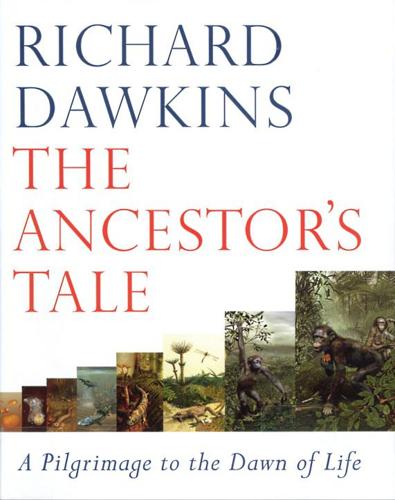
The Ancestor's Tale: A Pilgrimage to the Dawn of Evolution
by
Richard Dawkins
Published 1 Jan 2004
Such personification can also apply to genes: we are tempted to see genes as influencing individual bodies to behave in such a way as to increase the number of future copies of those same genes. Scientists who use such language, whether at the level of the individual or the gene, know very well that it is only a figure of speech. Genes are just DNA molecules. You'd have to be barking mad to think that 'selfish' genes really have deliberate intentions to survive! We can always translate back into respectable language: the world becomes full of those genes that have survived in the past. Because the world has a certain stability and doesn't change capriciously, the genes that have survived in the past tend to be the ones that are going to be good at surviving in the future.
…
And I am closer to some chimpanzees than to you (or to 'your' chimpanzees). Humans as a species, as well as humans as individuals, are temporary vessels containing a mix of genes from different sources. Individuals are temporary meeting points on the crisscrossing routes that genes take through history. This is a tree-based way to express the central message of The Selfish Gene, my first book. As I put it there, 'When we have served our purpose we are cast aside. But genes are denizens of geological time: genes are forever.' At the concluding banquet to a conference in America, I recited the same message in verse: Said 'Bodies a-plenty I've seen. You think you're so clever But I'll live for ever.
…
* Some people distinguish a second species, Ardipithecus kadabba. * There is a well-developed theory of reciprocal altruism in Darwinism, beginning with the pioneering work of Robert Trivers and continuing with the modelling of Robert Axelrod and others. Trading favours, with delayed repayment, really works. My own exposition of it is in The Selfish Gene, especially the second edition. * The American edition rounds off the Tennyson quotation: 'Dies the Swan.' RENDEZVOUS 1: CHIMPANZEES Between 5 and 7 million years ago, somewhere in Africa, we human pilgrims enjoy a momentous encounter. It is Rendezvous 1, our first meeting with pilgrims from another species.

The botany of desire: a plant's-eye view of the world
by
Michael Pollan
Published 27 May 2002
Whether or not such a plant or fungus did this for Plato himself is of course impossible to ascertain, and somehow impious even to speculate on. But one could do worse, surely, searching for the spring of a metaphysics as visionary and strange as Plato’s. • • • The Platonic cup and the Coleridgean imagination are both “memes,” to use a term coined by the British zoologist Richard Dawkins in his 1976 book, The Selfish Gene. A meme is simply a unit of memorable cultural information. It can be as small as a tune or a metaphor, as big as a philosophy or religious concept. Hell is a meme; so are the Pythagorean theorem, A Hard Day’s Night, the wheel, Hamlet, pragmatism, harmony, “Where’s the beef?,” and of course the notion of the meme itself.
…
But surely the shifts in perception and breaks in mental habit they provoke are among the methods, and models, we have of imaginatively transforming mental and cultural givens—for mutating our inherited memes. • • • At the risk of discrediting my own idea, I want to acknowledge that it owes a debt—how large I can’t say—to a psychoactive plant. The notion that drugs might function as cultural mutagens occurred to me while reading The Selfish Gene while high on marijuana, which may or may not be an advisable thing to do. But whatever its value, it’s at least a fresh idea (itself a kind of mutation of Dawkins’s meme idea), and I seriously doubt it would have occurred to me had I not smoked a little pot the evening I was reading Dawkins. (I wish I could say the same about the earlier speculation on Plato, but I’m afraid I was straight as a post for that one.)
…
Nabhan, Gary Paul. Enduring Seeds: Native American Agriculture and Wild Plant Conservation (San Francisco: North Point Press, 1989). On the wider subject of evolution and natural selection: Darwin, Charles. The Origin of Species, edited by J. W. Burrow (London: Penguin Books, 1968). Dawkins, Richard. The Selfish Gene (New York: Oxford University Press, 1976). Dennett, Daniel C. Darwin’s Dangerous Idea: Evolution and the Meanings of Life (New York: Simon & Schuster, 1995). Goodwin, Brian. How the Leopard Changed Its Spots: The Evolution of Complexity (New York: Charles Scribner’s Sons, 1994). Jones, Steve.
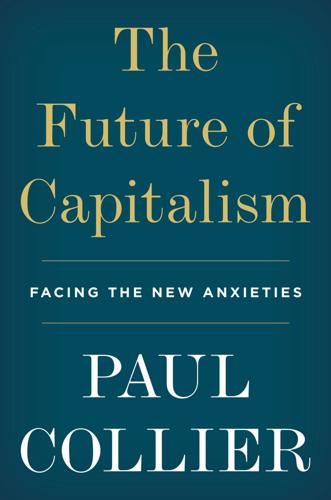
The Future of Capitalism: Facing the New Anxieties
by
Paul Collier
Published 4 Dec 2018
Why do we value loyalty, fairness and care, or indeed have any values at all? Evolution has been a brutal process of selection by advantageous traits, so selfish materialism looks to be what you needed: you can’t eat esteem and belonging, and values cramp your style. Economic man sounds superficially like an amplified echo of the selfish gene. Yet we know that this is wrong: the selfish gene does not produce the selfish man. For many thousands of years, humans could only survive by co-operating in a group: going it alone spelled death. Lacking the craving for belonging and esteem, economic man was too selfish to be allowed to remain in the group; he was banished.
…
Dedication for Sue diverging lives, converging anxieties Contents Cover Title Page Dedication Part One: Crisis 1: The New Anxieties Part Two: Restoring Ethics 2: The Foundations of Morality: From the Selfish Gene to the Ethical Group 3: The Ethical State 4: The Ethical Firm 5: The Ethical Family 6: The Ethical World Part Three: Restoring the Inclusive Society 7: The Geographic Divide: Booming Metropolis, Broken Cities 8: The Class Divide: Having it All, Falling Apart 9: The Global Divide: Winners, and the Left Behind Part Four: Restoring Inclusive Politics 10: Breaking the Extremes Acknowledgements Bibliography Notes Index Copyright About the Publisher Part One Crisis 1 The New Anxieties PASSION AND PRAGMATISM Deep rifts are tearing apart the fabric of our societies.
…
An identity of being ‘on the left’ has become a lazy way of feeling morally superior; an identity of being ‘on the right’ has become a lazy way of feeling ‘realistic’. You are about to explore the future of an ethical capitalism: welcome to the hard centre. Part Two Restoring Ethics 2 The Foundations of Morality: From the Selfish Gene to the Ethical Group Modern capitalism has the potential to lift us all to unprecedented prosperity, but it is morally bankrupt and on track for tragedy. Human beings need a sense of purpose, and capitalism is not providing it. Yet it could. The proper purpose of modern capitalism is to enable mass prosperity.
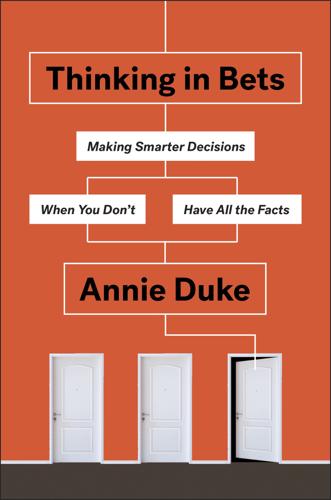
Thinking in Bets
by
Annie Duke
Published 6 Feb 2018
As evolutionary biologist Robert Trivers noted in his foreword to the original 1976 edition of Richard Dawkins’s The Selfish Gene, the evolution of self-deception is much more complicated than previously imagined. “Thus, the conventional view that natural selection favors nervous systems which produce ever more accurate images of the world must be a very naïve view of mental evolution.” Dawkins, in turn, considered Trivers, for his work, one of the heroes of his groundbreaking book, devoting four chapters of The Selfish Gene to developing Trivers’s ideas. * This is a systematic bias, not a guarantee that we always grab credit or always deflect blame.
…
Dawkins, Richard. The Greatest Show on Earth: The Evidence for Evolution. New York: Free Press, 2010. Dawkins, Richard, “Replicators and Vehicles.” In Current Problems in Sociobiology, edited by King’s College Sociobiology Group, 45–64. Cambridge: Cambridge University Press, 1982. Dawkins, Richard. The Selfish Gene. 40th anniv. ed. Oxford: Oxford Landmark Science, 2016. First published 1976 by Oxford University Press (Oxford). Ditto, Peter, Brittany Liu, Cory Clark, Sean Wojcik, Eric Chen, Rebecca Grady, and Joanne Zinger. “At Least Bias Is Bipartisan: A Meta-Analytic Comparison of Partisan Bias in Liberals and Conservatives.”
…
Edward, 219 sales, 167, 215–16 Scalia, Justice, 143, 144 scenario planning, 209–18 schadenfreude, 102–3 Schwarzenegger, Arnold, 213 science, 67–68, 72, 147, 149–51, 154–55 bias and, 166 peer review and, 72, 147–50 sharing in, 155–56 Seattle Seahawks, 5–7, 22, 46, 48, 216–18 Seattle Times, 6 Seed, Huckleberry, 244n Seidel, Erik, 3, 123–24, 130–31, 244n, 248n Seifert, Colleen, 55 Seinfeld, Jerry, 180–87 self-compassion, 206 self-expression, 156 self-image and self-deception, 89, 123 Selfish Gene, The (Dawkins), 92n self-narratives, see narratives self-serving bias, 89–96, 102, 103, 108, 110–12, 115, 132, 136, 194 September 11 attacks, 140 settlements, negotiated, 40, 202 Shepperd, James, 95n Shermer, Michael, 11–12 shooting the messenger or message, 160–64, 205 Siemens, 150 Silver, Nate, 32–33, 209–10, 230, 245n skepticism, 154, 155, 169–71, 206, 224 skill, 7, 9, 48–49, 88–91, 94–96, 103, 111, 113, 121, 122 luck vs., 82–85 Skinner, B.

Prosperity Without Growth: Foundations for the Economy of Tomorrow
by
Tim Jackson
Published 8 Dec 2016
Just as the self-interest of economic agents is supposed to lead ‘as if by an invisible hand’ to the most favourable outcome for society, so the self-interest of individuals is supposed to lead through ‘the survival of the fittest’ to the most favourable outcome for species. Economics has continued to ‘borrow’ credibility for the centrality of self-interest from the theory of evolution ever since. But this credibility is critically, perhaps fatally, flawed.34 Beyond the selfish gene Evolutionary explanations of behaviour are by no means confined to the idea that human beings are inherently selfish. The existence of genuinely altruistic behaviour is a fact of biology. Darwin himself at first believed this fact was ‘insuperable, and actually fatal to my whole theory’. His own attempt to solve the problem was to suggest that selection operates not only on individuals but also on families or groups, a proposal that has never been definitively settled.35 It was to be almost another century before the ‘problem of altruism’ achieved a more satisfactory solution.
…
During the following decades, this foundation was strengthened and broadened, first through the work of evolutionary biologists and later through the emergence of a sophisticated neuroscience of human behaviour.37 These ideas might have remained within the confines of biology, had it not been for the publication in the mid-1970s of two groundbreaking popular books. In 1975, the biologist Edward Wilson published a landmark volume on Sociobiology, a new science of human behaviour. It was grounded solidly in the emerging evolutionary insights into human behaviour. A year later, a young Oxford scientist named Richard Dawkins published a book called The Selfish Gene in which he pursued the implications of Hamilton’s insight that the fundamental unit of evolutionary selection is the gene. Together these two books brought the new evolutionary theories about human behaviour to a wide and diverse audience. They caused a furore of interest, and not a little controversy.38 Some of the controversy arose from Dawkins’ clever and provocative but potentially misleading title.
…
The Autobiography of Charles Darwin and Selected Letters, ed. Francis Darwin, reprinted 1958. New York: Dover. Davidson, Richard and Sharon Begley 2012. The Emotional Life of Your Brain: How Its Unique Patterns Affect the Way You Think, Feel, and Live – and How You Can Change Them. London: Penguin. Dawkins, Richard 1976. The Selfish Gene. Oxford and New York: Oxford University Press. DB 2008. Economic Stimulus: The Case for ‘Green’ Infrastructure, Energy Security and ‘Green’ Jobs. New York: Deutsche Bank. de Botton, Alain 2004. Status Anxiety. Oxford: Oxford University Press. de Groot, Rudolf, Luke Brander, Sander van der Ploega, Robert Costanza, Florence Bernardd, Leon Braate, et al. 2012.
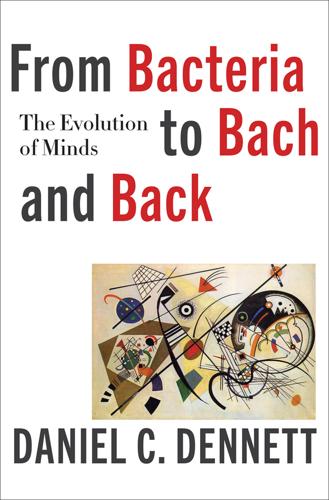
From Bacteria to Bach and Back: The Evolution of Minds
by
Daniel C. Dennett
Published 7 Feb 2017
It is still in its infancy, still drifting clumsily in its primeval soup, but already it is achieving evolutionary change at a rate which leaves the old gene panting far behind.… The new soup is the soup of human culture. We need a name for the new replicator, a noun which conveys the idea of a unit of cultural transmission, or a unit of imitation. —Richard Dawkins, The Selfish Gene I am convinced that comparisons between biological evolution and human cultural or technological change have done vastly more harm than good—and examples abound of this most common of intellectual traps.… Biological evolution is powered by natural selection, cultural evolution by a different set of principles that I understand but dimly.
…
.… Biological evolution is powered by natural selection, cultural evolution by a different set of principles that I understand but dimly. —Stephen Jay Gould, Bully for Brontosaurus Words exist in the manifest image, but what are they? Dogs are a kind of mammal or a kind of pet. What are words a kind of? They’re a kind of meme, a term that Richard Dawkins coined in his book The Selfish Gene and is defined in the epigraph. Which kind of meme are words? The kind that can be pronounced. In addition to words, there are other lexical items (Jackendoff 2002) such as irregular plurals and exceptions to the “rules” of a language that also have to be independently stored in memory. What is transmitted from other speakers to a novice speaker who picks up the irregular plural of child, for instance, is a lexical item.
…
See, for instance, Whiten and Byrne (1988) Machiavellian Intelligence and Machiavellian Intelligence, II: Extensions and Evaluations (1997), as well as more recent work by Tomasello, Call, Povinelli, and many others. In Kinds of Minds 1996, I discussed the distinction between having beliefs about beliefs and thinking about thinking, and reviewed some of this literature. See also my discussion in “The Selfish Gene as a Philosophical Essay” (2006b). 277the design of the LAD by natural selection. In “Passing the Buck to Biology” (BBS, 1980) I offered what I thought was a friendly amendment to Chomsky’s Target Article and was astonished by his intransigent reply. I had thought the whole point of the LAD was to claim that Darwinian, rather than Skinnerian, or Popperian, or Gregorian R&D was mainly responsible for designing grammar, but I was mistaken.
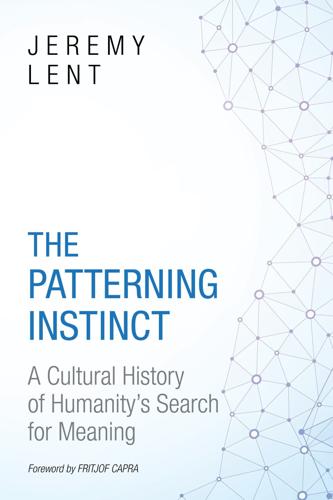
The Patterning Instinct: A Cultural History of Humanity's Search for Meaning
by
Jeremy Lent
Published 22 May 2017
You can get a feeling for the power of mimetic expression when you think of our own nonverbal forms of expression: prayer rituals; dancing; chanting and cheering in a sports stadium; expressions of contempt or praise, intimacy or hostility. Mimetic culture, Donald notes, is so all-encompassing that it “underlies all modern cultures and forms the most basic medium of human communication.”8 Social Brain (Selfish Gene) As anyone knows who has misread nonverbal cues in a social situation, mimetic culture is far from straightforward. In many ways, it's more nuanced and complex than spoken language. In early hominid societies, as the complexity of social interaction became more pronounced, the most successful in passing on their genes to future generations were those who navigated skillfully through the maze of mimetic signals, understanding the needs of others and conveying their own needs effectively.
…
In a much-cited paper, he described what he called “reciprocal altruism” as an ancient evolutionary strategy that could be seen in the behavior of fish and birds, and he interpreted human altruism in the same way. “Under certain circumstances,” he wrote, “natural selection favors these altruistic behaviors because in the long run they benefit the organism performing them.”13 This approach is consistent with what's become known as the “selfish gene” interpretation of evolution, as popularized by biologist Richard Dawkins. In this view, all evolution can be explained by the “selfish” drive of our genes to replicate themselves. And those special human virtues we value so highly are no exception. “Let us try to teach generosity and altruism,” Dawkins suggests, “because we are born selfish.”
…
The geopolitical history of the twentieth century seems to have borne out this philosophy: communism failed, we are told, because it was founded on an unrealistic view of human nature, whereas capitalism succeeded because it's based on harnessing the selfish nature of each individual for the ultimate good of society.15 A powerful story, indeed, but one that has been shown in recent decades to be erroneous at each level of its narration. While the idea of the “selfish gene” still holds currency in the popular imagination, it has been extensively discredited as a simplistic interpretation of evolution. In its place, theorists offer a view of evolution as a series of complex, interlocking systems, in which the gene, organism, community, species, and environment all interact with each other in a variety of ways over different time frames.
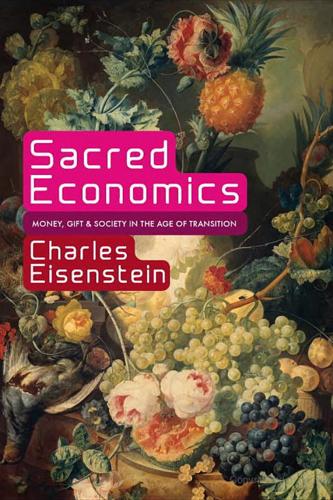
Sacred Economics: Money, Gift, and Society in the Age of Transition
by
Charles Eisenstein
Published 11 Jul 2011
That we are indeed here on earth to do something is essentially a religious concept, for conventional biology teaches that we have evolved to be able to survive, that any effort toward something outside of survival and reproduction goes against our genetic programming. However, one can make a cogent neo-Lamarckian case that the view of biology as consisting of myriad discrete, separate competing selves—organisms or “selfish genes”—is more a projection of our own present-day culture than it is an accurate understanding of nature.13 There are other ways of understanding nature that, while not ignoring its obvious competition, give primacy to cooperation, symbiosis, and the merging of organisms into larger wholes. This new understanding is actually quite ancient, echoing the indigenous understanding of nature as a web of gifts.
…
To think anyone could be healthy when her family, her village, or indeed the land, the water, or the planet were not, would be as absurd as saying, “I’ve got a fatal liver disease, but that’s just my liver—I am healthy!” Just as my sense of self includes my liver, so theirs included their social and natural community. The modern self, in contrast, is a discrete and separate subject in a universe that is Other. This self is the Economic Man of Adam Smith; it is the embodied soul of religion; it is the selfish gene of biology. It underlies the converging crises of our time, which are all variations on the theme of separation—separation from nature, from community, from lost parts of ourselves. It underlies all the usual culprits blamed for the ongoing destruction of ecology and polity, such as human greed or capitalism.
…
The view of nature as a vast competitive arena, a Darwinian struggle for survival among discrete competing organisms, reverberates throughout economic theory. In biology this paradigm has come under increasing challenge, but its economic translation still reigns supreme among most professional economists and policymakers. Just as Darwinian “selfish genes” are supposed to maximize their reproductive self-interest, so does Adam Smith’s “economic man” seek to maximize economic self-interest. This is a core assumption of economics instrumental in formulating the laws of supply and demand. In the last two decades, a momentous paradigm shift has emerged in biology that emphasizes cooperation, symbiosis, and homeostatic maintenance of wholes larger than the individual organism.

They Have a Word for It A Lighthearted Lexicon of Untranslatable Words & Phrases-Sarabande Books (2000)
by
Howard Rheingold
Published 10 Mar 2020
And this isn't just a way of talking-the meme for, say, 'belief in life after death' is actually realized physically, millions of times over, as a structure in the nervous systems of individual men the world over." Richard Dawkins, The Selfish Gene ~emes are what this book is all about: words that act like viruses, gestating in the primordial syntactic soup of one language before invading other linguistic communities, finding semantic niches, and propagating themselves from mind to THEY HAVE A WORD FOR IT mind until they have colonized an entire culture. The word was popularized by evolutionary biologist Richard Dawkins in the final chapter of his book The Selfish Gene. The premise of the book was startling enough-that humans and all other biological organisms are merely vehicles for transporting and propagating various genes, which compete with one another for representation in future populations by lending evolutionary advantages to the organisms that carry them.
…
Danielou, Alain. Shiva and Dionysus: The Religion of Nature and Eros, translated by K. F. Hurry. New York: Inner Traditions International, Ltd., 1982. David-Neel, Alexandra, and Lama Yongden. The Secret Oral Teachings in Tibetan Buddhist Sects. San Francisco: City Lights Books, 1967. Dawkins, Richard. The Selfish Gene. London: Oxford University Press, 1975. Draeger, Donn F. The Martial Arts and Ways ofJapan, Vol. 1, Classiral Bujutsu. New York and Tokyo: Weatherhill, 1973. Echols,John M., and Hassan Shadily. An Indonesian-English Dictionary. Ithaca, NY: Cornell University Press, 1961. Eco, Umberto. Travels in Hyperreality.

Spite: The Upside of Your Dark Side
by
Simon McCarthy-Jones
Published 12 Apr 2021
Property is not the only collateral damage caused by spousal spite. Children can get caught in their parents’ spite when they are used as weapons in vindictive spousal battles.37 A parent may seek custody of a child simply to spite their partner.38 Unsurprisingly, this can damage the child’s development.39 Spousal spite can even lead to infanticide. In The Selfish Gene, the biologist Richard Dawkins mentions spite in the context of a hypothetical woman abandoned by her husband. “It is no comfort to her,” writes Dawkins, “that the child contains half the male’s genes too, and that she could spite him by abandoning it. There is no point in spite for its own sake.”40 Yet some parents clearly find a point in such actions because Medea is not just a myth.
…
Johnston, “Parental Alignments and Rejection: An Empirical Study of Alienation in Children of Divorce,” Journal of the American Academy of Psychiatry and the Law Online 31, no. 2 (2003): 158–170. 38. Scott, “Pluralism, Parental Preference and Child Custody.” 39. A. J. L. Baker, “The Long-Term Effects of Parental Alienation on Adult Children: A Qualitative Research Study,” American Journal of Family Therapy 33, no. 4 (2005): 289–302. 40. R. Dawkins, The Selfish Gene, 30th anniv. ed. (Oxford, UK: Oxford University Press, 2006), 148. 41. See Shanabarger v. State, 798 N.E.2d 210 (Ind. Ct. App. 2003), https://law.justia.com/cases/indiana/court-of-appeals/2003/10270302-jgb.html; T. Roche, “A Cold Dose of Vengeance,” Time, July 4, 1999, http://content.time.com/time/magazine/article/0,9171,27683,00.html; R.
…
Forber, “The Evolutionary Dynamics of Spite in Finite Populations,” Evolution: International Journal of Organic Evolution 67, no. 3 (2013): 698–707; A. Gardner and S. A. West, “Spite and the Scale of Competition,” Journal of Evolutionary Biology 17, no. 6 (2004): 1195–1203. 7. L. Keller and K. G. Ross, “Selfish Genes: A Green Beard in the Red Fire Ant,” Nature 394, no. 6693 (1998): 573. 8. The question that probably occurs to you is why version B of the gene isn’t completely destroyed, leaving only version A in the population. The answer is that if you have a particularly strong version A, you die early. The low probability of such counterpressure existing probably explains why greenbeard genes are quite rare, with most being pushed into a single version over time that is possessed by all members of a species. 9.
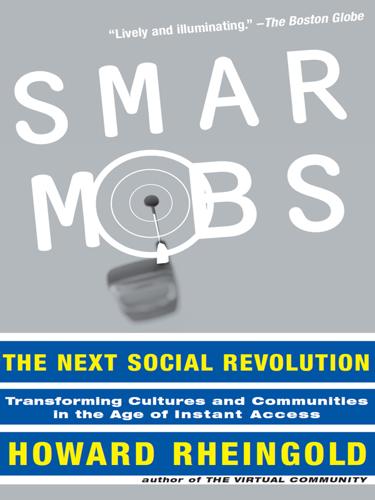
Smart Mobs: The Next Social Revolution
by
Howard Rheingold
Published 24 Dec 2011
In 1964, social insect specialist William Hamilton came up with an answer now known as “kin selection”: Because bees are sisters (in fact, bees share more genes than sisters do), saving the life of several hivemates at the cost of one’s own is a net gain in the number of the same genes transmitted to future generations.25 The most radical interpretation of kin selection was popularized by Richard Dawkins’s book The Selfish Gene in a startling formulation: “We are survival machines . . . robot vehicles blindly programmed to preserve the selfish molecules known as genes.”26 The difference between predisposition and predestination is outside the scope of this book, but I recommend contemplating another of Hobbes’s statements in regard to the behavior of insects versus that of humans: “The agreement of these creatures is natural; that of men is by covenant only, which is artificial; and therefore it is no wonder if there be somewhat else required.”27 The “somewhat else required” to achieve human cooperative behavior is as important as evolutionary influences and is the focus of its own discipline.
…
Strategies based on reciprocity can survive against a variety of strategies, and “cooperation, once established on the basis of reciprocity, can protect itself from invasion by less cooperative strategies. Thus, the gear wheels of social evolution have a ratchet.”39 Axelrod, a political scientist at the University of Michigan, wasn’t a biologist, so he called “selfish gene” biologist Richard Dawkins in England, who told him to speak to William Hamilton, discoverer of kin selection in insects, who, unknown to Axelrod until then, was also at the University of Michigan. Hamilton recalled a Harvard graduate student, Robert Trivers, who had presented evidence for reciprocity as the mechanism that enables self-interested individuals to cooperate.40 The “shadow of the future” enabled individuals to do favors for others, who would do favors for them in the future.
…
Williams, Evolution and Ethics: T. H. Huxley’s Evolution and Ethics with New Essays on Its Victorian and Sociobiological Context (Princeton: Princeton University Press, 1989). 25. W. D. Hamilton, “The Genetical Evolution of Social Behavior,” Journal of Theoretical Biology 7 (1964): 152. 26. Richard Dawkins, The Selfish Gene (Oxford: Oxford University Press, 1976). 27. Hobbes, Leviathan, 95. 28. John von Neumann and Oskar Morgenstern, Theory of Games and Economic Behavior (Princeton: Princeton University Press, 1944). 29. William Poundstone, Prisoner’s Dilemma: John von Neumann, Game Theory, and the Puzzle of the Bomb (New York: Doubleday, 1992). 30.
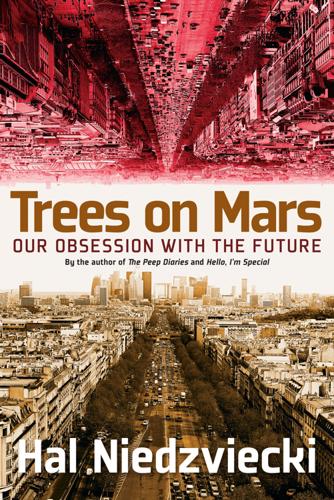
Trees on Mars: Our Obsession With the Future
by
Hal Niedzviecki
Published 15 Mar 2015
“Poultry Facts - Purdue Food Animal Education Network,” accessed April 21, 2015, http://www.ansc.purdue.edu/faen/poultry%20facts.html. 19. Lanier, Who Owns the Future?, 143. 20. Ronald Wright, A Short History of Progress, CBC Massey Lectures Series (Toronto: House of Anansi Press, 2004). 21. Richard Dawkins, The Selfish Gene, 30th anniversary ed (Oxford ; New York: Oxford University Press, 2006), xxi. 22. Gleick, The Information, 277. 23. Dawkins, The Selfish Gene, 25. 24. Edgerton, The Shock of the Old, 181. 25. MacKinnon, The Once and Future World, 30–31. 26. Benoit Godin, Benoit Godin Interview, September 20, 2013. 27. Aristotle, Aristotle’s Politics, trans. Carnes Lord, Second edition (Chicago: The University of Chicago Press, 2013). 28.
…
It is to be found in the core of our programming, as innovation pundit Steven Johnson claims, but it’s not innovation that pushes us onward, it is, as our psychological fundamentals have already suggested, survival. “We are survival machines,” writes Oxford zoologist Richard Dawkins in his groundbreaking 1976 book The Selfish Gene. We are, he famously proclaims, “robot vehicles blindly programmed to preserve the selfish molecules known as genes.”21 When we adapt it’s not because we love to innovate and just can’t stop changing. It’s because like all the other creatures of the Earth we have by and large bested, we are programmed to do one thing and one thing only: survive and replicate.
…
Buderi, Robert. Engines of Tomorrow: How the World’s Best Companies Are Using Their Research Labs to Win the Future. New York: Simon & Schuster, 2000. Davis, Martin. The Universal Computer: The Road from Leibniz to Turing. Turing centenary ed. Boca Raton, Fla: CRC Press, 2012. Dawkins, Richard. The Selfish Gene. 30th anniversary ed. Oxford ; New York: Oxford University Press, 2006. Diamond, Jared M. The World until Yesterday: What Can We Learn from Traditional Societies?. New York: Viking, 2012. Dyson, George. Turing’s Cathedral: The Origins of the Digital Universe. 1st ed. New York: Pantheon Books, 2012.

A Hunter-Gatherer's Guide to the 21st Century: Evolution and the Challenges of Modern Life
by
Heather Heying
and
Bret Weinstein
Published 14 Sep 2021
He may adhere to gender roles that stretch back thousands of years in his lineage, but it is commonly asserted in scientific circles that these cultural patterns are not likely to be evolutionary, that they are “just cultural”—as if that were a competing category. The problem stems from the initial, 1976 presentation of memetic evolution by Richard Dawkins in The Selfish Gene. As Dawkins describes memes—laying the foundation for the rigorous Darwinian study of cultural adaptation—he makes a fateful error. He describes human culture as a new primeval soup,16 in which cultural traits spread themselves much like genes do, rather than as a tool of the genome that evolved to enhance the genome’s fitness.
…
WEIRD: Of Western Educated Industrialized Rich and Democratic countries. zero-sum: An opportunity in which a benefit for one individual results in an equivalent cost to conspecifics. Compare with non-zero-sum. Recommended Further Reading Chapter 1: The Human Niche Dawkins, R., 1976. The Selfish Gene. New York: Oxford University Press. Mann, C. C., 2005. 1491: New Revelations of the Americas before Columbus. New York: Alfred A. Knopf. Meltzer, D. J., 2009. First Peoples in a New World: Colonizing Ice Age America. Berkeley: University of California Press. Chapter 2: A Brief History of the Human Lineage Dawkins, R., and Wong, Y., 2004.
…
The distinction between individual and population is critical. Being a member of some population—women, Europeans, right-handers—specifies very few hard-and-fast truths about the individual, while making many other characteristics more or less likely for individual members of that group. 16. Dawkins, R. 1976. The Selfish Gene (30th anniversary ed. [2006]). New York: Oxford University Press, 192. 17. We first introduced the concept of the Omega principle outside of the classroom at a Baumann Foundation event on “Being Human” in San Francisco in July 2014, at the invitation of Peter Baumann. Our presentation was nine hours long over two days, and included many of the ideas herein.

The Formula: How Algorithms Solve All Our Problems-And Create More
by
Luke Dormehl
Published 4 Nov 2014
An example of the former might be something like the advent of computerized accounting systems, while the arrival of digital cameras (which famously led to the downfall of Kodak) represents the latter. Tools like e-discovery algorithms are disruptors. But they’re also far from the exception to the rule when it comes to the many ways in which the legal profession is being irreversibly altered by the arrival of The Formula. In his classic book, The Selfish Gene, evolutionary biologist Richard Dawkins describes the way in which legal cases have “evolved” to become as inefficient as possible—thereby enabling lawyers, working with one another in “elaborately coded cooperation,” to jointly milk their clients’ bank accounts for the longest amount of time possible.
…
Fast Company, December 6, 2012. fastcolabs.com/3003732/amazing-forensic-tech-behind-next-apple-samsung-legal-dust-and-how-hack-it. 19 Christensen, Clayton. Innovator’s Dilemma: When New Technologies Cause Great Firms to Fail (Boston: Harvard Business School Press, 1997). 20 Dawkins, Richard. The Selfish Gene (Oxford, UK; New York: Oxford University Press, 1989). 21 Consider, for instance, the way in which divorce cases are presumed—in their very “Smith v. Smith” language—to be adversarial, even when this might not be the case at all. 22 Fisher, Daniel. “Silicon Valley Sees Gold in Internet Legal Services.”
…
K. 187 Rushkoff, Douglas 195–97 Salavon, Jason 194 Salganik, Matthew 172–76 Salieri, Antonio 172 Samsung, see Apple v. Samsung scavenger-class customers 49–50 SceneTap 91 Schindler’s List 171 Schwartz, Barry 82 “scripts”, technological 136–37 SeaCaptainDate 78–79 Sears, Barry 8 self-driving cars 143–44, 213 Selfish Gene, The (Dawkins) 129 Serendipity 85–87 “750 words” 13 sex, see love and sex Shakespeare, William 125–26, 182–83 Shamir, Lior 184–85, 203, 205–6 Shapley, Lloyd 62, 80 Shteyngart, Gary 85 Signal and the Noise, The (Silver) 235 Silver, Nate 235 Slate 41, 97 Slater, Dan 81 Slavin, Kevin 228 Smarr, Larry 7–12, 220 Smith, Dave 208–9 Smith, Will 69, 164–65 social discovery 86–90 “society of control” 54–55 Socrates 12 Soddu, Celestino 204 Solid Gold Bomb 224 Sony Walkman 14 Spacey, Kevin 188–89 spam 58 Speed 44 Spielberg, Arnold 164 Spielberg, Steven 118, 164 Stable Marriage Problem, see “Match” Stairmaster 14 Stanton, Andrew 163 Star Wars 161 Stendhal 70 Steve Jobs (Isaacson) 36 Stone, Brad 214 Strangers on a Train 17 Striphas, Ted 232, 236 “Structured Information” (DeRose) 194 Sugar, Simon 20 Sundem, Garth 67–69, 234 Sunstein, Cass 137 Super Sad True Love Story (Shteyngart) 85–86 Supreme Court Forecasting Project 158 Surden, Harry 159, 232 Sweeney, Latanya 151 synaesthesia 181 tamagotchi 100 Tamanha, Brian 216 Tancer, Bill 3, 233 Taylor, Frederick 42 Taylorism 42 Technical Man 5 technological “scripts” 136 Technological Society, The (Ellul) 56 Tejeda, Charles 40 television scheduling 155–56 Tesco 20 work practices at 45 Thaler, Richard 137 “Theory of Judicial Decision, The” (Radin) 157 Third Wave, The (Toffler) 20–21, 43, 53–54 Thomas, Dorothy 228 Thomas, William 228 Thompson, David 172n Thousand Plateaus, A (Deleuze, Guattari) 54 Titanic 162–63, 194 To Save Everything, Click Here (Morozov) 201 Toffler, Alvin 20–21, 43, 53–54 Tolstoy, Leo 203 “Towards Digitally Enabled Genomic Medicine” (Smarr) 11 TrekPassions 79 TruthTeller 237 Tuchman, Gaye 226–27 Turing, Alan 184 Turkle, Sherry 56, 131 Turner, Fred 56–57 Turow, Joseph 52 TweetPsych 38 Twitter 26, 30, 227, 230–31 and algorithms 35–36 and hashtags 230 UAL 229 UniformDating 79 Untitled (Green on Blue) 201 Up in the Air 79 Vaidhyanathan, Siva 221–22 Van Gogh, Vincent 185 VeggieDate 79 Vico, Francisco 206–7 Viegas, Fernanda 195 Virilio, Paul 2, 43, 218 Vollmer, Walter 149 Wagner, Richard 70 Walker, Robert 17 Walmart 106–7 War and Peace (Tolstoy) 203 Wark, McKenzie 235 Warren, Neil Clark 71–75, 84 Wasabi Waiter 33 Wattenberg, Martin 195 Watts, Duncan 172–75 wave theory 20–21 Wearable Computing Group 14 web analytics 18–20 at Google 41 see also Google Webb, Amy 84 Well, Marius B. 225 Wert, Robert 24–25 Westminster Review 118 Wevorce 131 Who Owns the Future?

The Portable Atheist: Essential Readings for the Nonbeliever
by
Christopher Hitchens
Published 14 Jun 2007
I was extremely doubtful about the idea of god, but I just didn’t know enough about anything to have a good working model of any other explanation for, well, life, the universe, and everything to put in its place. But I kept at it, and I kept reading and I kept thinking. Sometime around my early thirties I stumbled upon evolutionary biology, particularly in the form of Richard Dawkins’s books The Selfish Gene and then The Blind Watchmaker, and suddenly (on, I think the second reading of The Selfish Gene) it all fell into place. It was a concept of such stunning simplicity, but it gave rise, naturally, to all of the infinite and baffling complexity of life. The awe it inspired in me made the awe that people talk about in respect of religious experience seem, frankly, silly beside it.
…
It resulted from the natural evolution of the human brain which, under the blind forces of natural selection, expanded to the point where, all unforeseen, it over-reached itself and started to behave insanely from the selfish gene’s point of view. The most transparently un-Darwinian misfiring is contraception, which divorces sexual pleasure from its natural function of gene-propagation. More subtle over-reachings include intellectual and artistic pursuits which squander, by the selfish genes’ lights, time and energy that should be devoted to surviving and reproducing. The big brain achieved the evolutionarily unprecedented feat of genuine foresight: became capable of calculating long-term consequences beyond short-term selfish gain.
…
Why There Almost Certainly Is No God From The God Delusion RICHARD DAWKINS All right, one more Oxonian. In a time of expanding and indeed exploding knowledge of biology, Richard Dawkins has educated a generation of people in the intricacies and wonders (far more impressive than anything supernatural) of our species and of others. It will be a long time before his books—The Selfish Gene, The Blind Watchmaker, and Climbing Mount Improbable among many others—are superseded as works of explication and indeed innovation in their field. Professor Dawkins reminds us that evolution by natural selection is indeed “only a theory”: the most successful and the most testable theory in human history.
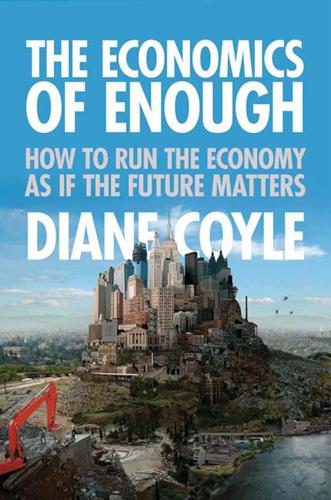
The Economics of Enough: How to Run the Economy as if the Future Matters
by
Diane Coyle
Published 21 Feb 2011
Jonathan Haidt has identified five of these universal moral themes: avoidance of doing harm, due respect for authority, striving for cleanliness or purity, loyalty to group or community—and a sense of fairness.6 The last two of these have been specifically identified by evolutionary scientists as aspects of reciprocal altruism. This theory about the willingness to help others in the valid expectation of being helped by them in turn originated in 1971 with an article by biologist Robert Trivers entitled “The Evolution of Reciprocal Altruism,”7 and was further elaborated in 1976 by Richard Dawkins in his classic, The Selfish Gene.8 As Steven Pinker explains it, reciprocal altruism is not a calculating, selfish thought process but the outcome of a set of human emotions: “Sympathy prompts a person to offer the first favor, particularly to someone in need for whom it would go the furthest. Anger protects a person against cheaters who accept a favor without reciprocating, by impelling him to punish the ingrate or sever the relationship.
…
Guilt prompts a cheater in danger of being found out to repair the relationship by redressing the misdeed and advertising that he will behave better in the future.”9 Reciprocal altruism is the evolutionary basis for our sense of fairness. The sense of community, likewise, is a moral emotion of evolutionary origin, rather than a rational choice, although there may be many good objective reasons (or rationalizations) for our having it. Fairness is consistent with the “selfish” gene: very often acting in a seemingly nonselfish way delivers better outcomes for an individual, because so much of human life is characterized by the scope for mutual benefit (or by non–zero sum games, as a game theorist would express it). A woolly mammoth is more easily brought down by a group than by a lone hunter, while individuals in a modern economy are richer when working cooperatively and engaging in trade.
…
David, Paul, and Gavin Wright. 2005. “General Purpose Technologies and Productivity Surges: Historical Reflections on the Future of the ICT Revolution.” Economic History, EconWPA, online Working Paper No. 0502002. Davis, Mike. 2006. Planet of Slums. London: Verso. Dawkins, Richard. 1976. The Selfish Gene. New York: Oxford University Press. Deaton, Angus. 2008. “Income, Health and Well-Being around the World: Evidence from the Gallup World Poll.” Journal of Economic Perspectives 22:2, pp. 53–72. Diamond, Jared. 2005. Collapse: How Societies Choose to Fail or Succeed. New York: Viking. Diener, Ed, and Robert Biswas-Diener. 2008.
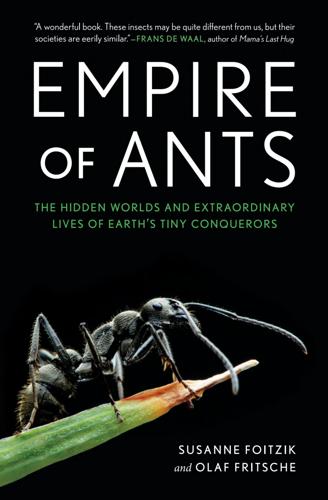
Empire of Ants: The Hidden Worlds and Extraordinary Lives of Earth's Tiny Conquerors
by
Susanne Foitzik
and
Olaf Fritsche
Published 5 Apr 2021
In a colony with Bb queens, the b variant causes the Bb workers to bite the young BB queens to death as soon as they hatch, wiping out the genetic competition. BB workers, who do not produce their own offspring, are spared and raise the Bb offspring. The evolutionary researcher Richard Dawkins, who popularized the concept of the selfish gene, calls genes like b, whose carriers recognize and support one another, “green beard genes.” He chose this unusual name because these cliquey genes behave as if they have given their carriers a green beard; all green-beards make sure that fellow green-beards enjoy advantages while making life difficult for those with different-colored beards.
…
(wood ants) body guards for, ref 1 colony establishment by, ref 1, ref 2 communication among, ref 1 foraging behavior, ref 1 individual identification of, ref 1 as invasive species, ref 1 life span, ref 1 natural medicine used by, ref 1 navigation abilities of, ref 1, ref 2, ref 3, ref 4 royal larvae of, ref 1 slave-making behavior of, ref 1 slave-making raids on, ref 1 social parasitism of, ref 1 stings of, ref 1 F. fusca (black ant), ref 1, ref 2 F. fuscocinerea, ref 1 F. obscuripes (western thatching ant), ref 1, ref 2, ref 3 F. pallidefulva, ref 1 F. paralugubris, ref 1 F. rufa (red wood ant), ref 1, ref 2, ref 3 F. sanguinea (blood red ant), ref 1 F. subintegra, ref 1 Forti, Luiz, ref 1 four dots ant (Dolichoderus quadripunctatus), ref 1, ref 2 Frank, Erik, ref 1, ref 2 fratricide, ref 1 free will, ref 1 French Alps, ref 1 fungus cultivation of, ref 1, ref 2, ref 3, ref 4, ref 5, ref 6 infections caused by, ref 1, ref 2, ref 3, ref 4, ref 5 treetop gardens and, ref 1 g Galápagos Islands, ref 1 gardening. see ant plants; leafcutter ants gas chromatography, ref 1, ref 2 gaster, ref 1 genes brain structure and, ref 1 decision-making and, ref 1 degree of kinship and, ref 1 distant matings and, ref 1 eusociality and, ref 1 as evolution indicator, ref 1 personalities and, ref 1 selfish gene, ref 1 of slave-making ants, ref 1 sperm and, ref 1 super-colonies and, ref 1, ref 2 tapeworm infestations and, ref 1 of worker caste, ref 1, ref 2, ref 3, ref 4 Germany, ref 1, ref 2, ref 3, ref 4 ghost ants, ref 1 giant African land snail, ref 1 giant bamboo, ref 1 glands about, ref 1 for chemical communication, ref 1, ref 2 for chemical warfare, ref 1, ref 2, ref 3, ref 4, ref 5, ref 6, ref 7, ref 8 for fungal cultivation, ref 1 for honeydew production, ref 1 for scent trails, ref 1 for self-destruction, ref 1, ref 2 for silk production, ref 1, ref 2 gliding ants (Cephalotes atratus), ref 1 Gnamptogenys hartmani, ref 1 golf courses, ref 1, ref 2 gongylidia, ref 1, ref 2 Gordon, Deborah, ref 1, ref 2, ref 3 gorse bush, ref 1 gossamer-winged butterflies, ref 1, ref 2 Gp-9 gene, ref 1 gravity, ref 1 green (weaver) ant (Oecophylla smaragdina), ref 1, ref 2, ref 3, ref 4, ref 5, ref 6 growth hormone secretion, ref 1 Guillotin, Joseph-Ignace, ref 1 h Harpegnathos saltator (Indian ant), ref 1 harvester ants kleptoparasitism and, ref 1 navigational abilities of, ref 1, ref 2 M. barbarus (Mediterranean harvester ant), ref 1 Pogonomyrmex spp., ref 1 hearing, ref 1 Heil, Martin, ref 1 Hemiptera, ref 1, ref 2 hemolymph, ref 1, ref 2, ref 3 herbicides, ref 1 herbs, ref 1 highways, ref 1 Hölldobler, Bert, ref 1, ref 2, ref 3, ref 4 honeydew milking, ref 1, ref 2, ref 3, ref 4, ref 5, ref 6, ref 7, ref 8 production of, ref 1, ref 2 honeydew honey, ref 1 honeypot ants, ref 1, ref 2, ref 3 Hormigas Culonas (fried leafcutter queens), ref 1 horseshoe vetch, ref 1 humans ant comparisons, ref 1, ref 2, ref 3, ref 4 antibiotic development by, ref 1 ant-think applications, ref 1 consumption of ants and larvae, ref 1, ref 2, ref 3 consumption of honeydew, ref 1 defenses against ants, ref 1, ref 2 exploitation of ants by, ref 1, ref 2, ref 3, ref 4 eyesight of, ref 1 kinship and, ref 1 sex determination, ref 1 hunting, by army ants, ref 1, ref 2 hydrocarbons, ref 1, ref 2, ref 3, ref 4, ref 5 hyphae, ref 1, ref 2 Hypoponera opacior (ponerine ant), ref 1 Hypoponera sp., ref 1 i ichneumon flies, ref 1 Idas blue (Plebejus idas), ref 1 Indian ant (Harpegnathos saltator), ref 1 Indian medicine, ref 1 individuality, ref 1, ref 2, ref 3. see also eusociality indoleacetic acid, ref 1 infrabuccal pocket, ref 1 inquilinism, ref 1 internal magnetic compass, ref 1 invasive ant species, ref 1. see also specific ant species in artificially-heated spaces, ref 1, ref 2 cold-hardy species, ref 1 defenses against, ref 1, ref 2 distant matings of, ref 1 ecosystem destruction, ref 1, ref 2 on golf courses, ref 1, ref 2 natural decline of, ref 1, ref 2 overview, ref 1, ref 2 super-colony battles, ref 1 super-colony decline, ref 1 super-colony development, ref 1, ref 2 super-colony evolution, ref 1 invasive garden ant (Lasius neglectus), ref 1 j Jaglavak, the driver ant, ref 1 Japan, ref 1 jet ant (Lasius fuliginosus), ref 1 Jongepier, Evelien, ref 1 jumping spider (Bagheera kiplingi), ref 1 The Jungle Book (Kipling), ref 1 jungle monoculture gardens, ref 1, ref 2 k Kipling, Rudyard, ref 1 kleptoparasitism, ref 1 kroto, ref 1 l lancet liver fluke (Dicrocoelium dendriticum), ref 1 Large Blue (Phengaris arion), ref 1 larvae about, ref 1 of aphids, ref 1 enslaved workers caring for, ref 1 feeding and caring of, ref 1, ref 2, ref 3, ref 4, ref 5, ref 6, ref 7, ref 8, ref 9 as food, ref 1, ref 2, ref 3, ref 4, ref 5 infections and, ref 1, ref 2, ref 3 major vs. minor determination and, ref 1 metamorphosis of, ref 1, ref 2 moisture detection and, ref 1 parasitic, ref 1, ref 2, ref 3 royal larvae, ref 1 scent of, ref 1, ref 2 silk production by, ref 1, ref 2 of young queens, ref 1, ref 2, ref 3 Lasius spp.
…
(scuttle flies), ref 1, ref 2 Pseudomyrmex ferruginea, ref 1 pupae caring for, ref 1 destruction of, ref 1 fertilization of, ref 1 as food, ref 1 metamorphosis of, ref 1 moisture detection and, ref 1 parasitic, ref 1 scent of, ref 1, ref 2 of young queens, ref 1 q Quechua people, ref 1 queen ants army ant queens, ref 1, ref 2 co-queens, ref 1 of devil’s gardens, ref 1 duties of, ref 1, ref 2, ref 3 eyesight of, ref 1 human consumption of, ref 1 matings. see young queens nomenclature issues, ref 1 as royal larvae, ref 1 scent of, ref 1 sex life of, ref 1, ref 2, ref 3 social status of, ref 1 vampirism by, ref 1 r rafts, ref 1, ref 2 raids, for slaves, ref 1, ref 2, ref 3, ref 4 rectum and rectal glands, ref 1 red imported fire ant (Solenopsis invicta), ref 1, ref 2, ref 3, ref 4, ref 5 red land crab, ref 1, ref 2, ref 3 red wood ant (Formica rufa), ref 1, ref 2, ref 3 regurgitated food, ref 1, ref 2, ref 3, ref 4, ref 5 relocation of nests by army ants, ref 1, ref 2, ref 3, ref 4, ref 5 decision-making process for, ref 1, ref 2, ref 3, ref 4 process of, ref 1, ref 2, ref 3 by weaver ants, ref 1 research process about, ref 1 ant collection, ref 1 brain dissection, ref 1 field accommodations, ref 1 field study obstacles, ref 1 food for captive ants, ref 1 lab-based colonies, ref 1, ref 2, ref 3, ref 4 nest excavation, ref 1, ref 2, ref 3 nest locating, ref 1 nest relocation observation, ref 1 travel and, ref 1, ref 2 resin-trapped ants, ref 1 rivalries, ref 1 road networks, ref 1 Rössler, Wolfgang, ref 1 rove beetle (Lomechusa pubicollis), ref 1, ref 2, ref 3 s sac fungus (Escovopsis sp.), ref 1, ref 2 Sahara Desert ant (Cataglyphis bicolor), ref 1 salmonella, ref 1 Santschi, Felix, ref 1 Sateré-Mawé people, ref 1 sausage fly, ref 1 scale insect, ref 1, ref 2, ref 3, ref 4 scents. see chemical communication scent trails, ref 1, ref 2, ref 3, ref 4 Schmidt, Justin, ref 1 Schmidt Sting Pain Index, ref 1 scouts, ref 1, ref 2, ref 3 scuttle flies (Pseudacteon sp.), ref 1, ref 2 self-destruct mechanism, ref 1, ref 2 selfish gene, ref 1 self-sacrifice, ref 1, ref 2, ref 3, ref 4 selvamicin, ref 1 semi-claustral foundation, ref 1 semiochemicals, ref 1 Sericomyrmex sp., ref 1 Seychelles, ref 1 sickness. see diseases, of ants silk production, ref 1, ref 2, ref 3 silverfish, ref 1, ref 2, ref 3 simple eyes, ref 1, ref 2 sisters, ref 1. see also worker castes slave-making ants, ref 1, ref 2, ref 3 slave raids, ref 1, ref 2, ref 3, ref 4 sling-shot jumps, ref 1 smell. see chemical communication snails, ref 1, ref 2 social parasitism, ref 1, ref 2, ref 3, ref 4, ref 5, ref 6 social stomach, ref 1 social vaccinations, ref 1 soldier subcaste, ref 1, ref 2, ref 3, ref 4. see also major soldiers; minors and minor soldiers Solenopsis spp.
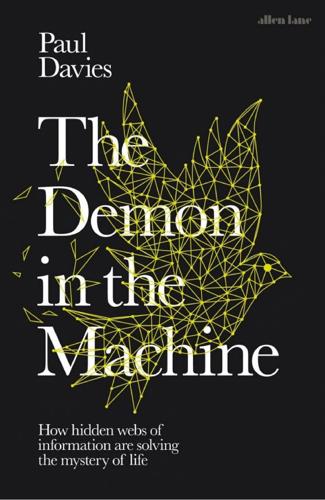
The Demon in the Machine: How Hidden Webs of Information Are Finally Solving the Mystery of Life
by
Paul Davies
Published 31 Jan 2019
Following the elucidation of the structure of DNA and the cracking of the universal genetic code, biology was gripped by reductionist fervour. There was a tendency to think that answers to most biological questions were to be found at the level of genes, a viewpoint eloquently articulated by Richard Dawkins with his concept of the selfish gene.9 And there is no doubt that reductionism applied to biology has scored some notable successes. For example, specific defective genes have been linked to a number of heritable conditions such as Tay-Sachs syndrome. But it soon became clear that there is generally no simple connection between a gene, or a set of genes, and a biological trait at the level of the organism.
…
, Progress in Biophysics and Molecular Biology, vol. 109, 108–14 (2012) Denis Noble, Dance to the Tune of Life: Biological Relativity (Cambridge University Press, 2017) Paul Rendell, Turing Machine Universality of the Game of Life: Emergence, Complexity and Computation (Springer, 2015) Stephen Wolfram, A New Kind of Science (Wolfram Media, 2002) Hubert Yockey, Information Theory, Evolution and the Origin of Life (Cambridge University Press, 2005) 4. DARWINISM 2.0 Nessa Carey, The Epigenetics Revolution: How Modern Biology is Rewriting Our Understanding of Genetics, Disease and Inheritance (Columbia University Press, 2013) Richard Dawkins, The Selfish Gene (Oxford University Press, 1976) Daniel Dennett, Darwin’s Dangerous Idea: Evolution and the Meaning of Life (Simon and Schuster, 1995) Robin Hesketh, Introduction to Cancer Biology (Cambridge University Press, 2013) Eva Jablonka and Marion Lamb, Evolution in Four Dimensions (MIT Press, 2005) George Johnson, The Cancer Chronicles: Unlocking Medicine’s Deepest Mystery (Vintage, 2014) Stuart Kauffman, The Origin of Order: Self-organization and Selection in Evolution (Oxford University Press, 1993) Lewis J.
…
Prokopenko, ‘Differentiating information transfer and causal effect’, European Physical Journal B, vol. 73, no. 4, 605–15 (2010); doi: 10.1140/epjb/e2010-00034-5. 8. Alyssa Adams at al., ‘Formal definitions of unbounded evolution and innovation reveal universal mechanisms for open-ended evolution in dynamical systems’, Scientific Reports (Nature), vol. 7, 997–1012 (2017). 9. Richard Dawkins, The Selfish Gene (Oxford University Press, 1976). 10. Y. Lazebnik, ‘Can a biologist fix a radio? Or, what I learned while studying apoptosis’, Biochemistry (Moscow), vol. 69, no. 12, 1403–6 (2004). 11. Paul Nurse, ‘Life, logic and information’, Nature, vol. 254, 424–6 (2008). 12. Uri Alon, An Introduction to Systems Biology: Design Principles of Biological Circuits (Chapman and Hall, 2006). 13.

Likewar: The Weaponization of Social Media
by
Peter Warren Singer
and
Emerson T. Brooking
Published 15 Mar 2018
,” Smithsonian, May 2011, http://www.smithsonianmag.com/arts-culture/what-defines-a-meme-1904778/?all. 189 “The computers”: Richard Dawkins, The Selfish Gene, 40th anniv. ed. (Oxford University Press, 2016), 255. 190 Russian secret police: “Anti-Semitism in the United States: Henry Ford Invents a Jewish Conspiracy,” Jewish Virtual Library, http://www.jewishvirtuallibrary.org/henry-ford-invents-a-jewish-conspiracy. 190 “It is a perfect milieu”: “Memes: The New Replicators—Chapter 11 from Richard Dawkins, ‘The Selfish Gene,’” Evolution etc (blog), November 23, 2015, http://evolutionetc.blogspot.com/2015/11/memes-new-replicators-chapter-11-from.html. 190 “a first class ecology”: “Richard Dawkins,” Know Your Meme, accessed March 20, 2018, http://knowyourmeme.com/memes/people/richard-dawkins. 190 a toxic Twitter troll: David Freeman and Eliza Sankar-Gorton, “15 of Richard Dawkins’ Most Controversial Tweets,” Huffington Post, September 22, 2015, https://www.huffingtonpost.com/entry/15-of-richard-dawkins-most-controversial-tweets_us_56004360e4b00310edf7eaf6. 191 “Digital content can travel”: Whitney Phillips and Ryan Milner, “The Complex Ethics of Online Memes,” The Ethics Centre, October 26, 2016, http://www.ethics.org.au/On-Ethics/blog/October-2016/the-complex-ethics-of-online-memes. 191 went so far as to sue: Matthew Gault, “Pepe the Frog’s Creator Goes Legally Nuclear Against the Alt-Right,” Motherboard (blog), Vice, September 18, 2017, https://motherboard.vice.com/en_us/article/8x8gaa/pepe-the-frogs-creator-lawsuits-dmca-matt-furie-alt-right. 191 “nonlinear battlefield”: Michael B.
…
Flush with excitement, they pondered whether their work could be applied more broadly. If the rules of genetics could explain life, could they not explain many other things—even the nature of information? After all, just as biological life had to ceaselessly copy itself in order to survive, ideas had to do so, too. In his 1976 book The Selfish Gene, evolutionary biologist Richard Dawkins put a name to these bits of organic, self-multiplying information: “memes.” “The computers in which memes live are human brains,” Dawkins wrote. Memes are born from human culture and shaped and transmitted by language. Over time, a meme might become increasingly self-referential and complex, spawning clusters of new memes.
…
The belief in a secret Jewish conspiracy aiming to run the world built upon itself from the Middle Ages to a fake pamphlet created by Russian secret police in 1903 (The Protocols of the Meetings of the Learned Elders of Zion) to the pamphlet’s mass printing and distribution in America by Henry Ford and its subsequent use in Nazi propaganda in Germany. The arrival of the internet sped up this memetic evolution. Dawkins, who had picked up programming as a hobby, observed as much in The Selfish Gene’s 1989 edition. “It was obviously predictable that manufactured electronic computers, too, would eventually play host to self-replicating patterns of information—memes,” he wrote. “. . . It is a perfect milieu for self-replicating programs to flourish and spread.” Through the 1990s, memes proliferated across the chaotic, emerging network of websites and forum boards.
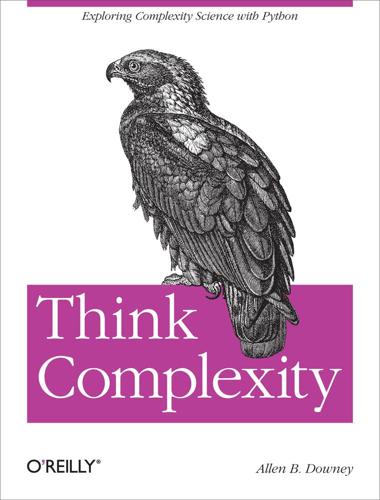
Think Complexity
by
Allen B. Downey
Published 23 Feb 2012
Holistic models are more focused on similarities between systems and less interested in analogous parts. A holistic approach to modeling often consists of two steps, not necessarily in this order: Identify a kind of behavior that appears in a variety of systems. Find the simplest model that demonstrates that behavior. For example, in The Selfish Gene, Richard Dawkins suggests that genetic evolution is just one example of an evolutionary system. He identifies the essential elements of the category—discrete replicators, variability, and differential reproduction—and proposes that any system that has these elements displays similar behavior, including complexity without design.
…
robust, Dijkstra, Zipf, Pareto, and Power Laws rule table, Stephen Wolfram rules, Pareto Distributions, Cellular Automata, Stephen Wolfram, Classifying CAs, Randomness, Randomness, Structures, Fractal CAs, Fractal CAs 80/20 rule, Pareto Distributions “Rule 110”, Structures “Rule 18”, Classifying CAs, Fractal CAs “Rule 254”, Fractal CAs “Rule 30”, Randomness, Randomness “Rule 50”, Stephen Wolfram S sand pile model, Sand Piles, Reductionism and Holism scale, Pareto Distributions scale-free distributions, Pareto Distributions scale-free network, Barabási and Albert scaling distribution, Barabási and Albert Schelling, Thomas, A New Kind of Science, A New Kind of Science, Thomas Schelling Schmidt, Eric, Analysis of Algorithms SciPy, Implementing Life search, A New Kind of Engineering, Analysis of Search Algorithms segregation, A New Kind of Science, A New Kind of Science, Thomas Schelling self-organized criticality, Sand Piles, Pink Noise self-similarity, Sand Piles The Selfish Gene, Reductionism and Holism Sharon, Massachusetts, Stanley Milgram shortcut, Emergence shortest distance, What’s a Graph? shortest path, Dijkstra, Dijkstra Sierpiński triangle, Classifying CAs, Fractal CAs simple graphs, What’s a Graph? simple rules, Determinism, Turmites simplifications, A New Kind of Science, A New Kind of Science justifying, A New Kind of Science simulation-based model, What Kind of Explanation Is That?
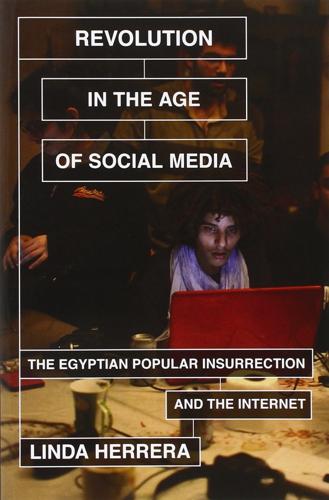
Revolution in the Age of Social Media: The Egyptian Popular Insurrection and the Internet
by
Linda Herrera
Published 14 Apr 2014
Rival sides battled over ideas as consequential as the nature of freedom, the shape of democracy, and the preparedness of Egyptians to bring forth a more radical and participatory order. We can glean the tenor and evolution of Egypt’s culture wars through an investigation of Facebook from 2011 to 2013. In his seminal work The Selfish Gene, Richard Dawkins tries to unveil the mechanisms through which culture spreads. Drawing on the metaphor of biology, he has famously written: “Just as genes propagate themselves in the gene pool by leaping from body to body via sperms or eggs, so memes propagate themselves in the meme pool by leaping from brain to brain via a process which, in the broad sense, can be called imitation.”
…
Garbaya, “The Other Dimension of the Virtual Space in the Revolution of Freedom in Tunisia: From Facebook to Streetbook.” North Africa Journal, March 14, 2011. 11.C. Kang, “Tech Firms Hiring White House Staffers,” Washington Post, March 28, 2011. 6. MEMES AND THE WAR OF IDEAS 1.R. Dawkins, The Selfish Gene, 2nd Edition, Oxford: Oxford University Press, 1990, 192. 2.For more details on the Rasd network see Rehab Sakr, “The Power of Online Networks: Citizenship among Muslim Brotherhood Cyber Youth,” in L. Herrera, ed., Wired Citizenship: Youth Learning and Activism in the Middle East, New York: Routledge, 2014. 3.Ghonim, Revolution 2.0, 170. 4.G.

Climbing Mount Improbable
by
Richard Dawkins
and
Lalla Ward
Published 1 Jan 1996
CLIMBING MOUNT IMPROBABLE By the Same Author THE SELFISH GENE THE EXTENDED PHENOTYPE THE BLIND WATCHMAKER RIVER OUT OF EDEN Original drawings by Lalla Ward CLIMBING MOUNT IMPROBABLE Richard Dawkins W. W. Norton & Company New York London Copyright © 1996 by Richard Dawkins Original drawings copyright © 1996 by Lalla Ward All rights reserved First published as a Norton 1997 Library of Congress Cataloging-in-Publication Data Dawkins, Richard, 1941— Climbing mount improbable / Richard Dawkins; original drawings by Lalla Ward. p. cm. Includes bibliographical references.
…
I have already made this point in another connection. If natural selection were capable of taking the long view, animals and plants would take steps to preserve the race—their own and those that they depend on like their prey and their pollinators. But nature, unlike humans with brains, has no foresight. ‘Selfish genes’ and short-term benefit are always favoured in a world where others are coping with the long-term needs of the race. If an individual fig tree could get away with fostering nothing but female wasps it would do so, relying on other fig trees to produce the males needed to preserve the race of wasps.
…
London: John Murray. Dawkins, R. (1982) The Extended Phenotype. Oxford: W. H. Freeman. Dawkins, R. (1986) The Blind Watchmaker. Harlow: Longman. Dawkins, R. (1989) ‘The evolution of evolvability’. In Artificial Life. (Ed. C. Langton.) Santa Fe: Addison-Wesley. Dawkins, R. (1989) The Selfish Gene. (2nd edn) Oxford: Oxford University Press. Dawkins, R. (1995) River Out of Eden. London: Weidenfeld and Nicolson. Dennett, D. C. (1995) Darwin’s Dangerous Idea. New York: Simon and Schuster. Douglas-Hamilton, I. and O. (1992) Battle for the Elephants. London: Doubleday. Drexler, K.

Fooled by Randomness: The Hidden Role of Chance in Life and in the Markets
by
Nassim Nicholas Taleb
Published 1 Jan 2001
Clearly, to a scientist, science lies in the rigor of the inference, not in random references to such grandiose concepts as general relativity or quantum indeterminacy. Such rigor can be spelled out in plain English. Science is method and rigor; it can be identified in the simplest of prose writing. For instance, what struck me while reading Richard Dawkins’ Selfish Gene is that, although the text does not exhibit a single equation, it seems as if it were translated from the language of mathematics. Yet it is artistic prose. Reverse Turing Test Randomness can be of considerable help with the matter. For there is another, far more entertaining way to make the distinction between the babbler and the thinker.
…
For a physicist’s position on the culture wars, Weinberg (2001). For a presentation of a public intellectual, see Posner (2002). Note that Florida Atlantic University offers a Ph.D. to become a public intellectual—literary, since scientists need no such artifice. The hoax: Sokal (1996). The Selfish Gene: Dawkins (1989, 1976). Hegel: In Popper (1994). Exquisite cadavers: Nadeau (1970). The generator: www.monash.edu.au. Language and probability: There is a very large connection between language and probability; it has been studied by thinkers and scientists via the sister methods of entropy and information theory—one can reduce the dimensionality of a message by eliminating redundancy, for instance; what is left is measured as information content (think of zipping a file) and is linked to the notion of “entropy,” which is the degree of disorder, the unpredictable that is left.
…
New York: Harcourt. David, Florence Nightingale, 1962, Games, Gods, and Gambling: A History of Probability and Statistical Ideas. Oxford: Oxford University Press. Dawes, R. M., D. Faust, and P. E. Meehl, 1989, “Clinical Versus Actuarial Judgment. Science, 243, 1668–1674. Dawkins, Richard, 1989 (1976), The Selfish Gene. 2nd ed., Oxford: Oxford University Press. De Vany, Arthur, 2003, Hollywood Economics: Chaos in the Movie Industry. London: Routledge. Debreu, Gerard, 1959, Theorie de la valeur, Dunod, tr. Theory of Value. New York: Wiley. Dennett, Daniel C., 1995, Darwin’s Dangerous Idea: Evolution and the Meanings of Life.
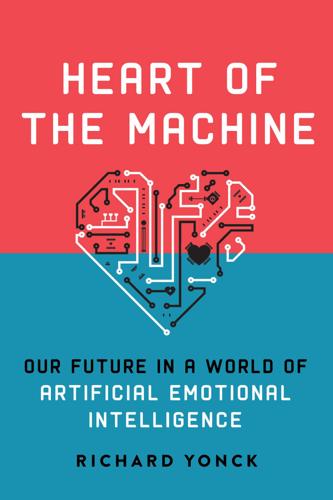
Heart of the Machine: Our Future in a World of Artificial Emotional Intelligence
by
Richard Yonck
Published 7 Mar 2017
“Neural and Behavioral Bases of Age Differences in Perceptions of Trust.” PNAS, vol. 109 no. 51, 20848–20852, doi: 10.1073/pnas.1218518109. October 24, 2012. 13. Cognitive biases are errors in thinking that affect our decisions. They cover a broad range of filters and preconceptions that result in flawed decision making. 14. Dawkins, Richard. The Selfish Gene. Best Books. 1976. Chapter 12 1. Ignoring the fact that today’s automobiles are actually a conglomeration of inventions and innovations. 2. What technologist Kevin Kelly has dubbed the technium. 3. Asimov’s “Three Laws of Robotics” attempted to hardwire explicit controls into fictional robots in order to prevent them from harming or allowing harm to come to humans. 4.
…
Essentially any talisman, totem, or good luck charm fits the bill. 3. Amos, J. “Ancient phallus unearthed in cave.” BBC News. July 25, 2005. 4. “Rock of ages: Australia’s oldest artwork found.” Guardian/Associated Press. http://www.theguardian.com/world/2012/jun/18/rock-australia-art. June 18, 2012 5. Dawkins, R. The Selfish Gene. Oxford University Press. 1976. 6. Clay, Z., de Waal, F. B.M. “Sex and strife: post-conflict sexual contacts in bonobos.” Behaviour. 2014. doi: 10.1163/1568539X-00003155. 7. “The Health Benefits of Sexual Aids & Devices: A Comprehensive Study of their Relationship to Satisfaction and Quality of Life.”
…
Since that time there have been several so-called genetic bottlenecks, during which the planet’s total human population diminished to fewer than 100,000, the most recent such event possibly having occurred only about 70,000 years ago, when about 10,000 individuals were alive, though there’s some controversy over this. 6. Memetic, from the word meme, a replicating unit of culture analogous with genes. Initially posited by Richard Dawkins in his 1978 book, The Selfish Gene. Memes are essentially ideas, symbols, and practices—fragments of culture—that transfer units of information from one “host” mind to another. This replication, evolution, and perpetuation of knowledge is the primary measure of the meme’s success. A model inspired by the organic evolutionary process of natural selection, there is some controversy over whether or not the processes are truly mirrored. 7.

Team Human
by
Douglas Rushkoff
Published 22 Jan 2019
We announced that the net was and would always be a “social medium” Douglas Rushkoff, “The People’s Net,” Yahoo Internet Life, July 2001. 21. The term “media virus” Douglas Rushkoff, Media Virus! (New York: Ballantine, 1994). 23. Memetics, the study of how memes spread and replicate, was first popularized by an evolutionary biologist in the 1970s Richard Dawkins, The Selfish Gene (Oxford: Oxford University Press, 1976). It’s why a tame grasshopper Brigid Hains, “Die, Selfish Gene, Die,” aeon, December 13, 2013. 24. they invest in propaganda from all sides of the political spectrum Nancy Scola and Ashley Gold, “Facebook, Twitter: Russian Actors Sought to Undermine Trump After Election,” Politico, October 31, 2017. 25.
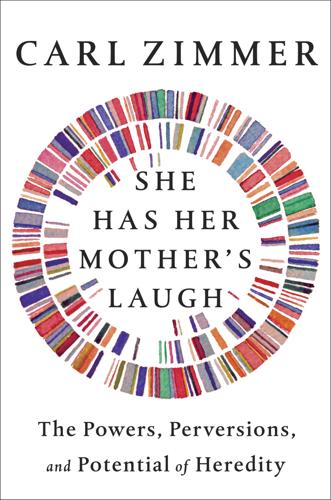
She Has Her Mother's Laugh
by
Carl Zimmer
Published 29 May 2018
Dawkins unveiled memes at the end of his first book, The Selfish Gene. The book mostly concerns itself with genes and biological evolution. The most important quality of a gene, Dawkins argued, did not lie in the details of its chemistry. What mattered about a gene was that it could be inherited. When parents have children, a new copy of the gene gets replicated, and those genes that do a better job of getting replicated become more common over the generations. In a sense, Dawkins argued, we exist simply as vehicles that genes build to get themselves transported into the future. At the end of The Selfish Gene, Dawkins added a provocative coda.
…
Davies, G., A. Tenesa, A. Payton, J. Yang, S. E. Harris, D. Liewald, X. Ke, and others. 2011. “Genome-Wide Association Studies Establish That Human Intelligence Is Highly Heritable and Polygenic.” Molecular Psychiatry 16:996–1005. Dawkins, Richard. 1976. The Selfish Gene. Oxford: Oxford University Press, 1976. ———. 2016. The Selfish Gene. 40th Anniversary Edition. Oxford: Oxford University Press. Day, Troy, and Russell Bonduriansky. 2011. “A Unified Approach to the Evolutionary Consequences of Genetic and Nongenetic Inheritance.” American Naturalist 178:E18–36. Dean, Lewis G., Gill L.
…
You don’t have to dig into the HTML code for your favorite political slogan or your favorite clip of an insane Russian driver. You press SHARE. You retweet. It’s not just easy to spread memes; it’s also easy to track them. Data scientists can track memes with all the numerical precision of a geneticist following an allele for antibiotic resistance in a petri dish. Forty years after the publication of The Selfish Gene, Dawkins wrote an epilogue to an anniversary edition in which he looked back at his idea with satisfaction. “The word meme seems to be turning out to be a good meme,” he declared. It’s entirely possible, though, that you have never heard of the Crazy Nastyass Honey Badger. An Internet meme is successful only insofar as it holds people’s attention long enough for them to be amused or horrified by it, and to feel moved to transmit it to other people.

The Weather Makers: How Man Is Changing the Climate and What It Means for Life on Earth
by
Tim Flannery
Published 10 Jan 2001
Eric Strong, “Gaia and Selfish Genes: Differing Perspectives on Life,” New York Times on line, http://endeavor.med.nyu.edu/~strone01/gaia. html (November 1997). 4. A. H. Knoll, Life on a Young Planet (Princeton: Princeton University Press, 2004). 5. A. J. Ridgwell, M. J. Kennedy and K. Caldiera, “Carbonate Deposition, Climate Stability, and Neoproterozoic Ice Ages,” Science 302 (2003): 859-62. 6. W. J. Bond, F. I. Woodward and G. F. Midgeley, “The Global Distribution of Ecosystems in a World without Fire,” New Phytologist 165 (2004): 525-38. 7. Strong, “Gaia and Selfish Genes,” http://endeavor.med.nyu.edu/ ~strone01/gaia.html.
…
A drop of one tenth of 1 per cent in the solar radiation reaching Earth can trigger an ice age; so Earth’s long-term climatic stability, Lovelock argued, could not have resulted from mere chance. One reason biologists were so resistant to the concept of Gaia was that they could not imagine species co-operating globally to achieve such an outcome. Indeed, driven by Richard Dawkins’s selfish gene theory, most biology was going in the opposite direction—towards a concept of the world wherein even individual genes were at war with each other. The most devastating rebuttal of the Gaia hypothesis is that it is teleological. Lovelock had asserted that the likelihood of Earth’s surface temperature resulting from chance was about the same as surviving a drive through peak-hour traffic blindfolded, to which the biologist W.

Healthy at 100: The Scientifically Proven Secrets of the World's Healthiest and Longest-Lived Peoples
by
John Robbins
Published 1 Sep 2006
The quality of life for humanity in the future depends on ever-increasing numbers of people incorporating this understanding into their everyday lives. The health and survival of the human species in the days ahead depend on how deeply we grasp the reality of our interdependence. Many of us tend to think that human nature is inherently competitive and destructive. We hear about “selfish genes,” as if our very genetic makeup predetermines that we will be egotistic people and that we will fight with one another.27 We’re told that our species contains a built-in “killer instinct,” and that it is normal and inevitable for us to wage wars and massacres. It is widely believed that we are descended from “killer apes” who needed to be brutal and ferociously aggressive to survive the hostile conditions of prehistoric times.28 According to such notions, the natural world is an unrelenting battle for survival, and it is a romantic fallacy to believe that people can live in peace with one another and with their environment for any significant length of time.
…
Jean-Pierre Hallet, op. cit., p. 70. 25. Elizabeth Marshall Thomas, The Harmless People (Vintage Books, 1958); Colin M. Turnbull, The Forest People (Simon & Schuster, 1961); Richard Katz, Megan Biesele, and Verna St. Denis, Healing Makes Our Hearts Happy (Inner Traditions, 1997). 26. Richard Katz et al., op. cit. 27. The Selfish Gene is the title of a controversial book published in 1976 by Oxford University zoologist Richard Dawkins. According to Dawkins’s gene-centered view of evolution, biological organisms, including humans, are vehicles used by their genes for making more copies of those genes, regardless of the effect they might have on individuals or species.
…
Similar to the idea that a chicken is merely an egg’s way of making more eggs, his view suggests that “our” genes build and maintain us in order to make more genes. Although we tend to see ourselves as masters of our genetic endowment, according to Dawkins we are in reality merely its servants. The concept of the “selfish gene” has led many to conclude that the world revolves around savage competition, ruthless exploitation, and deceit. Yet Dawkins goes to great pains to point out that acts of apparent altruism do exist in nature. Bees commit suicide when they sting in order to protect the hive. Birds will likewise give their lives to protect the flock.
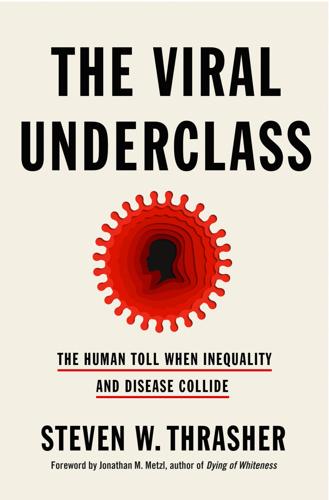
The Viral Underclass: The Human Toll When Inequality and Disease Collide
by
Steven W. Thrasher
Published 1 Aug 2022
Martin’s Press) and social media with a more diffuse level of distribution (Twitter, Facebook, interpersonal gossip) alike, inflaming the body politic the way influenza might trigger inflammatory responses within humans. As puns and visual jokes making fun of these COVID parties (as if they were real) proliferated on my social media feeds, I thought about how the term meme was originally coined as a neologism by biologist Richard Dawkins. In his 1976 book The Selfish Gene, Dawkins—who has been widely criticized for statements he’s made about women and Muslims—argues that a story or an “idea-meme” can mutate and evolve in a mode similar to genetics. Like literal viruses, and especially when it is about viruses, viral news does not transmit in a neutral manner. It mutates and infects along lines of race, class, and sexuality, making the most defenseless people ever more vulnerable as it reproduces.
…
Long Before ‘Patient Zero,’” The New York Times, October 26, 2016, https://www.nytimes.com/2016/10/27/health/hiv-patient-zero-genetic-analysis.html?_r=0. “while circulating compelling content”: Henry Jenkins et al., Spreadable Media: Creating Value and Meaning in a Networked Culture (New York: NYU Press, 2013). an “idea-meme” can mutate: Richard Dawkins, The Selfish Gene (Oxford: Oxford University Press, 1976), 254. “administration of harmful substances” laws: “Countries: France,” HIV Justice Network, November 2020, https://www.hivjustice.net/country/fr/. “THEORIES OF AIDS ORIGINS”: John Crewdson, “Case Shakes Theories of AIDS Origin,” Chicago Tribune, October 25, 1987, https://www.chicagotribune.com/news/ct-xpm-1987–10–25–8703200167-story.html.
…
See incarceration productivity prophylaxis conceptual ProPublica public defenders public health Public Health Service Act (1944) public housing public-private partnerships Purdue Pharmaceuticals quarantine Queens County Courthouse Queens Public TV rabies racial disparities racial hierarchies racism COVID-19 and HIV and police and structural Rafsky, Bob Ray, Victor Rayford, Robert Reagan, Ronald Reconstruction Rector, Ricky Ray rents Republican Party resources respirators Reuters Rikers Island jail Riopan Rivera, Sylvia Robbins, Josh Roberts, Dorothy Roberts, Robin Robinson, Cedric Roosevelt, Franklin Delano Rottnek, Fred Rowan, Meredith Royal Free Hospital rubella Rule 42 ruling class RuPaul’s Drag Race (TV show) rural areas Rural Community Workers Alliance Rushkoff, Douglas Russo, Vito Sabin, Albert Saint Louis Effort for AIDS Salk, Jonas same-sex marriage Sanders, Bernie San Francisco San Quentin State Prison SARS outbreak of 2003 Sartre, Jean-Paul scapegoats scarcity Schiebinger, Londa Schlosser, Eric Schoofs, Mark Schulman, Sarah Schweik, Sue Scientific American scientific research Scott County, Indiana Secure Communities program Selfish Gene, The (Dawkins) Sen, Amartya September 11, 2001 Sero Project serosorting sex education sexism sexual assault and harassment sexually transmitted infections (STIs) sex workers Shaw, Ed Shilts, Randy Siegel, Zachary Sims, James Marion Sinclair, Upton Sioux tribe SIV (simian immunodeficiency virus) Six Characters in Search of an Author (Pirandello) slave trade.
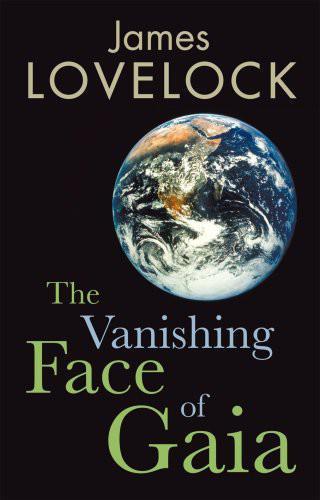
The Vanishing Face of Gaia: A Final Warning
by
James E. Lovelock
Published 1 Jan 2009
Latest news: Edward and David Wilson’s investigation of socio‐genesis point the way to the next large step in perceiving Gaia. A superorganism is something that includes individual organisms but exists as a recognizable entity. It is a category that includes the colony nests of social insects and human cities. The concept of the superorganism could provide a helpful step from the stark individualism of the selfish gene to the all inclusive holism of Gaia. An important part of this step was described by Bert Hölldobler and Edward O. Wilson in their recent book The Superorganism. These authors re‐define the superorganism as an entity in which the genes of the constituent organisms still rule but evolution proceeds through the selection of the colonies.
…
The most inflexible of these rules so far discovered is what scientists call the second law of thermodynamics. Indeed I find it odd that this is not the first of their laws. This second rule simply does not allow anyone or anything to grow younger or, as they would say, allow water to run uphill by itself. Perhaps the selfish genes that William Hamilton and Richard Dawkins described, and that are common to all living things, should have been called wilful, because they are forever trying to break this rule. Especially, they would like to live for ever and they have no pity for the life that carries them, only an insistent urge to reproduce.

The Magic of Reality: How We Know What's Really True
by
Richard Dawkins
Published 3 Oct 2011
J., 87 time: beginning of, 164–5; measuring, 44–6, 100 time machine, 14, 46–9, 256 Tiv tribe, 124 Tlaloc, 125 tossing a coin, 222, 224–6 tradition, 241 tsunami, 200–1, 223 universe: alien life forms, 180–1; big bang, 164–5, 177; distances, 166–7; expanding, 177; laws of, 252–3; observable, 164–5; origin myths, 162–4 uranium, 92, 134 uranium-238, 44–5, 46 Utnapashtim, 146–8 vaccination, 232 Venus, 116, 132 Vesuvius, eruption, 214 viruses, 227, 230, 234 Vishnu, 163 vision, 194–7 volcanoes, 43, 67, 69–70, 212, 214 watches, 243–4 water on other planets, 190–2 water wheels, 141–2, 143 Watson, James, 17–18 Wegener, Alfred, 208–9, 210 weightlessness, 111–12 West African legends, 124, 149, 204–5, 217 whales, 18, 58, 72, 157, 197 white dwarf, 133 Wilde, Oscar, 216 Wilkins, Maurice, 18 wind, 90, 173, 213, 229 winter, 100, 102–3, 107–9, 118–21 Wittgenstein, Ludwig, 105 Wright, Elsie, 245–6 X-rays, 18, 157, 158, 167, 196–7 Zulu creation myth, 163 About the Author and Illustrator Richard Dawkins was first catapulted to fame with his iconic book The Selfish Gene, which he followed with a string of bestselling books, including the phenomenal The God Delusion. The Magic of Reality is his first book written for a younger, more general readership and it also became an immediate bestseller in its original, colour illustrated hardback edition. Dawkins is a fellow of the Royal Society and the Royal Society of Literature, and has won numerous awards.
…
Dave McKean has illustrated and designed many award-winning books and graphic novels. He has created hundreds of album, comic and book covers, and has designed characters for two of the Harry Potter films. He has also directed two feature films, MirrorMask and Luna. Also by Richard Dawkins The Selfish Gene The Extended Phenotype The Blind Watchmaker River Out of Eden Climbing Mount Improbable Unweaving the Rainbow A Devil’s Chaplain The Ancestor’s Tale The God Delusion* The Greatest Show on Earth* * and published by Black Swan TRANSWORLD PUBLISHERS 61–63 Uxbridge Road, London W5 5SA A Random House Group Company www.transworldbooks.co.uk THE MAGIC OF REALITY A BLACK SWAN BOOK: 9780552778053 Version 1.0 Epub ISBN 9781409011415 First Published in Great Britain Black Swan edition published 2012 Copyright © Richard Dawkins 2011 Illustrations copyright © Dave McKean 2011 Richard Dawkins has asserted his right under the Copyright, Designs and Patents Act 1988 to be identified as the author of this work.
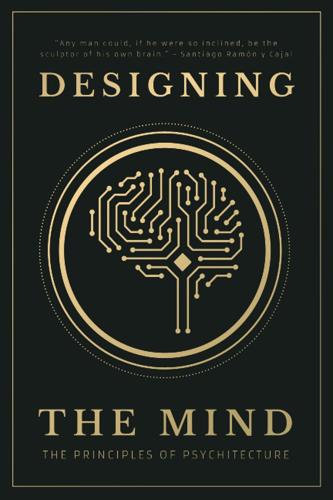
Designing the Mind: The Principles of Psychitecture
by
Designing The Mind
and
Ryan A Bush
Published 10 Jan 2021
Jonathan Gutman, “Means–end chains as goal hierarchies,” Psychology & Marketing 14, no. 6 (1997): 545–60, https://doi.org/10.1002/(SICI)1520-6793(199709)14:6<545::AID-MAR2>3.0.CO;2-7. “Are Animals Stuck in Time? - PsycNET,” accessed November 25, 2020, https://doi.apa.org/doiLanding?doi=10.1037%2F0033-2909.128.3.473. Richard Dawkins, The Selfish Gene: 30th Anniversary Edition--with a New Introduction by the Author. Chapter 1: Why Are People?, n.d. Ted Chu, Human Purpose and Transhuman Potential: A Cosmic Vision of Our Future Evolution (San Rafael, CA: Origin Press, 2014). Ran R. Hassin, John A. Bargh, and Shira Zimerman, “Automatic and Flexible,” Social Cognition 27, no. 1 (2009): 20–36.
…
Tirch, “Cognitive Behavioral Therapy for Jealousy,” International Journal of Cognitive Therapy 1, no. 1 (February 1, 2008): 18–32, https://doi.org/10.1521/ijct.2008.1.1.18. “Attachment Styles of Predictors of Relationship Satisfaction Within Adulthood – Nevada State Undergraduate Research Journal,” accessed November 25, 2020, http://nsurj.com/v4-i1-2/. Richard Dawkins, The Selfish Gene: 40th Anniversary Edition. Chapter 1: Why Are People?, 4th edition (New York, NY: Oxford University Press, 2016). Paul Bloom, Against Empathy: The Case for Rational Compassion, n.d. Barbara Oakley et al., eds., Pathological Altruism. Chapter 2: Empathy-Based Pathogenic Guilt, Pathological Altruism, and Psychopathology, n.d.
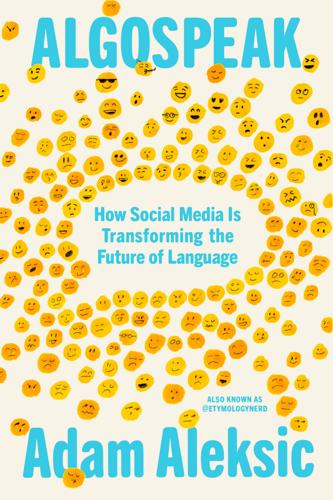
Algospeak: How Social Media Is Transforming the Future of Language
by
Adam Aleksic
Published 15 Jul 2025
We’ve already learned how the word “okay” became popular through what was essentially a meme fad in Boston newspapers. People have always been using words and phrasal templates that they find funny. Despite this, it’s hard to pinpoint what exactly a meme is. The modern concept of a “self-replicating unit of culture” traces back to the 1976 Richard Dawkins book, The Selfish Gene, but the label has since been applied to various definitions across disciplines. Most interpretations agree that it’s a type of idea characterized by its ability to spread between people. Memes have always been kind of like a virus. Whenever you learn a new word, you can think of it as coming into contact with a parasite.
…
See also For You page recruitment, 128–29, 132 Reddit, 58–61, 66, 70–71, 76, 124–25, 127–29, 132, 134, 139–41, 152, 158–59 red scarf, 100–101 Red Zone, 24 regional accents, 81–82 regional variations, 51 Renaissance (Beyoncé), 148 Renegade dance, 159 repetition, 40 resistance, 25, 147 “retarded,” 30 retention rate, 69, 72, 83–88, 93, 107 rhoticity, 83–85 rhymes and slant rhymes, 21 ricecels, 135 rickroll, 128, 140 right-wing extremists, 127–28 rising tone, 83, 85 Riverdale (TV show), 67–68 rizz, 45–47, 108, 166, 182, 191–92 rizzler, 44–45, 47 Rizzler song, 44–47, 51, 119, 133, 153, 191, 193 roasties, 125 Rogers, Everett, 53–54 Roman Empire, 72–73, 175, 199 Rome, ancient, 5, 7, 24 ropemaxx, 136 r/RateMe, 132, 134 RuPaul’s Drag Race (TV show), 148 Russia, 29 S SA, 23–24 salt transition, 198 sasaeng, 100 “Say So” (song), 42 scat singing, 192 Scooby-Doo, 192 Scunthorpe problem, 17 search engine optimization (SEO), 163–65, 168, 182–83, 207, 221 secks, 22 second-person pronouns, 63–65, 71 Secret Garden, The (Burnett), 168 seggs, 22–23, 26, 31–33, 50, 140, 199 seggseducation, 22–23, 26 self-bowdlerizing, 18, 22 self-harm, 6 self-images, 203–4 Selfish Gene, The (Dawkins), 49 self-referential language, 200 semantic drift, 177 semantic gaps, 56–57, 100, 110–11 semiotics, 21 sensitive words, 6 serve, 147–48, 206 Sesame Street (TV show), 84 sewerslide, 23, 199 sex euphemism treadmill and, 31 substitutions for, 21–23 s*x, 22 s3x, 22 sex educators, 22, 26 sexism, 137 sex positivity, 20 sexual assault, 23–24 sexual etymologies, 20 sexuality, 204 sexual market value, 124 sexual minorities, 30 sexual redistribution, 130 sexy, 21 shadowbanning, 15–17, 26 Shakespeare, William, 18, 199 shared cultural references, 197–200 Shein, 174 “she rizz on my gyat till I ohio,” 48 “she X on my Y till I Z,” 48 shit, substitution for, 18, 21 shitpost, 128, 140 short-form video addictive nature of, 12 caption strategies and, 61 community guidelines and, 16 hot pepper emoji and, 21 linguistic impacts of, 10, 39–41, 169, 219 marketing and, 172 memes and, 57 short memory of internet and, 143 story structure and, 201–2 shuǐchǎn, 209 side-eye, 42–44, 51–52, 56, 73 sidequests, 202 sigma, 44–45, 47–48, 50–51, 133, 141–42, 191–92, 206 sigma face tutorials, 133 “Sigmas of Australia” (Payman), 210, 211 silence, avoiding, 85 Silent Generation, 186 Silicon Valley ethos, 120–21 Simon, Herbert A., 68 simplicity, 202 Simpsons, The (TV show), 193–94 sis, 146 skibidi, 34, 44–45, 47, 56, 70–71, 73, 108, 119, 166, 182, 191–92, 199, 219 skibidi toilet, 70 Skibidi Toilet (film and YouTube series), 212–13 skull emoji , 54–55, 188 slang, 12, 38.
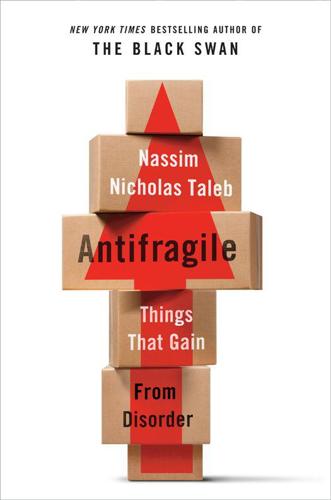
Antifragile: Things That Gain From Disorder
by
Nassim Nicholas Taleb
Published 27 Nov 2012
The whole system is governed by mechanical laws that organize the relations of each part. Just as Newton discovered the laws of gravity that govern motion in the natural world, Adam Smith discovered the laws of supply and demand that govern the motion of the economy. Smith used the metaphor of the watch and the machine in describing social systems.” Selfish gene: The “selfish gene” is (convincingly) an idea of Robert Trivers often attributed to Richard Dawkins—private communication with Robert Trivers. A sad story. Danchin’s systemic antifragility and redefinition of hormesis: Danchin and I wrote our papers in feedback mode. Danchin et al. (2011): “The idea behind is that in the fate of a collection of entities, exposed to serious challenges, it may be possible to obtain a positive overall outcome.
…
So the antifragility of concern here is not so much that of the organisms, inherently weak, but rather that of their genetic code, which can survive them. The code doesn’t really care about the welfare of the unit itself—quite the contrary, since it destroys many things around it. Robert Trivers figured out the presence of competition between gene and organism in his idea of the “selfish gene.” In fact, the most interesting aspect of evolution is that it only works because of its antifragility; it is in love with stressors, randomness, uncertainty, and disorder—while individual organisms are relatively fragile, the gene pool takes advantage of shocks to enhance its fitness. So from this we can see that there is a tension between nature and individual organisms.
…
Simple can be harder than complex: You have to work hard to get your thinking clean to make it simple. But it’s worth it in the end because once you get there, you can move mountains.” BusinessWeek, May 25, 1998. Heuristics as powerful—and necessary—shortcuts: Gigerenzer and Brighton (2009) bust the following myth, as presented in The Selfish Gene by Richard Dawkins, in which we find the following about how a baseball outfielder catches a ball: “[H]e behaves as if he had solved a set of differential equations in predicting the trajectory of the ball.… At some subconscious level, something functionally equivalent to the mathematical calculations is going on.”

Behave: The Biology of Humans at Our Best and Worst
by
Robert M. Sapolsky
Published 1 May 2017
Williams then elaborated on how the more standard genetic system, in species from noneusocial insects to us, was incompatible with group selection. Animals don’t behave for the good of the species. They behave to maximize the number of copies of their genes passed into the next generation.* This is the cornerstone of sociobiology and was summarized in Dawkins’s famed sound bite that evolution is about “selfish genes.” Time to see its building blocks. INDIVIDUAL SELECTION Passing on lots of copies of one’s genes is accomplished most directly by maximizing reproduction. This is summarized by the aphorism “A chicken is an egg’s way of making another egg”—behavior is just an epiphenomenon, a means of getting copies of genes into the next generation.
…
Phenotypic: examining, say, eyebrow appearance and mate choice, or whether unibrows absorb more heat from sunlight, thereby damaging the frontal cortex, producing inappropriate social behavior and decreased reproductive success. This was the debate—is evolution best understood by focusing on genotype or phenotype? The most visible proponent of the gene-centered view has long been Dawkins, with his iconic “selfish gene” meme—it is the gene that is passed to the next generation, the thing whose variants spread or decline over time. Moreover, a gene is a clear and distinctive sequence of letters, reductive and irrefutable, while phenotypic traits are much fuzzier and less distinct. This is the core of the concept of “a chicken is just an egg’s way of making another egg”—the organism is just a vehicle for the genome to be replicated in the next generation, and behavior is just this wispy epiphenomenon that facilitates the replication.
…
This is the core of the concept of “a chicken is just an egg’s way of making another egg”—the organism is just a vehicle for the genome to be replicated in the next generation, and behavior is just this wispy epiphenomenon that facilitates the replication. This gene-centered view can be divided in two. One is that the genome (i.e., the collection of all the genes, regulatory elements, and so on) is the best level to think about things. The more radical view, held by Dawkins, is that the most appropriate level is that of individual genes—i.e., selfish genes, rather than selfish genomes. Amid some evidence for single-gene selection (an obscure phenomenon called intragenomic conflict, which we won’t go into), most people who vote for the importance of gene(s) over phenotype view single-gene selfishness as a bit of a sideshow and vote for the genome level of selection being most important.

How Many Friends Does One Person Need? Dunbar’s Number and Other Evolutionary Quirks
by
Robin Dunbar
and
Robin Ian MacDonald Dunbar
Published 2 Nov 2010
At the time, evolutionary thinking in the behavioural sciences was apt to be somewhat loose and wayward. We returned from fieldwork in Ethiopia in late 1975 to find the world had been turned upside down. Edward O. Wilson had just published his Sociobiology: The New Synthesis and Richard Dawkins would publish The Selfish Gene the following year. It was a life-changing experience for all of us. Overnight, we were made to think about evolutionary processes in a much more rigorous way. We were being asked to return [Page 5] to a more strictly Darwinian view, after decades of increasingly lax, often speculative, thinking that had come to characterise much of organismic biology in mid-century.
…
Given that religious behaviour seems to be universal among humans, and is often very costly, then it becomes increasingly difficult to duck the issue and write it off as froth on the evolutionary landscape. On the face of it, religious behaviour seems to be at odds with everything biologists hold dear. The reductionist view sees us as mere vehicles for our selfish genes – yet religions embrace charity to [Page 280] strangers, submission to the will of the community, and even martyrdom. Even so, the biggest stumbling block for evolutionary biologists has been recognising that religion might have a functional advantage. If a biological trait has evolved, we want to know what use it is – and by that we mean how its possession makes an individual better adapted to survive and pass their genes on to the next generation.
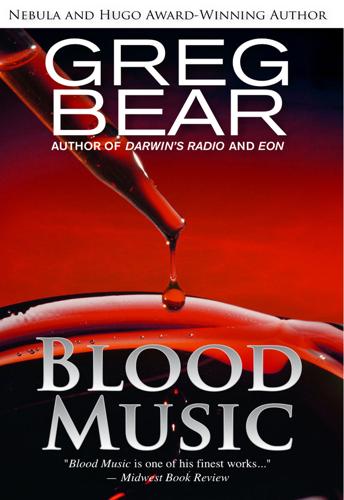
Blood Music
by
Greg Bear
Published 19 May 2014
Prokaryotes don’t have introns. But I’ve been thinking the last few months. Plenty of time to think, without work. Brooding.” He stopped and shook his head, folding and unfolding his hands, twisting his fingers together. “And?” “It’s very strange, Edward. Since early med school we’ve been hearing about ‘selfish genes,’ and that individuals and populations have no function but to create more genes. Eggs make chickens to make more eggs. And people seemed to think that introns were just genes that have no purpose but to reproduce themselves within the cellular environment. Everyone jumped on the bandwagon, saying they were junk, useless.
…
He was tired and old memories of Vergil’s carelessness towards others were returning; he was exhausted, and Vergil was still droning on, saying nothing that really made sense. Vergil slammed his fist on the edge of the table. “They made me do it! The goddamn genes!” “Why, Vergil?” “So they won’t have to rely on us anymore. The ultimate selfish gene. All this time, I think the DNA was just leading up to what I’ve done, you know. Emergence. Coming out party. Tempting somebody, anybody, into giving it what it wanted.” “That’s nuts, Vergil.” “You didn’t work on it you didn’t feel what I felt. It should have taken a whole research team, maybe even a Manhattan Project, to do what I did.
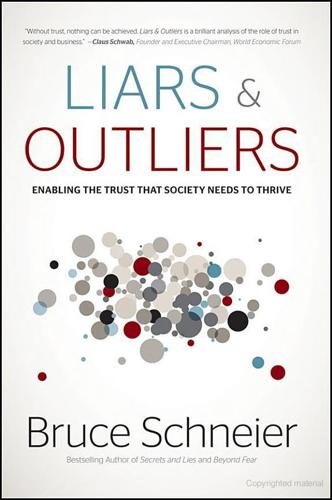
Liars and Outliers: How Security Holds Society Together
by
Bruce Schneier
Published 14 Feb 2012
Smithsonian Institution (2009), “The Archean: The First Life on Earth,” in Geologic Time: The Story of a Changing Earth, Department of Paleobiology, National Museum of Natural History, Smithsonian Institution. first animal predator Ben Harder (9 Apr 2002), “Was This the Earth's First Predator?” National Geographic. The Selfish Gene Richard Dawkins (1976), The Selfish Gene, Oxford University Press. defend against William D. Hamilton, Robert Axelrod, and Reiko Tanese (1990), “Sexual Reproduction as an Adaptation to Resist Parasites (A Review),” Proceedings of the National Academy of Sciences of the United States of America, 97:3566–73. Levi T.
…
Those that turn out to be detrimental—the overwhelming majority of them—kill or otherwise disadvantage the individual and die out. By “beneficial,” I mean something very specific: increasing an organism's ability to survive long enough to successfully pass its genes on to future generations. Or, to use Richard Dawkins's perspective from The Selfish Gene, genes that helped their host individuals—or other individuals with that gene—successfully reproduce tended to persist in higher numbers in populations. If we were designing a life form, as we might do in a computer game, we would try to figure out what sort of security it needed and give it abilities accordingly.

The Facebook era: tapping online social networks to build better products, reach new audiences, and sell more stuff
by
Clara Shih
Published 30 Apr 2009
Sometimes it is an article that was forwarded to you, something you saw in a movie, or an interesting tidbit you overheard in the hallway that reminds you of something, makes you think about something you wouldn’t have otherwise thought about, or helps you see things in a new light. From the Library of Kerri Ross C h a p te r 6 S o c i a l I n n ovat i o n 109 At the heart of these ideas, thoughts, and tidbits that inspire us are memes, a term Richard Dawkins coined in his 1976 book, The Selfish Gene, to describe the unit of information representing a basic idea that can be transferred from one individual to another. Dawkins applied evolutionary principles around how viruses propagate and mutate to explain the spread of ideas and cultural phenomena. How can product managers expose themselves to the right memes to become inspired without feeling overwhelmed?
…
See innovation rapport with customers, building/sustaining, 75-76 RDF (Resource Description Framework) file, 28 reciprocity ring, 52-56 recommendations influence of, 3 social recommendations, 101-103 reconciling grassroots initiatives, 202 recruiting, 123-124 advice for job candidates, 141 candidate references, obtaining, 134-135 credibility of recruiter, establishing, 136 employee poaching, 141-142 employer reputation, marketing, 136 keeping contact with candidates, 137 alumni networks, 139-140 financial services example, 138-139 nonplacements, 138 successful placements, 137 in Second Life, 22 social networking sites for, 124-126 sourcing candidates, 126-127 active candidates, 127-128 college students, 129-131 from specialized networks, 132-133 From the Library of Kerri Ross Skyrock passive candidates, 128-129 by “reading between the lines,” 133-134 referrals, 131-132 Red Bull Energy Drink Web site, Facebook Connect and, 41 reducing testing variance with hypersegments, 167 references customer references, 74-75 obtaining, 134-135 referrals influence of, 3 for recruiting, 131-132 relationship interest, as hypertargeting dimension, 165 relationship status, as hypertargeting dimension, 164 relationships breaking off, 49 in customer organizations, navigating, 69-71 importance in business, 3 latent value of, 48-49 shifting nature of, 211 tagging, 51 valuable relationships, discovering, 48 weak ties, maintaining, 44-47 reminders, birthday, 189 requests, asking, 56 Resource Description Framework (RDF) file, 28 return on investment (ROI) of social networking, 205 risk management, 198-200 brand misrepresentation, 200 identity, privacy, security, 198-199 intellectual property, confidentiality, 199-200 RockYou, 38 Rogers, Everett, 118 ROI (return on investment) of social networking, 205 RSS feeds, 27 Ryze, recruiting via, 125 S sales, 61-62 B2B versus B2C, 63-64 CRM versus social networking sites, 80 multiple network structures in, 79-80 online social graph benefits, 62-63 building/sustaining customer rapport, 75-76 credibility, establishing, 64-65 customer references, 74-75 first call success rate, 67-69 navigating customer organizations, 69-71 postsales customer support, 77-78 prospecting for customers, 65-67 sales team collaboration, 72-73 social capital in, 71 233 sales leads, obtaining, 65-67 Salesforce CRM, 41 Salesforce Ideas, 112 Salesforce to Salesforce, 209-210 salesmen (in social epidemics), 101 Sanrio, unsanctioned communities related to, 149-150 Schatzer, Jeff, 140 Scott, Adrian, 125 search engine marketing, 27-28 searching for friends, 189 Second Life, 21-22 security risks, 198-199 segmenting audience. See hypersegments of audience selecting hypersegments of audience, 164-167 common problems, 166 connecting with social networking goals, 166 dimensions, list of, 164-165 reducing testing variance, 167 social networking sites for corporate presence, 156 The Selfish Gene (Dawkins), 109 semantic Web, 28 setting up accounts. See Facebook, account setup shopping, 101-103 Simply Hired, 125 Skyrock, 221 From the Library of Kerri Ross 234 Slide Slide, 38 small businesses in future of social networking, 208 Social Actions, 170, 173-175 social ads, 98-99 social applications, 190 social business, future of collaboration among organizations, 209-210 community strengthening, 208 in enterprise IT, 206-207 innovator’s dilemma, 204 organizational transparency and productivity, 207 relationships, shifting nature of, 211 ROI, 205 for small businesses, 208 trends, 205-206 social capital, 206 advantages of increasing, 43-44 building, 188-192 business implications of, 44 discovering valuable relationships, 48 entrepreneurial networks versus clique networks, 49-50 flattened communication hierarchy, 52 latent value of relationships, 48-49 online networks as supplement to offline networks, 50-51 reciprocity ring, 52-56 weak ties relationships, 44-47 defined, 43 in sales, 71 social distribution, 96-97 passive word of mouth, 97-98 reaching new audiences, 101 social ads, 98-99 social shopping and recommendations, 101-103 viral marketing, 99-101 social epidemics, types of people driven by, 100-101 social filtering, 25, 29-34 social innovation.

Emergence
by
Steven Johnson
And one of the most impressive GA systems devised for the Connection Machine focused exclusively on simulating the behavior of ants. It was a program called Tracker, designed in the mideighties by two UCLA professors, David Jefferson and Chuck Taylor. (Jefferson was in the computer science department, while Taylor was a biologist.) “I got the idea from reading Richard Dawkins’s first book, The Selfish Gene,” Jefferson says today. “That book really transformed me. He makes the point that in order to watch Darwinian evolution in action, all you need are objects that are capable of reproducing themselves, and reproducing themselves imperfectly, and having some sort of resource limitation so that there’s competition.
…
Pac-Man, 177 MTV, 176, 214 Mumford, Lewis, 38, 107, 112, 146–47, 154, 242n Murray, Arnold, 43 Museum of the Moving Image, 177 music, 45, 53, 128–29, 214, 217, 258n mutations, genetic, 58, 182–83 Myst, 183–84 Nakagaki, Toshiyuki, 11 Napier, Charles James, 35 Napster, 214, 217 NASDAQ, 117 Nation, 225 National Physical Laboratory, 42, 54 natural selection, 56–63, 83, 169, 170–74, 184, 185–86, 193, 203, 204 Nature of Economies, The (Jacobs), 156 NBC, 136 near-optimal solutions, 228 Negroponte, Nicholas, 159 neighborhoods, 18, 36–38, 41, 50–51, 87–91, 96, 99, 106, 115, 119, 123, 186, 203, 204, 205, 220, 229–30, 233, 246n Netscape browser, 124–25 networks: algorithms for, 88, 89, 161 information, 96–97, 116–26, 134–35, 204–5, 217–18 neural, 18, 21, 78, 115, 118–19, 121, 127, 133–34, 142–44, 146, 198–99, 203–4, 205, 209, 223, 238n, 241n, 256n, 261n, 262n–63n television, 135–36, 159, 160 see also Internet neurons, 18, 21, 78, 115, 118–19, 121, 127, 133–34, 142–44, 146, 198–99, 203–4, 205, 209, 223, 238n, 241n, 256n, 261n, 262n–63n neurotransmitters, 115 New Age, 113–14 New Economy, 224 New Republic, 135 newspapers, 159–60, 207 New Urbanist movement, 147, 230 New York City, 50, 93, 107, 113, 230 New York City Planning Commission, 50 New Yorker, 146 New York Times, 125, 131, 257n–58n Nightline, 135 Nintendo, 176 Nixon, Richard M., 132 nonequilibrium thermodynamics, 12, 43, 52 noosphere, 115–16 nucleic acids, 85 olfactory skills, 76 online communities, 17, 148–62, 204–5 Open Shortest Path First routine, 229 Open Source, 153 orangutans, 202 order: chaos vs., 38, 52, 65, 117–23, 154, 169, 179, 218–20, 226, 237n global vs. local, 39–40, 74–80, 82, 86, 90, 93, 108–9, 218–19, 224 see also control Organic Art, 182 “organic clocks,” 20 organization: global, 224–26 goal-directed, 118 hierarchical, 15, 98, 132, 136, 145, 148–49, 153, 208, 223, 225, 263n–64n political, 67, 225–26 self-, see self-organization size limitations of, 259n–60n social, 9, 27, 33–41, 92–94, 97–100, 109, 204, 252n–54n see also systems OSS code, 175 Out of Control (Kelly), 168–69 pacemaker cells, 14–15, 16, 17, 23, 40, 64, 67, 164 PalmPilots, 54 “Pandemonium: A Paradigm for Learning” (Selfridge), 54 Pandemonium model, 53–57, 65, 169, 231 Papert, Seymour, 65, 164, 166 paradigm shift, 48–49, 64 Paradise Lost (Milton), 53–54 Pattern on the Stone, The (Hillis), 173 patterns: of behavior, see behavior development of, 49, 184–85, 246n feedback on, 40–41 of heredity, 46 hub-and-spoke, 119 letter, 54–57, 65 mathematical, 42 of movement, 18–20, 41, 168 musical, 45 recognition of, 18, 21, 22, 44–45, 52, 54–57, 65, 103–4, 123–24, 126–29, 199, 206, 220, 221, 226, 231, 233 social, 18, 36–40, 41, 49–50, 52, 91, 95, 137, 185 spatial, 20, 27, 48, 90–91, 159, 223 speech, 44–45 spontaneous, 180 temporal, 20, 27, 48, 91, 104–5 urban, 40–41, 90–91, 146, 147, 159, 223 “Perceptrons” (Minsky and Papert), 65 phase transitions, 111–12 phenotypes, 58, 59 pheromone, 52, 60–63, 64, 74, 75–76, 78, 79, 84–85, 98, 115, 167, 206, 226, 228–29, 243n–44n Phillips Interactive, 178 physics, 21, 105 Picasso, Pablo, 23 Pinker, Steven, 118 planets, rotation of, 46 “platform agonistic,” 139–40 Pleistocene era, 202, 262n plow, wheeled, 112 politics, 39–40, 67, 94–95, 161, 224–26, 264n population growth, 34, 99, 110–11, 112, 116, 164–65, 252n–53n pornography, 208 post-structuralism, 65 power law, 119 Powers of Ten, 231–32 predictions, 9, 47 Prelude, The (Wordsworth), 39 pricing, 155–56 Prigogine, Ilya, 43, 52, 64–65 prioritization, 78 probability theory, 46–47 problem-solving, 74, 79–80, 120, 126–27, 227–29, 251n–52n product placement, 214 programs, computer: artificial-life, 59–63, 65 branching paths in, 58 codes in, 169, 170–71, 173–74, 175, 180, 205–6 evolution of, 57–59, 60, 205–6 mini-, 170–74 number-sorting, 170–74, 209, 231 predator, 172–73 see also software proteins, 85 Proverbs, Book of, 71 “pseudo events,” 145 purchase circles, 221–22 Quake, 182, 183, 208–9 quality management, 67 racial diversity, 89, 95, 247n randomness, 19, 62, 77, 78–79, 87, 121, 163, 171, 220, 222–23, 244n, 247n recognition systems, 103 redwood forests, 258n reentry, neural, 256 reflexes, 38–39 Reliable Sources, 135 Renaissance, 101–2, 147 Replay, 211 “Residence in London” (Wordsworth), 27 Resnick, Mitch, 16–17, 23, 64, 76, 163–69, 180, 189, 260n Restak, Richard, 133–34 retina, 201 Rheingold, Howard, 148 Ridley, Matt, 82, 86 Rizzollati, Giaccamo, 198–99 Rockefeller Foundation, 46, 50 Roman Empire, 33, 109–10 Rosenstiel, Tom, 135 rules, 19, 180–81, 226 St. Peter’s Basilica, 105 Santa Fe Institute, 21, 39, 65, 237n Schelling, Thomas, 89, 246n search engines, 117, 121 Seattle protests (1999), 225, 226 Segel, Lee, 12–17, 18, 42, 43 self-awareness, 127–29, 199–204, 262n Selfish Gene, The (Dawkins), 59–60 self-organization: adaptation by, 18, 19–20, 119, 128, 137, 139–40 bottom-up process in, 17, 18, 22, 53–57, 66–67, 83, 97–98, 115, 116, 133, 148, 164, 166, 207, 221–23, 231 of cities, 87–100, 104–7, 109–13, 232–33 clusters in, 210–15, 219–20, 221, 226; see also aggregation computer simulations of, 59–63, 76, 163–69 of online communities, 148–62 as scientific discipline, 15–18, 20, 43, 63–67, 237n see also emergence “Self-Organizing Economy, The” (Krugman), 89 Selfridge, Oliver, 52–57, 62–65, 103, 169, 223, 231 sensory overload, 38–39, 147 serotonin, 262n Shafer, B.
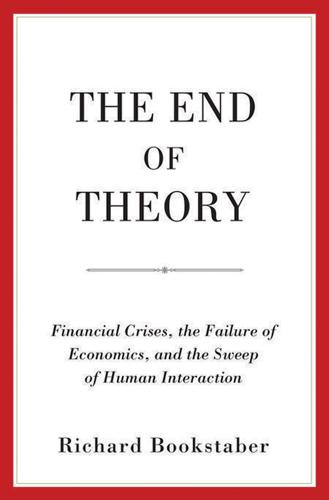
The End of Theory: Financial Crises, the Failure of Economics, and the Sweep of Human Interaction
by
Richard Bookstaber
Published 1 May 2017
It is environmentally based, so as the environment changes, we take it into account. Environment is specific to the context, because we allow the context to unfold. ECONOMICS AND THE DEDUCTIVE APPROACH Enamored as they are with deductive methods, economists continue to take omniscience as the starting assumption: that we catch the ball the hard way. The Selfish Gene’s Richard Dawkins describes our baseball player (and I suppose, by extension, bats, birds, and dragonflies): “he behaves as if he had solved a set of differential equations in predicting the trajectory of the ball.… At some subconscious level, something functionally equivalent to the mathematical calculations is going on.”19 It is very mysterious—at “some subconscious level” we are doing something “as if” we are solving a differential equation.
…
D’Agostino, Gregorio, and Antonio Scala, eds. 2014. Networks of Networks: The Last Frontier of Complexity. Switzerland: Springer International. Davis, Martin. 1958. Computability and Unsolvability. McGraw-Hill Series in Information Processing and Computers. New York: McGraw-Hill. Dawkins, Richard. 2006. The Selfish Gene: 30th Anniversary Edition with a New Introduction by the Author. Oxford: Oxford University Press. Dawson, John W. 1997. Logical Dilemmas: The Life and Work of Kurt Gödel. Wellesley, MA: A. K. Peters. Dostoyevsky, Fyodor. 2015. Notes from the Underground. CreateSpace Independent Publishing Platform.
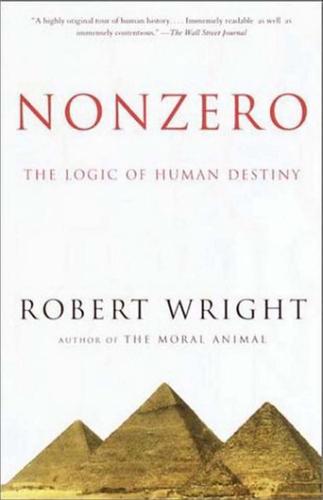
The Moral Animal: Evolutionary Psychology and Everyday Life
by
Robert Wright
Published 1 Jan 1994
And this century more than a few archaeologists and cultural anthropologists joined him. Toward the end of the century, a new source of excessive cynicism about religion sprang up—not Marxist in orientation but Darwinian. Arch-Darwinian Richard Dawkins titled the last chapter of his 1976 book The Selfish Gene “Memes: The New Replicators.” Trying to accent the parallel between cultural and genetic evolution, Dawkins posited the existence of “memes”—units of cultural information that can spread through a culture rather as genes spread through a gene pool. It’s worth taking a quick look at the Dawkinsian view of cultural evolution—in part to see where it goes awry in depicting religion, but also for a larger reason: this initially disorienting, topsy-turvy view of cultural change is ultimately fertile, and will surface repeatedly in this book.
…
Daniels, Peter T., and William Bright, eds. (1996) The World’s Writing Systems. Oxford University Press. Davie, Maurice R. (1968) The Evolution of War. Kennikat Press. Davis, Morton D. (1989) “Game Theory,” in Encyclopaedia Brittanica, 15th ed., vol. 19, pp. 643–49. Dawkins, Richard (1976) The Selfish Gene. Oxford University Press. ——— (1986) The Blind Watchmaker. W. W. Norton. ——— (1997) “Human Chauvinism.” Evolution 51:1015–20. De Long, J. Bradford, and Andrei Shleifer (1993) “Princes and Merchants: European City Growth Before the Industrial Revolution.” Journal of Law and Economics 36:671–702.
…
religion ancient civilizations and chiefdoms and economic development and life’s meaning and Marxist view of Protestant Reformation recovery from social collapse and virus analogy see also God religious determinism reproductive independence revolution of the intellectuals Ridley, Matt right action Rise of the West, The (McNeill) risk diffusion Roman Empire barbarians and barbarism of Romans demise of eastern half’s survival economic decline tax apparatus Rousseau, Jean-Jacques Russian Empire Sabloff, Jeremy Sahlins, Marshall Sargon of Akkade savagery see also hunter-gatherer societies Schelling, Thomas Schmandt-Besserat, Denise Schrödinger, Erwin Science and Civilization in China (Needham) segmentary societies segregation distorters Selfish Gene, The (Dawkins) sensory technology sentience: see consciousness Serbia serfdom Service, Elman servomechanisms sexual selection Shang civilization Sherif, Muzafer Shih Huang-ti Shleifer, Andrei Shoshone Indians Silk Road Siriono people slavery Sleidan, Johann slime mold Smith, Adam Smith, John social complexity: of barbarian communities civilizational history and in hunter-gatherer societies measures of micro-environmental variation and non-zero-sum interactions and population growth/density and social status and warfare and writing and social Darwinism social evolution: see cultural evolution social life social status agriculture’s origins and Big Man societies and global concord and natural selection and social complexity and Solomon Islanders Solow, Robert M.
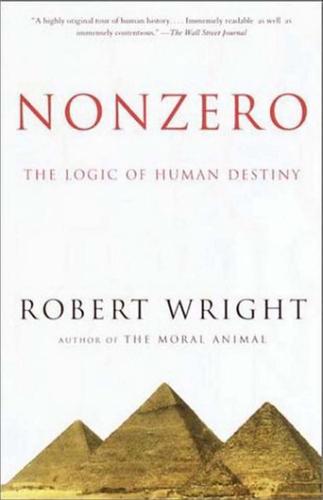
Nonzero: The Logic of Human Destiny
by
Robert Wright
Published 28 Dec 2010
And this century more than a few archaeologists and cultural anthropologists joined him. Toward the end of the century, a new source of excessive cynicism about religion sprang up—not Marxist in orientation but Darwinian. Arch-Darwinian Richard Dawkins titled the last chapter of his 1976 book The Selfish Gene “Memes: The New Replicators.” Trying to accent the parallel between cultural and genetic evolution, Dawkins posited the existence of “memes”—units of cultural information that can spread through a culture rather as genes spread through a gene pool. It’s worth taking a quick look at the Dawkinsian view of cultural evolution—in part to see where it goes awry in depicting religion, but also for a larger reason: this initially disorienting, topsy-turvy view of cultural change is ultimately fertile, and will surface repeatedly in this book.
…
Daniels, Peter T., and William Bright, eds. (1996) The World’s Writing Systems. Oxford University Press. Davie, Maurice R. (1968) The Evolution of War. Kennikat Press. Davis, Morton D. (1989) “Game Theory,” in Encyclopaedia Brittanica, 15th ed., vol. 19, pp. 643–49. Dawkins, Richard (1976) The Selfish Gene. Oxford University Press. ——— (1986) The Blind Watchmaker. W. W. Norton. ——— (1997) “Human Chauvinism.” Evolution 51:1015–20. De Long, J. Bradford, and Andrei Shleifer (1993) “Princes and Merchants: European City Growth Before the Industrial Revolution.” Journal of Law and Economics 36:671–702.
…
religion ancient civilizations and chiefdoms and economic development and life’s meaning and Marxist view of Protestant Reformation recovery from social collapse and virus analogy see also God religious determinism reproductive independence revolution of the intellectuals Ridley, Matt right action Rise of the West, The (McNeill) risk diffusion Roman Empire barbarians and barbarism of Romans demise of eastern half’s survival economic decline tax apparatus Rousseau, Jean-Jacques Russian Empire Sabloff, Jeremy Sahlins, Marshall Sargon of Akkade savagery see also hunter-gatherer societies Schelling, Thomas Schmandt-Besserat, Denise Schrödinger, Erwin Science and Civilization in China (Needham) segmentary societies segregation distorters Selfish Gene, The (Dawkins) sensory technology sentience: see consciousness Serbia serfdom Service, Elman servomechanisms sexual selection Shang civilization Sherif, Muzafer Shih Huang-ti Shleifer, Andrei Shoshone Indians Silk Road Siriono people slavery Sleidan, Johann slime mold Smith, Adam Smith, John social complexity: of barbarian communities civilizational history and in hunter-gatherer societies measures of micro-environmental variation and non-zero-sum interactions and population growth/density and social status and warfare and writing and social Darwinism social evolution: see cultural evolution social life social status agriculture’s origins and Big Man societies and global concord and natural selection and social complexity and Solomon Islanders Solow, Robert M.
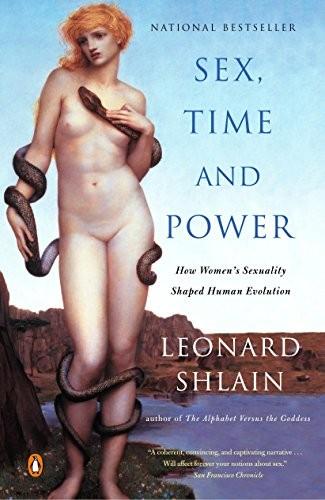
Sex, Time, and Power: How Women's Sexuality Shaped Human Evolution
by
Leonard Shlain
Published 2 Aug 2004
The Descent of Man: And Selection in Relation to Sex. Princeton: Princeton University Press. Davis, D. E. 1964. “The Physiological Analysis of Aggressive Behavior,” in W. Etkin, ed., Social Behavior and Organization Among Vertebrates. Chicago: University of Chicago Press. Dawkins, Richard. 1976. The Selfish Gene. Oxford: Oxford University Press. Dawkins, Richard. 1995. River out of Eden: A Darwinian View of Life. New York: Basic Books. Deacon, Terence. 1997. The Symbolic Species. New York: Norton. Delaney, Janice; Mary Jane Lupton; and Emily Toth. 1979. The Curse: A Cultural History of Menstruation.
…
-nurture debate, xiv, 232 Navajo Indians, 94 Neanderthals, 7n, 290 neocortex, 19, 144 neomammalian brain, 144 Newton, Isaac, 244 Nicholson, Paula, 65 Nietzsche, Friedrich, 73, 244, 304, 339 Nightingale, Florence, 254 Nin, Anaïs, 254 nirvana, 361 Nolan, Steve, 369 Noonan, Katherine, 48 NPR, 363n nutrition, see diet “obstetrical dilemma,” 8n Odyssey (Homer), 304 Oedipus Rex (Sophocles), 255 Oefner, Peter, 371n Ojibwa Indians, 112 On Human Nature (Wilson), 235 orgasm, 16, 69–82 bipedalism and, 71–72 breast-feeding and, 82 in childbirth, 75, 80–82 circumcision and, 92–93 Coolidge Effect and, 75 Cuddles Theory of, 71, 73 frustration and, 74–75 G spot and, 79–80 man-woman relationship and, 73, 75 mate selection and, 76–77 men’s sexual goals and, 76–78 mistiming of, 73–75, 92–93 multiple, 74 in nonhuman females, 69–70 Pole Ax Theory of, 71–72 romance and, 77 timing of, 92–93 uneven distribution of, among women, 70–71 Upsuck Theory of, 71, 72–73 Origins Reconsidered (Leakey and Lewin), 265–66 Ortega y Gasset, José, 279 Ortner, Sherry, 342 Osler, William, 342n–43n ovaries, 85–86, 154 ovulation, 15–16, 20, 153, 154, 157n, 327 hidden, see cryptic ovulation own-kill taboo, 111 oxygen, viii, 25–26, 41, 43, 123, 195n, 336 iron’s affinity for, ix oxytocin, 82 paleomammalian brain, 144 Pan paniscus, see bonobos Pan troglodytes, see chimpanzees paramenstrum, 153–54, 158 Pascal, Blaise, 277 paternity, 289–99, 309, 316 awareness of, 290–95, 308–9, 338 bride-barter and, 314–19 fatherhood and, 296 in indigenous peoples, 301–2 manhood and, 296 partible, 302 personal responsibility and, 297 and power to name, 293 recognition of mortality and, 289–91, 295, 297 relationship between sexes and, 297–299, 302–3 wisdom, knowledge and, 293–94 women’s knowledge of, 322–23, 330 patriarchy, 345 definition of, 339 persistence of, 359–60 resentment of women and, 348–49 testosterone and, 343 see also misogyny Patton, George, 272 Paul, Saint, 181n, 339, 374n Pauling, Linus, 131, 131n Pavlov, Ivan, 173–74 pelvis, bipedal, 4–5, 8n penis, 228 vulnerability of, 220–21, 221n Perry, John, 78 Pert, Candace, 156–57 Peterson, Dale, 102n Pfeiffer, John, 269 pharynx, 192–93, 195–96 pheromones, 53, 218, 353 photosynthesis, 120–21 Piaget, Jean, 268, 270, 270n, 301 pica syndrome, 151 Pico della Mirandola, Giovanni, 340 Picture of Dorian Gray, The (Wilde), 97 Pinker, Steven, 190, 206 placenta, 27–28, 29, 29n Plains Indians, 142 Plato, 224, 244, 339 pleiotropism, 24 Pliny, 64, 339 Plutarch, 165 Pole Ax Theory, 71 polyps, 32, 33 pornography, 351–52, 359 Potts, Malcolm, 227 Power, Camilla, 65, 190 pregnancy: amino acids and, 124 birth control and, 363 fatty acids and, 126 hemorrhoids and, 34–35 in hunter-gatherer societies, 30–31 iron and, x, 26–27 length of, 179–80 lunar cycles and, 164, 179–80 meat hunger in, 152 prolonged childhood and, 5 serial, 31 sex determination in, 228 Prehistory of the Mind, The (Mithin), 269 premature ejaculation, 74, 92–93 primates, xi, 105n, 111n, 123n, 316n, 353 color vision in, 245 estrus in, 15–16 hominid, 3–4 hunting by, 101 infanticide by, 49–50 masturbation in, 158n menopause in, 87 menstruation in, 17, 53 monogamy in, 213–14 sexual dimorphism in, 54 social arrangements of, 316 stereoscopic vision in, 176 see also bonobos; chimpanzees; gorillas Profet, Margie, 47, 57, 66–67 progesterone, 33, 62, 86, 95, 124, 126–127, 154, 155, 157 Prometheus, myth of, 121 prostitution, 237–38, 359 proteins, 123–24 “prudent mother hypothesis,” 87–88 psychic hermaphroditism, 227–28, 258 puberty, 137–45, 343 group play and, 344–46 initiation rites in, 142–43 masturbation in, 158–60 misogyny and, 343–46 myelination of brain and, 143–46 postpubescent males and, 138–39, 145, 235 sexual dimorphism and, 140–41 sexual identity and, 235 testosterone and, 139–40, 143, 145 see also menarche Pueblo Indians, 256 punctuated equilibrium, 6 Purifications (Empedocles), 270 Quest for the Holy Grail, myth of, xxv rape, 24–25, 25n, 73, 139 as rare sexual strategy, 220–22 reason, 262, 276, 280 red blood cells, viii, ix, xi, 26, 28n, 40, 43 life span of, 42 Redgrove, Peter, 153, 182 Red Queen, The (Ridley), xivn reductionism, 263 relationships: anima-animus duality and, 217–19, 222–225 asymmetry of, 14–15 commitment and, 328–29 and control of women’s sexuality, 338–339, 349 cooperation and, 323–24 courtship and, 324–25, 327 cryptic ovulation and, 48–49 division of labor in, 8n, 339, 341–42 evolutionary bottleneck and, 5–8, 14 family and, 330–31 fatherhood and, 323–24, 328 Homo sapiens’ metamorphosis as a species and, 360–61 incest taboo and, 311–12 language and, 191–92 love and, 324–27, 329 male aggression and, 24–25 and male’s qualifications as mate, 327–30 marriage and, 311, 325–26, 329 menopause and, 96 orgasm and, 73, 75 paternity and, 297–99, 302–3 small talk and, 222–23 technology and, 339, 363–64 see also anima-animus duality; men; misogyny; women religion: circumcision and, 374n–76n homosexuality and, 231–32 see also superstition Rich, Adrienne, 187 Ridley, Matt, xivn, 149 Rilke, Rainer Maria, 261, 351 Rodwell-Wilton, Sue, 124 romance, 77, 351, 351n Rosenberg, Karen, 8n Rousseau, Jean-Jacques, 286 Rubinstein, Boris, 153 runaway selection, 46n language development and, 192 Russell, Bertrand, 280 Sahtouris, Elizabet, 167n Sanger, Margaret, 335 Santayana, George, 3 Sappho, 254 Sartre, Jean-Paul, 188 satori, 361 Savanna Theory, 104–5 schizophrenia, 233–34 Schopenhauer, Arthur, 339 Schreiner, Olive, 101 science, 263 self, concept of, 268 self-awareness, 168–69, 169n, 275–76 self-delusion, 275–76 death and, 278, 279–81 humor and, 281–82 Selfish Gene, The (Dawkins), 349n Selye, Hans, 157 semantics, 262 semiessential amino acids, 123 sentience, 167–68, 167n Sentinel Behavior, Theory of, 251–52 sequential hermaphroditism, 228–29 Seven Tables of Creation, The, 379n sexual dimorphism, 53–54 during puberty, 140–41 synchronized menstruation and, 53–54 sexual selection, xiv–xv, 46n, 129 baldness and, 249 development of language and, 189, 192, 205–6 fitness and, 14 see also natural selection Shakespeare, William, 178n, 203, 283 Shaler, Nathaniel, 277 Sharanhua tribe, 113 Shekina, concept of, 257 Sherfey, Mary Jane, 94n Short, Roger, 227 Show-Off Theory, 112 Shuttle, Penelope, 153, 182 Sibley, Charles, 371n siblingcide, 212 simultaneous hermaphroditism, 227–28 Siriono tribe, 302 Siskind, Janet, 113 Sisyphus, myth of, 282–83 Small, Meredith, 149, 237 Smuts, Barbara, 356 Socrates, 244, 340 Sophocles, 25, 255 soul, 278 species, 5–6, 227 speech, see language Spock, Benjamin, 85 Stanford, Craig, 165 Stein, Gertrude, 254 Strassman, Beverly, 30, 31, 66 stress, 138, 150, 160 subincision, 142n–43n suicide, 272, 282–83 Sung Ping Law, 178n superstition: afterlife and, 277–80 ancestor worship and, 279 anxiety and, 276–77 death and, 276–77 mortuary rites and, 278–79, 278n self-deception and, 275–76, 278–81 Susu tribe, 180 Suzuki, D.
…
For example, the Californian Yurok men would retire to their sweat lodge to periodically renew their spirituality. Bathing, fasting, and gashing their legs with quartz crystals until blood freely flowed down their legs were central to their ritual.9 *Richard Dawkins, in his influential 1976 book, The Selfish Gene, introduced the concept of the meme. A meme is a purely mental idea that spreads from one individual to another, passed along by fashion or language, until it takes on a life of its own. Certain rites, ideas, trends, customs, insights, superstitions, and linguistic expressions mysteriously become woven into the fabric of culture.
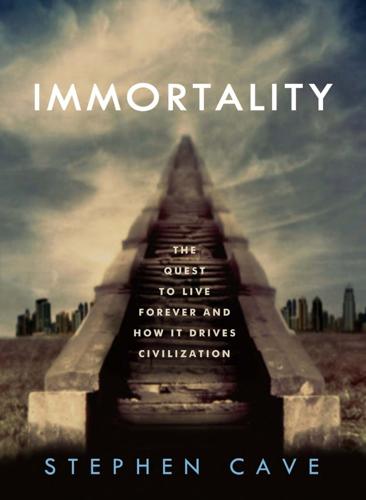
Immortality: The Quest to Live Forever and How It Drives Civilization
by
Stephen Cave
Published 2 Apr 2012
The Zygmunt Bauman quotes are from his fascinating book Mortality, Immortality, and Other Life Strategies (Polity, 1992), which I will be citing often. The two quotes by Robert Jay Lifton are from The Future of Immortality and Other Essays for a Nuclear Age (Basic Books, 1987). The Richard Dawkins quote is from The Selfish Gene (Oxford University Press, 1976). The Raymond D. Gastil quote is from his article “Immortality Revisited” in Futures Research Quarterly 9, no. 3 (1993). An example of the work of Antonio Damasio connecting emotions to the aim of survival is his book Descartes’ Error (Grosset Putnam, 1994). The James Chisholm quote is from Death, Hope and Sex: Steps to an Evolutionary Ecology of Mind and Morality (Cambridge University Press, 1999).
…
CHAPTER 9: THE IMMORTAL SEED Although there are countless books on Alexander the Great available, there is only one book-length treatment of his mother that I am aware of: Olympias: Mother of Alexander the Great by Elizabeth Carney (Routledge, 2006). Einstein’s consoling words are from a letter he wrote to the Dutch physicist Heike Kamerlingh Onnes’s widow, February 25, 1926. The Aristotle quote is from De Anima, book 2, chapter 4, translated by J. A. Smith (available online). The Richard Dawkins quote is from his classic The Selfish Gene (Oxford University Press, 1976), which remains a superb introduction to the gene’s-eye view of life. A good introduction to cells, genes and their role in humans is How We Live and Why We Die by Lewis Wolpert (Faber, 2009). All quotes by Lynn Margulis are from her excellent book written with Dorion Sagan What Is Life?

Economists and the Powerful
by
Norbert Haring
,
Norbert H. Ring
and
Niall Douglas
Published 30 Sep 2012
Proposers in such economically advanced cultures have a stronger tendency to share. Thus the conclusion by the researchers seems justified that the notion of homo economicus is only adequate for children and primitive societies (Heinrich et al. 2001). The idea of homo economicus conforms to the interpretation of Darwinism popularized by the book The Selfish Gene by Richard Dawkins (1973). “If you look at the way natural selection works, it seems to follow that anything that has evolved by natural selection should be selfish,” writes Dawkins, thus providing a rationalization for taking homo economicus as the norm. However, this view ignores that cooperation helps individuals to survive and reproduce in a hostile environment.
…
Das, Jishnu and Qui-Toan Do. 2009. “U.S. and Them: The Geography of Academic Research.” World Bank Policy Research Paper 5152. Datta, A. 2003. “Divestiture and its Implications for Innovation and Productivity Growth in US Telecommunications.” Southern Economic Journal 69: 644–58. Dawkins, Richard. 1976. The Selfish Gene. Oxford: Oxford University Press. Deeds, David L. and Donna M. Decarolis. 1999. “The Impact of Stocks and Flows of Organizational Knowledge on Firm Performance: An Empirical Investigation of the Biotechnology Industry.” Strategic Management Journal 20: 953–68. Degeorge, Francois, Francois Derrien and Kent Womack. 2007.
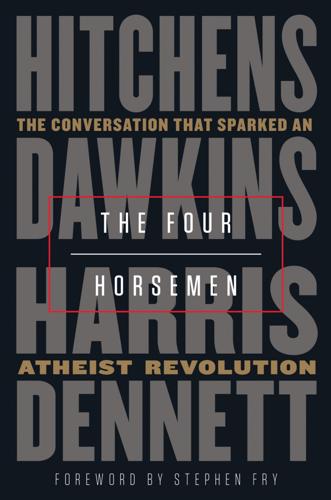
The Four Horsemen
by
Christopher Hitchens
,
Richard Dawkins
,
Sam Harris
and
Daniel Dennett
Published 19 Mar 2019
His co-authorship with Asbjørn Steglich-Petersen of The Philosophical Lexicon has alone guaranteed him eternal glory. Like Einstein, Noah and the Kennedys, Professor Dennett is a keen sailor. RICHARD DAWKINS (d’Artagnan) is responsible for introducing evolutionary biology and Darwinism to generations. His books The Selfish Gene and The Blind Watchmaker, never out of print, continue to inspire, inform and amaze. As the first holder of Oxford University’s Simonyi Professorship for the Public Understanding of Science, he acquired a worldwide reputation as a sceptic, ‘passionate rationalist’, ‘proud atheist’, and witty exposer of charlatanism and fakery couched in pseudoscientific language.

Boom: Bubbles and the End of Stagnation
by
Byrne Hobart
and
Tobias Huber
Published 29 Oct 2024
Recent examples of memes as investable narratives include not only Tesla’s market capitalization, which now exceeds the combined market cap of the world’s largest carmakers, but also the GameStop short squeeze, which was driven by the Reddit forum WallStreetBets, and the rise of Dogecoin, a meme-based cryptocurrency also promoted by Musk. 287 Shiller, “Narrative Economics.” 288 Richard Dawkins, The Selfish Gene, 30th Anniversary Edition (Oxford: Oxford University Press, 2006). 289 Another of the most well-known examples is the 17th-century tulip mania. The problem with this case study is that—as revisionist scholarship has recently uncovered—the bubble was largely invented by Christian moralists to blame the “nouveau riche” of the Dutch Golden Age. 290 The disasters that strike in There Will Be Blood are cast as acts of God—vengeance for a failure to properly bless the well.
…
“CO2 Emissions (kg per PPP $ of GDP)—China, United States, Middle Income,” The World Bank, https://data.worldbank.org/indicator/EN.ATM.CO2E.PP.GD?locations=CN-US-XP. Davis, Scott, Carter Copeland, and Rob Wertheimer. Lessons from the Titans: What Companies in the New Economy Can Learn from the Great Industrial Giants to Drive Sustainable Success. New York: McGraw-Hill, 2020. Dawkins, Richard. The Selfish Gene, 30th Anniversary Edition. Oxford: Oxford University Press, 2006. Doerr, John, “Salvation (and Profit) in Greentech,” Ted Talk, 2007, https://www.ted.com/talks/john_doerr_sees_salvation_and_profit_in_greentech. Downey, Morgan, Oil 101. Wooden Table Press, 2009. Epstein, Alex. Fossil Future: Why Global Human Flourishing Requires More Oil, Coal, and Natural Gas—Not Less.

The Moral Landscape: How Science Can Determine Human Values
by
Sam Harris
Published 5 Oct 2010
Many people imagine that the theory of evolution entails selfishness as a biological imperative. This popular misconception has been very harmful to the reputation of science. In truth, human cooperation and its attendant moral emotions are fully compatible with biological evolution. Selection pressure at the level of “selfish” genes would surely incline creatures like ourselves to make sacrifices for our relatives, for the simple reason that one’s relatives can be counted on to share one’s genes: while this truth might not be obvious through introspection, your brother’s or sister’s reproductive success is, in part, your own.
…
Proceedings and addresses of the American Philosophical Association, 61, 441–458. Dawkins, R. (1994). Burying the vehicle. Behavioural and Brain Sciences, 17 (4), 616–617. Dawkins, R. (1996). Climbing mount improbable. New York: Norton. Dawkins, R. (2006). The God delusion. New York: Houghton Mifflin. Dawkins, R. ([1976] 2006). The selfish gene. Oxford, UK: New York: Oxford University Press. Dawkins, R. (2010a, March 28). Ratzinger is the perfect pope. Washington Post: On Faith. Dawkins, R. (2010b, April 13). The pope should stand trial. The Guardian. De Grey, A. D. N. J., & Rae, M. (2007). Ending aging: The rejuvenation breakthroughs that could reverse human aging in our lifetime.

Darwin Among the Machines
by
George Dyson
Published 28 Mar 2012
The ghost of Samuel Butler haunts the fringes of evolutionary biology today. How random is random variation? Is life the work of natural selection alone—or is there an element of intelligent search, if not design? In 1876, Butler explained the continuity of the germ plasm and hinted at what Richard Dawkins (1976) would label the Selfish Gene: “See the ova only and consider the second ovum as the first two ovas’ means not of reproducing themselves but of continuing themselves—repeating themselves—the intermediate lives being nothing but, as it were, a long potato shoot from one eye to the place where it will grow its next tuber.”55 This insight would be immortalized as the aphorism that a chicken is an egg’s way of making another egg.
…
See natural selection Selective Sequence Electronic Calculator (SSEC), 103–104 Selectron memory, 104, 148 self-organizing systems, 2, 18, 71, 85, 109–110, 170, 175–78, 181–86, 188–90 self-replication and self-reproduction, distinguished, 29–32, 123 self-reproducing automata, 32, 76, 77, 108–109, 125, 175, 214 Selfish Gene (Dawkins), 27 Selfridge, Oliver, 72, 184–85, 189 semaphore, 133 semiconductors, 8, 108, 202–203, 208. see also microprocessors; integrated circuits; silicon Sevastopol, fall of, 139 Seven Clues to the Origin of Life (Cairns-Smith), 118, 202 sex, origins and importance of, 19, 115, 116 Shamir, Adi, 165 Shannon, Claude E., 61, 99, 144, 150 Shapin, Steven, 6 Shapley, L.

10% Human: How Your Body's Microbes Hold the Key to Health and Happiness
by
Alanna Collen
Published 4 May 2015
If cooperation helps members of a group, especially where the members are unrelated, to reproduce, it is not just individuals that are selected by their environments, but entire groups. Richard Dawkins would remind us that both individual and group selection are missing the point. In his 1976 book The Selfish Gene, he argued the perspective of several prominent evolutionary biologists – that it is genes that natural selection ultimately chooses between. Bodies, he says, are mere vehicles for genes, enabling them to live an immortal existence. They, like individuals, have variation, can be replicated, and are passed between generations.
…
Page numbers in italic refer to the illustrations abscesses 37 Academic Medical Center, Amsterdam 255, 256–7 accidents, Toxoplasma infection and 97 acetate 107, 195, 217 acne 23, 129, 141, 142–4, 168 Actinobacteria 226, 230 adenoviruses 75, 76–7, 78 adipose cells see fat cells Adlerberth, Ingegerd 131 adrenalin 104–5 affluence, and twenty-first-century illnesses 46–8 Africa: asthma 50 births 214 diet and gut microbiota 184, 185, 262–3 Ebola epidemic 115 garden warblers 55 personal hygiene 176 age, and twenty-first-century illnesses 48–50 ageing 228, 231, 235, 268 agriculture: antibiotic use 147–8, 160–4, 165, 272 Neolithic Revolution 184–5, 201 Akkermansia 283–4 Akkermansia muciniphila 79–81, 193–4, 258 Alabama 46 alcohol hand-rubs 175 Alexander, Albert 37 Aliivibrio fischeri 12 Allen-Vercoe, Emma 109–10, 111, 112, 259–60, 261–2 allergies 24, 38–9, 43, 44, 48 affluence and 46–7 after Caesarean birth 212 antibacterial products and 171 antibiotics and 130, 166–7 antihistamines 39, 116, 269 bottle-feeding and 223 in developing countries 47 family size and 117, 118 gender differences 51, 52 hygiene hypothesis 117–19, 121, 130–2, 145 immune system and 44–5, 116–21, 130–1 increase in incidence 52, 116 and infections 116–19 microbes and 131–2 probiotics and 242 racial differences 50 Alm, Eric 253 Alps 115 alternative medicine 137–9 Alvarez, Walter 238 Amazon rainforest 262, 282 American Gut Project (AGP) 4–5, 281–2 Amerindians 262–3 amino acids 70, 71, 180, 271 ammonia 176–7 ammonia-oxidising bacteria (AOBs) 176–8 anaemia 221 anaerobic bacteria 95 anaphylactic attacks 38 androgens 143 Animalia 16, 17 animals: allergies to 119 antibiotics as growth promoters 147–8, 160–4, 272 coprophagy 245–8 Neolithic Revolution 184–5, 201 transmission of microbes 115 see also individual types of animal anthrax 115 antibacterial products 169–72, 175, 214–15 antibiotics 2, 147–68, 276–7, 281, 285 and acne 143 and allergies 130, 166–7 antibiotic resistance 152, 153, 154–5, 156 and autism 86, 90–2, 94–5, 106–7, 111, 165–6 and autoimmune diseases 167–8 benefits of 168 and birth 163, 215 broad-spectrum antibiotics 156, 270 and Clostridium difficile 157, 234, 250 development of 36–7 and diarrhoea 155, 157, 241–2 effects on microbiota 129, 157–8, 161 as growth promoters for animals 147–8, 160–4, 272 harmful side-effects 5–6, 155–6, 269 and immune system 129–30 and irritable bowel syndrome 64–5 lactobacilli and 206–7 and life expectancy 28 and obesity 147–9, 159–65 residues in vegetables 164–5 and stomach ulcers 74 and twenty-first-century illnesses 158–9 unnecessary prescriptions 152–3, 269–70 antibodies 30, 139, 231 antidepressants 269 antigens 132–3 antihistamines 39, 116, 269 ants 84 anxiety disorders 42, 51, 99, 175 AOBiome 176, 177–8 apes 16 apocrine glands 177 appendicitis 14, 15–16, 43, 223, 266 appendix 13–16, 21, 45, 203, 208, 266 appetite control 67–8, 72–3, 80, 196 arabinoxylan 194 Arabs 46 archaea 8 Argentina 210 arginine 271 arthritis 183, 196 asbestos 170 Asia 47, 214 Asperger syndrome 87 asthma 44, 49 antibiotics and 130, 166–7 bottle-feeding and 223 fibre and 199 immune system and 116, 196 incidence 38, 39, 47, 52 racial differences 50 wealth and 47 Atkinson, Richard 74–5, 77 attention deficit hyperactivity disorder (ADHD) 42, 98–9, 105, 108, 175 aureomycin 160 Australia: acne 142 birth 214–15 encephalitis lethargica 173 faecal transplants 250–1, 259 fruit and vegetable consumption 273 racial differences in diseases 50 sugar consumption 188, 189 twenty-first-century illnesses 46 autism 38, 43, 44, 49, 85–96 after Caesarean sections 212 antibiotics and 86, 90–2, 94–5, 106–7, 111, 165–6 autistic spectrum disorder (ASD) 87–8 behaviour problems 88, 108–9 and coprophagy 246 and ear infections 166 faecal transplants and 254–5 gastrointestinal symptoms 45, 85–7, 90 gender differences 51, 89 genetics and 89 immune system and 106, 108 incidence of 42, 46, 53, 88–9 lipopolysaccharide and 141 microbes and 90–2, 94–6, 109–12, 165–6 probiotics and 242 propionate and 107–9 racial differences 50–1 savants 87, 108 symptoms 87–8, 282 autoimmune diseases 24, 38, 39–41, 43 affluence and 47 and antibiotics 167–8 appendix and 16 and Caesarean sections 212 in childhood 49 in developing countries 47 faecal transplants and 254 gender differences 51, 52, 267 immune system and 44–5 incidence of 46 IPEX syndrome 133 probiotics and 242 racial differences 50 T helper cells and 119 see also individual diseases autointoxication 236–8 autopsies 33 babies 273–4 antibiotics 152–3, 158, 159–60, 161–2 bottle-feeding 220–6, 273–5 breast-feeding 216–20, 221, 222–6, 230–1, 274–5, 278, 285 Caesarean births 209–15, 220, 274, 278 caul births 214 colic 215–16 ear infections 151 gut microbiota 131, 217 immune system 208–9, 217, 227 infant mortality 222–3 probiotics and 242 transfer of microbes to 204–9, 212–14 vaginal delivery 209–12, 220, 274, 278 water birth 214 weaning 226 wet nursing 220–1 Bäckhed, Fredrik 66–7, 71, 147, 160 bacteria: alcohol hand-rubs 175 ammonia-oxidising bacteria 176–8 anaerobic bacteria 95 antibacterial products 169–72 antibiotic resistance 152, 153, 154–5, 156 collateral damage from antibiotics 155–6, 157 colony-forming units 244 DNA sequencing 17 lipopolysaccharide 140 and mitochondria 123, 123 prebiotics 258 probiotics 237–44 quorum sensing 136 and stomach ulcers 74 see also gut microbiota; microbes and individual types of bacteria bacteriocins 161, 206–7, 208 bacteriocytes 205 bacteriotherapy 245, 248 Bacteroides 23, 157, 194 Bacteroides fragilis 134–5 Bacteroides plebeius 192 Bacteroidetes 68–9, 70, 81, 185, 186, 187, 191, 226, 282 BALB mice 99 barley 139, 199 basal ganglia 174–5 bats 1–2, 100, 115, 124–5, 181, 182, 236 beans, fibre content 190, 191 Bedouin 201 Bedson, Henry 26 bees 124 behaviour: in autism 88, 108–9 changed by microbes 84–5, 96–7, 112–13 neurotransmitters 103, 104–5 propionate and 107–9 Bengmark, Stig 46 Bifidobacterium 193–4, 196–7, 217, 226, 239, 240, 258, 284 Bifidobacterium infantis 93 bile 145, 263 bioluminescence 12 bipolar disorder 105 birds 54–6, 205 birth 278 antibiotics in 163, 215 Caesarean section 209–15, 220, 274 caul births 214 childbed fever 32–3 home births 214 hormones 220 hygiene 214–15 transfer of microbes to babies 205–7, 212–13 vaginal deliveries 209–12, 220, 274, 278 water birth 214 bison 125–6 Blaser, Martin 162, 163, 182 blood 181 blood pressure 199, 231, 256 blood sugar levels 256 blood transfusions 249, 253, 254 bobcats 84, 97 Body Mass Index (BMI) 41, 69, 79, 161, 188, 193, 197 body odour 175–7 Bolte, Andrew 86–7, 88, 89–92, 94–6, 110, 111, 112, 165–6 Bolte, Ellen 86–7, 88, 89–92, 94–6, 106, 110–11, 112, 165–6 Bolte, Erin 86, 110, 111–12 Borody, Tom 250–2, 254–5, 259 bottle-feeding 220–6, 273–5 Boulpon, Burkina Faso 184, 185, 190 brain: connections to gut 92–3, 104–5, 106–7, 109–10 development of 93–4 encephalitis lethargica 173–4 immune system 103–4, 105 inflammation 108 memories 108–9 microbes and 98–9 neurotransmitters 103, 104–5 obsessive-compulsive disorder 172–3, 174 propionate and 107–9 strokes 50, 107, 183, 199, 256, 268 synapses 120 tetanus 91 Whipple’s disease 85 see also mental health conditions Brand-Miller, Jennie 215–16 Brazil 46, 47, 209, 212 bread 198, 199–200, 202 breast cancer 44, 145 breast-feeding 216–20, 221, 222–6, 230–1, 274–5, 278, 285 Britain: antibiotic use 130, 150–1 breast-feeding 225 Caesarean sections 210, 211–12 Clostridium difficile 156 consumption of fats and sugar 188 diabetes in children 40–1 fall in calorific intake 189 fruit and vegetable consumption 190–1, 273 gut microbes in babies 131 obesity 42, 58 broccoli 198 bronchitis 152 ‘Bubble Boy’ 126–8, 181 Burgess, James 253 Burkina Faso 184, 185, 190, 191, 263 Butler, Chris 153–4, 155 butyrate 107, 195, 196–7, 217, 257, 284 caecum 13, 21, 45, 128 Caesarean birth 209–15, 220, 274 caffeine 73, 74 cakes 198 California Institute of Technology 134 calories: calculating contents of foods 69–70 dieting 149, 186–7 differences in weight gain 77–8 fall in consumption of 189 microbes and extraction of 67, 70–2 and obesity 56–7, 61 Campylobacter jejuni 65 Canada 46, 47, 51, 62, 99, 106, 173, 259–60 cancer: ageing and 49 blood cancer 16 bottle-feeding and 223 breast cancer 44 as cause of death 268 cervical cancer 144 chemotherapy 270 colon cancer 23–4, 144, 145, 258 diet and 183 immune system and 120–1 infections and 144 liver cancer 144–5 lymphoma 127 metabolic syndrome and 256 microbes and 144–5 obesity and 42, 50, 145 prebiotics and 258 shingles and 271 stomach cancer 144 Cani, Patrice 78–9, 80–1, 193–4, 197 car accidents 97 carbohydrates: calorie content 69 dieting 185–8 digestion of 180 effects of 198 fibre 192 oligosaccharides 216–18 types of 197–8 carbolic acid 34, 36 Carmody, Rachel 179–80, 182, 198–9 carnivores 181–2, 192, 203, 263 casein 111, 200 cats 96 cattle 12–13, 181, 192, 201, 204, 272 caul births 214 cells, mitochondria 123, 123 cellulose 191, 192 centenarians 265 Centers for Disease Control (CDC) 88–9, 152, 212 Central America 100 Centre for Digestive Diseases, Sydney 250–2, 254 cervical cancer 144 Chain, Sir Ernst Boris 37 Charles University, Prague 97 cheese 159 cheetahs 124 chest infections 153 chickens: antibiotic treatment 147–8, 165 virus disease 57, 61, 74–5, 76–7, 78 Chida, Yoichi 93 childbed fever 32–3, 34 childbirth see birth children: allergies 38–9, 116–17 antibiotic use 151, 161–2, 165–6 autism 88–9, 165–6 brain development 93–4 death rates 28, 31 ear infections 86, 87, 90, 94, 151, 152, 153, 166, 222 fat intake 190 gut microbiota 226–7 hygiene 278–9 infectious diseases 31 obesity 58, 223–4 twenty-first-century illnesses 49 see also babies Children of the 90s project 130 chimpanzees 102, 245–7 China 47, 209, 249–50 chlorinated lime 33 chlorinated water 172 chlorine 35–6, 62 chloroform 172 cholera 15, 27, 30, 34–5, 45–6, 135–7, 139 Cholera Auto-Inducer 1 (CAI–1) 136 cholesterol 194, 229, 231, 256 Church, Andrew 173–4 ciprofloxacin 157–8 cleaning products 169–72, 175, 214–15 clindamycin 157 Clinton, Bill 10 Clostridium 96, 107, 145 Clostridium bolteae 106 Clostridium difficile 90, 271 antibiotics and 156–7, 234–5, 241, 250 in babies’ gut microbiota 213 bottle-feeding and 222 deaths from 156, 245 faecal transplants 249, 250, 251, 252–3, 259, 260 Lactobacillus and 206 symptoms 156 Clostridium tetani 90–2, 94, 95, 96, 110–11 clothing 176 cockroaches 204–5 coeliac disease 39, 41, 139–40, 183, 200, 202, 212 Cold Spring Harbor Laboratory, New York State 7, 24 colds 51, 129–30, 152, 167 colic, infantile 215–16 colitis, ulcerative 42, 49, 144 colon: autointoxication 236–8 colon cancer 23–4, 144, 145, 258 colonic irrigation 237 digestion 180–1 toxic megacolon 156, 245 see also gut microbiota; inflammatory bowel disease; intestines; irritable bowel syndrome colony-forming units (CFUs), bacteria 244 colostrum 217, 219, 220 constipation 62–3, 65, 238, 251, 254 contraceptives 102 cooking food 199 coprophagy 245–8 Cordyceps fungi 84 Cornell University 230 Corynebacterium 20, 21, 168–9, 177, 213 cough, sudden-onset 155 cowpox 27, 29 cows 12–13, 181, 192, 201, 204, 272 cow’s milk 216, 221 Crapsule 259 Crohn’s disease 42, 49, 52, 144 Cuba 210 Cyanobacteria 65 cytokines 48, 105, 106, 141 D-Day landings (1944) 37, 150, 158 dairy produce 200, 201 Dale, Russell 173–4 dander 119 Danish National Birth Cohort 161–2 Darwin, Charles 280 The Descent of Man 13, 14 The Expression of Emotions in Man and Animals 92 On the Origin of Species 124, 279 Dawkins, Richard, The Selfish Gene 125, 126 death 235–6 babies and children 28, 31, 222–3 causes of 268 Clostridium difficile 245 diarrhoea and 15 dementia 105 dendritic cells 219 Denmark 52, 161–2, 167–8 deodorants 175, 177, 178 deoxycholic acid (DCA) 145 depression 42, 45, 51, 65, 98, 103–4, 105, 141 dermatitis 23 developing countries: antibiotic use 153–4 twenty-first-century illnesses 53 Dhurandhar, Nikhil 56–7, 61, 74–5, 76–7, 82, 149 diabetes 38, 44, 139, 269 and antibiotics 167–8 bottle-feeding and 223, 224 breast-feeding and 231 and Caesarean sections 212 in childhood 4, 119 diet and 183 faecal transplants 255 gender differences 267 incidence of 39, 40–1, 47, 52, 158 leaky guts and 140 lipopolysaccharide and 141 metabolic syndrome 256–7 obesity and 42, 50, 256 probiotics and 242–3, 257–8 racial differences 50 symptoms 39–40 diarrhoea: antibiotics and 155, 157, 241–2 and autism 45, 85–7, 90 as cause of death 15, 27, 268 cholera 34–5, 135–7 Clostridium difficile 156, 222, 234–5, 241 and coprophagy 246 faecal transplants 250–1, 260 irritable bowel syndrome 62–5 probiotics and 241–2 diet see food dieting 59, 148–9, 184, 186–7, 197, 199 digestive system 180 see also colon; gut microbiota; intestines digoxin 271 diphtheria 27, 28 diseases: antibodies 30, 139, 231 diet and 183 epidemiology 35, 45–6 genes and 10, 43–4, 268 germ theory 34, 236 infectious diseases 27–9, 43, 115, 118, 153–4 obesity as infectious disease 75–7 pathogens 28–9 transmission of microbes 114–16 vaccinations 25, 26–7, 29–31, 35, 91, 118, 165 water-borne diseases 34–6 see also antibiotics and individual diseases DNA: and cancer 120–1, 144, 145 DNA sequencing 4, 9–11, 16–17, 65 human genome 279–80 doctors: antibiotic prescriptions 152–3, 277 hospital hygiene practices 31–4 Dodd, Diane 100–1 dogs 84, 85, 124 Dominguez-Bello, Maria Gloria 214, 278, 285 Dominican Republic 210 donors: faecal transplants 261, 262 sperm donors 260–1 dopamine 104–5 drugs: gut microbiota and 270–2 see also antibiotics dummies 151 dysbiosis 64–6 dysentery 15, 27 E. coli 62, 239, 254 ear infections 86, 87, 90, 94, 151, 152, 153, 166, 222 East Africa 176 Eastern Europe 47 Ebola 115 eccrine glands 177 ecological succession 208 eczema 38, 49 antibiotics and 130, 166–7 bottle-feeding and 223 incidence 39, 47, 52 prebiotics and 258 probiotics and 242 Eggerthella lenta 271 Egypt 201 Eiseman, Ben 251 elephants 245 Elizabeth II, Queen of England 265 emotions, and irritable bowel syndrome 92–3 encephalitis lethargica 173–4 energy: in food 69–72 mitochondria 123 storage in body 77–8 enterobacteria 131 Enterococcus 219 environment, and twenty-first-century illnesses 44 enzymes 12–13, 180, 182, 191, 192, 263 epidemiology 35, 45–6 epinephrine 104–5 Epstein-Barr virus 127 Eubacterium rectale 197 Eukarya 16 Europe: acne 142 antibiotic use 150, 163–4, 272 birth 214–15 breast-feeding 224 encephalitis lethargica 173 fat consumption 188 hygiene hypothesis 117 racial differences in diseases 50 see also individual countries evolution 11–12, 44, 84–5, 109, 124–6 fabrics, clothing 176 Faecalibacterium 284 Faecalibacterium prausnitzii 197 faeces: and birth 206, 207 coprophagy 245–7 DNA sequencing microbes in 23 faecal transplants 245, 248–57, 258–62 see also gut microbiota families, microbiotas 228 farming see agriculture Fasano, Alessio 136–7, 139–40, 200 fat cells: appetite control 72, 73 fibre and 196 lipopolysaccharide and 141 in obese people 78–9, 141 in pregnancy 230 storage of fat 72 FATLOSE (Faecal Administration To LOSE insulin resistance) 256–7 fats: calorie content 69, 77–8 consumption of 188, 189–90 dieting 186–8 digestion of 71, 180 high-fat diets 192–3, 194 fatty acids 180, 188 fibre: and Akkermansia 81, 193–4 and appendicitis 15 and butyrate 196–7 consumption of 190–1 in faeces 23 Five-a-Day campaign 273 and gut microbiota 191–9, 202–3, 204, 263, 276, 282–4 and obesity 192–5, 197 prebiotics 258 wheat and gluten intolerance 199–202 Finegold, Sydney 95–6, 106–7, 109 Firmicutes 68–9, 70, 81, 161, 185, 186, 187, 191, 226, 282 First World War 28, 36 fish, gut microbiota 205 Five-a-Day campaign 273 Fleming, Sir Alexander 36, 37, 154, 156 flies, fruit 100–1 Florence 184, 190, 191 Florey, Ethel 37 Florey, Howard 36–7 flour, fibre content 198 flu 27, 28, 48, 50, 129, 152, 167 folic acid 227–8 food 179–203, 272–3 and ageing 231 allergies and intolerances 38, 47, 49, 199–202 antibiotic residues in 164–5 calorie content 69–72 consumption of fats 188 cooking 199 digestion of 23 fibre content 190–9, 202–3, 273, 276, 282–4 and gut microbiota 184–8 healthy diet 183–4 Neolithic Revolution 184–5 packaged foods 182–3, 202 preservatives 202 sugar consumption 188–9 weaning babies 226 Food and Drug Administration (FDA) 172, 252, 272 food poisoning 15, 63–4, 65, 258 food supplements, prebiotics 258 formula milk 220–6 France 115, 160–1, 211 free-from foods 200 free will 112 Freud, Sigmund 98, 238 frogs 83–4, 124 fructo-oligosaccharides (FOS) 193–4, 258 fructose 180, 188 fruit 198, 273, 276 fruit flies 100–1 fungi 8, 84 galacto-oligosaccharides 258 galactose 207, 216 gangrene 34 garden warblers 54–6, 57, 73, 77, 78 gastric bypasses 81–2 gastritis 74 gastroenteritis 15, 16, 62, 63–4, 65, 167, 172, 222 Gattaca (film) 280 Ge Hong, Handbook of Emergency Medicine 249–50 gender differences: autism 51, 89 Toxoplasma infection 96–7 twenty-first-century illnesses 51–2, 267 Generation X 224 genes: appetite control 67–8 and autism 89 cholera bacteria 136–7 coeliac disease 139–40 faecal transplants 261 and gut microbiota 227 human genome 3–4, 7–10, 43–4, 279–80 in human microbiome 8, 11, 279 and lactose intolerance 201 and leaky gut 196–7 mutations 44 natural selection 125, 126 and obesity 60 and pheromones 102 and predisposition to disease 10, 43–4, 268 sperm donors 260–1 and vitamins 228 and weight control 71–2 genome-wide association studies (GWAS) 268 gentamycin 161 George V, King of England 265 germ-free mice 17–18, 66–9, 128, 134, 230 germ theory of disease 34, 236 Germany 46–7 giardiasis 15, 27 glucose 39–40, 180, 207, 216, 229, 256, 257 gluten 42, 111, 139–40, 142, 199–202 glycerols 180 gnotobiotic mice 17 goats 115, 201 Gombe Stream National Park, Tanzania 246 gonorrhoea 215 Goodall, Jane 246 Gordon, Jeffrey 18, 24, 67, 247, 262 GPR43 (G-Protein-coupled Receptor 43) 195–6, 195 grains 190, 191, 194, 197, 198 Gram-negative bacteria 140 Gram-positive bacteria 140 Gray, George 61 Group B strep 215 gut see colon; intestines ‘gut feelings’ 104 gut microbiota 2–4, 18, 21–4 and ageing 231, 235 American Gut Project 281–2 antibiotics and 157–8, 161 in appendix 14–16, 266 and autism 106, 165–6 bottle-feeding and 221–2 as cause of ill-health 236–7 in children 226–7 diet and 184–8 and digoxin 271 and drug outcomes 270–2 faecal transplants 245, 248–57, 258–62 and fibre 191–9, 202–3, 204, 263, 276, 282–4 and gastric bypasses 81–2 genes and 227 and infantile colic 216 and irritable bowel syndrome 63–6 and leaky gut 194–7 meat-eaters 191–2 and mental health conditions 99–100 and nutrition 180–2 and obesity 23–4, 66–72, 76 prebiotics 258 in pregnancy 229, 230 probiotics 237–44 raw-food diet 198–9 role in digestion 12–13, 70–1 transfer from mothers to babies 204–9, 213, 217 tribal societies 262–3, 282 Hai, Peggy Kan 233–5, 241, 245, 250, 251, 252 hairworms 84, 85 hand-washing 172–3, 175 happiness 103–5 Harvard University 179, 182, 198 Hawaii 233–5 Hawaiian bobtail squid 11 hay fever 38, 39, 46, 116, 117, 130, 166–7, 171, 242 healthy diet 183–4 heart disease: appendix and 16 as cause of death 268 diet and 183 digoxin 271 fibre and 199 heart attacks 50, 231 heart valve disease 161 lipopolysaccharide and 141 metabolic syndrome and 256, 257 obesity and 42, 47 statins 269 Helicobacter pylori 21, 74, 144 hepatitis A 119 herbivores 181, 192, 204, 263 herd immunity 30 herons 83 hibernation 61 high blood pressure 50, 231, 256 Hippocrates 61–2, 235 HIV 254 Hoffman, Dustin 87 holobiont 126 hologenome selection 126 home births 214 Hominidae 16 Homo sapiens 16 hookworms 118 hormones: acne 143 appetite control 67–8, 72–3, 80 contraceptives 102 in farming 272 and immune system 267 insulin 167, 256 in labour 220 leptin 67–8, 72–3, 78, 80, 196 menstrual cycle 229 sex hormones 51, 52 stress hormones 93 thyroid hormones 171 horses, rolling in dirt 176 hospitals, hygiene 31–4 houses, microbes in 228–9 Human Genome Project (HGP) 3–4, 7–10, 43–4, 279–80 Human Microbiome Project (HMP) 11, 18, 19–20, 22–3, 162 human papillomavirus (HPV) 144 Humphrys, John, The Great Food Gamble 272 Hungary 33 Huntington’s disease 44 hydrogen, in babies’ breath 216 hydrogen sulphide 248 hygiene 31–4, 168–72, 175–8, 214–15, 278–9 hygiene hypothesis, allergies 117–19, 121, 130–2, 145, 266 hyperphagia 55 idiopathic thrombocytopenia purpura 254 immune system 3, 114–46 and acne 144 and ageing 231 and allergies 39, 44–5, 116–21, 130–1 antibiotics and 37, 129–30 antibodies 30, 139, 231 antigens 132–3 appendix and 14–15, 16 and autism 106, 108 in babies 208–9, 217, 227 and the brain 103–4, 105 cell types 132–3 coeliac disease 139–40 evolution 126 and fat cells 78 fibre and 195–6 flu pandemic 48 germ-free mice 128 and gluten intolerance 202 and the gut 45 hygiene hypothesis 117–19, 121, 130–2, 145 inflammatory bowel diseases 144 IPEX syndrome 133 and leaky gut 137–42, 194–7 living without a microbiota 126–8 microbes and 121, 133–5 pheromones and 101, 102 probiotics and 242–3 targets 119–21 and twenty-first-century illnesses 51–2 vaccinations and 30 see also autoimmune diseases Imperial College, London 147 India 56–7, 173, 260 Indonesia 142 Industrial Revolution 221 infant mortality 222–3 infections, and allergies 116–19 infectious diseases 27–9, 43, 115, 118, 153–4 inflammation 145–6 and acne 144 and ageing 231 fibre and 196 leaky gut syndrome 142 and mental health conditions 105, 108 in obesity 79 in pregnancy 229 and twenty-first-century illnesses 243, 268 inflammatory bowel disease (IBD) 45, 63, 66 faecal transplants 251 gender differences 51 and gut microbiota 23–4, 144 incidence of 41, 42, 47, 49 influenza 27, 28, 48, 50, 129, 152, 167 insulin 38, 139, 269 faecal transplants and 256 insulin resistance 229, 256–7 lipopolysaccharide and 141 probiotics and 257–8 type 1 diabetes 39–40, 167 intestines 18–19, 22 appendix 13–16, 21, 203, 208, 266 caecum 13, 21, 45, 128 cholera 15, 27, 30, 34–5, 45–6, 135–7, 139 coeliac disease 41, 139–40 colorectal cancers 23–4, 144, 145, 258 connections to brain 92–3, 104–5, 106–7, 109–10 dysbiosis 64–6 germ-free mice 128 immune system and 45 leaky gut 137–42, 194–7, 200 mucus lining 79–80, 80, 129, 193, 283–4 necrotising enterocolitis 222 see also colon; diarrhoea; gut microbiota; inflammatory bowel disease; irritable bowel syndrome inulin 258 IPEX syndrome 133, 135 Iran 210 irritable bowel syndrome (IBS) 43, 45, 183 antibiotics and 64–5 emotions and 92–3 faecal transplants 251 gender differences 51 gluten-free diets 201 incidence of 42, 63 and mental health conditions 44 microbes and 63–6 post-infectious irritable bowel syndrome 62, 63 probiotics and 242 Italy 131, 150, 184, 185, 190, 191 Japan 142, 192, 247, 271 Jenner, Edward 25, 29 juices 198 Jumpertz, Reiner 70 Kanner, Leo 88, 89, 108–9 Kasthala, Gita 175–6 Khoruts, Alexander 248, 249, 259, 261–2 kidney cancer 145 kissing 102 kitchens, cleaning 169 Klebsiella 23 Knight, Rob 4, 213–14, 281–2 koalas 204, 217–18 Koch, Robert 34 Kolletschka, Jakob 33 Krau Wildlife Reserve, Malaysia 1–2 Kudzu bugs 205 labour see birth lactase 215–16 lactase persistence 201 lactate 217 lactic acid 217 lactic acid bacteria 206–8, 218–19, 222, 227, 229, 237 Lactobacillus 206–7, 213, 217, 219, 229, 239–40, 244, 257–9 Lactobacillus acidophilus 237 Lactobacillus bulgaricus 237 Lactobacillus johnsonii 208 Lactobacillus paracasei 239 Lactobacillus plantarum 101 Lactobacillus reuteri 161 Lactobacillus rhamnosus 239, 242 lactose 142, 200, 201–2, 207, 215–16, 218, 237 leaky gut walls 137–42, 194–7, 200 learning 108 leeches 181, 182 legumes, fibre content 276 Lemos de Goés, Adelir Carmen 209 lentils 198 leopards 115 leptin 67–8, 72–3, 78, 80, 196 leukaemia 223 Ley, Ruth 67–8, 186, 187, 230 life expectancy 28, 49, 237, 265–6, 268 light, bioluminescence 12 lime, chlorinated 33 lions 124 lipopolysaccharide (LPS) 79–80, 140–2, 187–8, 193, 194–5, 197, 284 Lister, Joseph 34, 36 lithium 98 liver cancer 144–5 lizards 245 London: cholera epidemic 34–5, 45–6, 135 Toxoplasma 96 Louisiana 46 low-carb diets 186, 187–8 low-fat diets 186 lungs 19 lupus 39, 41, 49, 50, 168 Lyman, Flo and Kay 108 lymph glands 45, 219 lymphoma 127 lysozyme 36 MacFabe, Derrick 106–7, 108, 109, 111, 112 McMaster University, Ontario 99 macrophages 132 Malawi 262–3, 282 Malaysia 1–2, 208 mammals 16, 122, 123–4, 204 manure, antibiotic contamination 164–5, 272 marmosets 77 Marseille 160–1 Marshall, Barry 74 marsupials 217–18 Massachusetts General Hospital for Children, Boston 40, 136–7, 200 mastoiditis 151, 153 Mazmanian, Sarkis 134 measles 27, 28, 31, 38, 119, 165, 266 meat 70–1, 181, 191–2 Medical Hypotheses 110 memory 108–9 memory B cells 132 meningitis 153 menstrual cycle 229 mental health conditions 42–3, 44 drug treatment 269 encephalitis lethargica 173–4 epidemiology 46 gastrointestinal symptoms 85–7, 106 gender differences 51 immune system and 105 lipopolysaccharide and 141 microbes and 24, 93–4, 97–9 probiotics and 238, 242 Streptococcus and 174–5 see also individual conditions mercury 263 metabolic syndrome 255–7, 258 metabolism 60, 229–30 metabolites 110, 111 Metchnikoff, Elie 180, 244 The Prolongation of Life 235–6, 237, 238 methicillin 154 metronidazole 129 Mexico 210 miasma theory 31–2, 34, 35 mice: antibiotics and 162–3 characteristic behaviours 99–100 diabetes in 267 faecal transplants 257 fibre in diet 193–4 genetically obese mice 67–9, 72–3 germ-free mice 17–18, 66–9, 128, 134, 230 microbial transplants 247 number of genes 7 ob/ob mice 67–9, 72–3, 194 probiotics and 242–4 microbes: and ageing 228, 231 and allergies 131–2 antibiotics and 129 antigens 132–3 and autism 90–2, 94–6, 106, 109–12 behaviour changes in host 84–5, 96–7, 112–13 in breast-milk 218–20, 222 and cancer 144–5 culturing 9 diversity 134, 282 DNA sequencing 4–5, 11 dysbiosis 64–6 evolution 11–12, 125–6 genes 279 in genetically obese mice 67–9 germ-free mice 17–18, 66–9, 128 germ theory of disease 34, 236 habitats in human body 18–23 in the home 228–9 hospital hygiene practices 31–4 immune system and 121, 133–5 kissing and 102 living without 126–8 and memory formation 109 and menstrual cycle 229 and mental health conditions 93–4, 97–9 in mouth 20–1 and neurotransmitters 104 in nostrils 21 Old Friends hypothesis 132, 145, 266 pheromones 100–2 Robogut 110, 111 on skin 19–20, 168–9 in stomach 21 and sweat 177 transfer from mothers to babies 122, 204–9, 212–14 transmission of 114–16 tree of life 16–17 in vagina 205–9, 212–14, 229 and vitamins 228 see also bacteria; gut microbiota; viruses Microbial Ecosystem Therapeutics 260 microbiome 8, 11, 227–9, 279, 280 Middle East 58 midwives 32–3 migraine 238 migrants, and twenty-first-century illnesses 50–1 migration, garden warblers 54–6 milk: antibiotics in 164 bottle-feeding 220–6, 273–5 breast-milk 216–20, 221, 222–6, 230–1, 274–5, 278, 285 cow’s milk 216, 221 lactobacilli and 207 lactose intolerance 200, 201 marsupials 218 milk banks 218–19 milk proteins 111 wet nursing 220–1 yogurt 206, 237 Millennials 224 Miller, Anne 149–50, 158 minerals 221, 227 Minnesota 170, 172 minocycline 168 Mississippi 46 mitochondria 123, 123 MMR vaccine 165 monkeys 16, 77 moorhens 124 Moraxella 21 mouth, microbes in 20–1 MRSA (methicillin-resistant Staphylococcus aureus) 154, 171, 172, 175, 212 mucus lining, intestines 79–80, 80, 129, 193, 283–4 multiple sclerosis (MS) 38, 39, 49 antibiotics and 168 and bottle-feeding 223 in children 119 faecal transplants and 254 incidence of 41, 52, 158 probiotics and 242 racial differences 50 Mumbai 56, 61 mumps 165 Munich University’s Children’s Hospital 46 muscles, tetanus 91 mutations, genes 44 Mycobacterium 27 myositis 39 National Food Survey (UK) 188, 189 National Health Service (NHS) 138, 210, 211–12 National Institute of Health, Phoenix, Arizona 70 National Institutes for Health (US) 18 natural killer cells 219 natural selection 124–6, 206 Nature 179 Nauru 58 necrotising enterocolitis 222 necrotising fasciitis 20 Neolithic Revolution 184–5, 187, 200, 201 nerves 104–5 nervous system, multiple sclerosis 41 Netherlands 52, 255, 256–7 neuropsychiatric disorders see mental health conditions neurotransmitters 103, 104–5 New York City 96 New York University 162, 214 New Zealand 46 Nicholson, Jeremy 147, 148, 160, 161 Nieuwdorp, Max 255, 256–7 nitric oxide 177 nitrite 177 Nitrosomonas eutropha 178 Nobel Prizes 37, 74, 180, 235 nori 192 North America 50, 117, 214–15, 224–6 Northern Ireland 47 nostrils, microbes in 21 nut allergies 38, 39 nutrition see food ob/ob mice 67–9, 72–3, 194 obesity 38, 43, 44, 54–61 Akkermansia and 79–81 antibiotics and 147–9, 159–65 appetite control 67–8, 72–3, 80, 196 breast-feeding and 223–4 and Caesarean sections 212 and cancer 145 in childhood 49 in developing countries 47 and diabetes 256 diet and 183 difficulty in losing weight 59–60 faecal transplants and 255–7 and fall in calorific intake 189 fat cells 78–9 garden warblers 54–6 gastric bypasses 81–2 gender differences 51 and genetics 60 gut microbiota and 23–4, 66–72, 76 incidence of 41–2, 46, 52–3 as infectious disease 75–7 and leaky gut syndrome 140–1 and liver cancer 145 and low fibre intake 197 metabolic syndrome 255–7 racial differences 50 surgery for 61, 66 viruses and 57, 61, 74–8 Obesity Society 82 obsessive-compulsive disorder (OCD) 42, 44, 51, 98–9, 105, 172–3, 174, 212, 246 oestrogen 171 Old Friends hypothesis 132, 145, 266 oligofructose 193–4 oligosaccharides 216–18, 220, 221, 222, 226 omnivores 276 OpenBiome 253–4, 261–2 oranges 198 overweight 41–2, 58 Oxford University 36, 37 oxygen 9 oxytocin 104–5 Pacific islands 58 Pakistan 26, 131 palaeo-diet 263 pancreas 39, 40, 180, 242–3 panda, giant 181–2 Papua New Guinea 84, 142 parasites 27, 83–4, 96–7, 98, 118 Paris 96 Parker, Janet 25, 26 Parkinson’s disease 105, 173, 174, 175, 254 passwords, beneficial microbes 134–5 Pasteur, Louis 34, 236 pathogens 28–9 peanut allergy 39 pectin 192 penicillin 36–7, 150, 154, 158, 162–3, 182 penicillinase 154 Penicillium 36 Peptostreptococcaceae 222 pesticides 272 Petrof, Elaine 259–60 Peyer’s patches 128 phagocytes 120, 141 pharyngitis 152 pheromones 100–2, 177 Phipps, James 29 pigs 148 pinworms 118 plague 30 plant foods see fruit; vegetables plants, ecological succession 208 pneumonia 27, 153, 268 polio 27–8, 29, 31, 38, 266 Pollan, Michael 202 pollen 119 polysaccharides 181 polysaccharide A (PSA) 134–5 Porpyhra 192 potatoes 191 poverty 48 Prague 97 prebiotics 258 pregnancy 205 antibiotics in 163 gut microbiota 229–31 metabolic changes 229–30 probiotics in 239 toxoplasmosis 96 vaginal bacteria 207–8 preservatives, food 202 Prevotella 185, 191, 192, 194, 206, 213, 263 primates 16, 102 probiotics 237–44, 257–9 propionate 107–9, 195, 217 Propionibacterium 20, 21, 168–9, 213, 239 Propionibacterium acnes 143–4 proteins 7, 9, 180, 196–7 Proteobacteria 65, 226, 230 Pseudomonas 206, 213 psoriasis 23, 49 psychoanalysis 238 Puerto Rico 214 pulses, fibre content 276 Pyrenees 115 Queen’s University, Kingston, Ontario 259 quorum sensing 136 rabbits 245 rabies 29–30, 84, 85 racial differences, twenty-first-century illnesses 50–1 Rain Man (film) 87 ram’s horn snails 83 rashes 155 rats 18, 84, 85, 96, 107–8, 185–6, 245 raw-food diet 198–9 RePOOPulate 260 reptiles, gut microbiota 205 respiratory tract infections 152, 153, 222 rheumatoid arthritis 39, 41, 223, 254 rice 198 rickets 221 Riley, Lee 165 Rio de Janeiro 209 Robogut 110, 111, 259 rodents 245 Roseburia intestinalis 197 Rosenberg, Eugene and Ilana 126 Rowen, Lee 7–8, 24 rubella 31, 165 Rush Children’s Hospital, Chicago 92 Russia 173 Rwanda 201 rye 139, 194, 199 sac-winged bats 100, 101 Salmonella 271 Sandler, Richard 92, 94, 95 sanitation 15, 35–6 Sardinia 52 savants, autistic 87, 108 Scandinavia 188 scarlet fever 27 scent see smells scent glands 177 schizophrenia 97–8, 105, 106, 108, 141, 246 Science 179 Scientific American magazine 97 scleroderma 50 scurvy 221 seaweed 192, 247 Second World War 37, 150, 158, 189 Semmelweis, Ignaz 32–3, 34, 215 sepsis 36 septicaemia 34 serotonin 103, 104–5 Severe Combined Immunodeficiency (SCID) 127 sewage systems 15 sex, pheromones 100–2, 177 sex hormones 51, 52 sexually-transmitted diseases 28 Sharon, Gil 101 sheep 201, 204 Shigella 128 shingles 271 short-chain fatty acids (SCFAs) 107–9, 195–6, 195, 197, 198, 217, 257 sinusitis 152, 157 skin 18, 23, 45 acne 23, 129, 141, 142–4, 168 hygiene 168–9 microbiota 19–20, 168–9, 213 pheromones 101–2 psoriasis 23, 49 rashes 155 sweat 177 washing 175, 177–8 see also eczema smallpox 25–7, 29, 30–1, 38, 266 smells: faeces 248 pheromones 100–2 Smith, Mark 252–3, 259, 261–2 smoking 145 snail, ram’s horn 83 Snow, John 35, 45–6 soaps 168–71, 172, 175, 177–8 social behaviour, autism 88 Soho, London 34–5, 45–6, 135 soil: ammonia-oxidising bacteria 176 antibiotic contamination 164–5 Somalia 25, 50–1 sore throats 152, 153, 173–4 South Africa 153–4 South America 47, 173, 214 South Pacific islands 58 Spain 151 sperm donors 260–1 spores, Clostridium difficile 234 squid, Hawaiian bobtail 11 Staphylococcus 20, 21, 36, 131, 172, 177, 213, 219 Staphylococcus aureus 154, 171, 172, 271 statins 269 steroids 116 stinkbugs 205 stomach 13 cancer 144 digestion 180 gastric bypasses 61, 66, 81–2 microbes in 21 ulcers 73–4, 144 stools see faeces Strachan, David 116–17, 118–19, 121, 131 Streptococcus 20, 150, 160, 172, 173–5, 206, 213, 215, 219, 229 Streptococcus pneumoniae 217 stress: irritable bowel syndrome 63, 92–3 leaky gut syndrome and 141 and stomach ulcers 73–4 stress hormones 93 strokes 50, 107, 183, 199, 256, 268 Stuebe, Alison 225 Stunkard, Dr Albert 59 Sudden Infant Death syndrome 222–3 Sudo, Nobuyuki 93 sugars 198 digestion 70, 180 falling consumption of 188–9 high-sugar diets 185–6, 192–3 and obesity 189–90 oligosaccharides 216 Sulawesi 142 superfoods 114 supermarkets 75, 159, 169, 182–3 surgery: antibiotic use 37 Caesarean sections 209–15, 220, 274 gastric bypasses 61, 66, 81–2 hygiene 34 Sutterella 282 sweat 101–2, 176–7 Sweden 51, 66–7, 131, 150, 157 Swiss mice 99 Switzerland 52 syphilis 27, 28, 158 T helper cells 118–19, 132 T regulatory cells (Tregs) 133–4, 144, 243 Tanzania 246 tapeworms 118 Tel Aviv University 101, 126 termites 181 testosterone 171, 267 tetanus 90–1 tetracycline antibiotics 168 throats, sore 152, 153, 173–4 thyroid hormones 171 ticks 1–2 tics, physical 282 toads 83–4 tonsillitis 223 Toronto 51 Tourette’s syndrome 42, 98–9, 175, 246 toxic megacolon 156, 245 Toxoplasma 84, 85, 96–7, 98–9, 112, 261 transplants, faecal 245, 248–57, 258–62 Transpoosion 245, 248 traveller’s diarrhoea 63–4 tree of life 16–17, 123–4 trematode worms 83–4 tribal societies: gut microbiota 262–3, 282 personal hygiene 175–6 triclosan 170–2 tryptophan 103, 105 tuberculosis 27, 29, 268 Turkey 97 Turnbaugh, Peter 68–70, 160, 182 Tutsi 201 twenty-first-century illnesses 37–43, 46–53, 266–9 antibiotics and 158–9 and Caesarean sections 212 diet and 183 dysbiosis 64–5 faecal transplants and 254 gender differences 267 inflammation 243, 268 see also allergies; autoimmune diseases; mental health conditions; obesity typhoid 27, 30 ulcerative colitis 42, 49, 144 ulcers, stomach 73–4, 144 United States of America: affluence and disease 47 antibacterial products 172 antibiotic use in livestock 147–8, 164, 165, 272 antibiotics 37, 150, 151, 152, 163, 215 breast-feeding 225–6 Caesarean sections 209–10 diabetes 52, 167 encephalitis lethargica 173 faecal transplants 252–4 fall in calorific intake 189 fibre consumption 197 gut microbiota 262–3 infant mortality 222–3 infectious diseases 27 irritable bowel syndrome 63 obesity 41–2, 46, 49, 58, 75, 81 supermarkets 183 vaccination schemes 31 University of Bern 101 University of Birmingham 25–6 University of Bristol 130 University of Colorado, Boulder 4, 213, 281–2 University of Gothenburg 66, 131 University of Guelph, Ontario 109, 111, 259 University of North Carolina School of Medicine 225 University of Western Ontario 106 University of Wisconsin 74–5 unsaturated fatty acids 188 upper respiratory tract infections (URI) 152, 153, 222 urinary tract 19 urinary tract infections 155, 157 urine, triclosan in 171 US Department of Agriculture (USDA) 189 US Navy 160 uterine cancer 145 vaccinations 25, 26–7, 29–31, 35, 91, 118, 165 vagina: microbes 19, 205–9, 212–14, 229 probiotic inserts 239 vaginal birth 209–12, 220, 274, 278 vagus nerve 91, 104–5 vampire bats 124–5, 181 vancomycin 91, 161 vegans 164 vegetables: antibiotic contamination 164–5, 272 digestion 70 fibre content 190–1, 276 Five-a-Day campaign 273 prebiotics 258 vegetarian diet 71, 192 Venezuela 262–3 Vetter, David 126–8, 181 Vibrio cholerae 135–7 Vienna General Hospital 32–3 viruses 8 antibiotics and 152 and autoimmune diseases 167 chicken disease 57, 61, 74–5, 76–7, 78 flu pandemic 48 menstrual cycle 229 and obesity 57, 61, 74–8 polio 27–8, 29, 31, 38, 266 rabies 29–30, 84, 85 smallpox 25–7, 29, 30–1, 38, 266 vitamins 16, 227–8 colon and 180–1 deficiencies 221 enzymes and 263 synthesis by bacteria 23 vitamin B12 23, 228 Vrieze, Anne 255, 256–7 VSL#3 242–4 Walkerton, Canada 62 wallabies 181 warblers, garden 54–6, 57, 73, 77, 78 Warren, Robin 74 washing 172–3, 175, 177–8 Washington University, St Louis 67, 247, 262 water birth 214 water supply: antibacterial products in 171, 172 cholera epidemic 34–5, 45–6, 135 chlorination 172 and irritable bowel syndrome 62 water-borne diseases 34–6 wealth, and twenty-first-century illnesses 46–8 weaning 226 weight gain: calories and 77–8 in pregnancy 230 see also obesity weight loss: dieting 59, 148–9, 184, 186–7, 197, 199 faecal transplants and 257 garden warblers 55–6 raw-food diet 199 Wellcome Collection, London 279 West Papua 176 Western diet 185–6 wet nursing 220–1 wheat 7, 111, 139, 194 wheat intolerance 38, 199–202 Whipple’s disease 85, 106, 107 white blood cells 45 Whitlock, David 176, 177–8 whooping cough 27 Whorwell, Peter 62–3, 252 Wold, Agnes 131–2, 134 women: acne 142–3 antibiotic use 150 breast-feeding 216–20, 221, 222–6, 230–1, 274–5, 278, 285 Caesarean births 209–15, 220, 274 consumption of fats 188 death in childbirth 32–3 lupus 168 menstrual cycle 229 obesity and cancer 145 pregnancy 229–30 Toxoplasma infection 96–7 transfer of microbes to babies 204–9, 212–14 and twenty-first-century illnesses 51–2, 267 vaginal births 209–12, 220, 274, 278 World Health Organisation (WHO) 25–6, 31, 211, 225, 239, 278, 285 The Worm, number of genes 7, 8 worms 83–4, 118 wounds 34, 36 Wrangham, Richard 198–9 xylan 191 Xylanibacter 185, 191 yeasts 8 yogurt 206, 237, 239–40, 244 Zobellia galactanivorans 192 zonula occludens toxin (Zot) 136–7, 139 zonulin 137, 139–40, 200 ABOUT THE AUTHOR ALANNA COLLEN is a science writer with a master’s degree in biology from Imperial College London and a PhD in evolutionary biology from University College London and the Zoological Society of London.

T: The Story of Testosterone, the Hormone That Dominates and Divides Us
by
Carole Hooven
Published 12 Jul 2021
I took classes that I had missed out on in college, like molecular biology and genetics, and discovered that—contrary to the impression I’d gotten throughout my early schooling—I loved biology. I traveled widely, to places like Israel, Tanzania, Costa Rica, and China, and became curious about the origins of the diversity of cultures and ecologies across the globe. And I read popular science books, like The Selfish Gene by Richard Dawkins, that introduced me to how evolutionary theory could help to answer my questions about life on earth. These experiences intensified my desire to find the deepest, most powerful explanations for human behavior and converged on one question: how has evolution shaped human nature?
…
See also sex drive; sexual selection aggression and genes and sex steroids and men vs. women’s interest in men vs. women’s rates of play and puberty and reproductive system differentiation of, in fetus revenge porn Rippon, Gina risk taking “roid rage” defense Rome, ancient roosters rough-and-tumble play Royal College of Physicians Rum, Isle of running Ružička, Leopold Rwanda Saini, Angela saliva, testosterone levels in Sambia people same-sex marriages Sapolsky, Robert Saudi Arabia Savinova, Mariya Science Science and Gender (Bleier) scorpion fly scrotum seals secondary sex characteristics secretin Seidler, Maren self-control Selfish Gene, The (Dawkins) Semenya, Caster Sex and the City (TV show) sex chromosomes. See also XX chromosomes; XY chromosomes; Y chromosome birds and CAIS and sex differences. See also females; males; and specific traits and behaviors aggression and children’s behavior and cultural norms and Darwin on defined distribution, variations, and overlaps in equal rights and feminist critics and puberty and reproductive variance and sexual desire and sexual novelty and skepticism about biological explanations of sociosexuality and sports performance and testosterone and testosterone measurements and toys and violence and sex drive (libido) castration and Coolidge effect and puberty and sexual orientation and transgender people and sexism sexual assault.

Ageless: The New Science of Getting Older Without Getting Old
by
Andrew Steele
Published 24 Dec 2020
This extra descendant makes the gene for longer life a little more common in the population and, eventually, animals with this selfish gene for longevity would come to dominate. Repeat this down the generations with ever-more selfish variants, living longer and outperforming one another to an ever-greater extent as time progresses, and ageing is no longer an evolutionary advantage – indeed, it’s actively selected against, even if longer lives of individual animals are detrimental to the population as a whole. Group selection has largely fallen out of favour in modern evolutionary biology because this scenario recurs regardless of the trait you choose. Selfish genes will (almost) always create selfish creatures who take advantage of their genetically altruistic peers, eventually coming to dominate.

Green Philosophy: How to Think Seriously About the Planet
by
Roger Scruton
Published 30 Apr 2014
See also Shell Press Release, ‘Shell welcomes the letter of apology from Greenpeace’, Brent Spar Dossier, 2008, p. 112, www-static.shell.com/static/gbr/downloads/e_and_p/brent_spar_dossier.pdf. 33 See Gray, op. cit. 34 Paul Ehrlich, The Population Bomb, New York, 1968. 35 See Hollander, op. cit., ch. 2. 36 Walter Sullivan, ‘Scientists Ask Why World Climate is Changing; Major Cooling May be Ahead’, New York Times, 21 May 1975; Douglas Colligan, ‘Brace Yourself for Another Ice Age’, Science Digest, February 1973, pp. 57–61. 37 See Christopher Booker and Richard D. North, Scared to Death: From BSE to Global Warming: Why Scares Are Costing Us the Earth, London, 2009, pp. 332–3. 38 Richard Dawkins’s theory of the ‘meme’ is expounded in The Selfish Gene, London, 1976; Dan Sperber’s thoughts on the epidemiology of representations can be found in his Explaining Culture, Oxford, 1995. 39 See James Rodger Fleming, Historical Perspectives on Climate Change, Oxford, 1998, and Sir Hubert Lamb, Climate: Past, Present and Future, vols. 1 and 2, London, 1972, 1977. 40 In an interesting survey Mick Hulme has gathered together all the causes, rational, temperamental and cultural, that will inevitably prevent us from agreeing about a problem so ‘wicked’ in its ramifications as global warming.
…
David, Paul A., ‘The Historical Origins of “Open Science”: An Essay on Patronage, Reputation and Common Agency Contracting in the Scientific Revolution’, Capitalism and Society, 3.2 Article 5, 2008, www.bepress.com/cas/vol3/iss2/art5. Davies, Antony, and Yakolev, Pavel, ‘Myths and Realities Surrounding the Estate Tax’, American Family Business Foundation, www.nodeathtax.org, 2009. Dawidoff, Nicholas, ‘The Civil Heretic,’ New York Times Magazine, 25 March 2009. Dawkins, Richard, The Selfish Gene, 2nd ed., Oxford University Press, 2009. DeMuth, Christopher C., and Ginsburg, Douglas H., ‘Rationalism in Regulation’, Michigan Law Review, 108.6, April 2010, pp. 877–912. Diamond, Jared, Collapse: How Societies Choose or Fail to Survive, London, Allen Lane, 2005. Dobson, Andrew, ed., Fairness and Futurity: Essays on Environmental Sustainability, Oxford University Press, 1999.
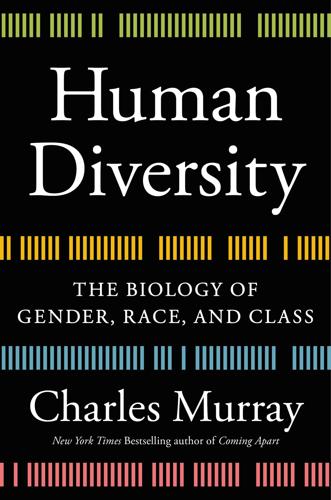
Human Diversity: The Biology of Gender, Race, and Class
by
Charles Murray
Published 28 Jan 2020
What we know as evolutionary psychology was anticipated in Darwin’s own work, but it was not until 1964 and 1972 that seminal articles by William Hamilton and Robert Trivers respectively provided a rich set of hypotheses for exploring how human nature has been shaped through evolutionary processes.15 Biologist E. O. Wilson expanded upon their work in Sociobiology (1975), and Richard Dawkins popularized some of the key themes in The Selfish Gene a year later.16 Over the course of the 1980s, psychologist Leda Cosmides and anthropologist John Tooby wrote a series of articles on evolutionary psychology that culminated in 1992 with “The Psychological Foundations of Culture,” which proposed to replace what they called the Standard Social Science Model (the intellectual version of the orthodoxy) with an Integrated Causal Model that would bring biology into the picture.17 Even as evolutionary psychology matured as a discipline and developed ways of dealing with the dangers of just-so storytelling, it was no secret that the underlying objections to evolutionary psychology were political—the virulently hostile reaction to E.
…
For a sympathetic account of the subsequent development of social constructionism, see Lock and Strong (2010). 6. This case was memorably made first in Bloom (1987) and brought up to date in Lukianoff and Haidt (2018). 7. Two classics that introduced the field now called evolutionary psychology are E. O. Wilson’s Sociobiology (1975) and Richard Dawkins’s The Selfish Gene (1976). For those who are prepared for deep dives, there’s David Geary’s The Origin of Mind: Evolution of Brain, Cognition, and General Intelligence (2004) and the sixth edition of David Buss’s classic Evolutionary Psychology: The New Science of the Mind (2019). A shorter and breezier account (but still scientifically serious) is Steve Stewart-Williams’s The Ape That Understood the Universe: How the Mind and Culture Evolve (2018). 8.
…
“Neo-Lysenkoism, IQ, and the Press.” The Public Interest no. 73: 41–59. Davis, Shannon N., and Barbara J. Risman. 2015. “Feminists Wrestle with Testosterone: Hormones, Socialization and Cultural Interactionism as Predictors of Women’s Gendered Selves.” Social Science Research 49: 110–25. Dawkins, Richard. 1976. The Selfish Gene. Oxford: Oxford University Press. Deary, Ian J., Michelle D. Taylor, Carole L. Hart et al. 2005. “Intergenerational Social Mobility and Mid-life Status Attainment: Influences of Childhood Intelligence, Childhood Social Factors, and Education.” Intelligence 33 (5): 455–72. Deary, Ian J., Graham Thorpe, Valerie Wilson et al. 2003.

The Ascent of Money: A Financial History of the World
by
Niall Ferguson
Published 13 Nov 2007
At certain times and in certain places, certain species may become dominant. But innovations by competitor species, or the emergence of altogether new species, prevent any permanent hierarchy or monoculture from emerging. Broadly speaking, the law of the survival of the fittest applies. Institutions with a ‘selfish gene’ that is good at self-replication and self-perpetuation will tend to proliferate and endure.27 Note that this may not result in the evolution of the perfect organism. A ‘good enough’ mutation will achieve dominance if it happens in the right place at the right time, because of the sensitivity of the evolutionary process to initial conditions; that is, an initial slim advantage may translate into a prolonged period of dominance, without necessarily being optimal.
…
Schumpeter, Capitalism, Socialism and Democracy (London, 1987 [1943]), pp. 80-4. 24 Paul Ormerod, Why Most Things Fail: Evolution, Extinction and Economics (London, 2005), pp. 180ff. 25 Jonathan Guthrie, ‘How the Old Corporate Tortoise Wins the Race’, Financial Times, 15 February 2007. 26 Leslie Hannah, ‘Marshall’s “Trees” and the Global “Forest”: Were “Giant Redwoods” Different?’, in N. R. Lamoreaux, D. M. G. Raff and P. Temin (eds.), Learning by Doing in Markets, Firms and Countries (Cambridge, MA, 1999), pp. 253-94. 27 The allusion is of course to Richard Dawkins, The Selfish Gene (2nd edn., Oxford, 1989). 28 Rudolf Hilferding, Finance Capital: A Study of the Latest Phase of Capitalist Development (London, 2006 [1919]). 29 ‘Fear and Loathing, and a Hint of Hope’, The Economist, 16 February 2008. 30 Joseph Schumpeter, The Theory of Economic Development (Cambridge, MA, 1934), p. 253. 31 Bertrand Benoit and James Wilson, ‘German President Complains of Financial Markets “Monster” ’, Financial Times, 15 May 2008.

When Computers Can Think: The Artificial Intelligence Singularity
by
Anthony Berglas
,
William Black
,
Samantha Thalind
,
Max Scratchmann
and
Michelle Estes
Published 28 Feb 2015
This is actually not as radical as it sounds because we are also built from pluggable components, namely our genes. But they can only be plugged together at our birth, and we have no conscious choice in their selection other than whom we select for a mate. So genes really compete with each other on a scale of millennia rather than minutes. Further, as Dawkins points out in The Selfish Gene, it is actually the genes that fight for long-term survival, not the containing organism which will soon die in any case. On the other hand, sexual intercourse for an AGI means very carefully swapping specific components directly into its own mind. An AGI would need to take great care that any new components that it incorporated into itself would actually be beneficial to the entire AGI, rather than just being beneficial to the component itself.
…
This mechanism enables traits such as resistance to antibiotics to spread rapidly between different species of bacteria. It is interesting to note that there is no direct benefit to the bacterium that expends precious energy to output the plasmid and so share its genes with other bacteria. It does very much benefit the genes being transferred. This is a case of a selfish gene acting against the narrow interests of its host organism. Another unusual aspect of bacteria is that they are also immortal. They do not grow old and die; they just divide, producing clones of themselves. So the very first bacterium that ever existed is still alive today as all the bacteria that now exist, albeit with numerous mutations and plasmids incorporated into its genes over the millennia.
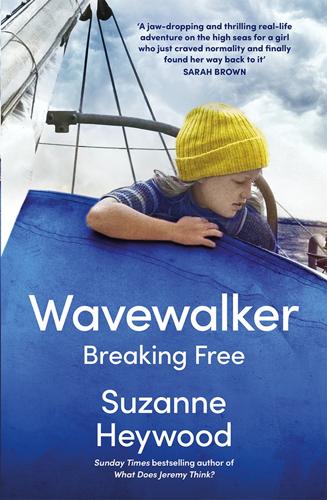
Wavewalker
by
Suzanne Heywood
Published 12 Apr 2023
I woke to more rain – an unending drizzle that made the brick buildings on the far side of the courtyard look like they’d been painted in melted wax. I went down to breakfast, this time taking my tray to the end of one of the benches where no one else was sitting, and spent the rest of the morning reading in my room. Richard Dawkins believed our only evolutionary purpose was to pass on our ‘selfish’ genes and argued that cultural ideas or memes behaved in a similar way – like the John Frum cult I’d seen replicating itself in the South Pacific, spreading across islands, gathering followers. Later that morning, I put on one of the woollen skirts Pam and I had made and went to stand in the entrance hall with my portfolio under my arm.
…
After sharing them, I produced my portfolio. ‘Whales aren’t domesticated,’ I said, ‘though they are magnificent. Look – here are some we saw while we were sailing.’ Dr Dawkins smiled. ‘These are fantastic,’ she said, leaning over to look. Then she sat back. ‘But what do you think of Richard Dawkins’s theory of the selfish gene? Can it explain the evolution of a complex organ like the human eye?’ I had views on this as well – maybe it didn’t matter that I hadn’t been to school. ‘You can explain it if you try hard enough,’ I said. ‘But it’s not easy because eyes only work when they are complete.’ I was still talking when Dr Dawkins interrupted me.

The Gene: An Intimate History
by
Siddhartha Mukherjee
Published 16 May 2016
Mutations in these genes can lead to the accumulation of DNA damage—and thus, more mutations—ultimately leading to cancer. The fourth R of gene physiology, essential to both the survival and mutability of organisms, might be “repair.” From Genes to Genesis In the beginning, there was simplicity. —Richard Dawkins, The Selfish Gene Am not I A fly like thee? Or art not thou A man like me? —William Blake, “The Fly” While the molecular description of the gene clarified the mechanism of the transmission of heredity, it only deepened the puzzle that had preoccupied Thomas Morgan in the 1920s. For Morgan, the principal mystery of organismal biology was not the gene but genesis: How did “units of heredity” enable the formation of animals and maintain the functions of organs and organisms?
…
“The genome contains”: François Jacob and Jacques Monod, “Genetic regulatory mechanisms in the synthesis of proteins,” Journal of Molecular Biology 3, no. 3 (1961): 318–56. 1953 paper: Watson and Crick, “Molecular structure of nucleic acids,” 738. “He called it DNA polymerase”: Arthur Kornberg, “Biologic synthesis of deoxyribonucleic acid,” Science 131, no. 3412 (1960): 1503–8. “Five years ago”: Ibid. From Genes to Genesis In the beginning: Richard Dawkins, The Selfish Gene (Oxford: Oxford University Press, 1989), 12. Am not I: Nicholas Marsh, William Blake: The Poems (Houndmills, Basingstoke, England: Palgrave, 2001), 56. Lewis studied mutants: Many of these mutants had initially been created by Alfred Sturtevant and Calvin Bridges. Details of the mutants and the relevant genes can be found in Ed Lewis’s Nobel lecture, December 8, 1995.
…
On the Origin of Species by Means of Natural Selection. London: Murray, 1859. Darwin, Charles, and Francis Darwin, ed. The Autobiography of Charles Darwin. Amherst, NY: Prometheus Books, 2000. Dawkins, Richard. The Blind Watchmaker: Why the Evidence of Evolution Reveals a Universe without Design. New York: W. W. Norton, 1986. ———. The Selfish Gene. Oxford: Oxford University Press, 1989. Desmond, Adrian, and James Moore. Darwin. New York: Warner Books, 1991. De Vries, Hugo. The Mutation Theory. Vol. 1. Chicago: Open Court, 1909. Dobzhansky, Theodosius. Genetics and the Origin of Species. New York: Columbia University Press, 1937. ———.

Governing the Commons: The Evolution of Institutions for Collective Action
by
Elinor Ostrom
Published 29 Nov 1990
Rational Choice in an Uncertain World. New York: Harcourt Brace Jovanovich. Dawes, R. M., J. McTavish, and H. Shaklee. 1977. Behavior, Communication, and Assumptions About Other People's Behavior in a Commons Dilemma Situation. Journal of Personality and Social Psychology 35: 1-1l. Dawkins, R. 1976. The Selfish Gene. Oxford University Press. De Alessi, L. 1980. The Economics of Property Rights: A Review of the Evidence. Research in Law and Economics 2:1-47. De Alessi, L. 1987. Nature and Methodological Foundations of Some Recent Extensions of Economic Theory. In Economic Imperialism. The Economic Ap proach Applied Outside the Field of Economics, eds.

Life Inc.: How the World Became a Corporation and How to Take It Back
by
Douglas Rushkoff
Published 1 Jun 2009
If, as the anthropologists and social scientists were now telling us, human beings followed the same sorts of simple rules for self-preservation that ants and slime molds used to build their colonies and distribute scarce resources, then all we needed to do was let nature take its course. A great society would emerge much faster and better than it could ever be legislated into existence by intellectuals or social reformers. Richard Dawkins’s theory of the “selfish gene” popularized the extension of evolution to socioeconomics. Just as species competed in a battle for the survival of the fittest, people and their “memes” competed for dominance in the marketplace of ideas. Human nature was simply part of biological nature, complex in its manifestations but simple in the core commands driving it.
…
Laing, The Politics of Experience (New York: Pantheon, 1983). 153 “This,” she said, “is what” John Ranelagh, introduction to his book Thatcher’s People: An Insider’s Account of the Politics, the Power, and the Personalities (London: HarperCollins, 1991), xi. 155 Just as species competed The “meme,” as coined by Richard Dawkins, is the cultural equivalent of a gene. For more, see Richard Dawkins, The Selfish Gene (Oxford, Eng.: Oxford University Press, 1976). 156 Right-wing conservatives turned to Gordon Bigelow, “Let There Be Markets: The Evangelical Roots of Economics,” Harper’s Magazine, May 2005. 156 “Scripture defines God as the source” Mark A. Beliles and Stephen K. McDowell, America’s Providential History, 2nd ed.

Infinity in the Palm of Your Hand: Fifty Wonders That Reveal an Extraordinary Universe
by
Marcus Chown
Published 22 Apr 2019
Since the only way for genes and the characteristics they encode to propagate down the generations is through reproduction between a male and a female, genes that contribute to sex between same-sex couples should, by rights, become rapidly extinct. Yet the frequency of homosexuality is thought to be constant across cultures at about 3 percent in men and 2 percent in women. One explanation for the persistence of homosexuality is that it has a genetic component that, though not in itself beneficial in promoting the cause of selfish genes, comes along with a gene that is. This is not uncommon in the natural world. There is a gene, for instance, that gives people immunity to malaria. However, if someone has not one copy of the gene—which is beneficial—but two copies, one from each parent, they develop sickle cell anemia, a cripplingly painful disease in which blood cells become flattened and block capillaries.
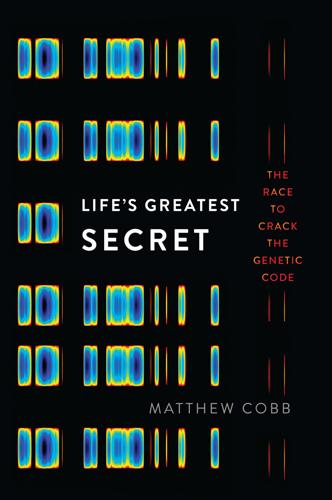
Life's Greatest Secret: The Race to Crack the Genetic Code
by
Matthew Cobb
Published 6 Jul 2015
Delbrück, M., ‘Génétique du bactériophage’, Colloques Internationaux du Centre National de la Recherche Scientifique, vol. 8, 1949, pp. 92–103. Delbrück, M. and Stent, G., ‘On the mechanism of DNA replication’, in W. D. McElroy and B. Glass (eds), A Symposium on the Chemical Basis of Heredity, Baltimore, The Johns Hopkins Press, 1957, pp. 699–736. De Lorenzo, V., ‘From the selfish gene to selfish metabolism: Revisiting the central dogma’, BioEssays, vol. 36, 2014, pp. 226–35. Denenberg, V. H. and Rosenberg, K. M., ‘Nongenetic transmission of information’, Nature, vol. 216, 1967, pp. 549–50. Di Giulio, M., ‘The origin of the genetic code in the ocean abysses: new comparisons confirm old observations’, Journal of Theoretical Biology, vol. 333, 2013a, pp. 109–16.
…
Di Giulio, M., ‘The origin of the genetic code: Matter of metabolism or physicochemical determinism?’, Journal of Molecular Evolution, vol. 77, 2013b, pp. 131–3. Dobzhansky, T., Genetics and the Origin of Species, New York, Columbia University Press, 1941. Donohue, J., ‘Fragments of Chargaff’, Nature, vol. 276, 1978, pp. 133–5. Doolittle, W. F. and Sapienza, C., ‘Selfish genes, the phenotype paradigm and genome evolution’, Nature, vol. 284, 1980, pp. 601–3. Doolittle, W. F., Brunet, T. D. P., Linquist, S. and Gregory, T. R., ‘Distinguishing between “function” and “effect” in genome biology’, Genome Biology and Evolution, vol. 6, 2014, pp. 1234–7. Dounce, A. L., ‘Duplicating mechanism for peptide chain and nucleic acid synthesis’, Enzymologia, vol. 15, 1952, pp. 251–8.
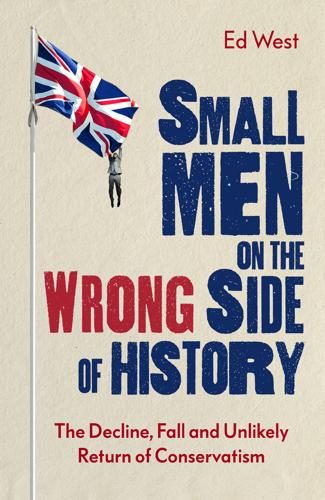
Small Men on the Wrong Side of History: The Decline, Fall and Unlikely Return of Conservatism
by
Ed West
Published 19 Mar 2020
For Conservatives it’s more the principle that people should work rather than have something for free, for their own sake as well as general societal fairness, even if small-c conservatives accept that society isn’t fair. The old idea that Puritans are people who can’t stand the thought of someone having fun is not quite true; conservatives don’t like the idea of having to pay for someone else’s fun. In The Selfish Gene (1976), Richard Dawkins wrote about how birds would pick lice out of each other’s hair, a reciprocal system that depended on everyone making the effort to do so. Unfortunately, some couldn’t be bothered and never returned the favour – ‘cheats’, he called them. Of the others, some would always reciprocate even to cheats – ‘suckers’ – while others would return the favour but not to cheats – ‘grudgers’.
…
Chua, Amy, Political Tribes: Group Instinct and the Fate of Nations (New York: Bloomsbury, 2018). Cohen, Nick, What’s Left?: How Liberals Lost Their Way (London: HarperPerennial, 2007). Dawkins, Richard, The Blind Watchmaker: Why the Evidence of Evolution Reveals a Universe without Design (London: Norton & Co, 1986). ——, The God Delusion (London: Bantam Press, 2006). ——, The Selfish Gene (Oxford University Press, 1976). Delingpole, James, How to Be Right . . . In a PC World Gone Mad (London: Headline, 2007). Deneen, Patrick, Why Liberalism Failed (New Haven and London: Yale University Press, 2018). Derbyshire, John, We Are Doomed! Reclaiming Conservative Pessimism (New York: Crown Forum, 2009).

Enlightenment Now: The Case for Reason, Science, Humanism, and Progress
by
Steven Pinker
Published 13 Feb 2018
In the years since I took the young woman’s question, I have often been reminded of the need to restate the ideals of the Enlightenment (also called humanism, the open society, and cosmopolitan or classical liberalism). It’s not just that questions like hers regularly appear in my inbox. (“Dear Professor Pinker, What advice do you have for someone who has taken ideas in your books and science to heart, and sees himself as a collection of atoms? A machine with a limited scope of intelligence, sprung out of selfish genes, inhabiting spacetime?”) It’s also that an obliviousness to the scope of human progress can lead to symptoms that are worse than existential angst. It can make people cynical about the Enlightenment-inspired institutions that are securing this progress, such as liberal democracy and organizations of international cooperation, and turn them toward atavistic alternatives.
…
Natural selection consists of competition among genes to be represented in the next generation, and the organisms we see today are descendants of those that edged out their rivals in contests for mates, food, and dominance. This does not mean that all creatures are always rapacious; modern evolutionary theory explains how selfish genes can give rise to unselfish organisms. But the generosity is measured. Unlike the cells in a body or the individuals in a colonial organism, humans are genetically unique, each having accumulated and recombined a different set of mutations that arose over generations of entropy-prone replication in their lineage.
…
Public Interest, 73, 41–59. Davis, E., & Marcus, G. F. 2015. Commonsense reasoning and commonsense knowledge in artificial intelligence. Communications of the ACM, 58, 92–103. Dawes, R. M., Faust, D., & Meehl, P. E. 1989. Clinical versus actuarial judgment. Science, 243, 1668–74. Dawkins, R. 1976/1989. The selfish gene (new ed.). New York: Oxford University Press. Dawkins, R. 1983. Universal Darwinism. In D. S. Bendall, ed., Evolution from molecules to man. New York: Cambridge University Press. Dawkins, R. 1986. The blind watchmaker: Why the evidence of evolution reveals a universe without design. New York: Norton.

The Talent Code: Greatest Isn't Born, It's Grown, Here's How
by
Daniel Coyle
Published 27 Apr 2009
Myelin's study that shows why Michael Jordan (and every other athlete who depends on speed) had to retire around age forty, see George Bartzokis, “Lifespan Trajectory of Myelin Integrity and Maximum Motor Speed,” Neurobiology of Aging (2008), available online through PubMed. On genes' role in skill, see Richard Dawkins's The Selfish Gene (Oxford, U.K.: Oxford University Press, 1976). There's an interesting story regarding Einstein's surplus of myelin. A substitute pathologist, Thomas Harvey, essentially stole Einstein's brain, then spent his lifetime as its caretaker and parceled it out to several fortunate researchers. The full story is told in Michael Paterniti's terrific Driving Mr.

Everything Bad Is Good for You: How Popular Culture Is Making Us Smarter
by
Steven Johnson
Published 5 Apr 2006
The Deleuzian model grew more useful in the hands of the brilli ant and eclectic Manuel De Landa , whose writing an- N O T E S O N F U RT H E R R E A D I N G 205 alyzed the development of medieval towns, the patterns of language evolution, and the history of weapons all through the lens of complex systems theory. (His book A Thousand Years of Nonlinear History is a mind-bending read . ) The fashionable notion of " memes "-originally coined by Richard Dawkins almost as an afterthought in his 1 976 book The Selfish Gene-also takes a systems approach to the history of culture: like genes themselves, successful ideas (or memes) thrive because they ' re good at reproducing themselves in other minds, and thus spreading through the population. Their symbolic fitness-their ability to repre sent or descri be the world-is only a secondary value; the defining attri bute of the meme i s not whether or not it's true, but whether it is capable of reproducing itself, and whether it belongs to a wider system of memes (sometimes called a memeplex) that foster its replication.
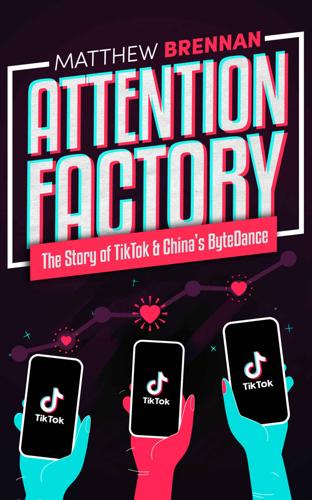
Attention Factory: The Story of TikTok and China's ByteDance
by
Matthew Brennan
Published 9 Oct 2020
(examples include: Bit.ly, Feedly, Strikingly, and Grammarly) No one seemed bothered that technically .ly is the internet country-code domain for the African nation of Libya. 136 http://tech.163.com/14/1118/19/ABBTTNOK00094ODU.html 137 https://supchina.com/2017/09/13/can-pop-music-connect-teens-china-world-musical-ly-co-founder-louis-yang-wants-find/ 138 https://36kr.com/p/5041108 139 http://www.icamp.ai/ 140 Many of these accounts can still be found on TikTok by searching “temporality” 141 The term meme was coined by Richard Dawkins in the 1976 book “The Selfish Gene” to explain how ideas replicate, mutate and evolve (memetics). 142 https://en.wikipedia.org/wiki/Harlem_Shake_(meme) 143 https://en.wikipedia.org/wiki/Ice_Bucket_Challenge 144 https://kknews.cc/media/vg4may.html 145 Heavy reliance on “operations” is one of the Chinese internet’s defining characteristics with Alibaba being the most famous example of a heavily operations-driven organization.
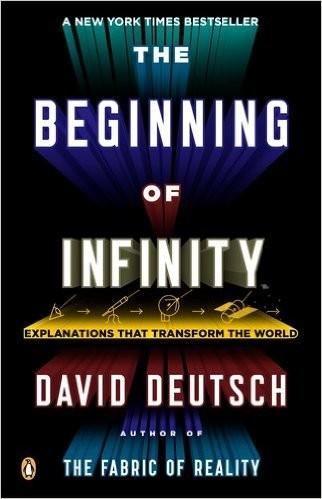
The Beginning of Infinity: Explanations That Transform the World
by
David Deutsch
Published 30 Jun 2011
If the best-spreading genes impose sufficiently large disadvantages on the species, the species becomes extinct. Nothing in biological evolution prevents that. It has presumably happened many times in the history of life on Earth, to species less lucky than the peacock. Dawkins named his tour-de-force account of neo-Darwinism The Selfish Gene because he wanted to stress that evolution does not especially promote the ‘welfare’ of species or individual organisms. But, as he also explained, it does not promote the ‘welfare’ of genes either: it adapts them not for survival in larger numbers, nor indeed for survival at all, but only for spreading through the population at the expense of rival genes, particularly slight variants of themselves.
…
Bibliography Everyone should read these Jacob Bronowski, The Ascent of Man (BBC Publications, 1973) Jacob Bronowski, Science and Human Values (Harper & Row, 1956) Richard Byrne, ‘Imitation as Behaviour Parsing’, Philosophical Transactions of the Royal Society B358 (2003) Richard Dawkins, The Selfish Gene (Oxford University Press, 1976) David Deutsch, ‘Comment on Michael Lockwood, “‘Many Minds’ Interpretations of Quantum Mechanics”’, British Journal for the Philosophy of Science 47, 2 (1996) David Deutsch, The Fabric of Reality (Allen Lane, 1997) Karl Popper, Conjectures and Refutations (Routledge, 1963) Karl Popper, The Open Society and Its Enemies (Routledge, 1945) Further reading John Barrow and Frank Tipler, The Anthropic Cosmological Principle (Clarendon Press, 1986) Susan Blackmore, The Meme Machine (Oxford University Press, 1999) Nick Bostrom, ‘Are You Living in a Computer Simulation?’
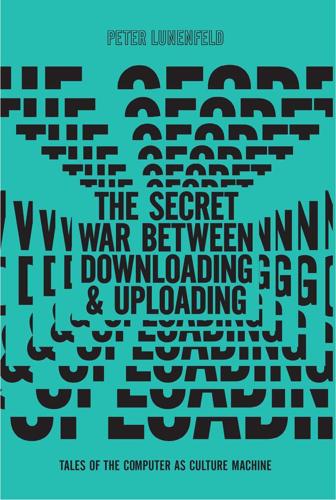
The Secret War Between Downloading and Uploading: Tales of the Computer as Culture Machine
by
Peter Lunenfeld
Published 31 Mar 2011
‘Mimeme’ comes from a suitable Greek root, but I want a monosyllable that sounds a bit like ‘gene.’ I hope my classicist friends will forgive me if I abbreviate mimeme to meme. If it is any consolation, it could alternatively be thought of as being related to ‘memory,’ or to the French word même. It should be pronounced to rhyme with ‘cream.’” Richard Dawkins, The Selfish Gene (1976; repr., Oxford: Oxford University Press, 2006), 192. 2. Howard Rheingold, Tools for Thought: The History and Future of Mind-Expanding Technology (1985; repr., Cambridge, MA: MIT Press, 2000); available at <http://www.rheingold.com/texts/tft/>. 3. See Vannevar Bush, Science: The Endless Frontier (Washington, DC: U.S.

Why Information Grows: The Evolution of Order, From Atoms to Economies
by
Cesar Hidalgo
Published 1 Jun 2015
Iris and Anna are the biggest sources of strength in my life, and even if they don’t actively help me bleed ink on paper, I owe it all to them. NOTES INTRODUCTION: FROM ATOMS TO PEOPLE TO ECONOMIES 1. In this context, the word atom is used to refer mainly to discrete particles, which could be either atoms or molecules. 2. Two great books describing the interaction between evolution and behavior are Richard Dawkins, The Selfish Gene (Oxford: Oxford University Press, 2006), and Steven Pinker, The Blank Slate: The Modern Denial of Human Nature (New York: Penguin, 2003). 3. Information theory also has a quantum version, known as quantum information theory. The existence of quantum information theory, however, does not invalidate the claim that classical information is a concept that works at a range of scales that is unusual for other theories. 4.

Critical: Science and Stories From the Brink of Human Life
by
Matt Morgan
Published 29 May 2019
The misleading campaigns offering ‘low-fat’ alternatives may have conversely led to escalating levels of obesity due to replacement of fat content with refined sugars. Sadly, our hard-wired, insatiable appetite for sweet treats is tough to shake off due to their dense calorific content, essential for survival in the past. The selfish gene’s most successful ploy – the love of food – may be humanity’s biggest challenge. Visiting Louie on the liver ward a few days after he had been discharged from intensive care, I looked at his blood tests and was concerned to see that he was once again developing liver failure. His medical notes explained that he was still vomiting blood and yet the bypass procedure we had considered before had still not been done.

Adaptive Markets: Financial Evolution at the Speed of Thought
by
Andrew W. Lo
Published 3 Apr 2017
Many other physicists before Einstein drew on the same knowledge base, but didn’t come close to the narrative that Einstein created. CHAPTER 5. THE EVOLUTION REVOLUTION 1. Rathmann (1994). 2. Chen and Li (2001). 3. Darwin (1859). 4. Richard Dawkins, the great Oxford evolutionary biologist and best-selling author of The Selfish Gene and The Blind Watchmaker, is perhaps the most compelling expositor of evolutionary theory of our time. Over the years he’s responded to every serious criticism leveled against evolutionary theory, so I won’t attempt to repeat his eloquent and convincing rebuttals here, but urge interested readers to consult his compelling works. 5.
…
“Citigroup Chief Is Set to Exit Amid Losses.” New York Times, November 3. Davis Polk. 2015. Dodd Frank Progress Report: Fourth Quarter 2015. New York: Davis Polk. https://www.davispolk.com/sites/default/files/Q4_2015_Dodd-Frank_Progress_Report.pdf. Dawkins, Richard. 1986. The Blind Watchmaker. New York: W. W. Norton. ___. 1989. The Selfish Gene. Oxford: Oxford University Press. Deason, Stephen, Shivaram Rajgopal, and Gregory Waymire. 2015. “Who Gets Swindled in Ponzi Schemes?” Unpublished working paper, Goizeta Business School, Emory University, Atlanta, GA. De Becker, Gavin. 1997. The Gift of Fear: Survival Signals that Protect Us from Violence.
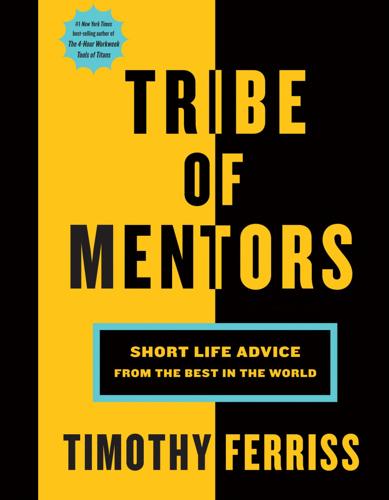
Tribe of Mentors: Short Life Advice From the Best in the World
by
Timothy Ferriss
Published 14 Jun 2017
As Viscount Ridley, he was elected to England’s House of Lords in February 2013. * * * What is the book (or books) you’ve given most as a gift, and why? Or what are one to three books that have greatly influenced your life? Two books that have greatly influenced my life are The Double Helix by James D. Watson and The Selfish Gene by Richard Dawkins. What fascinates me about these books is how they revolutionized the telling of scientific stories while themselves breaking new scientific ground in the elucidation of the secret of life. Read these two books and you will get a great answer to a question that has baffled mankind for millions of years: What is life?
…
The phrase and concept of “smart contracts” were developed by Nick with the goal of bringing what he calls the “highly evolved” practices of contract law and practice to the design of electronic commerce protocols between strangers on the Internet. Nick also designed Bit Gold, which many consider the precursor to Bitcoin. * * * What is the book (or books) you’ve given most as a gift, and why? Or what are one to three books that have greatly influenced your life? Richard Dawkins, The Selfish Gene, explains more about life (including human behavior and myself) than anything else I’ve read. What advice would you give to a smart, driven college student about to enter the “real world”? Everybody is striving after social proof—from a close friend’s adulation to online likes and upvotes.

Blueprint: The Evolutionary Origins of a Good Society
by
Nicholas A. Christakis
Published 26 Mar 2019
In 2005, political scientist James Fowler and I termed the effect that genes have outside bodies, specifically on the structure and function of social groups, an exophenotype.6 This type of idea was first advanced by evolutionary biologist Richard Dawkins in his profound 1982 book The Extended Phenotype. Dawkins made a case that it should theoretically be possible “to free the selfish gene from the individual organism which has been its conceptual prison.”7 From this perspective, a beaver may be wired to make a useful dam just as it is wired to have a functional pancreas. Dawkins speaks of extended phenotypes, but I prefer to use the term exophenotype, by which I mean the nonincidental, genetically guided changes that an organism makes to its surroundings in order to improve its prospects for reproduction and survival.8 Dawkins cautioned that, “since it is not a factual position I am advocating, but a way of seeing facts, I wanted to warn the reader not to expect ‘evidence’ in the normal sense of the word.”9 Yet such scientific evidence for these ideas has started to appear.
…
It’s an appealing idea, but it turns out that there are quite a few conceptual and evolutionary problems with it, including the fact that it would be hard for a single gene (or even a set of genes) to have all of these effects. This mechanism may, however, appear in some microorganisms. R. Dawkins, The Selfish Gene (Oxford: Oxford University Press, 1976). See also S. A. West and A. Gardner, “Altruism, Spite, and Greenbeards,” Science 327 (2010): 1341–1344. 88. D. Lieberman, J. Tooby, and L. Cosmides, “The Architecture of Human Kin Detection,” Nature 445 (2007): 727–731. Regarding recognizing siblings, see M.

Deep Nutrition: Why Your Genes Need Traditional Food
by
Catherine Shanahan M. D.
Published 2 Jan 2017
One of the things that makes human beings (and their ancestors) unique is the sophistication of tool use that enabled consumption of a greater proportion of the edible world than the competition, furthering the agenda of our perpetually reincarnating, self-revising, constantly upgrading, ruthlessly selfish genes. We have managed to shepherd our own genomes through millennia, roaming from one ocean to another, over mountains and across whole continents, and into the modern age. Those hoping to maintain the product of that achievement—beautiful, healthy human bodies—will want to acquaint themselves with the foods and preparation techniques that allowed us to get this far in the first place.
…
On the left is Matt Dillon, who has been starring in movies since his teens. On the right, the incredibly talented Kevin Dillon, eighteen months his junior. Both men were forty-three when photographed. Why does Kevin look older, and why has he rarely been cast as a romatic lead? The answer: The Sibling Symmetry Shift. It may sound harsh, but it’s just the “selfish” gene at work. Successful genes behave like greedy pirates, commandeering maternal nutrient stores for the benefit of their own optimal replication. However, any child conceived in too short a time for those storehouses to be refilled will be at significant disadvantage. In such depleted conditions, were baby to extract from mother all the nutrients its genes would like it to have, this would put mom’s life at significant risk.

Thinking Machines: The Inside Story of Artificial Intelligence and Our Race to Build the Future
by
Luke Dormehl
Published 10 Aug 2016
Lohn was fully aware of the complexity of the problem, and he had an idea for solving it: why not hand over the design process to an AI? ‘People had been using AI for tasks like scheduling and planning for years, but I wanted to use AI to improve the actual hardware that was being used in space missions,’ he says. When he was an undergraduate, Lohn read Richard Dawkins’ book The Selfish Gene, one of the most important books about gene-based evolution. ‘I was fascinated by the power of natural selection,’ he continues. In graduate school, Lohn began exploring the idea of replicating this kind of evolutionary process to solve design problems. This is not, in itself, a new idea. For hundreds of years, mankind has steered evolutionary processes to breed new kinds of animals and plants that best suit our needs and wishes.

The Nature of Technology
by
W. Brian Arthur
Published 6 Aug 2009
I do not disagree, but I am talking about something that happens on a more unconscious and not necessarily visual level. 98 Hoare created the Quicksort algorithm: For more on Quicksort, see Gelernter. 99 Robert Maillart created a… bridges: Billington. 101 “Such modifications… economies”: Rosenberg, p. 62. 101 Mechanisms and Mechanical Devices: Neil Sclater and Nicholas P. Chironis. Mechanisms and Mechanical Devices Sourcebook. 4th Ed. McGraw-Hill, New York, 2007. 102 Richard Dawkins’s memes: Dawkins, The Selfish Gene, Oxford University Press, New York, 1976. 104 the U.S. Navy,… Rickover: Personal communication from Richard Rhodes. Also, Theodore Rockwell, The Rickover Effect, Naval Institute Press, Annapolis, MD, 1992. 105 The light water… dominate: Robin Cowan, "Nuclear Power Reactors: A Study in Technological Lock-in," Journal of Economic History 50, 541–556, 1990; Mark Hertsgaard, Nuclear Inc: The Men and Money Behind Nuclear Energy, Pantheon Books, New York, 1983. 106 The shearmen (who… agreement: The quote is from Malcolm Chase, p. 16, Early Trade Unionism, Ashgate, Aldershot, UK, 2000.

Discardia: More Life, Less Stuff
by
Dinah Sanders
Published 7 Oct 2011
As many disheartening surveys in the United States still reveal, atheists are dramatically less trusted than any other groups listed, despite their significant numbers and contributions even in a highly religious country like the United States. Try reading something across the boundaries of your beliefs. C.S. Lewis's The Screwtape Letters and Mere Christianity have something to offer even a diehard atheist. The Selfish Gene by Richard Dawkins, or just about anything by Carl Sagan, can help theists and deists understand the love and passion that the irreligious can bring to the world around them. If those are too big a jump, then read the humorous Hitchhiker's Guide to the Galaxy by atheist Douglas Adams, or enjoy Sister Wendy's books and videos on great art of the world.

Life at the Speed of Light: From the Double Helix to the Dawn of Digital Life
by
J. Craig Venter
Published 16 Oct 2013
Transposons are relatively short DNA sequences that contain the necessary genetic elements to enable them to insert themselves either into specific sequences or randomly in a genome. In work that would earn her the Nobel Prize in 1983, American Barbara McClintock had discovered transposable elements in maize, where they altered the patterns of pigmentation of kernels.27 You can think of transposons as selfish genes, similar to viruses, which “infect” a genome. It turns out that a great portion of your genome is composed of such DNA parasites. They are significant, not least because they can cause genetic diseases if they insert into and disrupt the function of a key gene. We chose a transposon (Tn4001) isolated from Staphylococcus aureus to randomly insert itself in the M. genitalium genome to disrupt gene functions.

Primates of Park Avenue: A Memoir
by
Wednesday Martin Ph.d.
Published 1 Jun 2015
And how strange and interesting and touching the practices of the tiny tribe on a tiny corner of a tiny island I once studied seem from a distance. I think of the words of Charles Darwin, not the Darwin whose work has been oversimplified and deployed to justify ruthless self-interest and to rationalize the notion of “the selfish gene,” but of Darwin the father, the one who lost three children and mourned them so deeply that he was nearly incapacitated, and who joyfully helped his wife raise seven more to adulthood, and who balanced the work he loved with parenthood, and taught us so much: “The social instincts lead an animal to take pleasure in the society of its fellows, to feel a certain amount of sympathy with them, and to perform various services for them.”

Raw Data Is an Oxymoron
by
Lisa Gitelman
Published 25 Jan 2013
The sleight of hand (discussed by Bruno Latour in We Have Never Been Modern) which permits this appeal to the natural to be true is that our own understandings of nature project our views of ourselves.3 Beehives in nineteenthcentury Britain had kings, because it was believed that only a male could undertake the complex tasks of government (the titular monarch Queen Victoria notwithstanding). Our knowledge professionals see selfish genes because that’s the way that we look at ourselves as social beings—if the same amount of energy had been applied to the universality of parasitism/symbiosis as has been applied to rampant individualistic analysis, we would see the natural and social worlds very differently. However, scientists tend to get inspired by and garner funding for concepts that sit “naturally” with our views of ourselves.
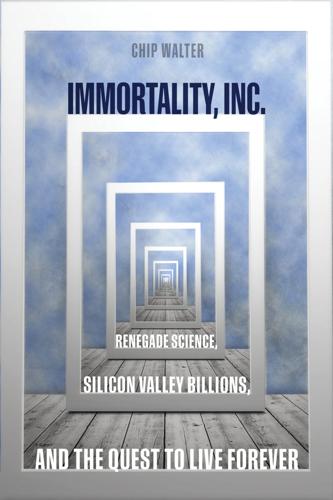
Immortality, Inc.
by
Chip Walter
Published 7 Jan 2020
Buettner, Dan. The Blue Zones: 9 Lessons for Living Longer From the People Who Have Lived the Longest. National Geographic, 2012. ———. The Blue Zones Solution: Eating and Living Like the World’s Healthiest People. National Geographic, 2015. Dawkins, Richard. The Blind Watchmaker. Penguin, 1986. ———. The Selfish Gene. Oxford University Press, 1989. De Grey, Aubrey D. N. J. The Mitochondrial Free Radical Theory of Aging (Molecular Biology Intelligence series). R. G. Landis Co., 1999. De Grey, Aubrey D. N. J. with Michael Rae. Ending Aging—The Rejuvenation Breakthroughs That Could Reverse Human Aging in Our Lifetime.

Other Minds: The Octopus, the Sea, and the Deep Origins of Consciousness
by
Peter Godfrey-Smith
Published 6 Dec 2016
Gesturing to the careening inner monologues: See his Consciousness Explained. Dennett does not make use of efference copies in his model. He ties his account of the origin of the Joycean machine to Richard Dawkins’s notion of the transmission of memes, an idea about which I’m more skeptical (see Dawkins, The Selfish Gene, Oxford and New York: Oxford University Press, 1976). In an experiment done in 2001: See Harald Merckelbach and Vincent van de Ven, “Another White Christmas: Fantasy Proneness and Reports of ‘Hallucinatory Experiences’ in Undergraduate Students,” Journal of Behavior Therapy and Experimental Psychiatry 32, no. 3 (2001): 137–44.

What's Wrong With Economics: A Primer for the Perplexed
by
Robert Skidelsky
Published 3 Mar 2020
Ely Lecture), American Economic Review, special issue: Papers and Proceedings of the Hundred and Sixth Annual Meeting of the American Economic Association, American Economic Association, 84 (2): 1–9. Becker, Gary S. and Murphy, Kevin M. (1988). ‘A Theory of Rational Addiction’, Journal of Political Economy, Vol. 96 (4): 675–700. Dawkins, Richard (1976). The Selfish Gene, Oxford: Oxford University Press. Durkheim, Émile (2006 [1897]). On Suicide, London: Penguin. Eldridge, J.E.T. (ed.) (1972). Max Weber: The Interpretation of Social Reality, London: Nelson. Fuller, Steve (2006). The Philosophy of Science and Technology Studies, London: Routledge. Gorz, André (2010).

Brief Peeks Beyond: Critical Essays on Metaphysics, Neuroscience, Free Will, Skepticism and Culture
by
Bernardo Kastrup
Published 28 May 2015
Journal of Social Behavior and Personality, 17(1), pp. 285–338. Dennett, D. (1991). Consciousness Explained. London: Penguin Books. Dennett, D. (2003). The Illusion of Consciousness. TED2003. [Online]. Available from: http://www.ted.com/talks/dan_dennett_on_our_consciousness [Accessed 19 December 2014]. Doolittle, W. F. and Sapienza, C. (1980). Selfish genes, the phenotype paradigm and genome evolution. Nature, 284, pp. 601–603. Dresler, M. et al. (2011). Dreamed Movement Elicits Activation in the Sensorimotor Cortex. Current Biology, 21(21), pp. 1833–1837. Expanding the shrinks. The Economist (British Edition), 11 October 2014. [Online]. Available from: http://www.economist.com/news/britain/21623773-popularity-cbt-freezing-out-more-traditional-forms-therapy-expanding-shrinks [Accessed 23 December 2014].

Age of the City: Why Our Future Will Be Won or Lost Together
by
Ian Goldin
and
Tom Lee-Devlin
Published 21 Jun 2023
These are cooperation, specialization and invention, and together they have shaped the human story. Cooperation What makes humans so successful as a species is our ability to operate together in large numbers in pursuit of common objectives. The late evolutionary biologist Edward Osborne Wilson argued forcefully against the belief that seemingly altruistic human acts merely reflect our ‘selfish genes’ protecting those who share our genetic material.13 Instead, he saw Homo sapiens as a ‘eusocial’ species that acts in complex harmony in the interests of the group, similar to ants or bees. However, it was not until the emergence of the city that Homo sapiens developed the mechanisms needed to facilitate cooperation beyond the scale of a small tribe constantly on the move.
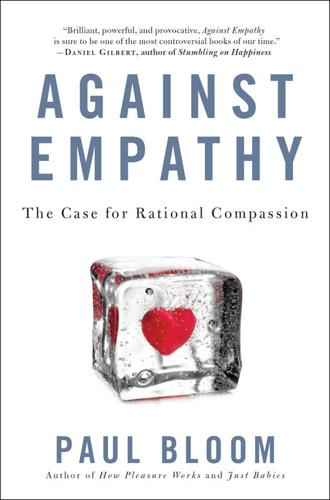
Against Empathy: The Case for Rational Compassion
by
Paul Bloom
From a genetic perspective, Haldane should care just as much about his two brothers and eight cousins as he cares for himself, because their bodies contain, on average, the same distinctive genetic material as his own body. In fact, genes that caused a person to sacrifice his life in order to save three brothers or nine cousins would have an advantage over genes that caused a person to save himself at all costs. The “goals” of natural selection transcend our bodies. So, strange as it might seem, selfish genes create altruistic animals, motivating kindness toward others. If you choose to be selfish, then, you can’t justify yourself by saying you’re following the lead of your genes—caring just about yourself is profoundly unbiological. Then there is a confusion about psychology. The claim that we actually only care about survival and reproduction confuses the goals of natural selection (again, metaphorically speaking) with the goals of the creatures who have evolved through natural selection, including us.
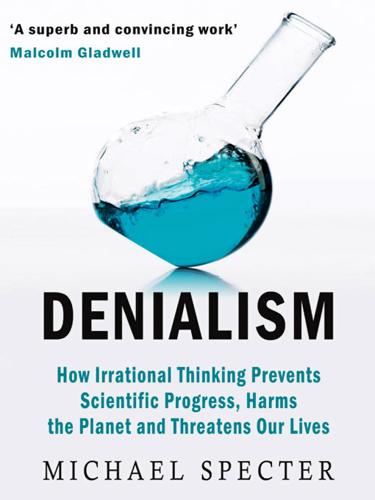
Denialism: How Irrational Thinking Hinders Scientific Progress, Harms the Planet, and Threatens Our Lives
by
Michael Specter
Published 14 Apr 2009
Intervention: Confronting the Real Risks of Genetic Engineering and Life on a Biotech Planet. San Francisco: Hybrid Vigor Press, 2006. Chesterton, G. K. Eugenics and Other Evils. Seattle: Inkling Books, 2000. Culshaw, Rebecca. Science Sold Out: Does HIV Really Cause AIDS? Berkeley, CA: North Atlantic Books, 2007. Dawkins, Richard. The Selfish Gene. Oxford, UK: Oxford University Press, 1989. Darwin, Charles. On the Origin of Species. London: John Murray, 1859. Duster, Troy. Backdoor to Eugenics. New York: Routledge, 2003. Ehrlich, Paul R. The Population Bomb. New York: Ballantine Books, 1968. ———, and Anne H. Ehrlich. The Dominant Animal: Human Evolution and the Environment.

Cognitive Gadgets: The Cultural Evolution of Thinking
by
Cecilia Heyes
Published 15 Apr 2018
Alternative formulations of multilevel selection. Biology and Philosophy, 3(4), 407–430. Darwin, C. (1868). The Variation in Animals and Plants under Domestication. London: John Murray. Darwin, C. (1871). The Descent of Man, and Selection in Relation to Sex. London: John Murray. Dawkins, R. (1989). The Selfish Gene. Oxford: Oxford University Press. Dawson, E. H., Avarguès-Weber, A., Chittka, L., and Leadbeater, E. (2013). Learning by observation emerges from simple associations in an insect model. Current Biology, 23(8), 727–730. De Casper, A. J., and Fifer, W. P. (1980). Newborn preference for the maternal voice: An indication of early attachment.

Going Dark: The Secret Social Lives of Extremists
by
Julia Ebner
Published 20 Feb 2020
He realised that the big institutions hadn’t kept pace with digitalisation, while the fringes were miles ahead. ‘For someone in advertising, it was almost surreal to see how backward big institutions were when compared to a few frogs on the internet. They didn’t even know what memes are.’ Richard Dawkins coined the term ‘meme’ in his 1976 book The Selfish Gene, as an idea, a thought or a behaviour that can easily be reproduced in a new host.15 As such, memes, in the age of the internet, are visuals that have a high potential to go viral. They are not inherently political. Memes can be about anything, from animals to food (or both at once, as the ‘Puppy or Bagel’ meme demonstrates).

The Journey of Humanity: The Origins of Wealth and Inequality
by
Oded Galor
Published 22 Mar 2022
Dalgaard, Carl-Johan, and Holger Strulik, ‘The Physiological Foundations of the Wealth of Nations’, Journal of Economic Growth 20, no. 1 (2015): 37–73. Darlington, Philip J., ‘Group Selection, Altruism, Reinforcement, and Throwing in Human Evolution’, Proceedings of the National Academy of Sciences 72, no. 9 (1975): 3748–52. Dawkins, Richard, The Selfish Gene, Oxford University Press, 1976. de la Croix, David, Eric B. Schneider and Jacob Weisdorf, ‘Childlessness, celibacy and net fertility in pre-industrial England: the middle-class evolutionary advantage’, Journal of Economic Growth 24, no. 3 (2019): 223–56. de la Croix, David, Matthias Doepke and Joel Mokyr, ‘Clans, guilds, and markets: Apprenticeship institutions and growth in the preindustrial economy’, The Quarterly Journal of Economics 133, no. 1 (2018): 1–70.

The Strange Order of Things: The Biological Roots of Culture
by
Antonio Damasio
Published 6 Feb 2018
Christian de Duve, Vital Dust: The Origin and Evolution of Life on Earth (New York: Basic Books, 1995); Christian de Duve, Singularities: Landmarks in the Pathways of Life (Cambridge, U.K.: Cambridge University Press, 2005). 7. Francis Crick, Life Itself: Its Origins and Nature (New York: Simon & Schuster, 1981). 8. Tibor Gánti, The Principles of Life (New York: Oxford University Press, 2003). 9. Richard Dawkins, The Selfish Gene (New York: Oxford University Press, 2006). 10. Stanley L. Miller, “A Production of Amino Acids Under Possible Primitive Earth Conditions,” Science 117, no. 3046 (1953): 528–29. 11. In addition to the work cited earlier, the literature consulted in the preparation of this text includes Eörs Szathmáry and John Maynard Smith, “The Major Evolutionary Transitions,” Nature 374, no. 6519 (1995): 227–32; Arto Annila and Erkki Annila, “Why Did Life Emerge?
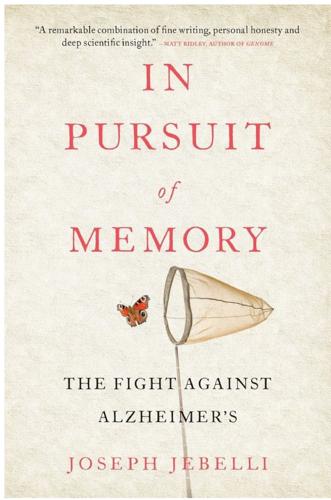
In Pursuit of Memory: The Fight Against Alzheimer's
by
Joseph Jebelli
Published 30 Oct 2017
L., Morstorf, T., Zhong, K., ‘Alzheimer’s disease drug-development pipeline: few candidates, frequent failures’, Alzheimer’s Research and Therapy, 6 (4), 2014, 37 Davies, J. A., Life Unfolding: How the Human Body Creates Itself, Oxford University Press, 2015 Davies, P., and Maloney, A. J., ‘Selective loss of central cholinergic neurons in Alzheimer’s disease’, Lancet, 2 (8000), 1976, 1403 Dawkins, R., The Selfish Gene: 40th Anniversary Edition, Oxford University Press, 2016 De Grey, A., Ending Aging: The Rejuvenation Breakthroughs That Could Reverse Human Aging in Our Lifetime, St Martin’s Griffin, 2008 De Souza, N., ‘Mouse model challenged’, Nature Methods, 10 (4), 2013, 288 De Strooper, B., and Karran, E., ‘The cellular phase of Alzheimer’s disease’, Cell, 164 (4), 2016, 603–15 Di Luca, M., and Olesen, J., ‘The cost of brain diseases: a burden or a challenge?’

War
by
Sebastian Junger
Published 15 Nov 2010
“WISQARS Injury Mortality Reports, 1999–2006.” Choi, Jung-Kyoo, and Samuel Bowles. “The Coevolution of Parochial Altruism and War.” Science, Vol. 318, October 26, 2007. Cubbison, Douglas R. “Battle of Wanat Historical Analysis.” Combat Studies Institute, based at Fort Leavenworth, Kansas, 2009. Dawkins, Richard. The Selfish Gene. Oxford University Press, 1976. De Waal, Frans B. M., ed. Tree of Origin: What Primate Behavior Can Tell Us About Human Social Evolution. Harvard University Press, 2001. Dunbar, R. I. M. “Coevolution of Neocortical Size, Group Size, and Language in Humans.” Behavioral and Brain Sciences, Vol. 16, No. 4, 1993, pp. 681–735.
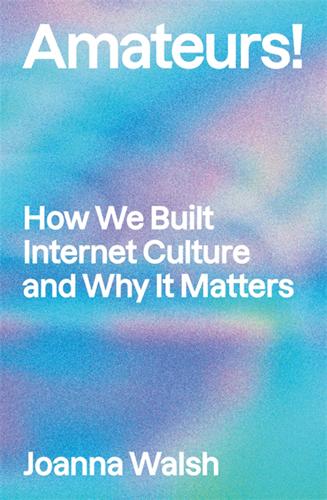
Amateurs!: How We Built Internet Culture and Why It Matters
by
Joanna Walsh
Published 22 Sep 2025
The aesthetic reactions LOLcats produce are also cute and zany: an adorable image provokes babytalk; a zany catchphrase, a hyper response – ‘!!!!’1 To like was already the framework for online experience, but it also means similar to, which also means meme. Biologist Richard Dawkins coined the term meme in The Selfish Gene (1976): ‘a noun that conveys the idea of a unit of cultural transmission, or a unit of imitation’. LOLcats’ evolutionary unit of imitation is linguistic. The images don’t change much, but the initial ‘I can has cheezburger?’ rhizomed into ‘I can has X?’, then, ‘I can no have Y?’, then departed from the original phrase altogether, though its recognisability as a LOLcat has come to rely less on the initial phrase than on an identifiable style of writing – LOLspeak – that also relates to the languages of other non-LOLcat image macros.

The Origins of Political Order: From Prehuman Times to the French Revolution
by
Francis Fukuyama
Published 11 Apr 2011
Martin’s Press, 2010), part 1. 4 Henry Maine, Ancient Law: Its Connection with the Early History of Society and Its Relation to Modern Ideas (Boston: Beacon Press, 1963), chap. 5. A similar point is made in Karl Polanyi, The Great Transformation (New York: Rinehart, 1944), p. 48. 5 William D. Hamilton, “The Genetic Evolution of Social Behavior,” Journal of Theoretical Biology 7 (1964): 17–52. This point was elaborated by Richard Dawkins in The Selfish Gene (New York: Oxford University Press, 1989). 6 P. W. Sherman, “Nepotism and the Evolution of Alarm Calls,” Science 197 (1977): 1246–53. 7 For a more detailed account of the game theoretic grounds of social cooperation, see Francis Fukuyama, The Great Disruption: Human Nature and the Reconstitution of Social Order (New York: Free Press, 1999), chap. 10; and Matt Ridley, The Origins of Virtue: Human Instincts and the Evolution of Cooperation (New York: Viking, 1987). 8 Robert Axelrod, The Evolution of Cooperation (New York: Basic Books, 1984). 9 Robert Trivers, “The Evolution of Reciprocal Altruism,” Quarterly Review of Biology 46 (1971): 35–56. 10 Jerome H.
…
Darrity, William A., Jr., ed. 2007. International Encyclopedia of the Social Sciences. 2d ed. New York: Macmillan. Davis, Richard L. 1996. Wind Against the Mountain: The Crisis of Politics and Culture in Thirteenth-Century China. Cambridge, MA: Harvard Council on East Asian Studies. Dawkins, Richard. 1989. The Selfish Gene. New York: Oxford University Press. ———. 2006. The God Delusion. Boston: Houghton Mifflin. de Bary, William Theodore, and Irene Bloom, eds. 1999. Sources of Chinese Tradition. 2d ed. New York: Columbia University Press. De Soto, Hernando. 1989. The Other Path: The Invisible Revolution in the Third World.
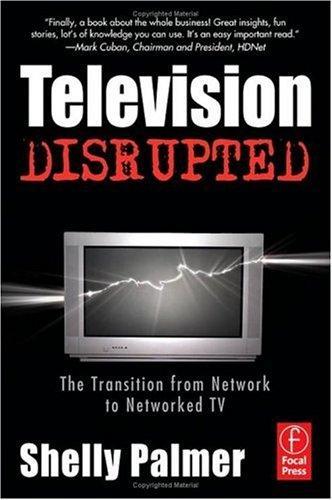
Television disrupted: the transition from network to networked TV
by
Shelly Palmer
Published 14 Apr 2006
MediaFLO® A brand name of a dual tuner mobile phone technology from Qualcomm that allows the multiplexing of linear television signals to be broadcast to a mobile phone handset. Copyright © 2006, Shelly Palmer. All rights reserved. 13-Television.Glossary v2.qxd 3/20/06 7:29 AM Page 206 206 G L O S S A RY Meme As defined by Richard Dawkins in The Selfish Gene (1976): “a unit of cultural transmission, or a unit of imitation.” “Examples of memes are tunes, ideas, catch-phrases, clothes fashions, ways of making pots or of building arches. Just as genes propagate themselves in the gene pool by leaping from body to body via sperms or eggs, so memes propagate themselves in the meme pool by leaping from brain to brain via a process which, in the broad sense, can be called imitation.

Machinery of Freedom: A Guide to Radical Capitalism
by
David Friedman
Published 2 Jan 1978
Frederic Bastiat, The Law (1850; reprint ed., Irvington-on-Hudson, NY: Foundation for Economic Education, 1950). One of the classic presentations of the libertarian position, written when we were still called liberals. Bastiat is the author of, among other things, a petition from the candle-makers of France requesting protection against the unfair competition of the sun. Richard Dawkins, The Selfish Gene (New York: Oxford University Press, 1976). An explanation of evolutionary biology and sociobiology — the economics of genes. One of the most interesting books I have read in recent years. Paul Goodman, People or Personnel: Decentralizing and the Mixed System (New York: Random House, 1965). Hard to classify.
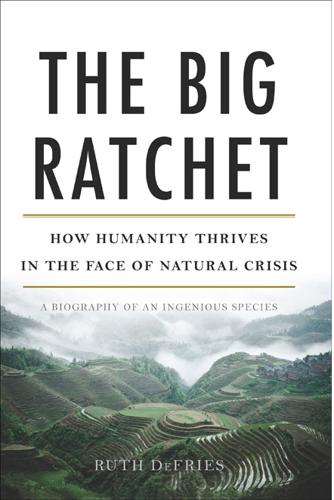
The Big Ratchet: How Humanity Thrives in the Face of Natural Crisis
by
Ruth Defries
Published 8 Sep 2014
Kenneth and K. C. Ornelas, eds., The Cambridge World History of Food. Cambridge University Press, Cambridge Histories Online, accessed March 9, 2012. Curran, D., and M. Froling. 2010. Large-scale mortality shocks and the Great Irish Famine, 1845–1852. Economic Modelling 27:1302–1314. Dawkins, R. 1976. The Selfish Gene. Oxford University Press, Oxford. Deevey, E. 1960. The human population. Scientific American 203:195–205. Ellis, E., J. Kaplan, D. Fuller, S. Vavrus, K. Goldewijk, and P. Verburg. 2013. Used planet: A global history. Proceedings of the National Academy of Sciences 110:7978–7985. Farrell, B., A.
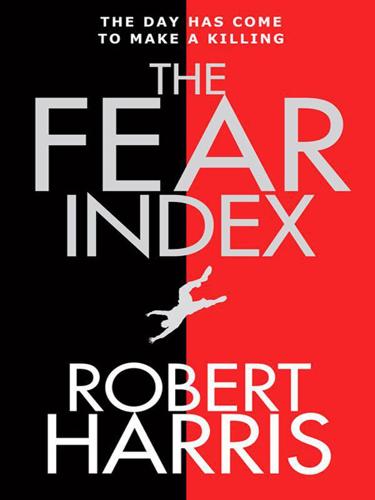
The Fear Index
by
Robert Harris
Published 14 Aug 2011
What do you mean, whatever happens to you?’ But before Hoffmann could answer, someone called out, ‘Alex, have you got a second? We seem to have a problem here.’ 16 Intelligent life on a planet comes of age when it first works out the reason for its own existence. RICHARD DAWKINS, The Selfish Gene (1976) WHAT WAS OFFICIALLY logged as a ‘general system malfunction’ occurred at Hoffmann Investment Technologies at 7.00 p.m. Central European Time. At exactly the same moment, almost four thousand miles away, at 1.00 p.m. Eastern Standard Time, unusual activity was detected on the New York Stock Exchange.

You Are Now Less Dumb: How to Conquer Mob Mentality, How to Buy Happiness, and All the Other Ways to Outsmart Yourself
by
David McRaney
Published 29 Jul 2013
Sometimes they are written down, maybe even codified into law; sometimes they osmote into your sensibilities as you grow up immersed in a society. The fascinating thing about beliefs, values, and norms is that they change over time. As the biologist Richard Dawkins writes in his fantastic book about natural selection, The Selfish Gene, units of culture, which he calls memes, mutate and compete just like genes, and over time memes evolve to better fit the environment and to help the organisms they serve survive and thrive. Just as the shape and size of horses has changed dramatically, going from a wolf-size forest creature fifty million years ago to a plains-trampling beast today, so, too, have the norms surrounding ideas such as prostitution, homosexuality, property rights, dining etiquette, and every other intangible aspect of the complex human renditions of primate social behavior.
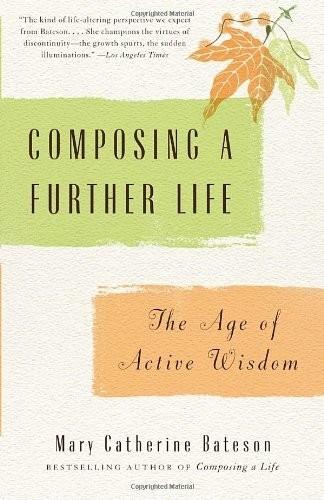
Composing a Further Life: The Age of Active Wisdom
by
Mary Catherine Bateson
Published 13 Sep 2010
Erik H. Erikson, Childhood and Society (New York: W. W. Norton, 1950), pp. 268–69. Erikson is quoting Edmond Rostand, “Mille petits dégoûts de soi, dont le total/Ne fait pas un remords, mais une gêne obscure,” Cyrano de Bergerac, act V, v. 5. X. Shaping the Future 1. Richard Dawkins, The Selfish Gene (New York: Oxford University Press, 1999). 2. Jane Fonda, My Life So Far (New York: Random House, 2005). 3. Jane Fonda, Jane Fonda’s Workout Book (New York: Simon and Schuster, 1981). The video appeared in 1982 and was followed by some twenty other videos between then and 1995, many of which have been reissued as DVDs and in various collections. 4.
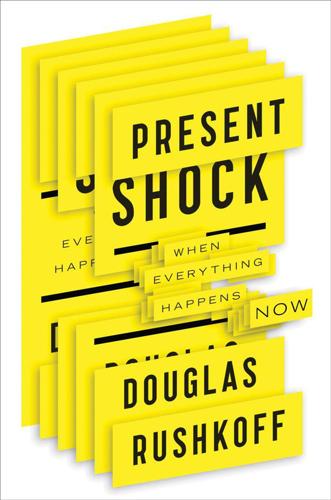
Present Shock: When Everything Happens Now
by
Douglas Rushkoff
Published 21 Mar 2013
Afterwords: Explorations of the Mystical Limits of Contemporary Reality. New York: Anchor, 1973. Carr, Nicholas G. The Shallows: What the Internet Is Doing to Our Brains. New York: W. W. Norton, 2010. Carse, James P. Finite and Infinite Games. New York: Ballantine, 1986. Dawkins, Richard. The Selfish Gene. Oxford: Oxford University Press, 1989. De Landa, Manuel. War in the Age of Intelligent Machines. Cambridge, MA: MIT Press, 1992. Eriksen, Thomas Hyllard. Tyranny of the Moment: Fast and Slow Time in the Information Age. London: Pluto Press, 2001. Fogg, B. J. Persuasive Technology: Using Computers to Change What We Think and Do.
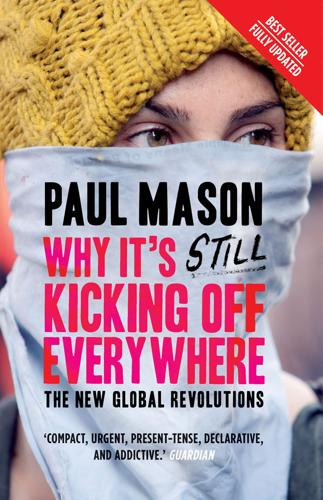
Why It's Still Kicking Off Everywhere: The New Global Revolutions
by
Paul Mason
Published 30 Sep 2013
Bottomore and Maximilian Rubel (eds), London 1963, p. 241. 17.This question has been explored by Nick Dyer-Witherford in a series of papers, the most recent of which is ‘Twenty-First-Century Species- Being’, presented at the Sixth Annual Marx and Philosophy Conference, 6 June 2009, Institute of Education, University of London. 18.Karl Marx, Grundrisse, Harmondsworth 1973, p. 704–11. 19.Paolo Virno, ‘General Intellect’, Lessico Postfordista, Milan 2001, trans. generation-online, org/p/fpvirno10.htm. 20.Franco Berardi and Geert Lovinck, ‘A Call to the Army of Love and to the Army of Software’, 13 October 2011, lists.thing.net/pipermail/idc/ 2011-October/004867.html. 21.Arif Jinha, ‘Article 50 Million: An Estimate of the Number of Scholarly Articles in Existence’, stratongina.net, 2009. 22.Bo-Christer Björk et al., ‘Scientific Journal Publishing: Yearly Volume and Open Access Availability’, Information Research, vol. 14, no.1 (2009), paper 391. 23.Robin Grant, ‘The NOTW’s social media downfall’, wearesocial.net, 11 July 2011. 24.Amelia Arsenault and Manuel Castells, ‘Switching Power: Rupert Murdoch and the Global Business of Media Politics: A Sociological Analysis’, International Sociology, vol. 23, no. 4 (2008), p. 488. 25.Richard Dawkins, The Selfish Gene, Oxford 1989, p. 192. 26.Disgusting Solitary Gonad, untitled and undated text. See Occupy Every where. Chapter 8 1.All references from John Steinbeck, The Grapes of Wrath, Harmonds- worth 2000. 2.Binyamin Appelbaum, ‘From spending to cuts’, New York Times, 1 August 2011. Chapter 9 1.Gustave Flaubert, Sentimental Education, trans.

Time Paradox
by
Philip G. Zimbardo
and
John Boyd
Published 1 Jan 2008
Kreider and J. M. Fields, Number, Timing, and Duration of Marriages and Divorces, 1996 (Washington, D.C.: U.S. Bureau of the Census, 2002). 6. B. Russell, The Analysis of Mind (New York: Macmillan, 1921), 231. 7. The biologist Richard Dawkins refers to these beliefs as memes. See R. J. Dawkins, The Selfish Gene (Oxford: Oxford University Press, 1976). See also S. Blackmore, The Meme Machine (Oxford: Oxford University Press, 2000). 8. D. C. Dennett, Brainstorms: Philosophical Essays on Mind and Psychology (Cambridge, Mass.: Bradford/MIT Press, 1981), 18. 9. R. Layard, Happiness: Lessons from a New Science (New York: Penguin, 2005); E.

The Winner-Take-All Society: Why the Few at the Top Get So Much More Than the Rest of Us
by
Robert H. Frank, Philip J. Cook
Published 2 May 2011
New Directiom for Higher Education (Spring 1977): 1-15. Crystal, Graef. In Search 0/ Excess: The Overcompensation 0/American Execu tives. New York: W W Norton, 199 1 . Dasgupta, Partha. "Patents, Priority and Imitation or, the Economics of Races and Waiting Games." Economic Journal 98 (March 1988): 66-80. Dawkins, Richard. The Selfish Gene. New York: Oxford University Press, 1976. DeMere, Mac. "BMW M3 versus Toyota Supra: Hormone-Enhanced 3-Series Tackles Turbo-less Super Car." Motor Tr�nd, September 1995, pp. 56-64. Diamond, Edwin. "The Last Word." New York, January 10, 1994, pp. 8-35. Doup, Liz. "Tall or Short, Life Is a Game of Inches."
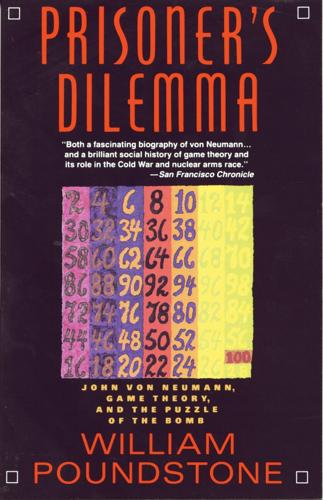
Prisoner's Dilemma: John Von Neumann, Game Theory, and the Puzzle of the Bomb
by
William Poundstone
Published 2 Jan 1993
The Cow-Tail Switch, and Other West African Stories. New York: Henry Holt & Co., 1947. Cousins, Norman. Modern Man Is Obsolete. New York: Viking, 1945. Davis, Morton D. Game Theory: A Nontechnical Introduction. New York: Basic Books, 1970. Davis, Nuel Pharr. Lawrence & Oppenheimer. New York: Simon & Schuster, 1968. Dawkins, Richard. The Selfish Gene. 2d ed. Oxford: Oxford University Press, 1989. Dickson, Paul. Think Tanks. New York: Atheneum, 1971. Fermi, Laura. Illustrious Immigrants. Chicago: University of Chicago Press, 1968. Flood, Merrill M. “Some Experimental Games.” Research Memorandum RM-789. Santa Monica, Calif.: RAND Corporation, 1952.
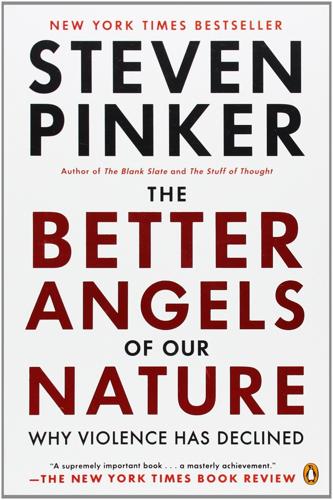
The Better Angels of Our Nature: Why Violence Has Declined
by
Steven Pinker
Published 24 Sep 2012
These fields include genetics, which explains the replicators that make natural selection possible, and game theory, which illuminates the fates of goal-seeking agents in a world that contains other goal-seeking agents.2 Why should organisms ever evolve to seek to harm other organisms? The answer is not as straightforward as the phrase “survival of the fittest” would suggest. In his book The Selfish Gene, which explained the modern synthesis of evolutionary biology with genetics and game theory, Richard Dawkins tried to pull his readers out of their unreflective familiarity with the living world. He asked them to imagine animals as “survival machines” designed by their genes (the only entities that are faithfully propagated over the course of evolution), and then to consider how those survival machines would evolve.
…
New York: Morrow. Davies, P., Lee, L., Fox, A., & Fox, E. 2004. Could nursery rhymes cause violent behavior? A comparison with television viewing. Archives of Diseases of Childhood, 89, 1103–5. Davis, D. B. 1984. Slavery and human progress. New York: Oxford University Press. Dawkins, R. 1976/1989. The selfish gene, new ed. New York: Oxford University Press. Dawkins, R., & Brockmann, H. J. 1980. Do digger wasps commit the Concorde fallacy? Animal Behavior, 28, 892–96. de Quervain, D. J.-F., Fischbacher, U., Treyer, V., Schellhammer, M., Schnyder, U., Buck, A., & Fehr, E. 2004. The neural basis of altruistic punishment.
…
Quarterly Review of Biology, 46, 35–57. Trivers, R. L. 1972. Parental investment and sexual selection. In B. Campbell, ed., Sexual selection and the descent of man. Chicago: Aldine. Trivers, R. L. 1974. Parent-offspring conflict. American Zoologist, 14, 249–64. Trivers, R. L. 1976. Foreword. In R. Dawkins, ed., The selfish gene. New York: Oxford University Press. Trivers, R. L. 1985. Social evolution. Reading, Mass.: Benjamin/Cummings. Trivers, R. L. In press. Deceit and self-deception. Trivers, R. L., & Willard, D. E. 1973. Natural selection of parental ability to vary the sex ratio of offspring. Science, 179, 90–91.
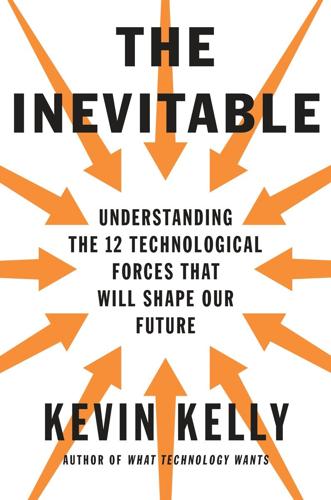
The Inevitable: Understanding the 12 Technological Forces That Will Shape Our Future
by
Kevin Kelly
Published 6 Jun 2016
Bits want to be reckoned in real time. Bits want to be duplicated, replicated, copied. Bits want to be meta. Of course, this is pure anthropomorphization. Bits don’t have wills. But they do have tendencies. Bits that are related to other bits will tend to be copied more often. Just as selfish genes tend to replicate, bits do too. And just as genes “want” to code for bodies that help them replicate, selfish bits also “want” systems that help them replicate and spread. Bits behave as if they want to reproduce, move, and be shared. If you rely on bits for anything, this is good to know. Since bits want to duplicate, replicate, and be linked, there’s no stopping the explosion of information and the science fiction levels of tracking.
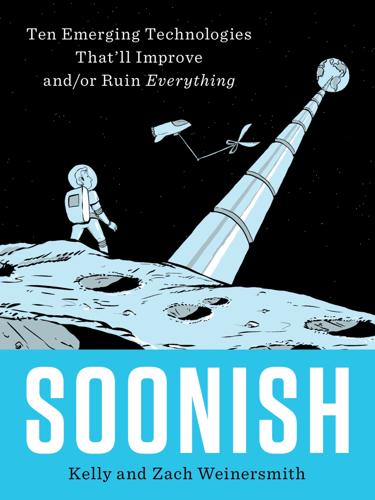
Soonish: Ten Emerging Technologies That'll Improve And/or Ruin Everything
by
Kelly Weinersmith
and
Zach Weinersmith
Published 16 Oct 2017
All of your siblings also have orange nose hair. And so do all of your children. And their children! The gene “drives” its way through the entire population. This is true even if vibrant orange nose hair (inexplicably) makes you less sexy. You might have fewer kids, you ginger-nosed freak, but all of them will have the selfish gene. So gene drives mean that you can impose synthetic biology on an entire wild population. Dr. George Church of Harvard and others were able to put multiple gene drives for malaria resistance into mosquitoes. That way, instead of having to release modified mosquitoes every season, you could potentially have a one-time release of mosquitoes with multiple malaria-resistance gene drives.
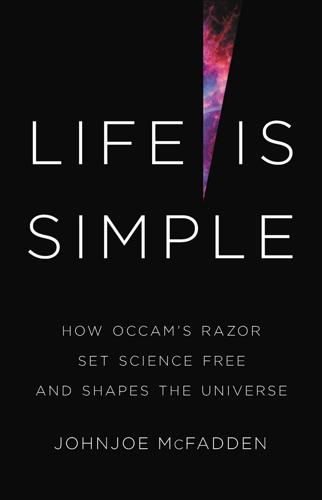
Life Is Simple: How Occam's Razor Set Science Free and Shapes the Universe
by
Johnjoe McFadden
Published 27 Sep 2021
Maddox, B., Rosalind Franklin: The Dark Lady of DNA (HarperCollins New York, 2002). Watson, J. D., Berry, A., and Davies, K., DNA: The Story of the Genetic Revolution (Knopf, 2017). 9. Karafyllidis, I. G., ‘Quantum Mechanical Model for Information Transfer From DNA to Protein’, Biosystems, 93, 191–8 (2008). 10. Dawkins, R., The Selfish Gene (Oxford University Press, 1976). 11. Sherman, P. W., Jarvis, J. U., and Alexander, R. D., The Biology of the Naked Mole-Rat (Princeton University Press, 2017). 12. Kim, E. B., et al., ‘Genome Sequencing Reveals Insights Into Physiology and Longevity of the Naked Mole Rat’, Nature, 479, 223–7 (2011). 13.
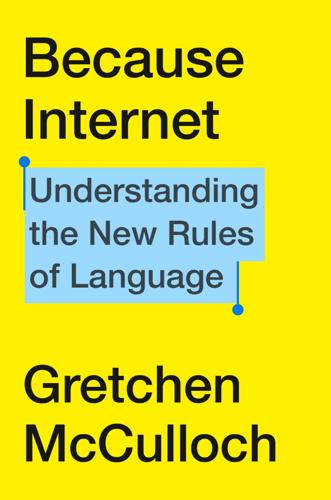
Because Internet: Understanding the New Rules of Language
by
Gretchen McCulloch
Published 22 Jul 2019
June 20, 2017. twitter.com/GretchenAMcC/status/877250919053885440. So clear was it to residents: Marek Stachowski and Robert Woodhouse. 2015. “The Etymology of İstanbul: Making Optimal Use of the Evidence.” Studia Etymologica Cracoviensia 20(4). pp. 221–245. When Richard Dawkins introduced: Richard Dawkins. 1976. The Selfish Gene. Oxford University Press. “Someone made an extension”: Modeled after the real-life example cited here with simply a minor pop-cultural update. The original extension hid the name “Justin Bieber,” but the millennials > snake people extension does exist. Philip Hensher. October 12, 2012. “Invoke the Nazis and You’ve Lost the Argument.”
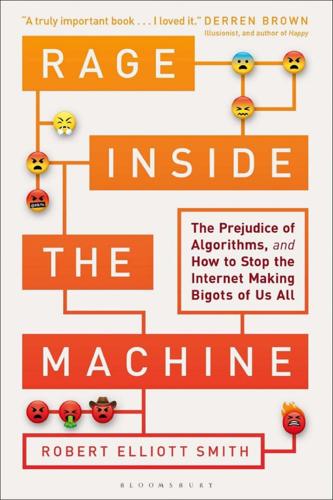
Rage Inside the Machine: The Prejudice of Algorithms, and How to Stop the Internet Making Bigots of Us All
by
Robert Elliott Smith
Published 26 Jun 2019
Thus, they simply feed back to us our own words, replicating things we have said in the past, and echoing them into the future. The question is: how might such feedback effect the evolution of human culture? The biologist, author and former Oxford Chair for Public Understanding of Science Richard Dawkins introduced the word ‘meme’ in his 1976 book The Selfish Gene, to suggest an analogy between genes (the atomic encoding elements in evolutionary biology) and the theorized existence of similar atomic elements of human cultures. Dawkins’ notion was uniquely focused on culture as an evolving entity, but his idea has similarities to earlier concepts like sememes and mythemes.

Superminds: The Surprising Power of People and Computers Thinking Together
by
Thomas W. Malone
Published 14 May 2018
Winter, An Evolutionary Theory of Economic Change (Cambridge, MA: Harvard University Press, 1982); Michael T. Hannan and John Freeman, Organizational Ecology (Cambridge, MA: Harvard University Press, 1993); Andrew W. Lo, Adaptive Markets: Financial Evolution at the Speed of Thought (Princeton, NJ: Princeton University Press, 2017). 5. Richard Dawkins, The Selfish Gene, 2nd ed. (New York: Oxford University Press, 1989), 192. 6. There is a very large—and controversy-filled—literature on sociobiology, behavioral ecology, group selection, and other concepts that are related to the points made here. However, almost all this other literature focuses on how group behavior evolves through the biological evolution of individual organisms in these groups.

Drunk: How We Sipped, Danced, and Stumbled Our Way to Civilization
by
Edward Slingerland
Published 31 May 2021
The Expression of Emotions in Man and Animals (With Introduction, Afterword and Commentaries by Paul Ekman). New York: Oxford University Press. Davidson, James. (2011). Courtesans and Fishcakes: The Consuming Passions of Classical Athens. Chicago: University of Chicago Press. Dawkins, Richard. (1976/2006). The Selfish Gene (30th Anniversary Edition). Oxford: Oxford University Press. Dawkins, Richard, John Richard Krebs, J. Maynard Smith, and Robin Holliday. (1979). “Arms races between and within species.” Proceedings of the Royal Society B: Biological Sciences, 205(1161), 489–511. de Bono, Edward. (1965). “Il cervello e il pensiero.”

Whole Earth Discipline: An Ecopragmatist Manifesto
by
Stewart Brand
Published 15 Mar 2009
Craig Venter, the leading cataloger of the human genome, notes that only 3 percent of our genome consists of protein-producing genes, and the rest is “regulatory regions, DNA fossils, the rusting hulks of old genes, repetitious sequences, parasitic DNA, viruses, and mysterious stretches of who-knows-what.” (Venter is careful never to use the term junk DNA.) One truly selfish gene has made a million copies of itself, taking up 10 percent of our genome; it seems to have no function other than self-replication. Genetically speaking, humans are a fast-moving mess. So is everything else. • Humanity’s first venture into genetic modification—agriculture—was a global event.
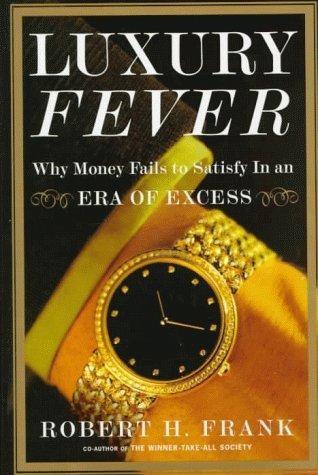
Luxury Fever: Why Money Fails to Satisfy in an Era of Excess
by
Robert H. Frank
Published 15 Jan 1999
“Hoarding Land as the New Weekend Hobby,” Wall Street Journal, April 18, 1997: B10. Dauten, Dale. “We Have No Time for Nothing, But Nothing Counts,” St. Louis Post-Dispatch, August 4, 1997: 11. Davidson, Richie J. “Anterior Cerebral Asymmetry and the Nature of Emotion,” Brain and Cognition 6, 1992: 245-68. Dawkins, Richard. The Selfish Gene, New York: Oxford University Press, 1976. deCharms, R. Personal Causation, New York: Academic Press, 1969. Deci, E. L., and R. M. Ryan. Intrinsic Motivation and Self-Determination in Human Behavior, New York: Plenum, 1985. Deci, E. L.; N. H. Spiegel; R. M. Ryan; R. Koestner; and M. Kaufman .
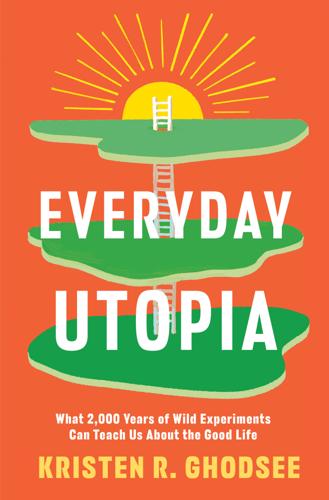
Everyday Utopia: What 2,000 Years of Wild Experiments Can Teach Us About the Good Life
by
Kristen R. Ghodsee
Published 16 May 2023
Yet I blithely transfer funds to my daughter in a way that would probably arouse suspicion if I did so to a former student or some other young person in need of financial support. No one ever thinks to ask what I “get out of” my relationship with my own daughter. But where did this criterion come from? Evolutionary biologists and psychologists might claim that giving my daughter money is “natural” because my selfish genes want to maximize my chances of having grandchildren. Raising a biological child successfully to adulthood increases the likelihood that some genetic traces of me will continue on in the world after I am gone. But before we understood about DNA, aristocrats and priests claimed that inequalities in access to property, or even worse, the reduction of some subset of our population to the status of property was divinely ordained: slaves, serfs, women, and children.

American Foundations: An Investigative History
by
Mark Dowie
Published 3 Oct 2009
-Rowan Gaither, former president, Ford Foundation The eternal question regarding the collective intent of educational philanthropy is whether wealth is being employed to create an intellectual van guard trained to protect the interests (industrial and familial) of their class, or whether the intentions of philanthropists are purely philanthropic-that is, enacted for "the love of humanity." Is the Jeffersonian imperative or the selfish gene at work here? This is not an easy question to answer. The probable answer is-both. Foundation trustees do seem to favor the spawning of an elite intellectual force over the principle of equal educational opportunity. The great preponderance of educational grants made since Carnegie and Rockefeller created the first great education trusts, have, after all, found their way to institutions of higher education where scientists and other experts are educated.
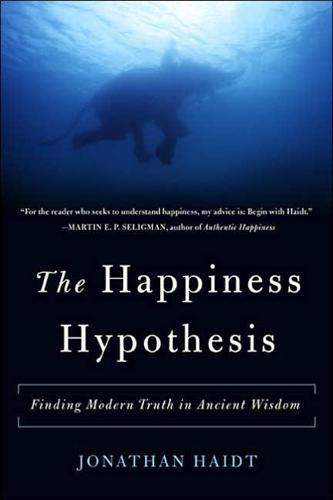
The Happiness Hypothesis: Finding Modern Truth in Ancient Wisdom
by
Jonathan Haidt
Published 26 Dec 2005
Affective style and affective disorders: Perspectives from affective neuroscience. Cognition and Emotion, 12, 307—330. Davidson, R. J., and Fox, N. A. (1989). Frontal brain asymmetry predicts infants' response to maternal separation. Journal of Abnormal Psychology, 98, 127-131. Dawkins, R. (1976). The selfish gene. Oxford, UK: Oxford University Press. DePaulo, B. M., 8c Morris, W. L. (2005). Singles in society and science. Psychological Inquiry, 16 , 57—83. DeRubeis, R. J., Hollon, S. D., Amsterdam, J. D., Shelton, R. C., Young, P R., Sa-lomon, R. M., et al. (2005). Cognitive therapy vs medications in the treatment of moderate to severe depression.

The Man From the Future: The Visionary Life of John Von Neumann
by
Ananyo Bhattacharya
Published 6 Oct 2021
‘The idea of … a biological version of von Neumann’s game theory had crossed my mind as soon as I read his earliest account,’ he wrote later.81 Hamilton would, among other contributions to the field, produce a mathematical model of altruism based on the degree of relatedness (kinship) between different organisms. He showed that genes for self-sacrificing behaviours would spread as long as they benefited blood relatives (who were also likely to carry the same genes). Hamilton’s theory, now known as ‘inclusive fitness’, was popularized by Richard Dawkins in The Selfish Gene. Others took Hamilton’s work forward, including George Price, a chemist who worked on the Manhattan Project before moving to Britain and making some decisive contributions to evolutionary theory.82 First, Price wrote an equation that extended Hamilton’s ideas to include all evolutionary change – not just traits that benefit family members.

When Einstein Walked With Gödel: Excursions to the Edge of Thought
by
Jim Holt
Published 14 May 2018
Some of these ideas, Dawkins observes, spread because they are good for us, in the sense that they raise the likelihood of our genes getting into the next generation; others—like, he claims, religion—spread because normally useful parts of our minds “misfire.” Ethical values, he suggests, fall into the first category. Altruism, for example, benefits our selfish genes when it is lavished on close kin who share copies of those genes or on non-kin who are in a position to return the favor. But what about pure “Good Samaritan” acts of kindness? These, Dawkins says, could be “misfirings,” although, he hastens to add, misfirings of a “blessed, precious” sort, unlike the nasty religious ones.

Rationality: What It Is, Why It Seems Scarce, Why It Matters
by
Steven Pinker
Published 14 Oct 2021
National Institute Economic Review, 199, 4–7. https://doi.org/10.1177/0027950107077111. Davis, D. B. 1984. Slavery and human progress. New York: Oxford University Press. Dawes, R. M., Faust, D., & Meehl, P. E. 1989. Clinical versus actuarial judgment. Science, 243, 1668–74. https://doi.org/10.1126/science.2648573. Dawkins, R. 1976/2016. The selfish gene (40th anniv. ed.). New York: Oxford University Press. Dawkins, R. 2006. The God delusion. New York: Houghton Mifflin. Dawson, E., Gilovich, T., & Regan, D. T. 2002. Motivated reasoning and performance on the Wason selection task. Personality and Social Psychology Bulletin, 28, 1379–87. https://doi.org/10.1177/014616702236869.
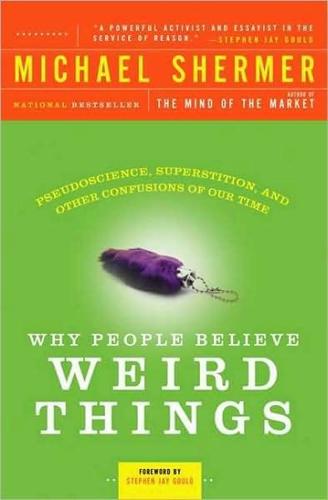
Why People Believe Weird Things: Pseudoscience, Superstition, and Other Confusions of Our Time
by
Michael Shermer
Published 1 Jan 1997
London: J. Murray. ......... [1883]. In Box 106, Darwin archives, Cambridge University Library. Darwin, M., and B. Wowk. 1989. Cryonics: Beyond Tomorrow. Riverside, Calif.: Alcor Life Extension Foundation. Davies, P. 1991. The Mind of God. New York: Simon & Schuster. Dawkins, R. 1976. The Selfish Gene. Oxford: Oxford University Press. ......... 1986. The Blind Watchmaker. New York: Norton. ......... 1995. Darwin's Dangerous Disciple: An Interview with Richard Dawkins. Skeptic 3, no. 4:80-85. ......... 1996. Climbing Mount Improbable. New York: Norton. Dean, J. 1998. Aliens in America: Conspiracy Cultures from Outerspace to Cyberspace.

Red-Blooded Risk: The Secret History of Wall Street
by
Aaron Brown
and
Eric Kim
Published 10 Oct 2011
Mutation is almost always bad for the individual, but the optimal amount is good for the population. However, the population is not fixed; it changes over time both in composition of individuals and in genetic characteristics. And a deeper look at evolution reveals that it operates on many levels, from individual selfish genes to (possibly) Gaia, the web of all life on Earth. So while the randomness can be good, we need to ask if it is good for the entities we care about. The second caveat is that random variation is only half of evolution; the other half is natural selection. Suppose we are facing the classic corporate finance capital budgeting problem.
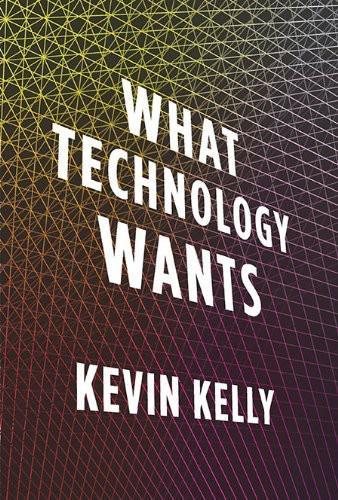
What Technology Wants
by
Kevin Kelly
Published 14 Jul 2010
Not only is the aggregate process of evolution evolving, but it is evolving more ability to evolve, or greater evolvability. Gaining evolvability is much like a video game where you find a door that opens up another whole level that is much more complex, faster, and full of unexpected powers. A natural organism, such as a chicken, is the mechanism for its genes to propagate more genes. From the selfish genes’ point of view, the greater the number of organisms (chickens) they can produce and keep alive, the more those genes can spread themselves. We can also view an ecosystem as the vehicle for evolution to propagate itself and grow. Without a cornucopia of diverse organisms, evolution cannot evolve more evolvability.

Culture and Prosperity: The Truth About Markets - Why Some Nations Are Rich but Most Remain Poor
by
John Kay
Published 24 May 2004
Innovation, Incentive and Reward. Edinburgh: Edinburgh University Press. Davidson, R J. 2000. "Affective Style, Psychopathology and Resilience." American Psychologist. November, 1196-1214. Davies, K. 2001. The Sequence: Inside the Race for the Human Genome. London: Weidenfeld & Nicolson. Dawkins, R 1989. The Selfish Gene. New ed. Oxford: Oxford University Press. ---. 1991. The Blind Watchmaker. New ed. London: Penguin Books. Debreu, G. 1959. Theory ofValue: An Axiomatic Analysis of Economic Equilibrium. New Haven: Yale University Press. Del Mar, A. 1895. History ofMonetary Systems. London: Effingham Wilson. Demsetz, H. 1964.
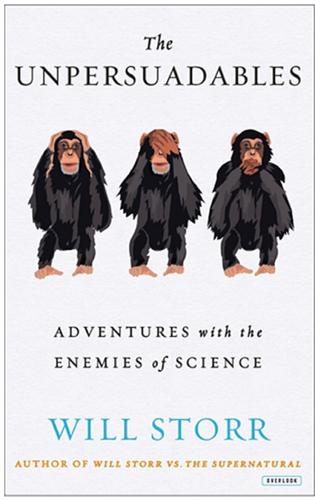
The Unpersuadables: Adventures With the Enemies of Science
by
Will Storr
Published 1 Jan 2013
Where do all these disparate brain regions unite in order to generate the illusion that you are the ‘invisible actor at the centre of the world’, the one who is seeing, hearing, smelling, remembering, talking and feeling sad or hopeful or brave? And why? If our sole living purpose is the propagation of our selfish genes, then why shouldn’t we just be zombies – unconscious decision-engines roaming the earth, maximising our chances of survival by making simple decisions, beating each other up and procreating as much as possible? Nobody knows. In fact, this is such a hard problem that it is actually known among philosophers and neuroscientists as ‘the hard problem’.

Flow: The Psychology of Optimal Experience
by
Mihaly Csikszentmihalyi
Published 1 Jul 2008
Child Development 53:831–57. Dante, A. (1965). The divine comedy. Trans. G. L. Bickerstein. Cambridge: Harvard University Press. David, F. N. 1962. Games, gods, and gambling. New York: Hafner. Davis, J. A. 1959. A formal interpretation of the theory of relative deprivation. Sociometry 22:280–96. Dawkins, R. 1976. The selfish gene. New York: Oxford University Press. deCharms, R. 1968. Personal causation: The internal affective determinants of behavior. New York: Academic Press. Deci, E. L., & Ryan, R. M. 1985. Intrinsic motivation and self-determination in human behavior. New York: Plenum Press. Delle Fave, A., & Massimini, F. 1988.

Sapiens: A Brief History of Humankind
by
Yuval Noah Harari
Published 1 Jan 2011
Would the psychologist publish a paper declaring that heroin is the key to happiness? The idea that feelings are not to be trusted is not restricted to Christianity. At least when it comes to the value of feelings, even Darwin and Dawkins might find common ground with St Paul and St Augustine. According to the selfish gene theory, natural selection makes people, like other organisms, choose what is good for the reproduction of their genes, even if it is bad for them as individuals. Most males spend their lives toiling, worrying, competing and fighting, instead of enjoying peaceful bliss, because their DNA manipulates them for its own selfish aims.

Stamping Butterflies
by
Jon Courtenay Grimwood
Published 1 Jan 2004
Their kiss was slow and tentative, her lips softening just as he was about to bring the kiss to an end. "Love you," he said, the only time he'd said that to anyone. With Wu and Wu's sister it would have seemed clumsy and provincial and there had been no one else to whom he could say those words. Grandfather Luo would have laughed at him and talked of selfish genes and bonds of affinity, while Madame Mimi would have grown tight-lipped and angry. Any talk of emotion within the family had that effect on her. "What are you thinking?" "About stuff," the boy said. "What stuff?" "Families. Children. Stuff like that." Lin Yao's eyes went wide and for a second she looked shocked.
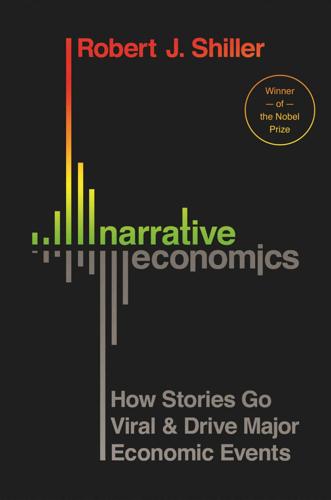
Narrative Economics: How Stories Go Viral and Drive Major Economic Events
by
Robert J. Shiller
Published 14 Oct 2019
Albany: State University of New York Press. Davis, Morris A., and Jonathan Heathcote. 2007. “The Price and Quantity of Residential Land in the United States.” Journal of Monetary Economics 54(8):2595–620. Davis, Shelby Cullom. 1940. America Faces the Forties. Philadelphia: Dorrance and Company. Dawkins, Richard. 1976. The Selfish Gene. Oxford: Oxford University Press. De Long, J. Bradford, Andrei Shleifer, Lawrence H. Summers, and Robert J. Waldmann. 1990. “Noise Trader Risk in Financial Markets.” Journal of Political Economy 98(4):703–38. Desmond, Matthew. 2017. Evicted: Poverty and Profit in the American City. New York: Broadway Books.
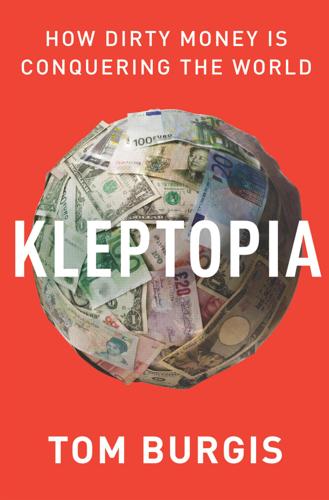
Kleptopia: How Dirty Money Is Conquering the World
by
Tom Burgis
Published 7 Sep 2020
He would only say he had been a ‘supplier’ to Mogilevich. Asked what he supplied, he said: ‘Spare parts.’ Asked what the parts were for, he said: ‘Here we are starting to get into business.’ He would not elaborate further FBI believed: ‘Working group’ report on Mogilevich ‘formal token’: Richard Dawkins, The Selfish Gene, Oxford University Press, 1976, p.244 British police took an interest: South East Regional Crime Squad report on Operation Sword, November 10, 1995 letter the home secretary sent: Operation Sword report; ‘The Billion Dollar Don’ YBM Magnex: Friedman, Red Mafiya, pp.212–24; Alan A. Block and Constance A.
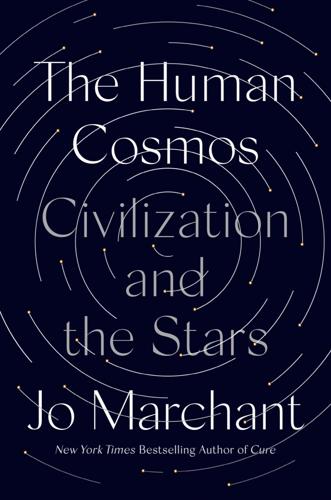
The Human Cosmos: A Secret History of the Stars
by
Jo Marchant
Published 15 Jan 2020
“an illusion”: John Horgan, “Is Consciousness Real? Philosopher Daniel Dennett Tries, Once Again, to Explain Away Consciousness,” Cross Check (blog), Scientific American, March 21, 2017, https://blogs.scientificamerican.com/cross-check /is-consciousness-real/. “robot vehicles”: Richard Dawkins, The Selfish Gene, 40th anniversary ed. (New York: Oxford Landmark Science, 2016), xxix. “pack of neurons”: Francis Crick, The Astonishing Hypothesis: The Scientific Search for the Soul (New York: Simon & Schuster, 1995), 3. “chemical scum”: David Dugan, dir., Reality on the Rocks, 3 episodes, aired on U.K.
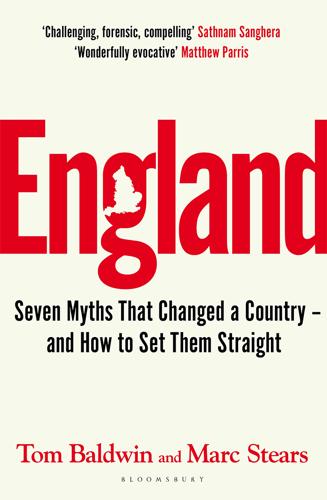
England: Seven Myths That Changed a Country – and How to Set Them Straight
by
Tom Baldwin
and
Marc Stears
Published 24 Apr 2024
Scanlan, Slave Empire: How Slavery Built Modern Britain, London, Robinson, 2020, pp. 49−54. 59 ‘Defining Britain’s Post-Brexit Role In The World’, Centre for Brexit Policy, June 2022: 39. 60 Celina Fox, The Ingenious Mr Dummer, London, British Library 2007, p. 26. 61 Alfred, Lord Tennyson , ‘The Fleet’, first published in The Times, April 1885. 62 Richard Dawkins, The Selfish Gene, Oxford, Oxford University Press, 1989, p. 324. 63 N. A. M. Rodger, The Command of the Ocean, London, Penguin, 2004, pp. 270−352. 64 William Dalrymple, ‘The East India Company’, Guardian, 4 March 2015. 65 Robert Tombs, The English & Their History, London, Penguin, 2015, pp. 404, 541−4. 66 Rodger, The Command of the Ocean, pp. 408−88. 67 Rodger, ‘Queen Elizabeth and the Myth of Sea-Power’, 168−72. 68 Tombs, The English, p. 373. 69 Stephen J.

Physics of the Future: How Science Will Shape Human Destiny and Our Daily Lives by the Year 2100
by
Michio Kaku
Published 15 Mar 2011
By tinkering with these chromosomes, he is confident he can clone another animal from this carcass, except of the opposite sex. In this way, zoos around the world could enjoy watching animals from long-dead species have babies. I once had dinner with Richard Dawkins of Oxford University and author of The Selfish Gene, who takes this a step further. He speculates that one day we might be able to resurrect a variety of life-forms that are not just endangered but also have been long extinct. He first notes that every twenty-seven months, the number of genes that have been sequenced doubles. Then he calculates that in the coming decades it will cost only $160 to fully sequence anyone’s genome.
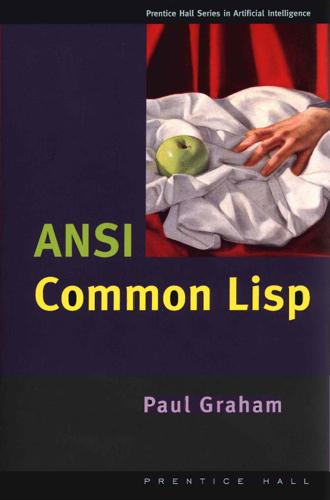
ANSI Common LISP
by
Paul Graham
Published 12 Nov 1995
Here is the example from page 400: > ( s e t f x ' a a 1 y ' b b 2) 2 > (eval2 ' (bq (bq (w (comma x) (comma (comma y)))))) (BQ (W (COMMA X) (COMMA B))) > (eval2 *) (W A 2) At some point a particularly remarkable molecule was formed by accident. We will call it the Replicator. It may not necessarily have been the biggest or the most complex molecule around, but it had the extraordinary property of being able to create copies of itself. Richard Dawkins The Selfish Gene We shall first define a class of symbolic expressions in terms of ordered pairs and lists. Then we shall define five elementary functions and predicates, and build from them by composition, conditional expressions, and recursive definitions an extensive class of functions of which we shall give a number of examples.
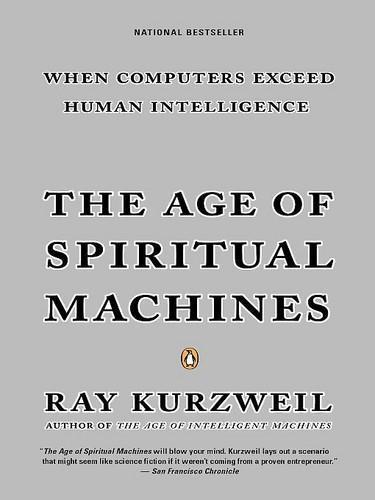
The Age of Spiritual Machines: When Computers Exceed Human Intelligence
by
Ray Kurzweil
Published 31 Dec 1998
————. The Extended Phenotype. San Francisco: Freeman, 1982. _______. River out of Eden: A Darwinian View of Life. New York: Basic Books, 1995. _______. “Universal Darwinism.” Evolution from Molecules to Men, edited by D. S. Bendall. Cambridge: Cambridge University Press, 1983. ________. The Selfish Gene. Oxford: Oxford University Press, 1976. Dechert, Charles R., ed. The Social Impact of Cybernetics. New York: Simon and Schuster, 1966. Denes, Peter B. and Elliot N. Pinson. The Speech Chain: The Physics and Biology of Spoken Language. Bell Telephone Laboratories, 1963. Dennett, Daniel C. Brainstorms: Philosophical Essays on Mind and Psychology.
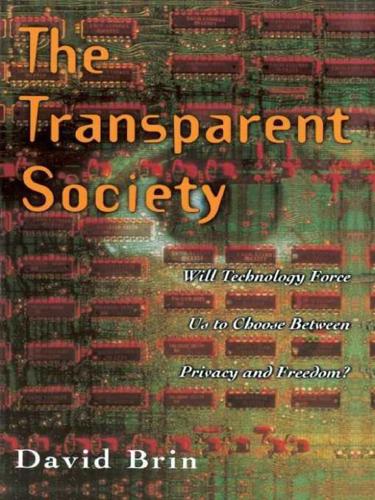
The Transparent Society: Will Technology Force Us to Choose Between Privacy and Freedom?
by
David Brin
Published 1 Jan 1998
Step by step, Search for Spock checked off every box of the “Frankenstein Syndrome,” preaching that humans who arrogate the powers of heaven will be punished, their false creations destroyed, and the individual responsible for this act of hubris killed by his own monster. In this illustration from popular culture we see how the two conflicting attitudes described in chapter 5 remain at war to this day. 123 For more on the concept of memes see Richard Dawkins, The Selfish Gene. A more recent and detailed treatment provided by Aaron Lynch in Thought Contagion (New York: Basic Books, 1996). 124 ... a solid moral grounding and some common sense ... Quote by Howard Rheingold, Whole Earth Review, Winter 1994, 95. 125 ... flip side of living in tribes is living in the world ... in the kosmos ...

From Counterculture to Cyberculture: Stewart Brand, the Whole Earth Network, and the Rise of Digital Utopianism
by
Fred Turner
Published 31 Aug 2006
There were ten, each containing on average forty items.42 The first category, “Prime Information,” played the role of the former “Whole Systems” section. It featured books on cybernetics, information theory, and even “whole systems,” as the earlier section had. But it also included reviews of newer work, such as Richard Dawkins’s The Selfish Gene and James Gleick’s Chaos. Likewise, the category “Network Societies” featured both news of the latest in networked communications—bulletin Networking the New Economy [ 197 ] board systems, the WELL, teleconferences—and reviews of radio and filmmaking gear much like the ones that had run in the Catalog twenty years earlier.

The Rational Optimist: How Prosperity Evolves
by
Matt Ridley
Published 17 May 2010
On Communication and Social Influence. Chicago University Press. p. 5 ‘selection by imitation of successful institutions and habits’. Hayek, F.A. 1960. The Constitution of Liberty. Chicago University Press. p. 5 ‘Richard Dawkins in 1976 coined the term “meme” for a unit of cultural imitation’. Dawkins, R. 1976. The Selfish Gene. Oxford University Press. p. 5 ‘Richard Nelson in the 1980s proposed that whole economies evolve by natural selection’. Nelson, R.R. and Winter, S.G. 1982. An Evolutionary Theory of Economic Change. Harvard University Press. p. 6 ‘a culture or a camera’. Richerson, P. and Boyd, R. 2005. Not by Genes Alone.

The Master and His Emissary: The Divided Brain and the Making of the Western World
by
Iain McGilchrist
Published 8 Oct 2012
The achievement of imitation – the meta-skill that enables all other skills – may explain the otherwise incomprehensibly rapid expansion of the brain in early hominids, since there would be a sudden take-off in the speed with which we could adapt and change ourselves, and in the range of our abilities. Imitation is how we acquire skills – any skill at all; and the gene for skill acquisition (imitation) would trump the genes for any individual skills. Thus from a gene – the symbol of ruthless competition (the ‘selfish gene’), and of the relatively atomistic and oppositional values of the left hemisphere – could arise a skill that would enable further evolution to occur not only more rapidly but in a direction of our own choosing – through empathy and co-operation, the values of the right hemisphere. Genes could free us from genes.
…
J., Mednick, D., Moss, E. et al., ‘Ratings of emotion in faces are influenced by the visual field to which stimuli are presented’, Brain and Cognition, 1987, 6(4), pp. 403–11 Davies, S., ‘Philosophical perspectives on music’s expressiveness’, in Juslin, P. N. & Sloboda, J. A. (eds.), Music and Emotion: Theory and Research, Oxford University Press, Oxford, 2001, pp. 23–44 Dawkins, R., The Selfish Gene, Oxford University Press, Oxford, 1976 Dax, G., ‘Observations tendant à prouver la coïncidence constante des dérangements de la parole avec une lésion de l’hémisphère gauche du cerveau’, Comptes rendus hebdomadaires des séances de l’Académie des sciences, 1863, 61, p. 534 Dax, M., ‘Lésions de la moitié gauche de l’encéphale coïncidant avec l’oubli des signes de la pensée (lu à Montpellier en 1836)’, Gazette hebdomadaire de médecine et de chirurgie, 2me série, 1865, 2, pp. 259–62 de Bonis, M., Dellatolas, G. & Rondot, P., ‘Mood disorders in left and right brain-damaged patients: comparison between ratings and self-ratings on the same adjective mood scale.
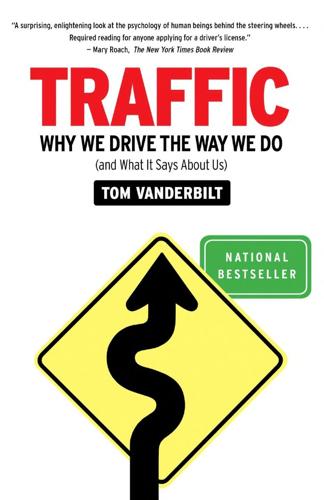
Traffic: Why We Drive the Way We Do (And What It Says About Us)
by
Tom Vanderbilt
Published 28 Jul 2008
“strong reciprocity”: See Ernst Fehr, Urs Fischbacher, and Simon Gächter, “Strong Reciprocity, Human Cooperation and the Enforcement of Social Norms,” Human Nature, vol. 13 (2002), pp. 1–25. altruistic all the same: The comments on road rage from Herbert Gintis come from an interview posted at www.innoarticles.com. The example of the bird signaling a predator’s approach comes from Olivia Judson, “The Selfish Gene,” Atlantic Monthly, October 2007, p. 92. It has also been speculated that animals raising an alarm against a predator are actually sending a signal to the predator that it has been spotted. For an interesting theoretical discussion, see C. T. Bergstrom and M. Lachmann, “Alarm Calls as Costly Signals of Antipredator Vigilance: The Watchful Babbler Game,” Animal Behaviour, vol. 61 (2001), pp. 535–43.
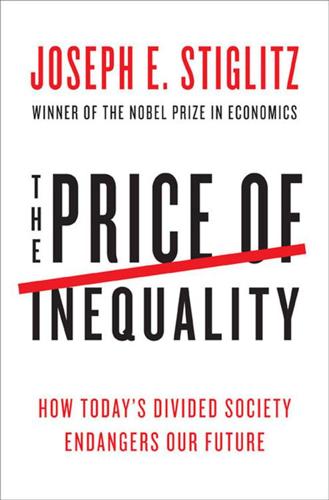
The Price of Inequality: How Today's Divided Society Endangers Our Future
by
Joseph E. Stiglitz
Published 10 Jun 2012
While it might be in the interests of an individual or group to work to alter perceptions in ways that advance particular interests, typically change doesn’t happen in such a concerted way. There is no general forum in which plots are hatched, no opportunity for a conspiracy. 25. See Richard Dawkins, The Selfish Gene, 30th anniversary ed. (Oxford: Oxford University Press, 2006). 26. See The Financial Crisis Inquiry Report. 27. In January 2012, the Pew Research Center released a poll that found an even divide in perceptions: about 46 percent of the respondents (Americans) believed that rich people obtained their wealth because they were “fortunate enough to be from wealthy families or have the right connections,” while 43 percent thought they were wealthy because of “their own hard work, ambition, or education.”

Why Stock Markets Crash: Critical Events in Complex Financial Systems
by
Didier Sornette
Published 18 Nov 2002
R. and Freedman, J. L. (1997). Lucky events and beliefs in luck: Paradoxical effects on confidence and risk-taking, Personality & Social Psychology Bulletin 23, 378–388. 101. Davis, D. and Holt, C. (1993). Experimental Economics (Princeton University Press, Princeton, NJ). 102. Dawkins, R. (1990). The Selfish Gene (Oxford University Press, Oxford, U.K.). 103. De Bandt, O. and Hartmann, P. (November, 2000). Systemic Risk: A survey, Financial Economics and Internation Macroeconomics, ECB Discussion paper series No. 35, European Central Bank. 104. De Bondt, W. F. M. and Thaler, R. H. (1995). Financial decision-making in markets and firms: A behavioral perspective, in Finance, R.

Not Working: Where Have All the Good Jobs Gone?
by
David G. Blanchflower
Published 12 Apr 2021
He says, colorfully, the IYI has been wrong, historically, on “Stalinism, Maoism, GMOs, Iraq, Libya, Syria, lobotomies, urban planning, low carbohydrate diets, gym machines, behaviorism, transfats, Freudianism, portfolio theory, linear regression, Gaussianism, Salafism, dynamic stochastic equilibrium modeling, housing projects, selfish gene, election forecasting models, Bernie Madoff (pre-blowup) and p-values. But he is convinced that his current position is right.” He doesn’t mean me of course! 24. Letter to the Queen from the British Academy signed by 33 economists including 9 members, ex- and future, of the MPC and civil servants: http://www.feed-charity.org/user/image/besley-hennessy2009a.pdf. 25.

The Aristocracy of Talent: How Meritocracy Made the Modern World
by
Adrian Wooldridge
Published 2 Jun 2021
In France, Gilles Le Gendre, president of Macron’s party in the National Assembly, told an interviewer that the government had probably been ‘too intelligent, too subtle, too technical’ in explaining its policies to the French people.19 In Britain, Janan Ganesh, a Financial Times columnist, wrote that liberal Londoners, like their confreres in other sophisticated cities, ‘look at their domestic stragglers and feel … shackled to a corpse’.20 In America, David Rothkopf, a professor of international relations and a former member of Bill Clinton’s administration, has described Donald Trump’s supporters as ‘threatened by what they don’t understand and what they don’t understand is almost everything’. Late-night comedians got easy laughs by making fun of working-class Americans even as that class was ravaged by ‘deaths of despair’ and the opioid epidemic. In Britain, the Brexit vote gave many liberals pause about the merits of democracy. Richard Dawkins, the author of The Selfish Gene (1976), said that ‘it’s unfair to thrust onto unqualified simpletons the responsibility to take historic decisions of great complexity and sophistication’. Nick Cohen, a columnist on the Observer, described the Brexit campaign as ‘a know-nothing movement of loud mouths and closed minds’.21 Writing about Clacton, a seaside town that voted heavily for Leave, Matthew Parris, a former Conservative MP and Times columnist, declared that ‘this is Britain on crutches.
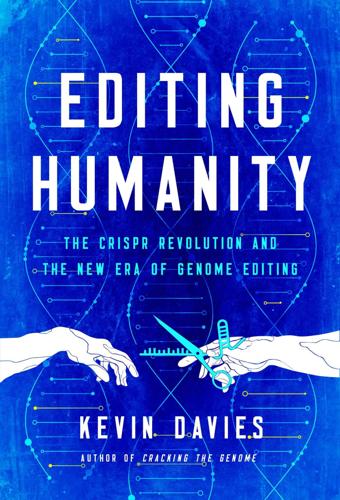
Editing Humanity: The CRISPR Revolution and the New Era of Genome Editing
by
Kevin Davies
Published 5 Oct 2020
Esvelt, “Gene Drives, White-Footed Mice, and Black Sheep: An Interview with Kevin Esvelt,” CRISPR Journal 1, (2018): 319–324, https://www.liebertpub.com/doi/abs/10.1089/crispr.2018.29031.kda. 28. K. M. Esvelt et al., “A system for the continuous directed evolution of biomolecules,” Nature 472, (2011): 499–503, https://www.ncbi.nlm.nih.gov/pmc/articles/PMC3084352/. 29. A. Burt, “Site-specific selfish genes as tools for the control and genetic engineering of natural populations,” Proceedings of the Royal Society Biological Sciences 270, (2003): 921–928, https://www.ncbi.nlm.nih.gov/pmc/articles/PMC1691325/. 30. N. Windbichler et al., “A synthetic homing endonuclease-based gene drive system in the human malaria mosquito,” Nature 473, (2011): 212–215, https://www.ncbi.nlm.nih.gov/pmc/articles/PMC3093433/. 31.

I Am a Strange Loop
by
Douglas R. Hofstadter
Published 21 Feb 2011
American Mathematical Monthly 88 (1981), pp. 311–320. Davis, Joshua. “Say Hello to Stanley”. Wired 14 (January 2006). Davis, Martin (ed.). The Undecidable: Basic Papers on Undecidable Propositions, Unsolvable Problems, and Computable Functions. Hewlett, N.Y.: Raven, 1965. Dawkins, Richard. The Selfish Gene. New York: Oxford University Press, 1976. DeLong, Howard. A Profile of Mathematical Logic. Reading, Mass.: Addison-Wesley, 1970. (Reissued by Dover Press, 2004.) Dennett, Daniel C. Brainstorms: Philosophical Essays on Mind and Psychology. Cambridge, Mass.: MIT Press, 1978. — — — . Elbow Room: The Varieties of Free Will Worth Wanting.
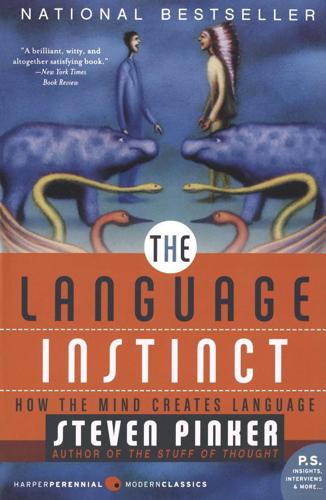
The Language Instinct: How the Mind Creates Language
by
Steven Pinker
Published 1 Jan 1994
Orthodox social scientists—and their biological fellow travelers—will find a formidable Darwinian challenge to their cherished dogmas. Word-pedants like me (or those who say ‘gender’ when they mean ‘sex’) will retreat chastened. Even if you disagree with it, you’ll surely be charmed and engaged by this brilliant work.” —Richard Dawkins, author of The Selfish Gene “A brilliant, witty, and altogether satisfying book…. Mr. Pinker has that facility, so rare among scientists, of making the most difficult material accessible to the average reader. Most important, he never talks down to the reader…. The fundamental unity of humanity is the theme of this exciting book.

The Secret of Our Success: How Culture Is Driving Human Evolution, Domesticating Our Species, and Making Us Smarter
by
Joseph Henrich
Published 27 Oct 2015
“The alcohol dehydrogenase 1B (ADH1B) and ADH1C genes are transcriptionally regulated by DNA methylation and histone deacetylation in hepatoma cells.” Alcoholism—Clinical and Experimental Research 29 (5):136a. Darwin, C. 1981. The Descent of Man and Selection in Relation to Sex. Princeton, NJ: Princeton University Press. Original published in 1871 by J. Murray, London. Dawkins, R. 1976. The Selfish Gene. Oxford: Oxford University Press. ———. 2006. The God Delusion. Boston: Houghton Mifflin. Deacon, T. W. 1997. The Symbolic Species: The Co-evolution of Language and the Brain. New York: Norton. Dean, L. G., R. L. Kendal, S. J. Schapiro, B. Thierry, and K. N. Laland. 2012. “Identification of the social and cognitive processes underlying human cumulative culture.”

Power and Progress: Our Thousand-Year Struggle Over Technology and Prosperity
by
Daron Acemoglu
and
Simon Johnson
Published 15 May 2023
In The Economic Future in Historical Perspective, edited by Paul A. David and Mark Thomas, 135‒166. Oxford: Oxford University Press. Davies, R. W., and Stephen G. Wheatcroft. 2006. “Stalin and the Soviet Famine of 1932‒33: A Reply to Ellman.” Europe-Asia Studies 58, no. 4 (June): 625‒633. Dawkins, Richard. 1976. The Selfish Gene. Oxford: Oxford University Press. De Brakelond, Jocelin. 1190s [1903]. The Chronicle of Jocelin of Brakelond: A Picture of Monastic Life in the Days of Abbot Samson. London: De La More. De Vries, Jan. 2008. The Industrious Revolution: Consumer Behavior and the Household Economy, 1650 to the Present.

The Stuff of Thought: Language as a Window Into Human Nature
by
Steven Pinker
Published 10 Sep 2007
Kinship: The conceptual hole in psychological studies Of social cognition and close relationships. In J. Simpson & D. Kenrick (Eds.), Evolutionary social psychology. Mahwah, N.J.: Erlbaum. Darwin, C. 1874. The descent of man, and selection in relation to sex (2nd ed.). New York: Hurst & Company. Dawkins, R. 1976/1989. The selfish gene (new ed.). New York: oxford University Press. Dawkins, R. 1986. The blind watchmaker: Why the evidence of evolution reveals a universe without design. New York: Norton. Dawkins, R. 1998. Unweaving the rainbow: Science, delusion, and the appetite for wonder. Boston: Houghton Mifflin. Dawkins, R., & Krebs, J.

Spillover: Animal Infections and the Next Human Pandemic
by
David Quammen
Published 30 Sep 2012
At the urging of an eminent evolutionary biologist named William Hamilton, who believed that the OPV theory deserved investigation, the Royal Society convened a special meeting in September 2000 to discuss the subject within its broader context. Hamilton was a senior figure, liked and respected, whose early work in evolutionary theory helped inform Edward O. Wilson’s Sociobiology and Richard Dawkins’s The Selfish Gene. He swung the Royal Society into giving the OPV theory a fair hearing. Edward Hooper, though not a scientist himself, was invited to speak. Hilary Koprowski also came, as well as a roster of leading AIDS researchers. By the time that meeting convened, though, William Hamilton was dead. He died suddenly in March 2000, of intestinal bleeding, after an attack of malaria contracted during a research trip to DRC.

A Beautiful Mind
by
Sylvia Nasar
Published 11 Jun 1998
See, for example, Mikhail Gromov, Partial Differential Relations (New York: Springer-Verlag, 1986); Heisuke Hironaka, “On Nash Blowing Up,” Arithmetic and Geometry II (Boston: Birkauser, 1983), pp. 103–11; P. Ordehook, Game Theory and Political Theory: An Introduction (Cambridge, U.K.: Cambridge University Press, 1986); Richard Dawkins, The Selfish Gene (Oxford: Oxford University Press, 1976); John Maynard Smith, Did Darwin Get It Right? (New York: Chapman and Hall, 1989); as well as Math Reviews and Social Science Citation Index, various dates. 55. Eatwell, Milgate, Newman, op. cit., p. xii. 56. Ariel Rubinstein, professor of economics, Princeton University and University of Tel Aviv, interview, 10.18.95. 57.
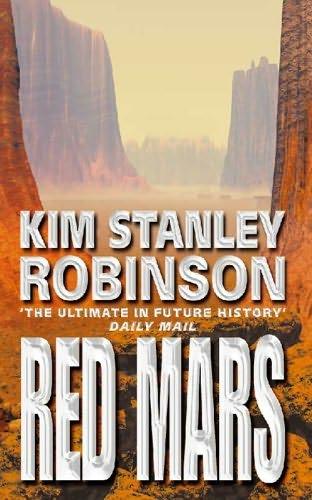
Red Mars
by
Kim Stanley Robinson
Published 23 Oct 1992
“Everyone has their reasons,” she said. He glanced at her. “That’s so true.” She ignored his tone of voice. “Maybe it’s our genes,” she said. “Maybe they felt things going wrong on Earth. Felt an increased speed of mutation, or something like that.” “So they struck out for a clean start.” “Yes.” “The selfish gene theory. Intelligence only a tool to aid successful reproduction.” “I suppose.” “But this trip endangers successful reproduction,” Frank said. “It isn’t safe out here.” “But it isn’t safe on Earth either. Waste, radiation, other people. . . .” Frank shook his head. “No. I don’t think the selfishness is in the genes.

Tools of Titans: The Tactics, Routines, and Habits of Billionaires, Icons, and World-Class Performers
by
Timothy Ferriss
Published 6 Dec 2016
Feynman), Recession Proof Graduate (Charlie Hoehn), Ogilvy on Advertising (David Ogilvy), The Martian (Andy Weir) Kamkar, Samy: Influence (Robert Cialdini) Kaskade: Lights Out: A Cyberattack, A Nation Unprepared, Surviving the Aftermath (Ted Koppel) Kass, Sam: Sapiens (Yuval Noah Harari), The Art of Fielding (Chad Harbach), Plenty; Jerusalem; Plenty More (Yotam Ottolenghi), The Flavor Bible: The Essential Guide to Culinary Creativity, Based on the Wisdom of America’s Most Imaginative Chefs (Karen Page and Andrew Dornenburg), A History of World Agriculture (Marcel Mazoyer and Laurence Roudart) Kelly, Kevin: The Adventures of Johnny Bunko (Daniel Pink), So Good They Can’t Ignore You (Cal Newport), Shantaram (Gregory David Roberts), Future Shock (Alvin Toffler), Regional Advantage: Culture and Competition in Silicon Valley and Route 128 (AnnaLee Saxenian), What the Dormouse Said: How the Sixties Counterculture Shaped the Personal Computer Industry (John Markoff), The Qur’an, The Bible, The Essential Rumi; The Sound of the One Hand: 281 Zen Koans with Answers (Yoel Hoffman), It’s All Too Much: An Easy Plan for Living a Richer Life with Less Stuff (Peter Walsh) Koppelman, Brian: What Makes Sammy Run? (Budd Schulberg), The Artist’s Way Morning Pages Journal (Julia Cameron), The War of Art (Steven Pressfield) Libin, Phil: The Clock of the Long Now (Stewart Brand), The Alliance (Reid Hoffman), The Selfish Gene (Richard Dawkins), A Guide to the Good Life (William Irvine) MacAskill, Will: Reasons and Persons (Derek Parfit), Mindfulness: An Eight-Week Plan for Finding Peace in a Frantic World (Mark Williams and Danny Penman), The Power of Persuasion (Robert Levine), Superintelligence: Paths, Dangers, Strategies (Nick Bostrom) MacKenzie, Brian: Tao Te Ching (Lao Tzu), Way of the Peaceful Warrior (Dan Millman) McCarthy, Nicholas: The Life and Loves of a He Devil: A Memoir (Graham Norton), I Put a Spell on You: The Autobiography of Nina Simone (Nina Simone) McChrystal, Stanley: Once an Eagle (Anton Myrer), The Road to Character (David Brooks) McCullough, Michael: The Start-up of You: Adapt to the Future, Invest in Yourself, and Transform Your Career (Reid Hoffman and Ben Casnocha), Getting Things Done: The Art of Stress-Free Productivity (David Allen), The 7 Habits of Highly Effective People: Powerful Lessons in Personal Change (Stephen R.

Green Mars
by
Kim Stanley Robinson
Published 23 Oct 1993
It had been a long time since he had made love to anyone except Hiroko, and those encounters, though friendly and pleasant, were not passionate, more an extension of their bathing; whereas Phyllis, fumbling at their clothes as they fell onto her bed kissing, was clearly excited, and this excitement was transferring to Sax by a kind of immediate conduction. His erection sprang free eagerly from his pants as Phyllis got the pants down his legs, as if in illustration of the selfish gene theory, and he could only laugh and tug at the long ventral zipper of her jumpsuit. Lindholm, free of any worries, would certainly be aroused by the encounter. That was clear. And so he had to be too. And besides, although he did not especially like Phyllis, he did know her; there was that old First Hundred bond, the memories of those years together in Underhill— there was something provocative in the notion of making love to a woman he had known so long.
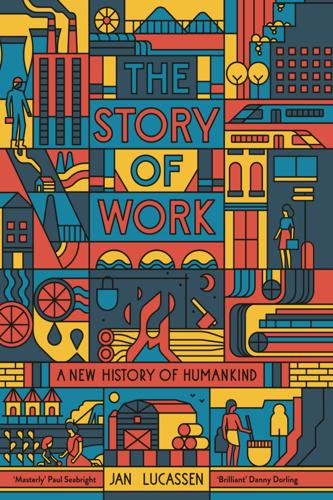
The Story of Work: A New History of Humankind
by
Jan Lucassen
Published 26 Jul 2021
Compensation according to individual performance may have a positive effect on labour productivity, but like the Russian commitment schemes that we will encounter below, competition could get completely out of hand, as was the case at the infamous Texas-based energy company Enron. Inspired by the economist Milton Friedman and by the biologist Richard Dawkins and his The Selfish Gene, the company’s CEO, Jeff Skilling, later imprisoned, instigated cut-throat competition within his company. The Dutch primatologist and ethologist Frans de Waal believes this is an example of the misinterpretation of evolutionary biology: Skilling set up a peer review committee known as ‘Rank & Yank’.

Global Catastrophic Risks
by
Nick Bostrom
and
Milan M. Cirkovic
Published 2 Jul 2008
Cook, L.M . , Soltis, P.M., Brunsfeld, S.J., and Soltis, D.E. ( 1 998). Multiple independent formations of Tragopogon tetraploids (Asteraceae): evidence from RAP D markers. Mol. Ecol., 7, 1293-1 302. Culotta, E. and Pennisi, E. (2005). Evolution in action. Science, 3 1 0 , 1878-1879. Dawkins, R. (1 976) . The Selfish Gene (New York, NY: Oxford University Press). Dennell, R. and Roebroeks, W. (2005). An Asian perspective on early human dispersal from Africa. Nature, 438, 1099-1104. Devlin, B . , Daniels, M., and Roeder, K. (1 997). The heritability of IQ. Nature, 388, 468-471 . Diamond, jared (2005). Collapse: How Societies Choose t o Fail o r Succeed.
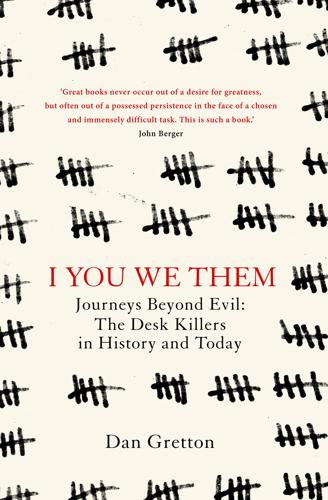
I You We Them
by
Dan Gretton
The concept of sacrificing something in yourself for another human being. Or even sacrificing your own life for another. These concepts seem miraculous. Because they run against so much that our society now teaches, from the extreme materialism of twenty-first-century capitalism to biological notions of selfish genes. I wonder what happens in such moments of sacrifice, both in the receiver and the giver. Is this connected in some way with the word ‘redemption’? I’m surprised to hear myself using this word – a word used meaninglessly by priests decades ago to justify a fairy tale. But I feel like reclaiming it now, in humanist terms, and accepting that there is something redemptive in helping others beyond limits, beyond suffering.
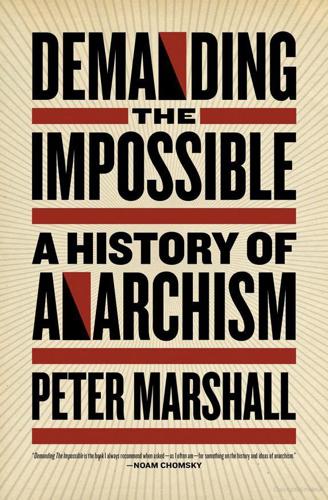
Demanding the Impossible: A History of Anarchism
by
Peter Marshall
Published 2 Jan 1992
His greatest contribution to science, apart from his geographical discoveries, was his stress on mutual aid amongst sociable species as a factor in evolution. His thesis has been confirmed by many recent findings.102 Despite the clamourings of modern socio-biologists, with their talk of ‘territorial imperatives’ and ‘selfish genes’, Kropotkin’s arguments retain all the force they possessed in his opposition to the Social Darwinists of his day who were usually trying to find justification for capitalism and imperialism in the biological roots of human behaviour. Kropotkin correctly saw that human beings are co-operative, social animals, and when least interfered with by coercive authority tend most to practise solidarity and mutual aid.